

How To Get Around Ireland Without A Car
By Author Keith O'Hara
Posted on Last updated: December 29, 2023

If you asked us 4 months ago was getting around Ireland without a car easy, we’d have said… “No… No it isn’t” .
Then we spent €10,000+ euro researching and writing Ireland’s largest collection of public transport itineraries .
And after that… We’d have still said “No!”
In fact, the time and money it cost us to plan trips that rely on getting around Ireland without a car made us realise how tricky it really is .
However, we’re now confident that, by using these itineraries , you’ll be able to get around via bus or train with ease.
But this guide isn’t dedicated to us tooting our own horns, it’s to give you the low-down on how to explore Ireland without a car !
Table of Contents
Some quick need-to-knows about getting around Ireland without a car

Click to enlarge
If you read the points below, first, they’ll get you up-to-speed quickly on what Ireland without a car is like:
1. If you’re visiting main cities/towns a car isn’t needed
Most of the main towns and cities in Ireland , like Dublin, Limerick and Galway, are, for the most part, wonderfully walkable . You will, at times, need to use public transport, but a car is by no means necessary.
2. It’s possible to get around without a car, but you need to plan
If you’re planning a trip to Ireland and you’re going to be relying on public transport to get around, a finely tuned itinerary pays dividends . Public transportation in Ireland has its limitations, especially when you step off-the-beaten-path. Find hundreds of Irish Road Trip itineraries that only use buses/trains here .
3. Public transport availability varies greatly
You’ll be grand getting around Ireland’s cities and towns on public transport, but services are heavily reduced in certain parts of the country. The likes of Donegal, in particular, can be a nightmare to get around without a car.
4. Buying tickets in advance has pros and cons
When you decided on your Ireland itinerary , it’s worth weighing up the pros and cons of buying your bus/train tickets in advance . The advantage of buying tickets ahead of time means a guaranteed seat but also often, in the case of trains, a cheaper fair. Buying a ticket on the day gives you flexibility to change your plans, but you’ll also risk higher fares and limited seating.
The advantages of exploring Ireland without a car

There are plenty of pros and cons to travelling in Ireland without a car. We’ll tackle the pros first, as there are several.
1. Car rental is expensive
While you’ll find hire companies all over the country, renting a car in Ireland is expensive and even more so in the high season months of July and August, so book well ahead.
Most cars are manual; automatic cars are also available, but tend to cost more to hire.
Additional petrol and parking eat into your spending money and make the cost of a trip to Ireland skyrocket.
2. Ireland has a good train network
Ireland’s train network is good and serves all major cities and towns (though you may have to change trains in some spots).
Belfast, Sligo, Galway, Limerick, Cork and Waterford are all reached direct from Dublin and it’s a much faster way to travel than by bus or coach.
Prices are reasonable too, but time and comfort are train travel in Ireland’s best attributes.
3. You can use a combination of public transport and day tours
There will invariably be some places that public transport won’t reach (or, if it does, will take far too long). A good way to combat this is to book a combination of public transport alongside day tours.
Use public transport where it’s logical, and then book on a day tour to visit more remote but famous attractions in Ireland such as the Cliffs of Moher, for example.
The disadvantages of exploring Ireland without a car
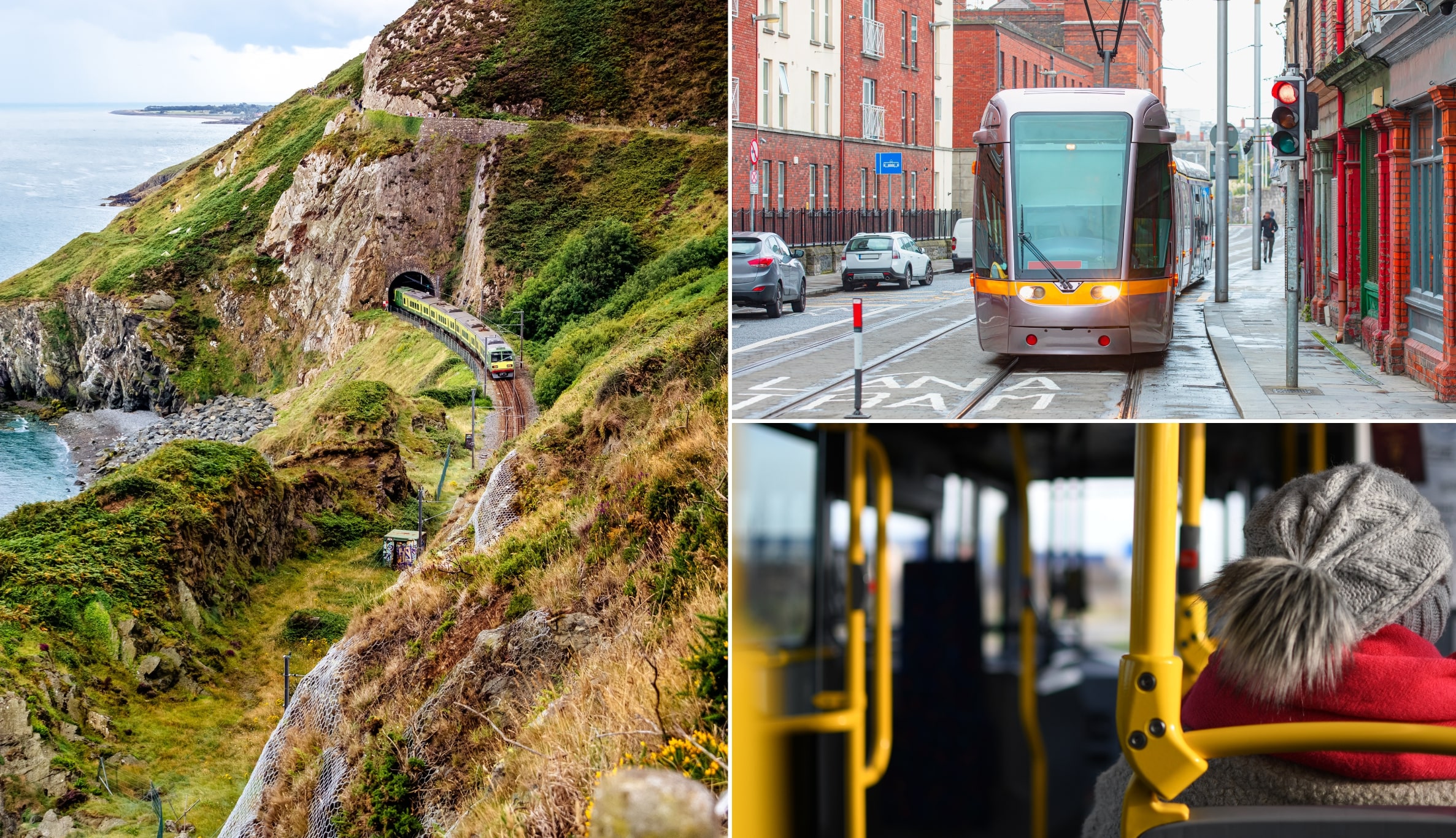
Many guides on how to get around Ireland without a car are packed with negatives, and we can’t blame them.
There’s definitely a lot of limitations to public transport road trips, as you’ll discover below.
1. You’ll find it much harder to go off-the-beaten-path
From spectacular mountains to gorgeous fishing villages, some of Ireland’s greatest treasures lie well off the beaten path and reaching them without a car is almost impossible, unfortunately.
This isn’t a densely populated country, and if you want some great experiences outside of the major cities and towns then you may have to look into car hire (some of Ireland’s coastal roads and mountain passes are stunning, after all).
2. Some organised tours only run during the peak season
Organised tours are a great way of seeing sights that are difficult to reach without a car, but if you’re travelling here outside of the peak season then you may run into a spot of bother.
Some tours won’t be running in off-season months like January and February, so bear that in mind if you’re planning a car-free trip to Ireland.
3. Certain counties have terrible public transport
Parts of Ireland remain incredibly rural and, while in some ways that’s a good thing, it’s a nightmare if you’re attempting a car-free trip.
There’s no train service in West Cork for example, and entire counties like Donegal, Monaghan and Cavan have no network at all (buses are equally slow and unreliable).
Again, plan ahead and use day tours when possible if visiting these more rural spots.
FAQs about how to get around Ireland without a car
We’ve had endless emails over the years from people about traveling in Ireland without a car.
Below, we’ve answered the most FAQs, but feel free to ask away in the comments section.
Can I get around Ireland without a car?
Traveling in Ireland without a car is 100& possible, you just need to plan carefully to take into account the limitations of buses and trains. It’s completely doable though.
What is the easiest way to get around Ireland?
We’d argue that a car is the easiest way to explore. Or, if you’ve cash to splash, a private driver. Alternatively, organised tours take the pain out of planning and getting around.
Keith O’Hara has lived in Ireland for 35 years and has spent most of the last 10 creating what is now The Irish Road Trip guide. Over the years, the website has published thousands of meticulously researched Ireland travel guides, welcoming 30 million+ visitors along the way. In 2022, the Irish Road Trip team published the world’s largest collection of Irish Road Trip itineraries . Keith lives in Dublin with his dog Toby and finds writing in the 3rd person minus craic altogether.
This site uses Akismet to reduce spam. Learn how your comment data is processed .
Cammie Edgar
Thursday 29th of December 2022
I sooo appreciate your site as we plan for our 2023 bucket list trip to Ireland! I may be missing something, but the links above for the public transport itineraries takes me to the road trip itineraries and I don't see how to figure out which are public transport and which are car tours.
My other question is if you can recommend a way to find accommodations in the Gaeltacht (mostly looking around Galway) where we could stay in an Irish-speaking household. My Gaeilge is not great, but I'd love to have practice opportunities!
- The ultimate Ireland travel planning guide

- Ireland Food and Drink
- Things to Do
- Destination Guides
- Itineraries
- Packing Lists
- Seasonal Guides
- Where to Stay
Travel Tips
How to get around ireland without a car: everything you need to know.

When many people think of Ireland, they think of the vast countryside and the windy roads. There are endless roads to explore and cities spaced out around the country that you’ll want to visit. However, you may wonder if it’s possible to travel to Ireland without a car.
Not everyone is comfortable driving in Ireland , and that’s especially true when they drive on the left side of the road, and the steering wheel is on the right side. It took me three visits before I was brave enough to learn how to drive there, and that’s because I was determined to do my own road trip around Ireland .
However, even though I know now how to drive in Ireland, it was fairly easy to spend one week in Ireland with no car. Getting around Ireland without a car just requires a little advance planning. This article explains how to get around Ireland without a car and goes over the different options you have when visiting the country so you can still get to where you want to.
This post was first written in March 2021 and last updated in August 2023.
Table of Contents
How to Travel in Ireland Without a Car
Let’s go over whether or not you need a car in Ireland for your trip.
Do You Need a Car for Getting Around Ireland?
There are plenty of public transportation options to get around Ireland without a car, as you’ll see in detail below. However, there are a few times I recommend having a car.
If you plan to go hiking in Ireland , it’s likely not going to be easy to get to the trailhead without a vehicle. Some bus routes are available for more popular hikes, but you’ll want to rent a car for at least a few days if you have a couple of hikes in mind.
The same is true if you’re hoping to see some smaller, off-the-beaten-path towns. There is likely little to no public transportation method to get there.
For example, when I wanted to visit the very small town my grandfather is from, my only option was to wait for one bus that came that day and have to spend the night because I would have had to wait for the next bus the following day. I decided the better option was renting a car to leave when I wanted.
If you want to do a scenic drive in Ireland on your own terms, you’ll also need a car. When I did my road trip around Northern Ireland , I needed a car to access some of the hard-to-reach spots as well. You’ll want to check out my packing list for Ireland to help you cut down on unnecessary items before your trip.
That said, here are various ways to enjoy an Ireland itinerary without a car, whether you’re spending 7 days in Ireland or longer.

Join a Group Tour
The most obvious option to get around touring Ireland without a car is to join a group. Taking part in a group tour of Ireland has several advantages, and this is especially true if you’re traveling without a car in Ireland outside of the major cities.
Although Ireland is a small country, its highways congregate around the cities. The countryside can be hard to navigate, with one-way lanes and poor signal in far-flung places like the stunning Irish west coast.
You save yourself the time and hassle of planning a rural area trip by taking a guided tour, and you’ll have a vehicle take you door-to-door! Thanks to the knowledgeable tour guide, you’ll also learn plenty of fun facts about Ireland .
You also won’t have to do too much research since your guide will know the best spots and answer any burning questions you may have. They will also introduce you to locals, giving you an insider’s view of Ireland.
With other travelers in the group, you’ll have a more sociable time than if you traveled solo. Group tours are a common method of transportation in Ireland for tourists, and they’re also an excellent way to see famous landmarks in Ireland if you don’t want to drive yourself. Those who get stressed out thinking about driving in a foreign country find this the best way to get around Ireland without a car.
Here are a few I recommend:
- You can take a quick 2 Day Northern Ireland tour to see Belfast, Antrim Coast, and Giant’s Causeway.
- This 4 Day Southwest Ireland tour is perfect for adding to a stay in Dublin so you can see places like the Cliffs of Moher, Blarney Stone, and Killarney National Park.
- To see more of the country, join this 6-Day Southern Ireland tour that goes to Bunratty Castle, the Ring of Kerry, Adare, and more.
Before you go on a group tour, read more about what not to do in Ireland as a tourist !
Train Travel in Ireland

The train is a fantastic method of transport when looking at how to get around in Ireland without a car. Not only is it handy when you travel in Ireland without a car, but the railway goes through some breathtaking scenery.
I will say that if you’re used to train travel around Europe in general, this is a bit different. Trains aren’t easily available to connect you from city to city or run on an hourly basis, but you still can get around Ireland on a train. Train travel is an activity many people want to put on their bucket lists for Ireland , as the views are stunning in the countryside.
What Are the Ireland Train Routes?
The Irish Rail operates over a dozen train routes, and the railway runs in every direction.
These are some of the most popular:
- Dublin to Belfast (although Belfast is part of Northern Ireland, a British territory, the two countries jointly run the route)
- Dublin to Galway
- Dublin to Cork
- Dublin to Limerick
If it’s the scenery and not so much the destination you’re interested in, you won’t be disappointed when traveling to Ireland without a car. The Dublin to Rosslare Airport journey is an exquisite route through Eastern Ireland. The journey between Derry~Londonderry and Coleraine on the Causeway Coastal Route is also sublime (and you’ll have plenty of options for where to stay in Londonderry ).
How Often Do the Trains Run?
On Sundays and public holidays, trains come by much less frequently. In most cases, trains between Dublin and the major cities arrive anywhere from four to 15 times a day. Check the timetable before booking anything when traveling around Ireland without a car.
Cost of Ireland Train Travel

A cross-European comparison revealed that public transport in Ireland is generally affordable, which is great when you want to figure out how to see Ireland without a car. It’s more expensive than Portugal or Germany but generally much cheaper than England, France, or Denmark.
The most popular routes give you a good idea of what you can expect to pay. The range is quite broad, but you can expect to score on the lower end if you follow our bargain-hunting tips.
- Dublin to Belfast — from €17.99 to €38.00 ($21.71 to $45.85)
- Dublin to Galway — from €17.99 to €36.65 ($21.71 to $44.22)
- Dublin to Cork — from €21.49 to €59.20 ($25.93 to $71.43)
- Dublin to Limerick — from €14.99 to €47.80 ($18.09 to $57.67)
There are some ways for you to save money when you visit Ireland without a car. It won’t surprise you, but booking your rail tickets at least seven days in advance is a great way to save some cash.
The Irish Rail’s website has a section indicating the lowest online fares available. Round-trip fares are also substantially cheaper than buying two standard one-way tickets unless you’ve scored a deal on one-way fares.
Eurail passes are valid in Ireland, which is fantastic if you’re on a multi-country trip. Irish Rail also offers a family ticket for two adults and four children.
The Trekker Four Day pass also gets you four consecutive days of unlimited travel for €110. The Explorer Pass offers five days of unlimited journeys out of 15 consecutive days for just €160 for an Adult and €80 for a child. Both of these passes are only available at ticket offices.
How Long Does it Take to Travel by Train?
Like most European countries, Ireland’s relatively small, so it won’t take too long to get from A to B. Most journeys last less than three hours.
- Dublin to Belfast — 2.5 hours
- Dublin to Galway — 2.5 hours
- Dublin to Cork — 2.5 hours
- Dublin to Limerick — 2 hours 45 minutes
You can also join in on day tours such as a train and bus trip from Dublin to the west coast or a train to North Ireland .
Look up train times and buy tickets online.
Bus Travel in Ireland

Bus travel is a much more widespread form of public transportation in Ireland than hopping on the railroad. Many people consider it the best way to see Ireland without a car due to how many different places you can go.
Buses are much cheaper and cover many of the small towns the railway doesn’t when looking for how to travel Ireland without a car. The country is celebrated for its rural charm, so there may come a time when you need to jump on a bus.
This doesn’t mean that you should neglect train travel but rather that you should be ready to combine it with bus journeys. While you’ll find a direct line from Dublin for most significant towns, there’s no such thing between Cork and Waterford or Killarney and Limerick. In these cases, you’ll need to use the bus.
Bus Éireann is the national operator for bus travel in Ireland, transporting passengers to more than 3000 destinations in Ireland. While buses are subject to traffic, they can take the same time as trains and are cheaper when traveling in Ireland without a car.
The cost decreases further when you purchase an Open Road Tourist Travel Pass . For €60, you can travel on three days out of six (you only travel on three of the six days the pass is valid for); for €126, you have unlimited transport on seven out of 14 days. Many people choose this method when looking for how to travel to Ireland without a car.
Exploring Dublin Without a Car

Visiting Ireland without a car is especially easy in Ireland’s capital city, Dublin. The city center is small, so you can easily walk from attraction to attraction while learning fun facts about Dublin . If you stay in a central Dublin hotel, you may not even need public transportation.
If you only visit Dublin for a day , I don’t recommend going through the hassle of renting a car. This is especially true if you spend a busy holiday like St. Patrick’s Day in Dublin .
But if you’re planning to go a bit off the beaten track when staying for 3 days in Dublin or longer, you’re likely to need some other form of transport. The public transport system is very efficient, so you shouldn’t have any difficulties getting around Dublin, Ireland without a car.
Traveling by Bus
Unlike many other European capitals, you won’t find a subway or underground in Dublin’s historical heart. This means that the bus is your new best friend for public transport! You’ll want to read how to take a bus from the Dublin Airport to the city centre before you go.
Dublin Bus is the name of the public bus service. The bus stops have blue markers with the company logo. Make sure you flag down the approaching bus: it may feel a bit silly when you’re standing under the stop, but they don’t always stop automatically.
Before getting onto one of the double-deckers, count out the exact fare in coins — no cards or bills accepted, and they don’t give change.
Get a map to understand the different zones in the city. Stages 1 to 3 cover most of the city center and cost €2.15 (or $2.60). A trip between the center and the airport is €7 (about $8.45).
Tip : Book a hop-on-hop-off bus ticket if you’re just in town for the major sites or on a tight schedule. It’s a bit more costly than the public bus, but it is much more convenient (you won’t get lost or waste time walking from a bus stop to the attraction itself), and you’ll score discounts on attraction entrance fees.
Traveling by Bicycle

Cycling from site to site is eco-friendly, super affordable, and fun, and Dublin is one of the top 10 bicycle-friendly cities globally, thanks to 74 miles of bicycle tracks. A three-day pass to the city’s bike-share service costs just €5 (or $6).
Traveling by Tram
If you’re heading out of the city center, you can take the LUAS . This is Dublin’s tram system, which connects the suburbs to the heart of the city. The trams are fast, but they are very popular and crowded during rush hour. You’ll appreciate them when looking for things to do in Dublin in December , as you’ll stay nice and dry.
Traveling by Train
The train is best if you’re exploring the outskirts of the city since it’s designed for commuters, and it’s also convenient during the winter months in Ireland . You can try DART (Dublin Area Rapid Transit) trains for a trip to the pretty Malahide Castle or Howth. Just note that they can be packed in the mornings and evenings.
The Suburban Rail Network is best for trips to Dublin’s off-the-beaten-track commuter towns. There are fewer trains in the middle of the day and on weekends.
Traveling by Taxi
You won’t have any trouble finding a taxi cab in Dublin, and it’s certainly a comfortable way to get around. It’s ideal for late-night journeys and when it’s cold, such as when visiting during December in Ireland . Naturally, it costs more than taking public transport for solo travelers, but it might work out cheaper if you’re traveling in a group.
Save up to 50% off attractions with the Go City Pass ! It’s a great way to save money if you plan on visiting multiple sights in Dublin.
An Itinerary for Getting Around Ireland Without a Car

First, you need a public transport map when planning a trip to Ireland without a car. This helps visualize the distance between destinations and decide what order to follow.
A second pro tip is to base yourself in a handful of well-connected towns and take day trips into the surrounding areas rather than stay a night at every destination (there are plenty of day trips from Dublin as well as Belfast day trips to explore).
Here’s a sample Ireland itinerary without a car:
Stop 1: Dublin
Ireland’s capital city sits on the east coast. You could easily spend a week in Dublin, but try to get in at least three nights in Dublin, and that’ll give you enough time to explore Christ Church Cathedral and Dublin Castle , and The Old Library at Trinity College Dublin.
For convenience, book a hotel in the city center. This way, you don’t even need to use Ireland’s public transportation in the city. You can also check out some of the best bed and breakfasts in Dublin .
Stop 2: Kilkenny
Kilkenny’s not hard to reach when figuring out how to travel around Ireland without a car. The train arrives in an hour and forty minutes from Dublin, but you could also travel by bus, which is cheaper and takes the same amount of time.
St. Canice’s Cathedral and the impressive Kilkenny Castle are some of the highlights of a city tour . The town is compact, with sites within walking distance, so you don’t have to stay longer than a night.
Find a hotel in the city center.
Stop 3: Cork
There’s no direct train line between Kilkenny and Cork, but the bus takes just two and a half hours. Visit Cork’s attractions : the English Market, the Shandon District, and the ‘South Parish’ Walk, for instance.
While in Cork, take the train out to tour Cobh, the charming coastal destination with a museum dedicated to the Titanic. There’s also Blarney Castle, where legend holds that you’ll gain a silver tongue if you kiss the stone!
With so much to do, you won’t regret spending two to three nights staying in quaint Cork .
Stop 4: Killarney
You’ll reach Killarney within an hour and a half of leaving Cork, whether you go by train or bus. Try to stay in Killarney for at least two nights to see the city and take a couple of day tours.
Killarney is the ideal base for day trips to the eponymous national park, the Ring of Kerry , the Dingle Peninsula , and the Skellig Islands, all of which are beautiful. If you’d like to spend more time in the countryside, you can easily swap Killarney for the Skellig Islands.
Stop 5: Limerick

From Killarney, hop on the bus to Limerick (there’s no direct train connection). The journey takes just under two hours.
Many people skip Limerick, but that’s a pity because it has plenty of historic charm and artistic buzz. The medieval King John’s Castle and the Limerick City Gallery of Art are some iconic attractions.
Limerick isn’t a place you get FOMO over, but it is an unforgettable experience for those who visit.
You’ll want to book your hotel in Limerick in advance.
Stop 6: Galway
Once you board the train to Galway, you know you’re heading for the famed west coast of Ireland. The trip lasts just under two hours, and then you can check into one of the beautiful B&Bs in Galway .
When you’re ready to explore Galway , head to St. Nicholas’ Collegiate Church, which Christopher Columbus visited, and admire the Spanish Arch in the city walls.
Galway is a fantastic base for venturing into the rugged countryside of Ireland’s west coast. A day trip to the Cliffs of Moher is an unforgettable experience on the coast of Ireland.
Meanwhile, you’ll find tranquility touring the Aran Islands . You could also opt to spend time in the Burren, a desolate landscape that’s now a national park. Whether you only spend one day in Galway or have more time, you’ll want to stop here for a bit.
Budget one to two nights for a stay in Galway .
Final Thoughts on Traveling in Ireland Without a Car
As you can see, traveling in Ireland without a car is possible when you plan ahead. Whether you take the train, the bus, or a combination of public transportation in Ireland, you’ll still be able to access most of the country during your trip.
Marissa became obsessed with Ireland when she first visited in 2015, and has been back numerous times since to explore more of the Emerald Isle. She started this site to help others plan their trip to Ireland based off her experiences.
12 thoughts on “ How To Get Around Ireland Without a Car: Everything You Need to Know ”
Excellent help for travelling without a car. Thank you. When the time comes, can we ask some questions?
Of course, I’m always happy to help!
I’m going in June and will need to get to Castletownbere from Dublin.
Hi Peggy, I’m not familiar with that area but upon a quick look online, it looks like you could take a bus, given it will take a bit. Perhaps a car rental might be the best choice for that distance.
Hello, I am going with a friend on March 22 to the 25th 2022. I am trying to find a balance between being able to see things not on the normal beaten path. I would like to go Dublin to Galway and then head north to Clifden. Not sure what is available for public transporation from Galway?? any ideas??
Hi Sheilah, you can take a bus from Galway up to Clifden, but I’m not sure any go direct. You may need to connect with another bus unless you decide to rent a car just for the day, which may be easier!
We are planning a trip to Ireland for 2023, flying into Shannon Airport. We are wondering if there is good Train and Bus service from the Airport.
You can take a bus to the city center, but there are no trains available from the airport.
Hi! What a great article. Very helpful. I’m planning a 30 day trip to Ireland this fall and would prefer to use mostly public transportation. But I have a well behaved 5 pound dog I’ll be traveling with. Do you know if he can go on trains and busses in a carrier?
What a beautiful time of year to go! I’ve always left my dogs at home, so I can’t say from personal experience. However, a quick search online shows that it does seem small dogs may be allowed on most public transportation. I would confirm this by contacting the bus and train companies you’ll be using to ask them first so there are no surprises.
Hi there, This article is really helpful & packed with good info. We’re heading to Ireland this coming November to January, so we’ll be spending our time there, during part of the Irish Winter. We’ve decided to not rent a car, because there’s a car rental shortage at present and also, the prices are so extreme for rentals, insurance, rental bond etc;. Much of these fee increases happened because of Covid and more recently, because of rising inflation/general rising costs. We are travelling around much of Ireland and we plan to do this by way of train, bus, shuttle bus services/tour bus services and finally, taxi. Most of the places we’re heading to, are on the train and bus lines, but some are not, so this is where we’ll make use of a taxi or two. We’ve done the maths and we’ve come to realise, that it will still work out much cheaper to do our trip this way, as opposed to hiring/renting a car for approx 3.5 to 4 weeks. May i ask, based on what i’ve stated here, what are your general thoughts and do you have a better idea/option/tip for us? Thanks in advance. Annie
What a fun trip! I’d love to go back and visit for that long. I do agree that you don’t need to rent a car the entire time, as that will really add up. However, you may want to do a daily rental here or there, or join a bus tour which will take you to some tourist attractions.
Leave a Reply Cancel reply
Your email address will not be published. Required fields are marked *
Save my name, email, and website in this browser for the next time I comment.

How to Get Around Ireland Without a Car – Embrace the Adventure of Public Transport
Navigating the lush landscapes of Ireland without a car might sound daunting to many. “Is it even possible to experience the vast beauty of the Emerald Isle on public transport or without hiring a car?” you wonder.
Drawing from my local knowledge, I’ll confidently guide you through the ins and outs of touring Ireland without the need for your own set of wheels.
Whether you’re an eco-conscious traveller or someone looking to sidestep the stress of driving on unfamiliar roads and on the wrong side of the road, this comprehensive guide is tailored just for you.
Discover just how to get around Ireland without a rental car and all the different options for transportation in Ireland for tourists available to you right here. You’ll learn that it is possible to see the magic of the Emerald Isle stress-free and travel around Ireland without a car.
Published June 2022, Updated September 2023
5 Walking cities is often enough
How to get around dublin without a car, kilkenny to dublin.
*This post contains affiliate links, which may include Amazon affiliate links. To read more about affiliate links, please visit my Disclosure Policy page.
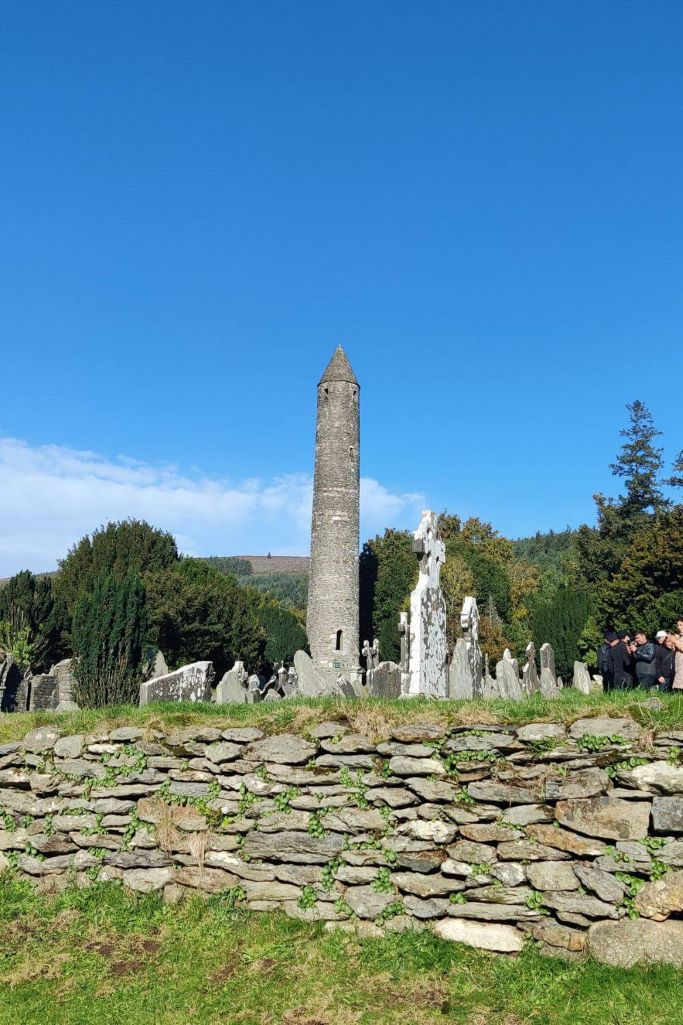
For various reasons, there are lots of visitors to Ireland who decide hiring a car is not for them. Whether it is a fear of driving on “the wrong side of the road”, or they are wary of the narrow, winding country roads they might have to take in order to reach places they want to visit.
Perhaps the cost is a factor in the reason some decide not to hire a car for getting around in Ireland, and they are trying to travel to Ireland on a budget .
But with that decision comes a question: Is it easy to get around Ireland without a car?
Whatever the reason, know this; it is possible to explore Ireland without a car. Is it easy? No, not in my opinion, but it is doable.
You may have to adjust your expectations, trip length or your itinerary and the different places in Ireland you want to visit, but I will show you exactly how to get around Ireland without a car.
5 Things you need to know about getting around Ireland without a car
Before we look at whether you need a car to get around Ireland and look in-depth at your options for exploring Ireland without driving, here are some things you need to know first.
1 Strategic planning is essential
When relying on public transport in Ireland, planning is essential to ensure your journey goes as smoothly and seemlessly as possible. You cannot be spontaneous with public transport as you might be with a rental car.
Being aware of what towns on your itinerary have good links between them, and consider the timetables carefully will mean a hassle-free trip.
You also need to be aware that certain towns and village have no public transport links at all, and that timetables are reduced on Sundays and bank holidays. Public transport between cities can vary greatly, so pre-planning is essential.
A well plotted journey is essential when using public transport in Ireland.
2 Rural Ireland may be off the cards
As mentioned above, not every town and village in Ireland has public transport links. While public transport can get you to larger villages, remote beauty spots may pose a challenge.
Investigate local bus services, or even consider joining group tours to delve deeper into the countryside.
3 Explore the possilbities of day tours
Don’t fret about missing out on the Cliffs of Moher or Blarney Castle just because you don’t drive.
Numerous operators provide daily excursions from major cities to iconic sites. These guided trips not only offer transport but also enrich your experience with local insights and stories.
There are some great Dublin day trips you can take if basing yourself in the Irish capital, and Galway is also another city from which day trips are a possiblity.
4 Travel cards could save you money
Ireland offers several travel cards like the ‘Leap Card’ for city transport around Dublin, and the ‘Trekker Four Day’ rail pass.
Depending on your itinerary, these can offer significant savings over individual tickets, granting flexibility and value.
However, ensure you compare them against your plans before investing in them.
Ireland’s charm lies in its compact towns and villages. However, even cities like Cork and Galway, while bustling, are manageable on foot.
The twisty lanes, historic landmarks , and local pubs are best discovered while walking. Simply lace up some comfortable shoes and let the Emerald Isle’s streets lead you on an adventure.
Even the capital’s streets are walkable and the city centre compact enough for exploring on foot and negate the need for four wheels.
Do you need a car in Ireland to get around?
No, not all. But you should be aware that there are instances where a car is necessary.
If you are choosing to go hiking in Ireland without a car, while this is a great way to explore and visit Ireland without a car, hiking trailheads and starting points may be located in small, rural towns with no public transport.
Likewise, taxis may be in short supply in these areas for reaching your starting point or for picking you up at your ending point.
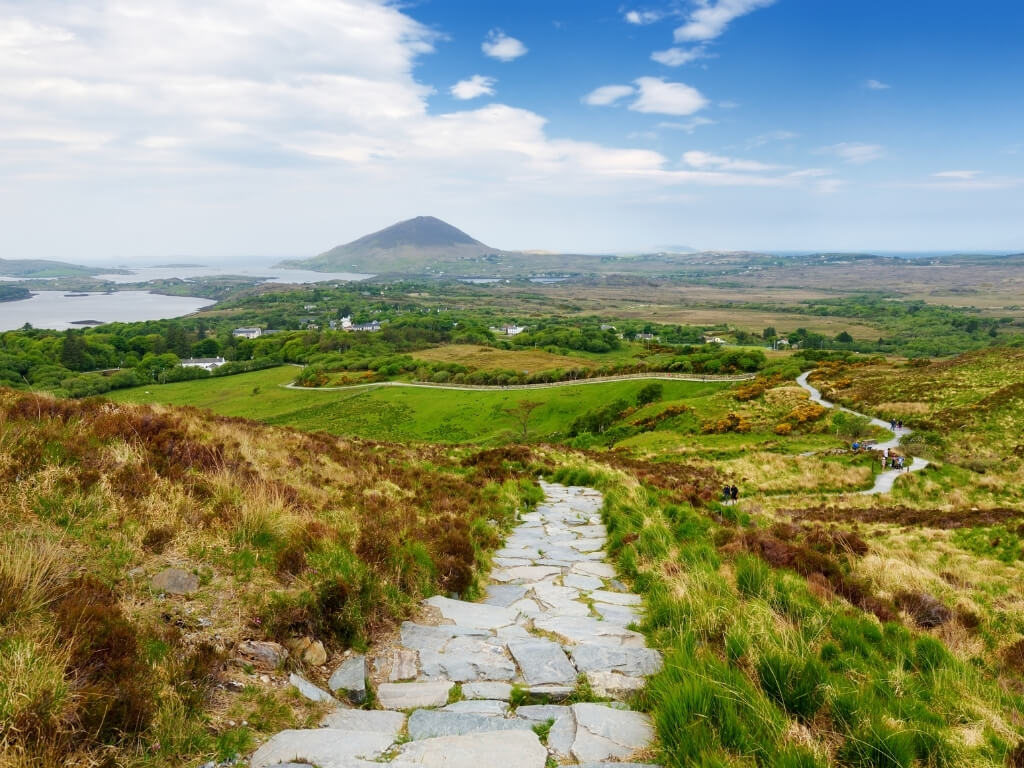
Similarly, if there is a specific small town or village you want to visit while on the Emerald Isle, you might find yourself stuck with no option but to hire a car to reach it because public transport simply does not serve that town. Many rural towns and villages have limited or no public transport connections and cars are a must.
So, while a car in certain instances will be required, if you are not looking to go hiking or to a specific small village, then you have many more options while still enjoying everything the Emerald Isle has to offer.
How to travel around Ireland without a car
Pros and cons to travelling ireland without a car, pros of navigating ireland without car.
1 Avoiding expensive car rental fees
Renting a car in Ireland can drain your wallet, especially during peak travel months like July and August. Manual vehicles dominate the market, with automatics often costing a premium. Factor in petrol and parking expenses, and you’re looking at a sizable chunk of your vacation budget.
2 Efficient train network between major destiantions
Ireland’s rail system, branching out from Dublin, is commendable, reaching primary cities and towns. Cities such as Belfast, Sligo, and Cork are directly connected, offering a swifter mode of transport than buses, emphasizing convenience and affordability.
3 Combine public transport with guided day trips
While public transportation efficiently serves many areas, it might falter when you’re eyeing up remote attractions. A smart strategy would be to combine public transport for easy-to-reach destinations and reserving day tours for iconic yet distant spots, like the Cliffs of Moher.
4 Reduce your carbon footprint
By opting for public transportation over personal vehicles, you’ll be contributing to a lower carbon footprint, making your journey more eco-friendly.
5 Get immersed in the local expeirence
Traveling without a car lets you engage more with the locals. Whether it’s a chat on a bus or understanding local folklore from a train co-passenger, it makes for a richer travel experience. Don’t be afraid to strike up a conversation, you never know what you might discover.
Cons of Venturing Through Ireland Car-Free
1 Restricted access to hidden gems
While Ireland’s major cities have a lot to offer, the allure of its scenic mountain trails and quaint fishing hamlets is undeniable. These off-the-beaten-path treasures, however, are often unreachable without personal transport.
2 Limited organised tours during off-peak months
Relying on organized tours can be tricky, especially during the quieter months of January and February. Their unavailability could hamper your plans to visit hard-to-reach attractions.
3 A lack of public transport in some regions
While Ireland’s rural charm is enchanting, it poses challenges for the car-free traveler. Regions like West Cork lack train services, and counties such as Donegal and Cavan have minimal and often unreliable public transport options.
4 Loss of flexibility and spontaneity
Without a car, you’re at the mercy of public transport schedules and that of organised tours if that is the option you choose. The spontaneous detour or unscheduled stop becomes challenging, if not impossible.
5 Could prove more costly in certain situations
While car rentals can be expensive, relying entirely on public transport and day tours might sometimes add up, especially if you’re aiming to cover extensive ground or visit several remote areas. This is also true if you choose to get taxis when out and about or even hire a private driver.
Main starting points for travelling Ireland without a car
Most visitors to Ireland will enter the country in Dublin and either start there, Shannon, or in Belfast. The island of Ireland consists of two separate countries and you can read more about the difference between Ireland and Northern Ireland .
Dublin is the capital of the Republic of Ireland and is located along the east coast, about halfway between the north and south of the country. It is a great entry point as it has good connections to other places, allowing visitors to discover Ireland by public transport.
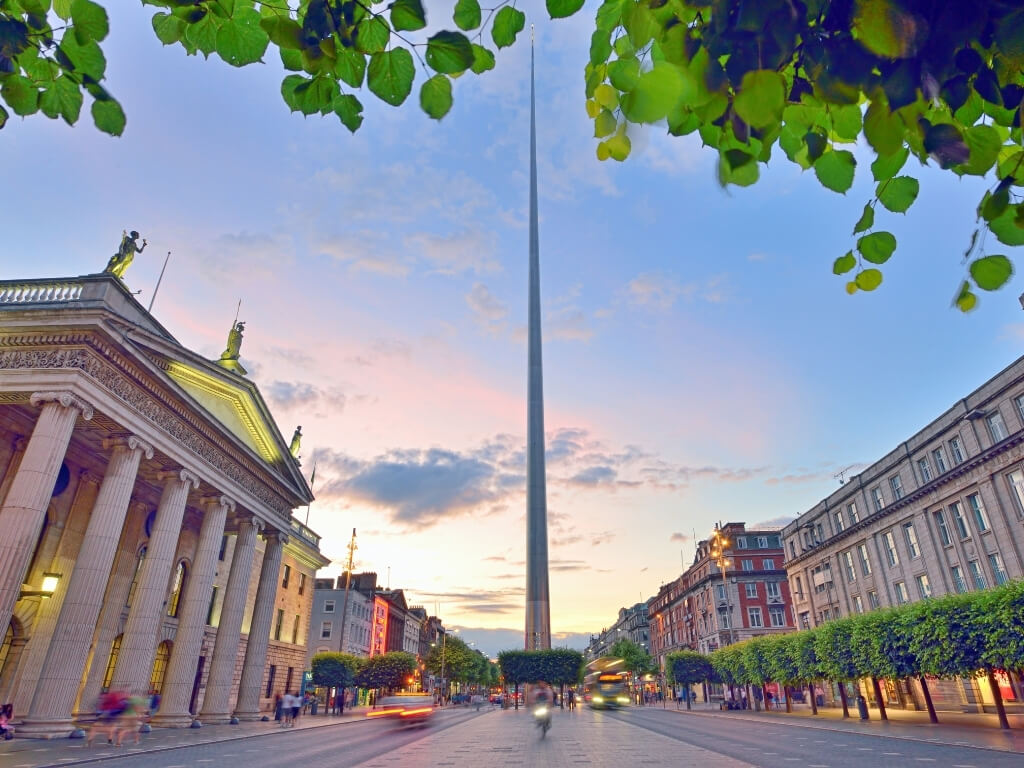
Belfast is the capital of Northern Ireland and is also located along the east coast but in the north. It is the ideal base for exploring the best places to visit in Northern Ireland .

Both cities are connected by direct bus and rail connections, meaning those who want to visit both places can do so with ease.
Just be aware that there are few connections between Belfast and other cities in the Republic of Ireland and often you will need to travel back to Dublin in order to move elsewhere in Ireland.
Another possible point of entry for those travelling from the United States is Shannon. This airport is located approximately 30 minutes from Limerick City Centre and also has direct bus links to other places such as Cork, Ennis, and Galway, via the Number 51 bus .
Modes of transportation in Ireland
In Ireland, public transportation is by way of train, tram or bus. Travelling in Ireland without a car will usually involve one of these modes of transport and below you’ll find a breakdown of each option, the advantages and disadvantages of each, and why they may be the best way to travel around Ireland without a car.
Travelling around Ireland without a car by train
If you have been wondering how to get around in Ireland without a car and are planning to stay in the main cities (and perhaps take day trips from there), then one of the best modes of transport is the train.
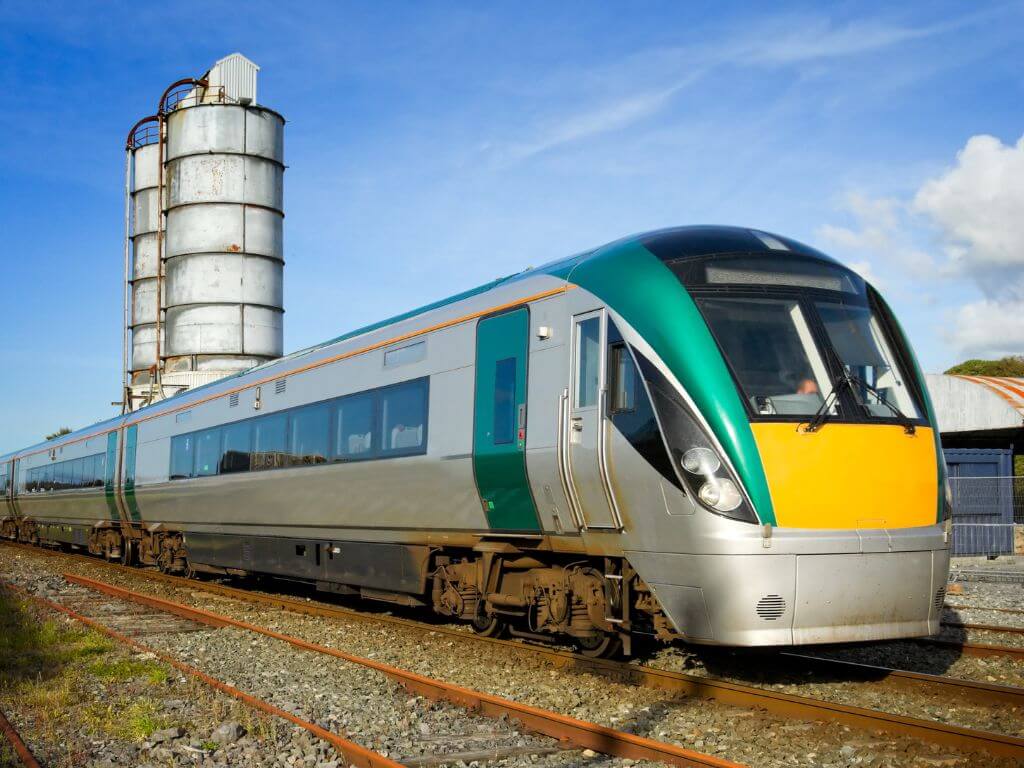
Most people visiting Ireland will land in Dublin and that gives you plenty of options for touring Ireland by train.
While Dublin Airport does not have a train station, there are bus links to the two main train stations in Dublin, Connolly and Heuston. These are the main routes out of Dublin by train and serve many corners of the country.
From Connolly Station, visitors to the Emerald Isle can travel
- north to Belfast,
- west to Sligo,
- south to Wexford and Rosslare via places such as Wicklow and Dun Laoghaire.
This is the main north/south line station for Ireland.
Heuston Station is the location for trains departing for the West of Ireland and for those travelling southwest. Towns and cities served by trains from Heuston include
- Ballina (County Mayo) via Kildare, Athlone, Manulla Junction,
- Westport (County Mayo) via the same towns and Ballina,
- Galway via Kildare and Athlone,
- Limerick via various routes,
- Killarney and Tralee via Mallow ( County Cork ),
- Cork via Mallow,
- Waterford via Kildare and Kilkenny.
For those wanting to add the best things to do in Northern Ireland to their itinerary, then heading to Belfast and travelling from there is necessary. Belfast has direct train links with Dublin’s Connolly Station and also has links to the following towns and cities in Northern Ireland
- Portrush via Coleraine,
- Derry via Coleraine.
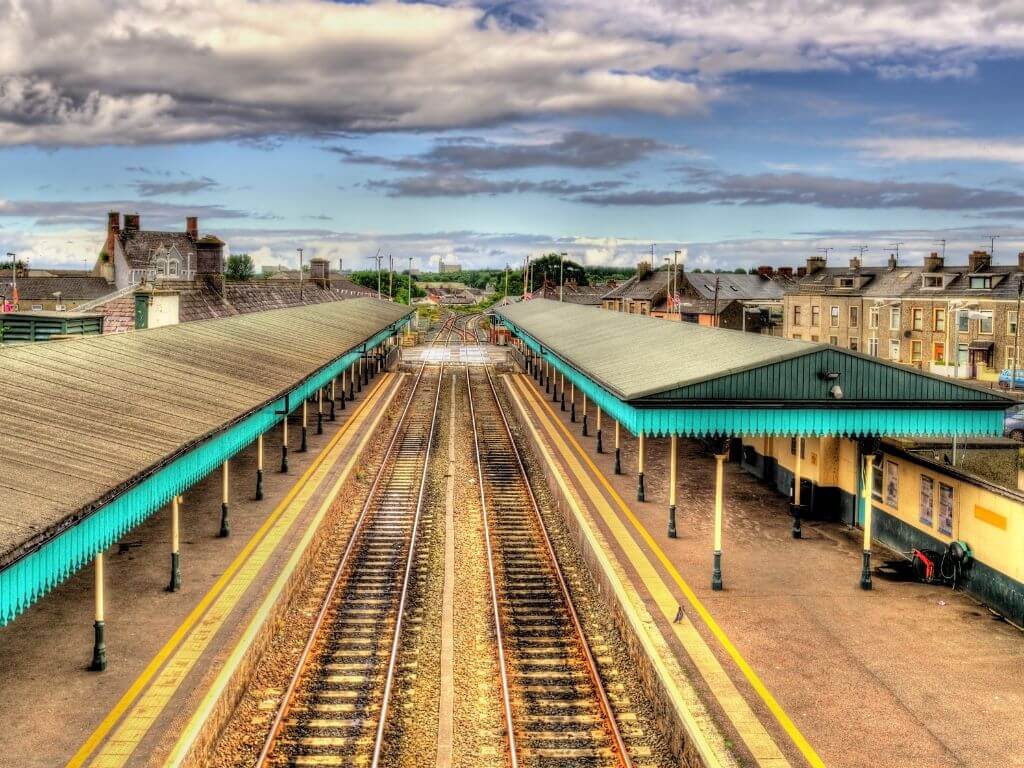
There are also some cross-country routes in the Republic of Ireland that include
- Limerick to Ballybrophy ( County Laois ) via Nenagh,
- Cork to Cobh,
- Tipperary via Waterford.
Train tickets in Ireland
Iarnród Éireann, also known as Irish Rail , is the rail company in Ireland from which you can purchase tickets online ahead of time.
Intercity tickets can be purchased online to avail of the lowest prices.
You can also buy tickets from the ticket office at any rail station on the day but be advised these may cost more than if you pre-book tickets.
There may be certain terms and conditions attached with low fares online such as limited time intervals for travel, so make sure you read them before purchasing.
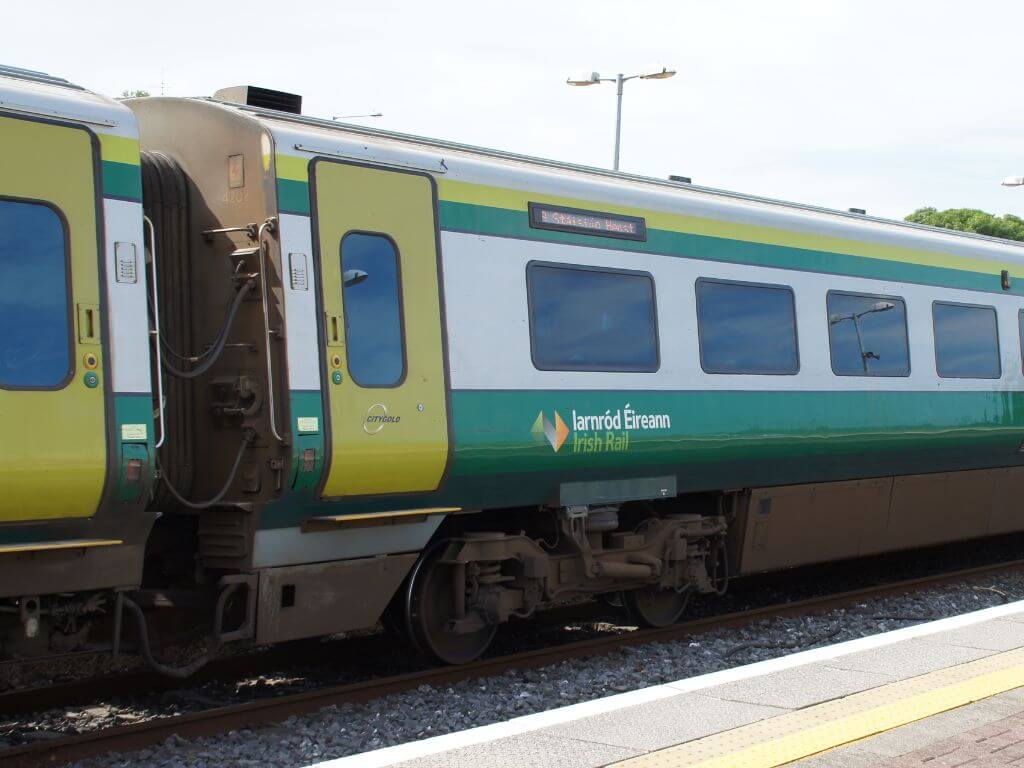
Examples of tickets for major destinations in Ireland.
- Dublin to Belfast from €44 open return/€32 day return
- Dublin to Cork from €71.20 open return/€66.40 day return
- Dublin to Limerick €57.90 day return/€51.60 day return
- Dublin to Galway €41.70 open return/€32 day return
- Dublin to Sligo €43.50 open return/€33.60 day return
- Dublin to Rosslare €31.50 open return/€27.50 day return
Top tip : round trip tickets work out significantly cheaper than buying two single tickets. For example, two single tickets between Dublin and Belfast would cost €60.80 but an open return ticket costs from €44.
Note that rail travel in Ireland is more expensive than in the rest of the European continent.
If you are wondering how long train journeys take in Ireland, most are less than three hours. The following are example journey times:
- Dublin to Galway – 2.5 hours
- Dublin to Belfast – 2 hours 15 minutes
- Dublin to Cork – 2 hours 45 minutes
- Dublin to Limerick – 2 hours 20 minutes
- Dublin to Rosslare – 3 hours 20 minutes
There are also tourist tickets for rail travel in Ireland and these can be a more flexible option.
- Trekker Four Day Tourist Rail Ticket – These are adult tickets which are valid for four consecutive days of travel in the Republic of Ireland from the date of issue of the ticket. This costs €110 and can be purchased online or in limited ticket offices.
- Explorer Tourist Rail Ticket – Both adults and children can use this ticket, an advantage over the Trekker Ticket. This ticket offers 5 days of unlimited travel over 15 consecutive days on all Iarnród Éireann services in the Republic of Ireland. These tickets can ONLY be bought at ticket offices and cost €160 per adult and €80 per child for standard class carriages. These tickets cannot be purchased online.
- Leap Visitor Card – Eligible for both adults and children, the Leap Visitor Card is the best ticket option for getting around Dublin without a car. It offers visitors 1, 3 or 7 days unlimited travel on all Iarnród Éireann Dart and Commuter Rail services in the Short Hop Zone, unlimited Dublin Bus services including the Airlink to/from Dublin Airport, Luas services (see below), and Go-Ahead bus services in Dublin. This can be bought from the Spar shops, Discover Ireland desks and Information desks in the arrivals halls in Terminals 1 and 2. They can also be bought at the Dublin Bus and Discover Ireland offices on O’Connell Street and also Visit Dublin centre in Suffolk Street in the city centre.
More information about all Tourist Rail tickets in Ireland can be found by clicking here .
Eurail also operates in Ireland, with the best option being their one-country pass, unless you plan on travelling to other parts of Europe by rail during the same trip. The Eurail Ireland Pass offers visitors 3, 4, 5, 6 or 8 travel days in 1 month. You can take as many trains in one day as you like and their ticket is valid across both the Republic and Northern Ireland (discover the difference between the two parts of Ireland ). Eurail tickets cost as little as €121 per adult for a 3-day unlimited pass in 1 month. Find more information here . NOTE, these are valid only for non-EU citizens/residents.
EU citizens and residents can use the Interrail Pass which has the same conditions of carriage and prices as the Eurail Pass for non-EU citizens/residents. Click here for more information .
Top tip : If you are going for a country rail ticket ensure you purchase the correct one for the country you are visiting and your own citizenship status.
For those travelling in Northern Ireland, Translink is the operator of visitor ticket passes. They have a 3-day Flexi Ticket which offers unlimited travel on any 3 days out of 7 consecutive days between two chosen rail stations within Northern Ireland.
Note that you need to be an mLink customer ( see here for more information ). There are also one-day and seven-day tickets similar to the 3-day Flexi. Tickets can be bought online, at stations or at ticket vending machines.
There is also an iLink travel card which offers unlimited travel within specific zones across Northern Ireland, ideal for those not wanting to be limited to two stations. These come as daily, weekly or even monthly travel cards that can be bought and topped up online. See here for more information .
This is the ideal option for those wanting to explore Northern Ireland without a car as it offers both rail and bus services across much of Northern Ireland, giving you more flexibility.
Rail tours from Dublin
There are also several rail tours from Dublin that visit the main attractions across the country.
Railtours Ireland, the Iarnród Éireann partner, has a number of rail tour options for those wanting to enjoy an Ireland by train itinerary. Their most popular tour is a 6-day Ireland itinerary that takes in Blarney Castle (pictured below), the Ring of Kerry, Cliffs of Moher, Giant’s Causeway and more, some of the best places to visit in Ireland .
Note that these tours use a mix of rail and bus services. For more information, click here .
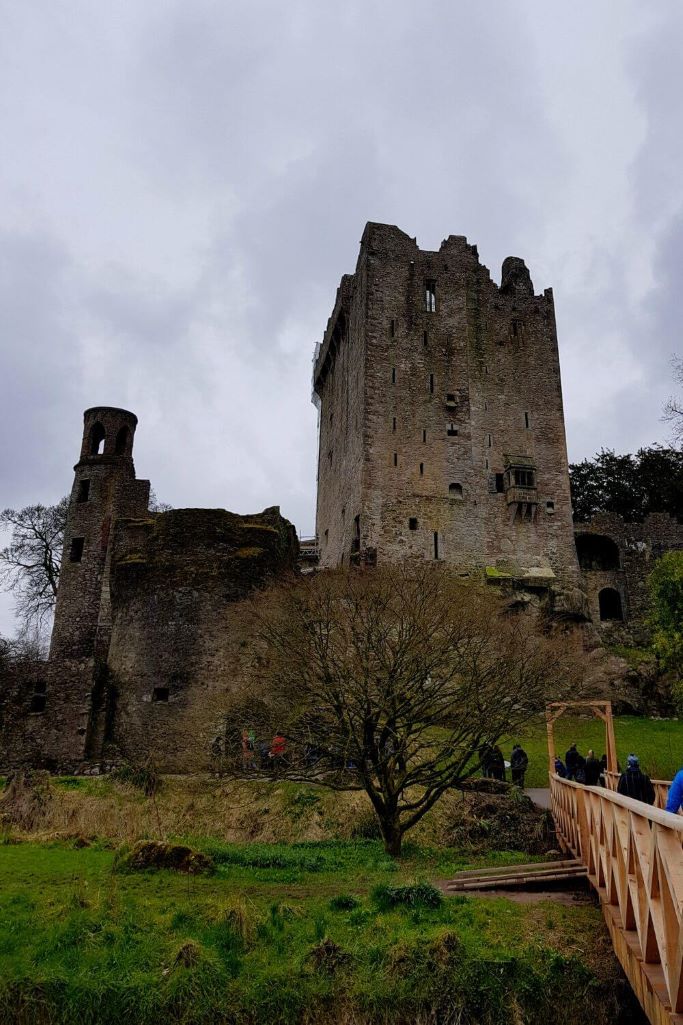
Another option is Great Rail Journeys. Click here for information about their Ireland tours.
There are also several rail tours on Viator that you can take to visit various locations across Ireland. With everything from day tours by rail to 2, 3 and 6-day tours of Ireland, you might find one of these is the ideal rail tour for you. Click here to start your search .
Best Ireland Train Routes
There are two routes which are among the best train routes in Ireland.
The link between Dublin and Rosslare travels through Ireland’s Ancient East .
It follows the coast from Dublin City Centre to Kilcoole in County Wicklow, before turning slightly inland and travelling south to Wexford Town where it then partly follows the coast until it reaches Rosslare.
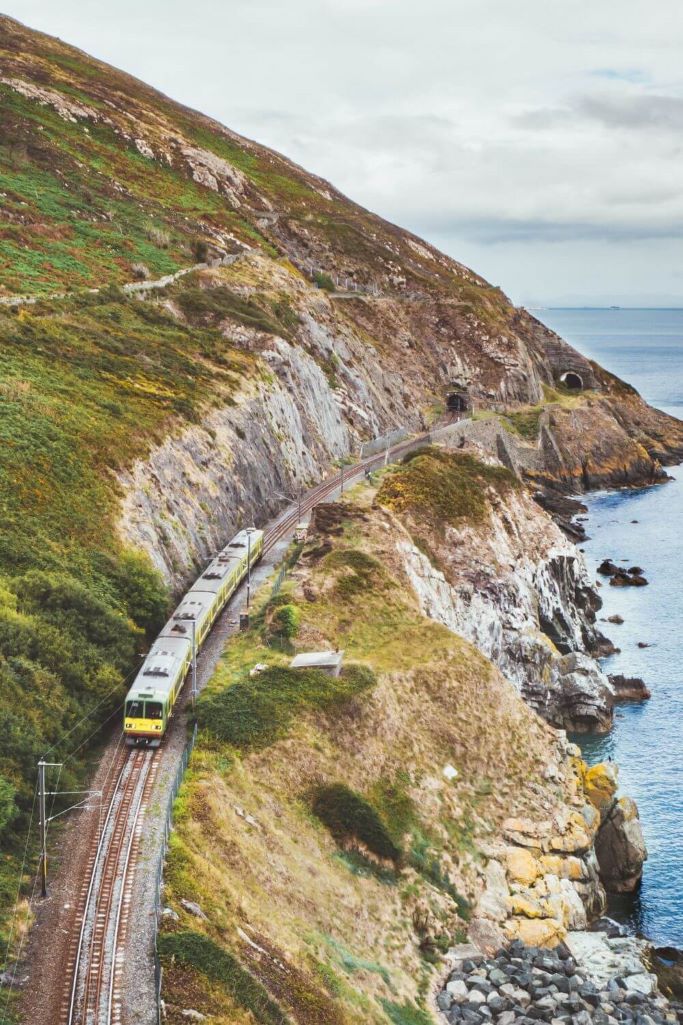
Another great route is one in Northern Ireland between Derry and Coleraine. This route runs along the Causeway Coastal Route, which means you’ll pass by beautiful, unspoiled beaches, and the backdrop of the Binevenagh Mountains.
Advantages to travelling Ireland by train
If you are wondering how to tour Ireland without a car, trains are a great option. You can relax while enjoying the beautiful scenery along the way.
Trains can pass through some beautiful landscapes or follow the coast giving passengers uninterrupted views across the sea.
Other advantages to taking rail tours of Ireland include toilets on board, a chance to stretch your legs, and you can get seats with tables to enjoy a picnic along the way. Some routes often have a refreshments trolley service.
Travelling with kids by train is fun, especially if you have little train fans along the way. And trains can often be faster than getting a bus, with many train routes having little or no stops along the way.
Disadvantages to travelling Ireland by train
There are two main disadvantages to getting around Ireland by train.
Firstly, you are quite limited by the number of places to visit in Ireland by train (see below). Only the major cities and towns are serviced by trains, and you may find you need to change trains at certain stations depending on where you are travelling to.
Travelling to other destinations outside of these central locations will require additional transport such as a bus or even a taxi.
Secondly, train travel in Ireland can work out more expensive than taking the bus. If you are trying to travel Ireland on a budget, train travel is often not the cheapest way to travel around Ireland.
Top tips for travelling by train in Ireland
If you are choosing to use trains for getting around in Ireland without a car, then try to book your tickets ahead of time. This may save you some money over tickets bought on the day or a few days before.
If you are wondering how often trains run in Ireland, it depends on the day and destination.
During weekdays and Saturdays, most major towns and cities are served between four and fifteen times a day. You can find detailed timetables for Iarnród Éireann here .
On Sundays and bank holidays (find a list of Irish bank holidays in this post ), timetables are reduced so service will be less frequent on these days.
Travel around Ireland by bus
Travelling by bus in Ireland is often the best way of seeing Ireland without a car. Buses are budget-friendly, are in abundance in Dublin and other major cities such as Cork and Galway, and serve lots more nationwide destinations than trains.
There are also more direct inter-city connections by bus compared to trains. For example, there are no direct train services between Killarney and Limerick, but Bus Éireann , Ireland’s nationwide bus operator has a direct bus route between the two cities.
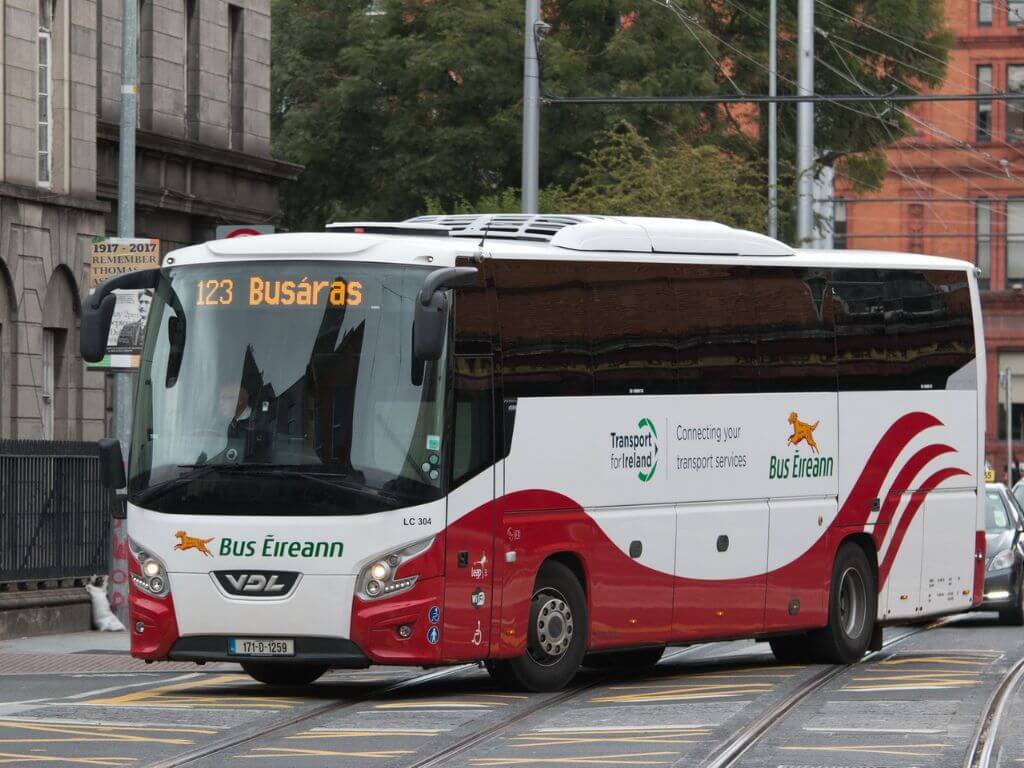
All cities and big towns will have a centralised bus station from where you can hop on buses to all corners of Ireland. Certain routes may require you to change buses halfway, but as mentioned, many cities and large towns have direct bus links.
Certain destinations are easier to reach via bus than by train. For example, there is a direct bus from Dublin Airport to Belfast which negates the need to travel to Dublin City Centre. It takes 2 hours direct and is a great option for those who want to start exploring Ireland in Belfast.
Within Northern Ireland, places such as the Giant’s Causeway are also much easier to reach by bus than by train. Similarly, the Cliffs of Moher are best reached by bus from Galway than trying to reach it by train.
Dublin has one main bus station, Busáras Bus Station (pictured below), from where buses to other parts of Ireland depart.
It is conveniently located close to Connolly Train Station, and it has links to Heuston Train Station via the Luas Red Line (see further down). The buses departing from here are Bus Éireann buses.
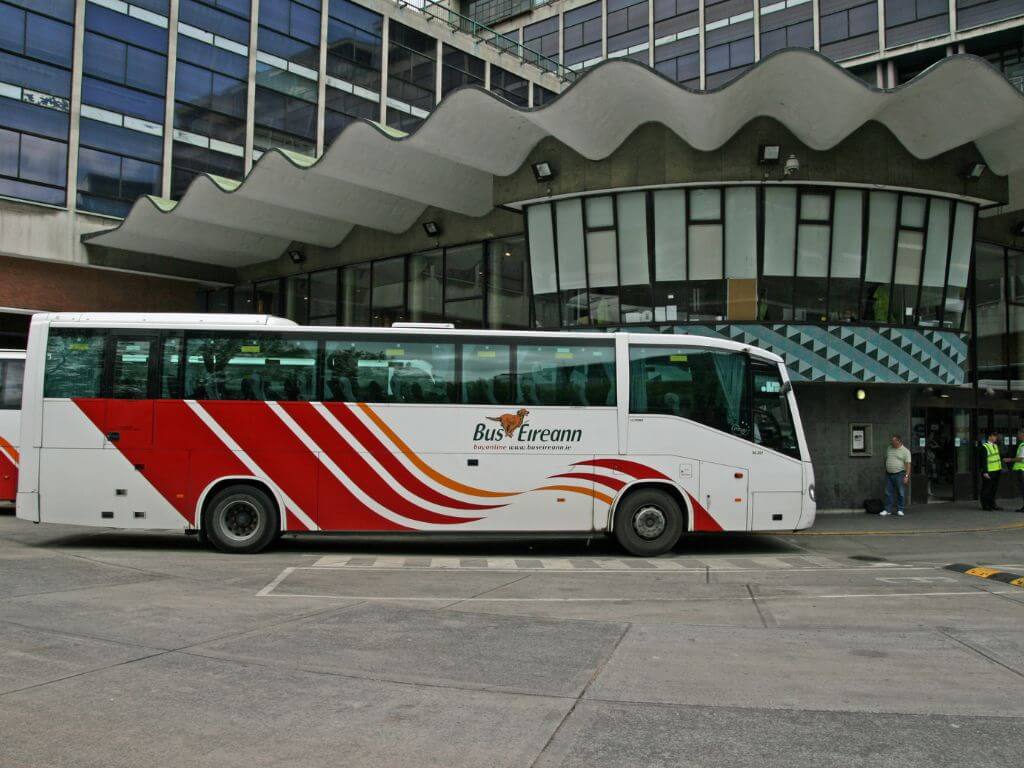
Many buses will depart from Busáras/Connolly and travel along the quays in Dublin towards Heuston where passengers can board those buses. Other private bus operators will depart from the city centre at various locations including O’Connell Street and Eden Quay.
Bus Éireann , as mentioned, is Ireland’s national bus company. They cover both national services, city bus services, town bus services, local bus services and commuter services for the main cities such as Galway, Dublin, Cork, Limerick and Waterford. They are also the operators of Expressway , the fast inter-city service.
Bus Eireann has 242 bus routes in Ireland with over 5000 stops along those routes. This means they cover more than 3000 destinations in Ireland.
There used to be an Open Road Travel Pass that could be used for unlimited travel on Bus Eireann routes within a certain time frame but I am unable to find more information at this time.
Other operators of buses in the Republic of Ireland include
- City Link – operating between Dublin/Dublin Airport and cities such as Galway, Limerick and Cork/Cork Airport ( more information ).
- Local services – more rural, out-of-the-way towns will have local services connecting with bigger towns that have nationwide links. Just be aware that these services can be patchier and will require a bit more planning on your part. This is where the website Rome2Rio can come in handy, as well as good old Google maps.
Within Dublin, you will find Dublin Bus serving the far corners of the city and its suburbs. I have spent more time than I can tell you on Dublin Bus buses.
Some routes in Dublin are also operated by Go Ahead Ireland .
For more information about public transport in Dublin read below or visit this link .
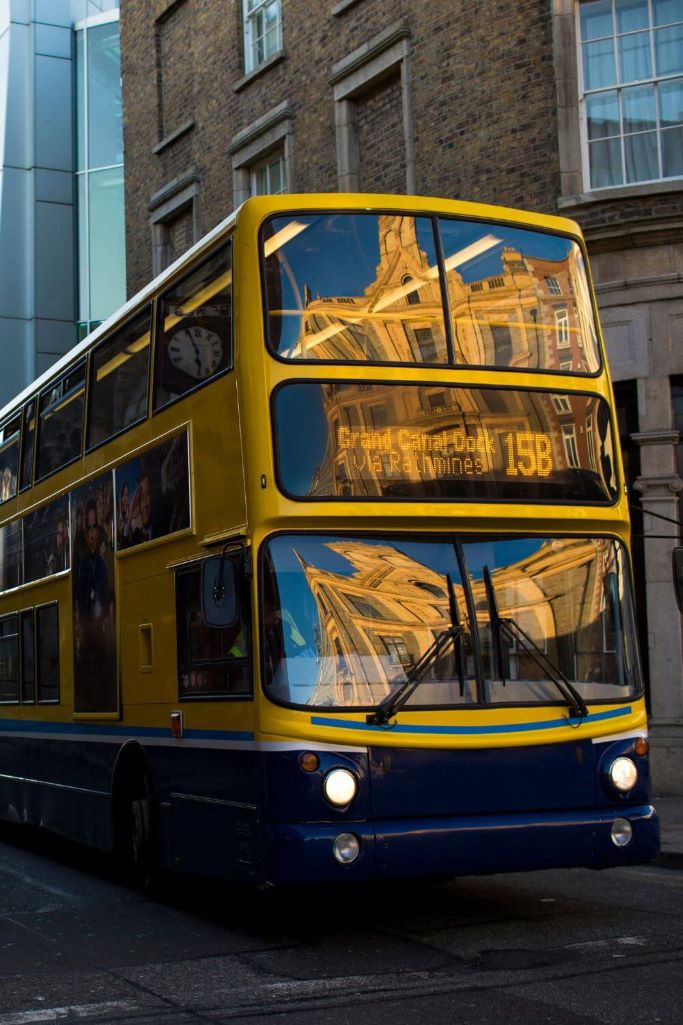
In Northern Ireland, Translink is a great resource for finding routes in the country. Not only will it tell you the best and quickest route to your destination, but you can also find out the price of tickets.
Within Northern Ireland, there are two main bus operators, Ulsterbus and Goldline.
Ulsterbus operate services across all of Northern Ireland, including in smaller towns and village.
Goldline operates express coach services across Northern Ireland between the main towns and cities. Services on both of these operators can be found by consulting Translink.
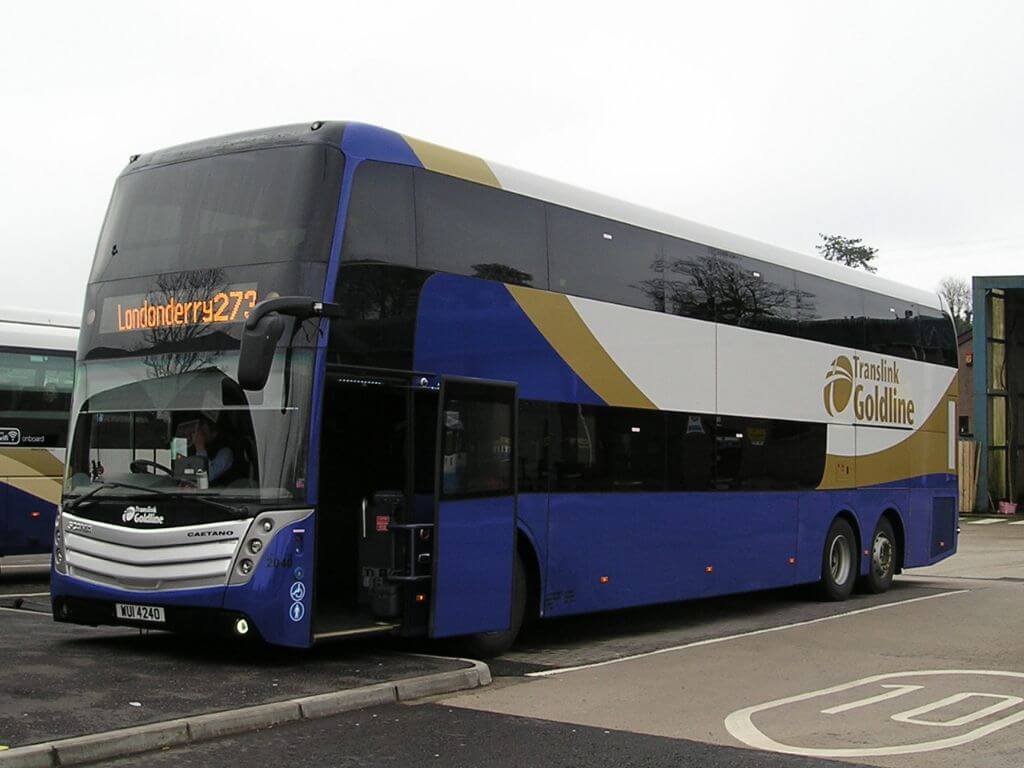
Within Belfast, you will also find both Metro and Glider services, and again, details of these services can be found on Translink.
Bus tickets in Ireland
Bus tickets in Ireland can be purchased online via Bus Éireann for the Republic of Ireland or Translink for Northern Ireland ahead of time.
Tickets can also be purchased from main bus stations, or from the driver on the day of travel and you should have exact change with you to speed up the process.
Be aware that Dublin Bus services only accept exact change and do not accept notes. Nor will you receive any change if you do not have the exact fare.
Examples of tickets for major destinations in Ireland
These fares are taken from CityLink and are examples of the cost of bus tickets for intercity travel by bus in Ireland.
- Dublin to Galway €23 return pre-booked/€27 return bought onboard
- Dublin to Limerick €37 return pre-booked/€42 bought onboard
- Galway to Cork €34 return pre-booked/€38 bought onboard
If you are wondering how long bus journeys take in Ireland, it varies depending on your route. The following are example journey times:
- Dublin to Galway – 3 hours
- Dublin to Cork – 3 to 3.5 hours
- Dublin to Limerick – 2 hours 45 minutes
- Dublin City Centre to Belfast – 2 hours 45 minutes
Bus tours from Dublin
There are lots of operators doing bus and coach tours of Ireland. See more information below regarding joining a coach tour.
Best Ireland Bus Routes
One of the most scenic bus routes in Ireland is the Ennis (County Clare) to Galway City (County Galway) route. Route 350 departs Ennis and meanders through quaint villages, and epic landscapes and even skirts alongside the Cliffs of Moher. You can read more about this route here .
Advantages to travelling Ireland by bus
Bus travel in Ireland is budget-friendly and is often the cheapest way to travel in Ireland without a car. If you are looking to do a lot of travel by public transport in Ireland, bus tickets can work out cheaper.
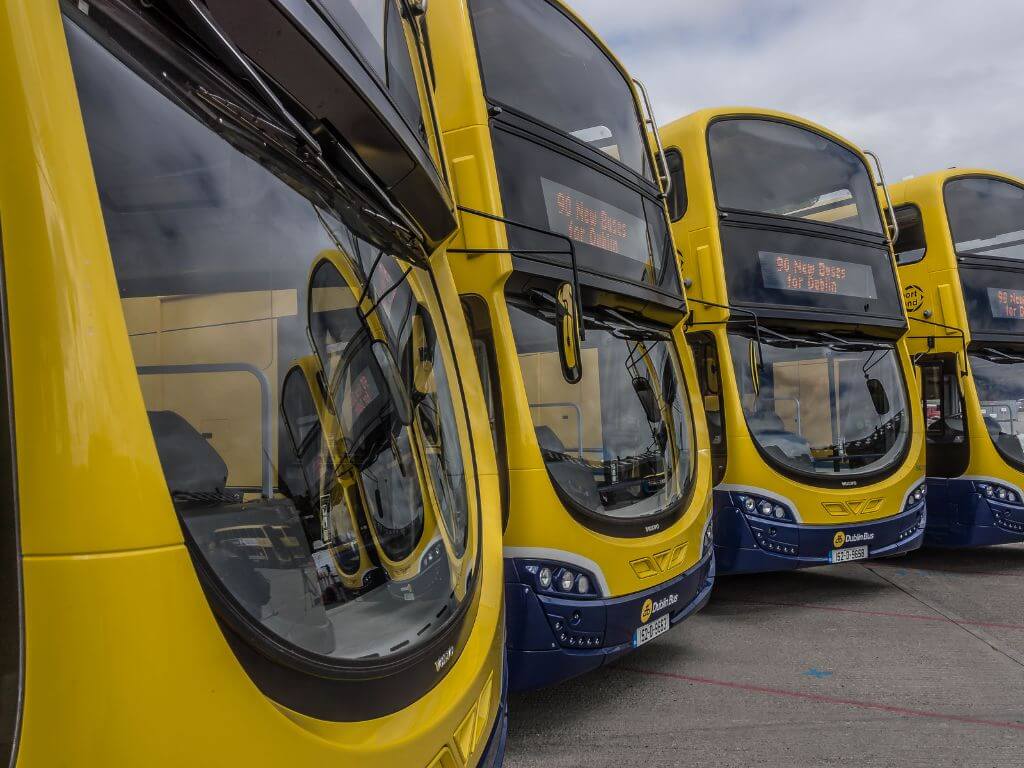
There are more destinations across Ireland served by bus links and inter-city connections are fast and frequent making them a more widespread public transport option in Ireland.
There are also more direct inter-city routes not covered by trains such as Cork and Waterford, and Killarney and Limerick. These cities have direct bus links but not direct train links.
Tourist attractions that are not along major roads or train routes are often served too, albeit with infrequent service. But they are often served, nonetheless.
Buses can also give travellers an opportunity to see more of rural, small-town Ireland.
Disadvantages to travelling Ireland by bus
Bus journeys in Ireland can take longer than trains to reach the same destinations.
They are often required to make more stops at smaller towns along the way which can increase the journey time. So, if you are choosing this option, allow plenty of travel time.
While more of Ireland is covered by the bus network, be it the nationwide or local ones, they will not get you everywhere. Local services can be patchy at best in very rural destinations.
And remember I said you might still need to hire a car if there is a very particular small town you wish to visit that is not covered by public transport.
Top tips for travelling by bus in Ireland
Plan your journey ahead of time so you are aware of any changes and connections.
Pre-book your tickets ahead of time to avail of the best prices.
Joining a group tour to travel Ireland without a car
One of the best options for touring Ireland without a car is to join a tour group. There are a number of operators who run tours around the main tourist attractions and towns in Ireland.
Operators of guided coach tours of Ireland include
- Adventure Tours
- Wolfhound Tours
- Vagabond Tours of Ireland
- Viator bus tours ( start your search by clicking here )
- Paddywagon Tours (although I have seen an increase in complaints about their services this summer).
Since these tours are designed with tourists in mind, you will visit all the must-see places in Ireland including the Giant’s Causeway, Cliffs of Moher, Rock of Cashel, Blarney Castle, and more.
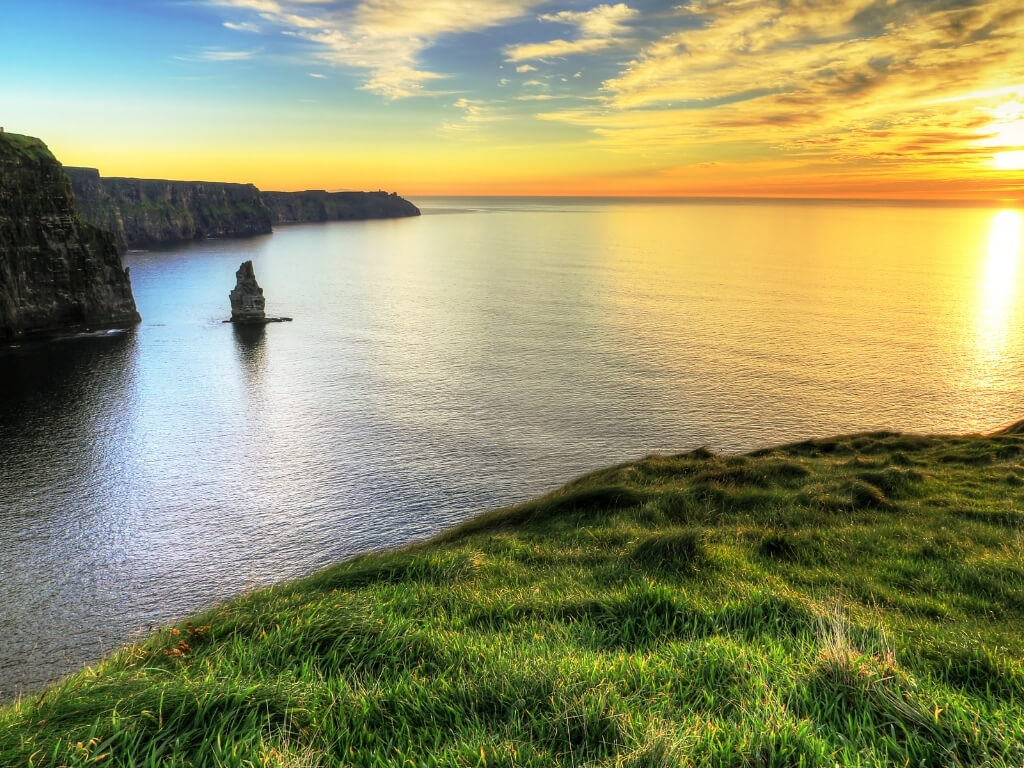
Advantages of joining a guided tour of Ireland
The biggest advantage to a guided tour of Ireland by bus/coach is that someone else does the driving. This is ideal for those who don’t want to drive “on the wrong side of the road”. It also leaves you free to fully enjoy the beautiful scenery as you move between locations on a door-to-door service.
Guides are often full of fun and interesting facts about Ireland , not only about your destinations but of the Emerald Isle as a whole.
You get to see all the major attractions and can join a tour that covers the ones on your bucket list.
Many tours include accommodation, so you’ll stay in the best places, eat great food and get to meet plenty of people along the way, local and tourists alike.
If you are wondering where to stay in Ireland without a car, joining a tour answers this question for you.
The only research you need to do is choose which tour to take. Someone else does the rest of the planning and research for you.
Disadvantages to joining a guided tour of Ireland
The main disadvantage to joining a tour group is that you are on someone else’s schedule. They have a timetable they must stick to so that they reach destinations in a timely manner, so be prepared for shorter visits to places you might ordinarily stay longer.
You may find yourself arriving at certain popular attractions at the same time as other tour groups and face lengthy queues.
Guided tours can be expensive and can work out more costly than if you had planned the same trip yourself.
Non-motorised ways of visiting Ireland without a car
Cycling in ireland.
Although there are some people who choose to explore Ireland by bicycle, it has seen a reduction in popularity over the years.
While it was a popular method for getting around Ireland without a car, there are a number of reasons why fewer people choose this option.
Road traffic can make this mode of transport dangerous and therefore less attractive. Main roads are shared with other vehicles such as cars, buses, tractors and even trucks.
Heading off the main roads can be a better choice as there should be less traffic but be prepared to come across a tractor or two along these more rural roads.
If you are considering cycling in Ireland, go prepared. Ensure you know the route you are taking and if using your phone for navigation, have your maps downloaded onto your phone.
Prepare for all kinds of weather and be prepared to get wet. Frequent rain is common in Ireland even during summer (read my post to find out when is the best time to visit Ireland ). Winds, especially along coastal roads, can often be strong, so bear this in mind.
And if you are travelling off the main roads you may also come across steep hills and inclines that are long so a good level of fitness will be needed for these.
Tips for cycling in Ireland
- Always wear bright, highly visible clothing, preferably with a hi-vis jacket.
- Always use reflectors and ensure you have working lights front and back to use between dusk and dawn.
- Always ride one in front of the other, never side-by-side. On tight roads and bends, oncoming traffic could be on your side of the road.
- Always keep a dry change of clothes and valuables in a waterproof bag in case of downpours which are likely, even in summer.
Hiking in Ireland
As mentioned, one way to get around Ireland without a car is on foot. However, you need to plan routes and starting/end points very carefully.
Hiking in Ireland will also require stamina and time, so if you are unfit or only have a short allowance of time in Ireland, this mode isn’t for you.
That said, if you have plenty of time, weeks rather than days, walking or hiking around Ireland can be very enjoyable.
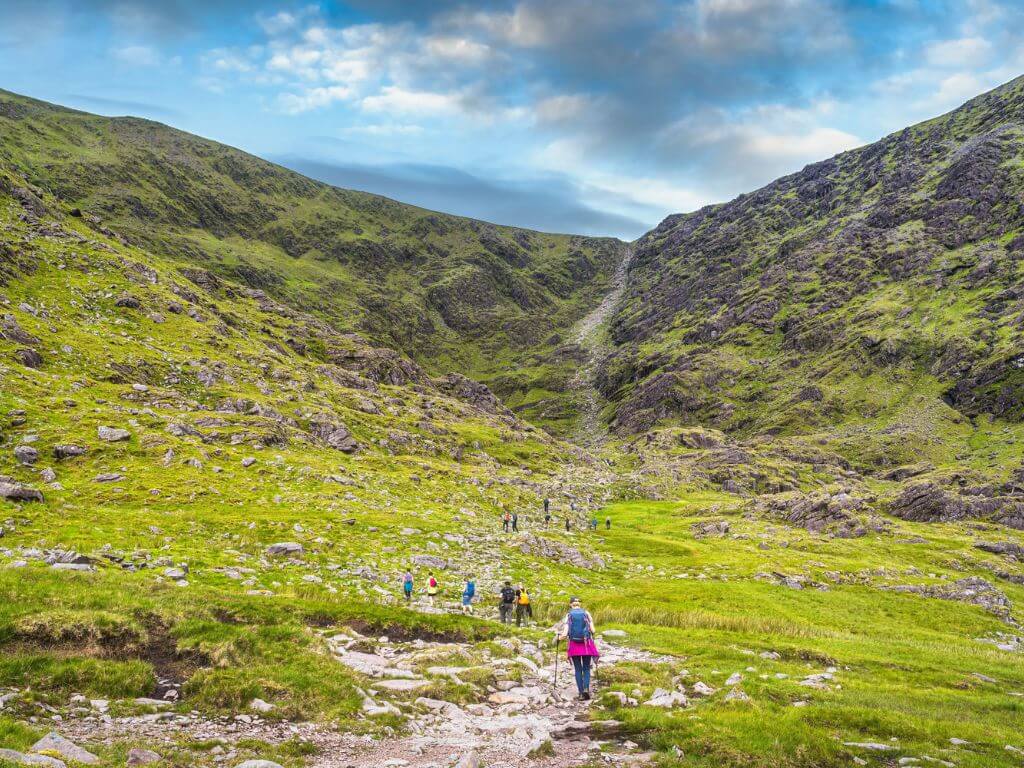
Be prepared for changeable weather and have a good pair of waterproof hiking shoes or boots. Bring waterproof trousers and a jacket, and you’ll still be able to enjoy it, even when the weather turns bad.
Ireland has lots of way-marked trails and long-distance footpaths. You can get more information here that might help you plan your routes better.
Hitch-hiking in Ireland
While hitch-hiking is still used as a form of exploring in some countries, it is extremely rare in Ireland.
It is not advised and can be dangerous. Not only could you be in danger from someone who picks you up, but you could be in danger from traffic along the roads you are walking until you hitch a ride.
Also, be aware that drivers in Ireland are very reluctant to stop and offer a total strange a lift part or all of the way they are looking to go.
Therefore, this is not a great way of getting around Ireland without a car that you should consider, nor that we recommend.
If you are wondering how to travel around Dublin without a car, then this section is just for you!
With it being the capital city, Dublin is very easy to navigate without a car, no matter where you base yourself in the city.
Whether you are staying 3 days in Dublin , or less, you have a number of ways for how to get around in Dublin. The city centre is small and mostly walkable, while the suburbs are well serviced with public transport.
If you stay in a central location and don’t plan to venture outside of the city centre, then you can get away with not needing public transport at all. Even the best day trips from Dublin start and end in the city centre.
But here are the best ways to get around Dublin without a car should you need to traverse the city.
In Dublin, one of the best options for getting around without a car is to hop on a bus.
Whether it is a Dublin Bus from a suburb into the city centre, or one of the Hop on Hop off sightseeing buses, travelling by bus is super easy. Dublin Bus serves all corners of Dublin and even the outer suburbs have regular services.
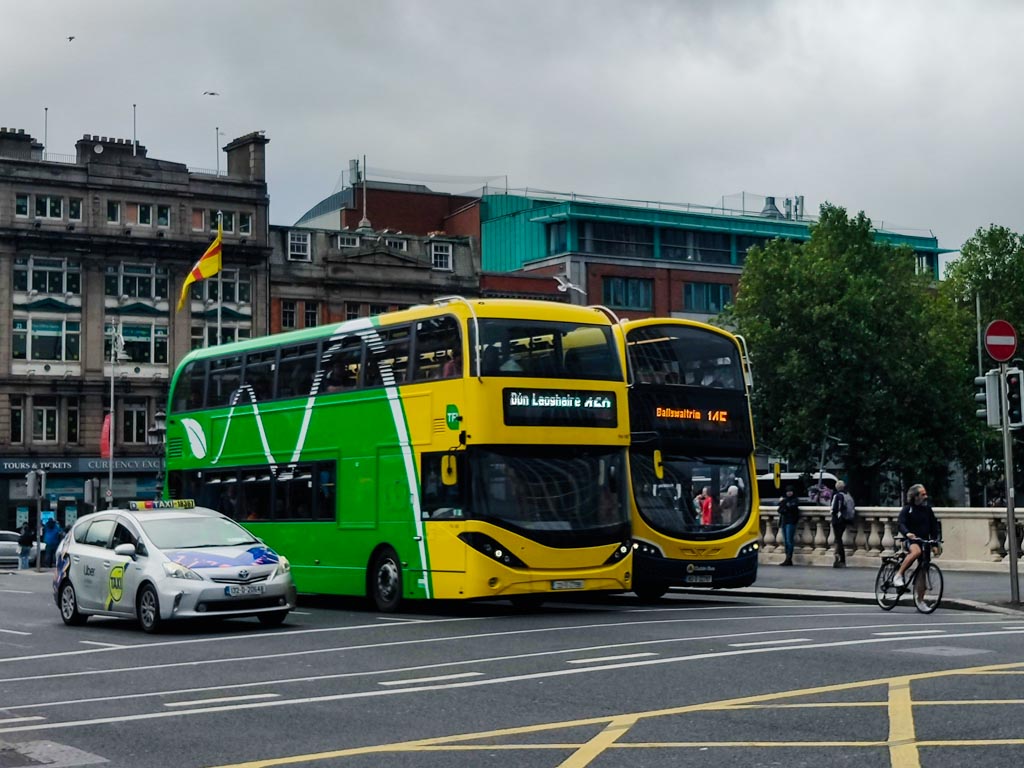
Be aware that to travel on regular buses within Dublin you will either need a Leap Card (see further up) or the exact change in coins.
Drivers do not handle money and do not accept bills/paper money, nor do they give change.
So ensure you have plenty of coins on you if you are paying cash rather than using a Leap Card.
The Hop on Hop off buses are a bit easier in that you can purchase your ticket from the central office, normally on O’Connell Street, or from representatives at bus stops or from the driver himself.
While they can work more expensive than using regular buses, they do visit all the best attractions in Dublin , bringing you exactly where you need to go.
With some Hop on Hop off tickets, you also get discounted entry into some of the Dublin attractions. Check out the Dublin Pass for combined bus and attraction entry.
The advantage of using buses is many roads, especially in the centre of Dublin, have dedicated bus lanes to make travelling by bus easier and quicker, particularly during rush hour traffic.
The Luas is Dublin’s tram system and currently has two lines, the Red and Green Line.
The Red Line runs from Connolly Station or The Point to either Saggart or Tallaght Park & Ride.
The Green Line runs from Broombridge on the north side of the city to Bride’s Glen on the south side.
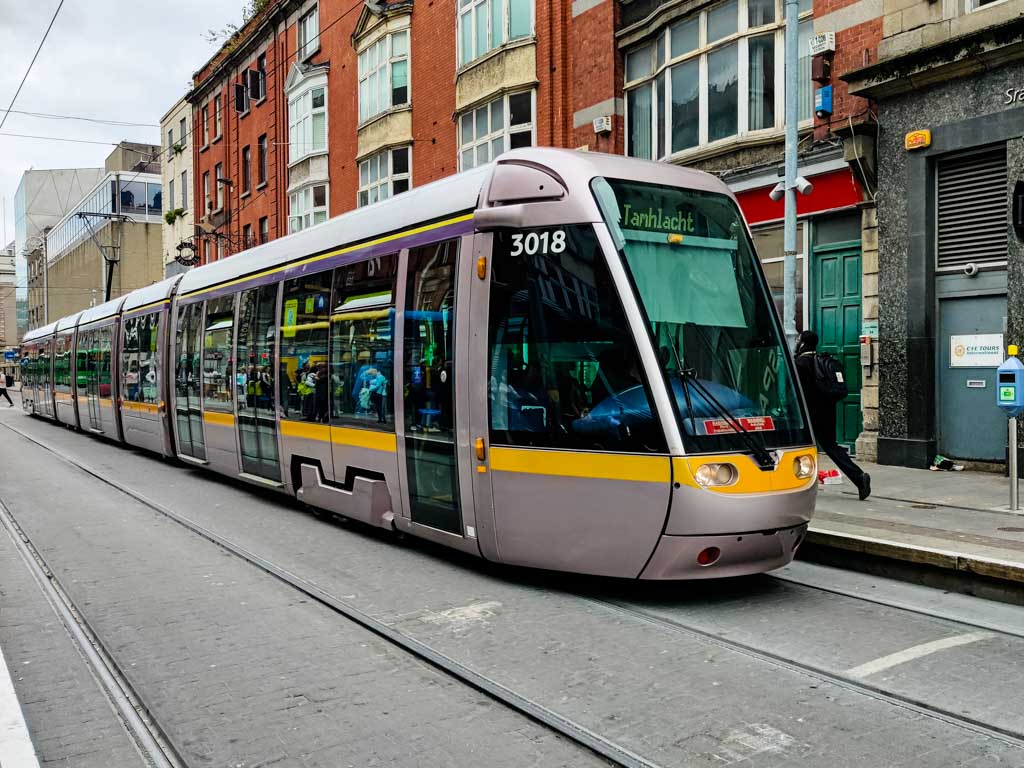
Things to be aware of while travelling on the Luas is they get very crowded during rush hour, and keep your valuables hidden and secure as pickpockets can operate on them.
Tickets can be bought at each stop from the ticket machines, using either cash or cards, and you can also use a Leap Card on the Luas. Just remember to tap on/off like you would a London Underground train.
But, when it comes to ease and speed, the Luas can be a great option for getting around Dublin without a car, especially if you are staying somewhere close to one of the lines. For more information about the Luas system in Dublin, click here .
If you are staying along one of the coastal suburbs of Dublin, or want to visit Howth, Malahide, Dun Laoghaire or Bray, then hopping onto the DART (Dublin Area Rapid Transport) is easy.
Running from Howth all the way to Bray (sometimes Greystones), you can catch one from the centre of Dublin, at Connolly Station or Tara Street Station and head either north or south along the coast.
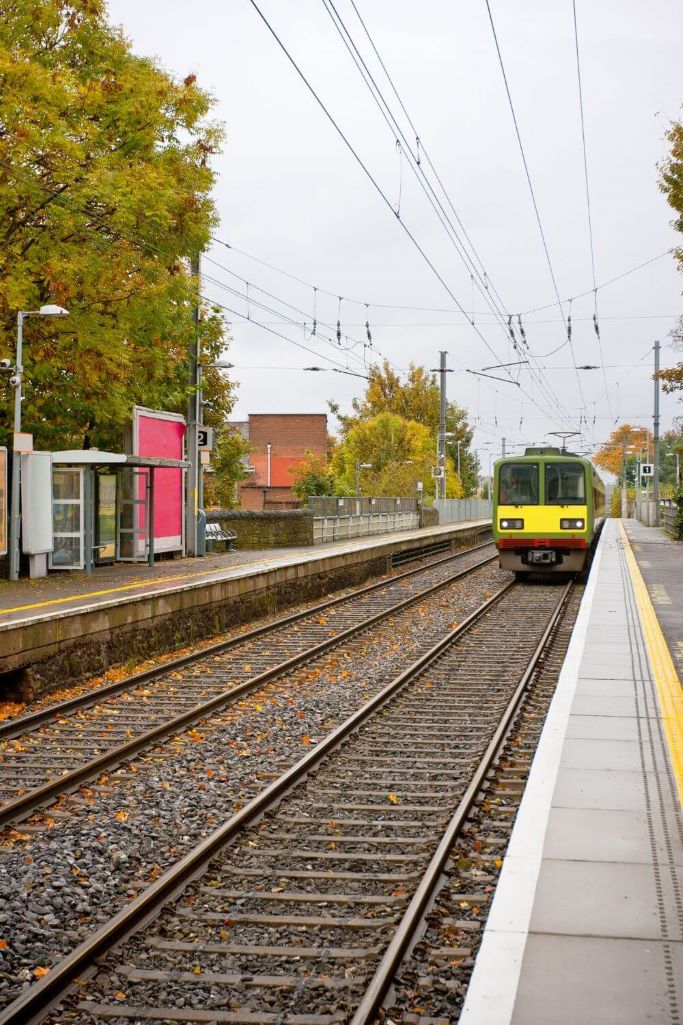
You can buy tickets for the DART at the station or use the Leap Card which can work out slightly cheaper than buying tickets from the station.
There are also trains on the Commuter Rail Network that you can use to get in and out of Dublin City Centre. These trains reach commuter towns and have more regular services around typical rush hours to bring workers to and from the city.
These commuter services include:
- Dublin Northern Commuter serving towns to Dundalk from Connolly or Pearse Street Stations,
- Dublin Portlaoise Commuter from Heuston Station,
- Dublin Longford Commuter from Pearse Street and Connolly Station,
- Dublin/Dunboyne M3 Parkway from Dublin’s Dockland/Connolly via Clonsilla,
- Dublin Southern Commuter from Connolly to Gorey Station in County Wexford ,
- Phoenix Park Commuter from Portlaoise through the Phoenix Park Tunnel to Grand Canal Dock.
For more information about the Dublin Commuter Rail Network, click here .
Cycling is another option for getting around Dublin without a car. It is affordable and eco-friendly, and there are 74 miles of cycle tracks or lanes across the entire city.
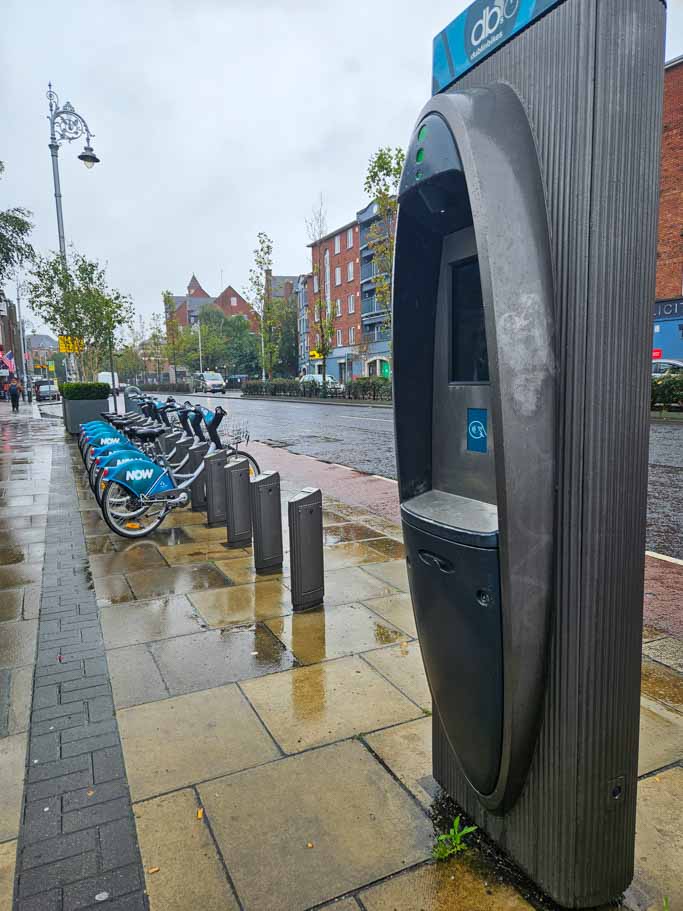
However, cycling during rush hour can be dangerous. Like all major capital cities, traffic increases significantly during rush hour in and around Dublin, increasing hazards for those on two wheels.
Make sure to have a helmet and working lights if you are cycling during rush hour, especially during the winter months when it gets dark from around 4.30pm.
You can hire a bike around the city from Dublin Bikes, similar to the bike rental schemes in other major cities. You can hire them for 1 day, 3 days or longer. The first 30 minutes are free and you can find more information about this scheme by clicking here .
If you are in a rush or unsure of bus timetables, then hailing a taxi is easy, especially in Dublin City Centre.
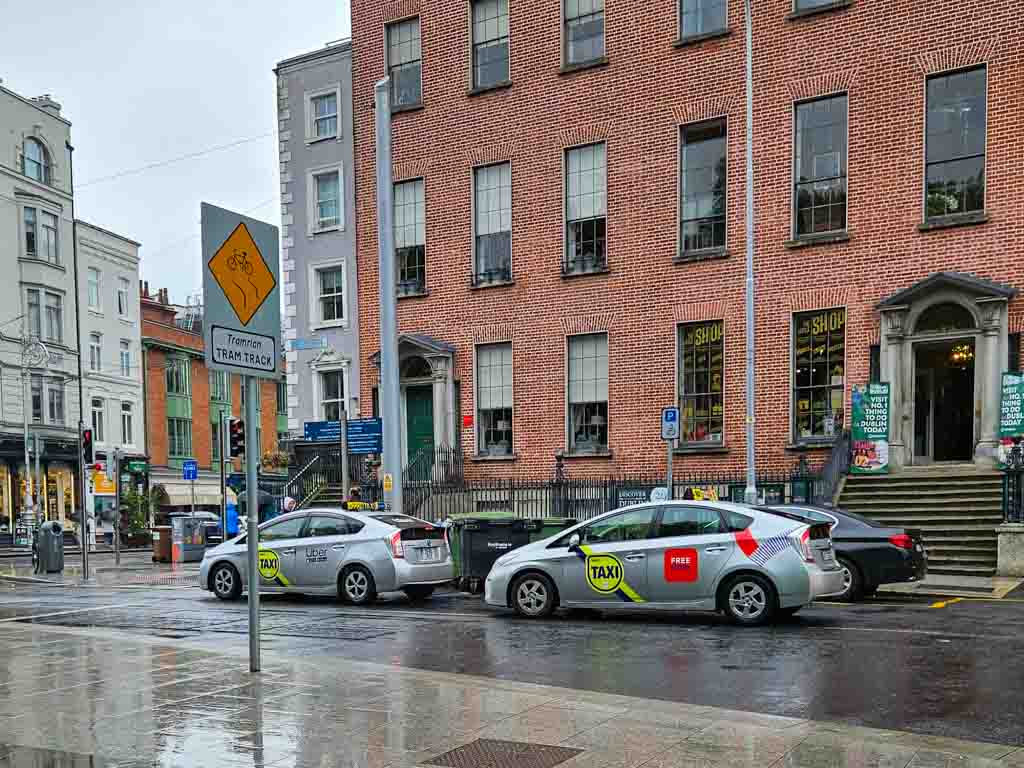
You can hail a taxi from the side of the road or hop into one at a taxi rank.
Uber does operate in Dublin, but you will be met by an ordinary taxi cab, not a private vehicle. All taxi services are regulated in Dublin so private Uber drivers cannot and do not operate in Dublin.
The best way to get a taxi in Dublin is to download the FreeNow app . It operates like the Uber app but is more widely used by taxi drivers in the city.
There are also taxi offices dotted around the city from where you can get a taxi. If you are staying in the centre of Dublin and need a taxi, ask reception at your accommodation to organise one for you, they will have details for several nearby firms.
Just be aware that taxis are not the most budget-friendly way to travel around Dublin.
They are convenient and great if you want to get back to your accommodation after a night enjoying live music and a few drinks, but during the day I recommend you stick to other forms of transport if you are looking to keep your costs down.
Ireland Itinerary – No car example
If you are wondering how to get around Ireland as a tourist and are looking for an itinerary to show you the best way to travel Ireland without a car, I’ve put one together using Dublin as the starting/end point as most travellers will arrive at Dublin Airport.
You can use this as an example or modify and change it to suit your own needs.
I am including a trip north to Belfast for those looking to explore some of Northern Ireland as well as the Republic of Ireland.
However, if you plan to stay south, you can exclude this section from your itinerary.
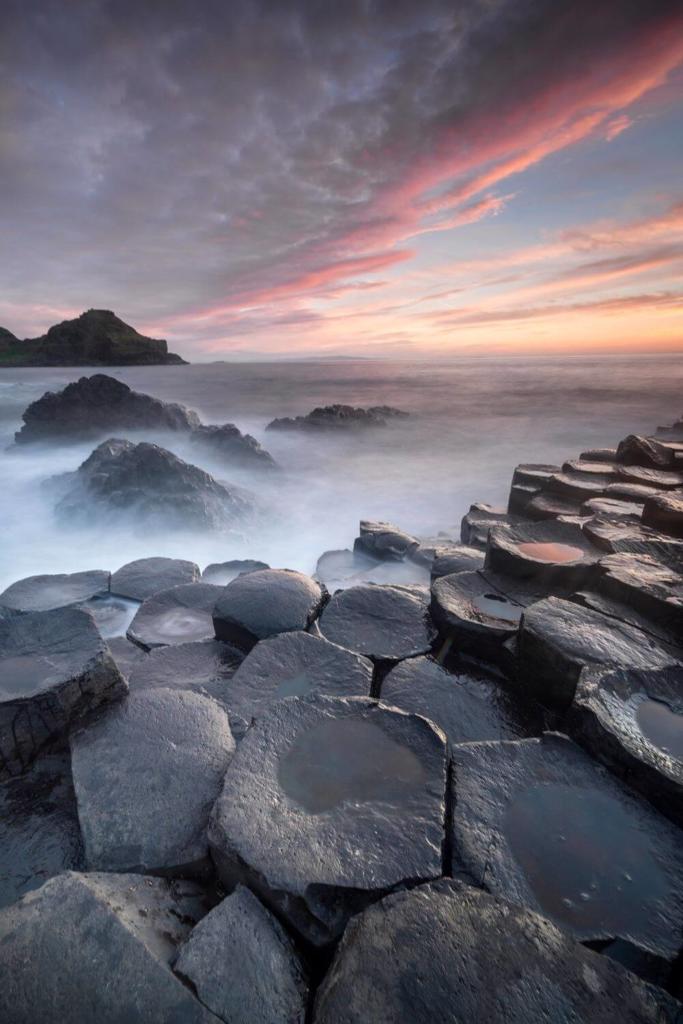
Before you head off, pick up a map of Ireland and download your trip details ahead of time.
Transport for Ireland has resources for planning your routes, timetables and more. They also have network maps for the bus services in each major city, which you can find by clicking here .
You can also use Google Maps and Rome2Rio to plan your journeys.
Make sure to do a little planning ahead of time and if you can, prebook your tickets to avail of the best fares.
You should also book your accommodation at each destination and choose somewhere that is close to the bus or train station to avoid having a long walk or taxi journey.
This itinerary will see you base yourself in main cities and towns from where you can explore the wider city or take day trips to other tourist attractions.
It is better to spend a few days in each location to avoid spending all your time on buses or trains and to give you a chance to explore.
At least two nights in each location is advisable so you break up the travelling and have at least one full day for exploring.
That said, you could spend 1 week in Ireland without a car using this example itinerary as a starting point for planning.
7 days in Ireland without a car is doable but don’t try to pack too much in or you will be exhausted from all the travelling.
Dublin Airport to Belfast
Upon arrival at Dublin Airport, get tickets and hop onto one of the direct bus services to Belfast. Stay in a central location for 3 nights, giving you one day to explore Belfast as a city, and one day to take a guided bus tour to visit the Giant’s Causeway.
One tour passes Carrickfergus Castle, stops in the quaint village of Carnlough and visits the Giant’s Causeway before ending the tour with stops at Dunluce Castle and the Dark Hedges for great photo opportunities. Click here for more information and to book this tour .
Belfast to Dublin
Return to Dublin by bus or train and stay near the city centre for 3 days to explore the city. If you get an early morning bus/train from Belfast you can be in Dublin by lunchtime and follow most of my 3-days in Dublin itinerary .
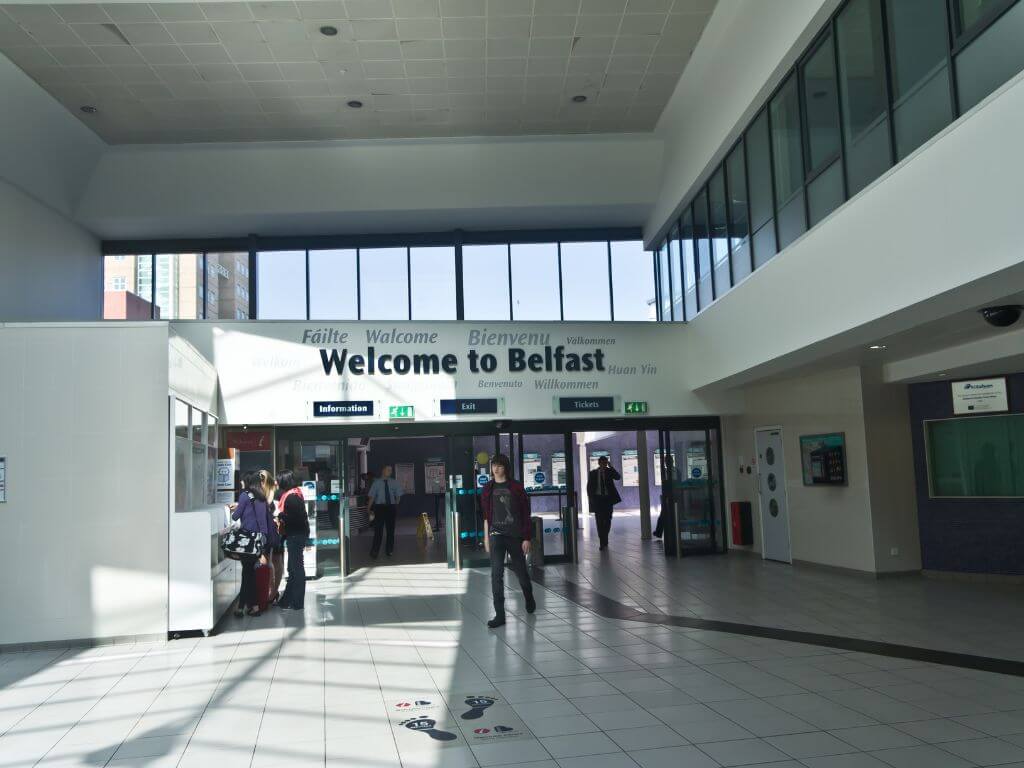
Dublin to Galway
Head west on the train and arrive at Eyre Square where you can stay for 2 or 3 nights.
It takes around 2.5 hours to travel east to west and while in Galway you can explore the city or take one of the many day trips from Galway without a car to visit the likes of the Aran Islands or the Cliffs of Moher.
Staying centrally will leave you closer to where the day trips depart but even Salthill, which is worth visiting, is walkable meaning you don’t need to use any public transport within the city.
Getting around Galway without a car is super easy, either on foot or by bus.
Galway to Limerick
From Galway take a train to Limerick City, a journey which should take around 2 hours.
Stay 1-2 nights and visit King John’s Castle, the museums and galleries, and the Milk Market.
Find a few more ideas in the Limerick City section of my guide to things to do in County Limerick .
Limerick to Killarney
From Limerick you can take the train to Killarney, changing trains at Limerick Junction and Mallow. This journey will take around two and a half hours.
There is lots to see and do around Killarney and you should plan to spend 2-3 nights there. You can wander the town, venture into the Killarney National Park or take a day trip out to the Ring of Kerry or the Dingle Peninsula.
Check out this tour from Killarney that visits the Ring of Kerry. Killarney also has a Hop on Hop off bus for exploring the city. Check the latest prices and availability here .
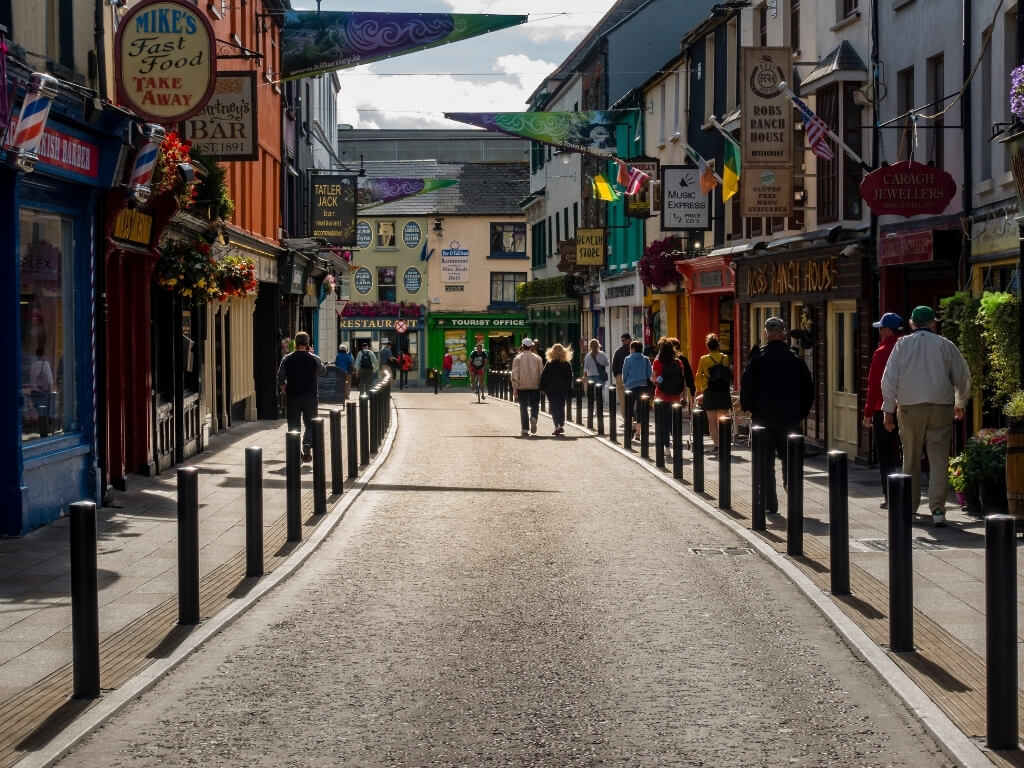
Killarney to Cork
The quickest way to get from Killarney to Cork is by bus. This journey takes around 1 hour and 40 minutes while the train can take 2 hours and 20 minutes with a change of trains at Mallow.
Spend 2-3 nights in the city and visit the likes of the Cork City Gaol, museums, churches and cathedrals and lots more. There is plenty of things to see and do in Cork .
You could also visit Blarney Castle and Cobh by guided tour from Cork. Find more details and book your tickets for this tour here .
Cork to Kilkenny
To visit Kilkenny from Cork, take a bus from the station to Kilkenny, a journey of around 2 hours and 45 minutes by Dublin Coach direct.
There are also other options that change in Cahir and other places along the way.
In Kilkenny, stay 1-2 nights and visit the castle and soak up the city on a walking tour. Click here for information and latest prices . If you stay in a central hotel or guesthouse, you will be within walking distance of the sights and attractions of the city.
Kilkenny is one of the best places to visit in ireland without a car thanks to its links with the Irish capital. It is hugely popular with visitors to Ireland whether they are travelling Ireland by car or not.
Your return journey to Dublin will be by bus which will take around 2 hours.
You can take a direct service to Dublin Airport, but you must research the timetable for this direct service and book your tickets ahead of your journey to ensure you are on the right service and will arrive at Dublin Airport in time for your flight home.
Use the trip planner from Transport for Ireland to plan your journey.
Alternatively, you could decide to spend your few days in Dublin at the end of this journey. Or do 1 to 2 nights in Dublin at either end of this itinerary.
This Ireland itinerary without a car is simply an example to show you that you can visit many of the main cities and attractions in Ireland by public transport.
A combination of bus and train journeys will get you to the main cities and towns from where you can base yourself and take short trips out to visit the harder to reach attractions.
For tours of Ireland from day trips to longer tours, you can also check out the tours on offer with the following places:
- Get Your Guide
- Viator (TripAdvisor partner)
- Wild Rover Tours
- Irish Day Tours
Frequently Asked Questions about how to travel Ireland without a car
Yes, traveling Ireland without a car is possible with some extra planning. Public transport in Ireland between cities is good and there are lots of tour options as well for tourists.
No, you do not need a car to travel around and explore Ireland. While a car has its advantages, there are also lots of advantages to visiting Ireland without a car.
If you are wondering can you travel Ireland without a car, the answer is yes. Public transportation in Ireland between the main cities is good and you can use both bus and rail options for traveling in Ireland without a car.
If you are visiting the Irish capital and wondering “How do I get around without a car?”, there are lots of options available including bus, train, tram, cycling, and taxi as outlined in this article in greater detail.
Yes, by some preparation, planning, and using public transport in Ireland, tourists can easily get around Ireland without a car.
Exploring Ireland by public transport is the easiest and best way to travel in Ireland without a car. Buses and trains between the main cities are plentiful and with a little planning, you can cover most of the country without needing to hire a car.
There are lots of ways to travel without a car in Ireland including buses, trains, trams, tours, and even cycling. You just need some extra preparation and planning.
If you are asking “How to see Ireland without a car?”, then there are lots of options so long as you stick to the main cities and towns. Public transportation links between them are great, but be aware that out-of-the-way places will be harder to reach. Visiting cities such as Dublin, Belfast, Cork, Limerick, Kilkenny, and Galway are all great options if you want to visit Ireland without driving.
The easiest way to explore Ireland is by car. However, if you really don’t want to drive in Ireland, then hiring a private driver is an option if you have the funds available.
Final thoughts on how to travel in Ireland without a car
Navigating Ireland without a car is not only feasible but also a unique adventure in itself.
This guide offers insights on how to get around Ireland without driving, emphasizing the convenience of public transport and city-based day trips.
No car? No worries!
With some savvy planning or by joining a tour, you can sidestep driving challenges and still dive deep into Ireland’s authentic charm. Some hidden gems may remain elusive, but the essence of the Emerald Isle awaits your discovery.
Read more about visiting Ireland:
- How to Travel Ireland on a Budget
- A Guide to Getting Around Ireland
- What is the Best Time to Visit Ireland?
- Things You Must Do When Visting Ireland
- What are the Best Places to Go to in Ireland?
- Reason to Visit Ireland
- 45+ Travel Tips for Ireland
- 75+ Facts About Ireland
- Things to Avoid Doing in Ireland as a Tourist
- Ireland Packing List Essentials
- What is Ireland Famous for?
- What Are the Irish Known for?
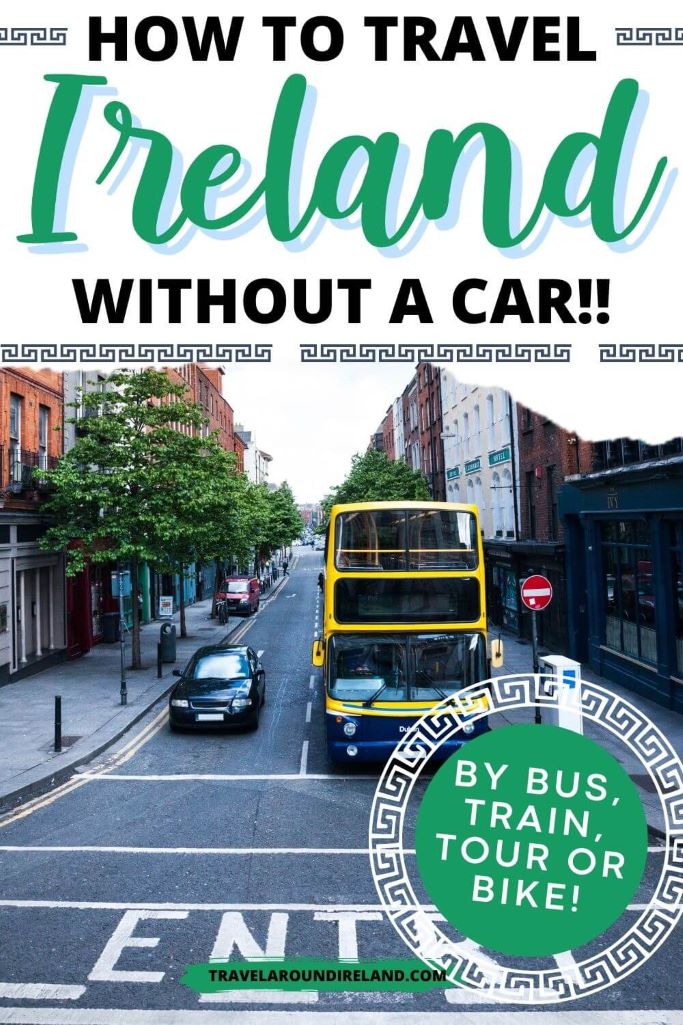
by Cath Jordan
1 thought on “how to get around ireland without a car – embrace the adventure of public transport”.
Thank you VERY MUCH for taking the time to gather all this information. I will be referring to your guidance as I plan a visit to Ireland in 2023.
Leave a comment Cancel reply
Save my name, email, and website in this browser for the next time I comment.
Privacy Overview

Traveling Ireland Without a Car: How to Get Around
Share this post!

When I was planning a trip to Ireland for ten days with friends, I was worried about getting around the country without a car. No one in my group was old enough to rent a car yet, so we need to plan a trip where we were traveling Ireland without a car.
However, getting around Ireland without a car was surprisingly easy. We were able to go to five different cities plus the Cliffs of Moher using trains, buses, and a one-day tour.
Keep reading to learn about your options for traveling to Ireland without a car and just how easy it is.
Published: March 13, 2024
Some links on this page are affiliate links , meaning I may earn a commission if you click the link or make a purchase through the link. This is at no extra cost to you. This compensation may impact how and where links are placed on this site.
✈️ Win a free 5-night stay in Aruba! Click here to enter . The giveaway ends on May 9, 2024 at 12:00AM PDT. Exponential Travels is not administering this giveaway.
Are you looking for more Ireland travel guides?
- Cork travel guide
- Dublin Safety Guide
- Ireland Packing List
- Killarney travel guide
- Should you visit Dublin?
- Should you visit Galway?
Table of Contents
All Aboard: Traveling Ireland by Train
Traveling around Ireland by train is a great way to see the country and get around comfortably. The train system connects big cities and towns, so you can travel efficiently while enjoying the scenic landscapes outside your window.
Whether you’re going from Dublin to Cork or taking a leisurely trip along the coast to Galway, the train makes sure you feel relaxed and ready to explore.
Here are some tips for enjoying train travel in Ireland:
- Plan and book your tickets ahead of time for the best prices and to make sure you have a seat, especially during busy times.
- Irish Rail has an extensive network covering city and countryside areas so that you can experience different parts of the country.
- Check out the different types of rail passes for tourists, which can save you money if you plan to take multiple trips or travel for a while.
- Irish trains are known for their friendly vibe, so take the opportunity to chat with locals and other travelers.
- Look at the schedule in advance to plan your day and make sure you don’t miss any trains.
Traveling by train in Ireland isn’t just about getting from one place to another; it’s also a chance to relax and see how beautiful Ireland is.
The Open Road, Minus the Driving: Ireland’s Bus Network
Traveling around Ireland by bus is a great way to explore the countryside without worrying about driving. My friends and I took buses to places like Blarney Castle and even from the Dublin airport to Cork.
Bus Éireann, the national bus company, covers cities and remote areas, so you can relax and enjoy the scenery on your way to your destination.
The Expressway service is efficient and comfortable for city-to-city travel, with frequent schedules, free WiFi, and onboard toilets. Citylink and GoBus are also reliable options with competitive prices.
Local buses allow you to discover hidden gems off the beaten path for a more authentic experience. Most buses have space for luggage, making them practical for travelers with more than just a backpack.
It’s essential to plan ahead since schedules and routes vary. The Transport for Ireland website and apps are helpful for real-time updates and planning. Remember that rural routes may not run as often as urban ones, so timing is important.
Bus fares are generally reasonable, with single-journey tickets and multi-trip cards available for savings. The Leap Card, a pay-as-you-go card, is accepted on various public transportation services in cities like Dublin, Cork, and Galway, offering flexibility and discounts.
Flying High: Inter-City Travel by Plane in Ireland
Traveling around Ireland by plane is a speedy option for moving between cities when time is tight. It’s a good choice if you need to cover longer distances quickly and comfortably.
For example, flying from Dublin to Cork only takes about 45 minutes, much faster than the three-hour train ride. There are also flights to smaller regional airports, giving you access to more remote and scenic areas.
Airlines like Aer Lingus and Ryanair offer flights between major cities. It’s smart to book tickets early for better prices and to make sure you get a seat on the flight you want.
Remember that while flying is fast, you’ll need to consider the time it takes to get to and from airports, as well as check-in and security.
Flying can be convenient, but it’s important to remember that it can impact the environment more than other ways of traveling. So, it’s best to fly only when it significantly reduces travel time or when other options aren’t available.
With proper planning, flying can fit into your travel plans in Ireland, offering efficiency and a unique view of the country from above.
Group Tours: The Easiest Way for Traveling Ireland Without a Car
Group tours are a great way to explore Ireland without worrying about driving. These tours are led by guides who share stories about Ireland’s history, culture, and landscapes.
Group tours cover various interests, from city walks in Dublin to visits to remote coastal areas. They’re designed to make the most of your time, showing you many attractions and providing insights you might miss on your own.
You can find tours for a single day or longer, visiting famous places like the Cliffs of Moher or the Ring of Kerry. These tours often include transportation, entrance fees, and sometimes meals.
Booking ahead is smart, especially during busy times, to make sure you get a spot on the tours you want. Look for tours with small groups, good inclusions, and reputable companies for the best experience.
Viator is an excellent website for booking tours in Ireland, offering a wide range of hassle-free options to explore the country.
Here are some great tours in Ireland if you are traveling without a car! There are hundreds of others you can book on Viator too.
Traveling to Ireland Without a Car is Easy!
Exploring Ireland without a car won’t stop you from seeing everything the country offers.
Whether you choose to explore by train, plane, or bus or join guided tours for an effortless adventure, traveling without a car in Ireland promises to give you a memorable trip.
Ready to plan your trip to Ireland? Here are some of my favorite planning resources:
- Top travel credit cards
- SafetyWing for travel insurance
- Booking.com for a huge variety of hotels, vacation rentals, flights, and more
- HostelWorld for the best hostels around the world
- Vrbo for vacation homes and rentals
- FareDrop and Going for cheap flight alerts
- Skyscanner for the cheapest flights
- Amazon for travel and packing must-haves
- Priority Pass for airport lounge access
- TripAdvisor for the top hotels around the world
Click for the top hotel deals!
Traveling Ireland Without a Car FAQs
What is the most efficient way to travel around ireland without a car.
The most efficient way to travel to Ireland without a car depends on your destination and preferences. Trains are excellent for fast, scenic journeys between major cities, while buses offer a more extensive network reaching rural areas. For the fastest city-to-city travel, consider taking domestic flights. Group tours, however, can offer the most hassle-free experience by handling all the logistics for you.
Can I visit Ireland’s attractions easily via public transport?
Yes, many of Ireland’s attractions are accessible via public transport. Ireland’s train and bus networks are extensive and can bring you close to the most popular sites. For more remote locations, local shuttle services or group tours can bridge the gap between public transport stops and the attractions.
Are there any travel passes that can help save money on transport?
There are several travel passes available that can help you save money while traveling around Ireland without a car. Rail passes like the Irish Rail pass for train travel, and bus passes for various coach services can provide unlimited travel for a set period. These passes can be cost-effective if you plan to travel frequently during your stay.
Share this:
Privacy overview.
Privacy Policy - Terms and Conditions
Can You Travel Through Ireland Without a Car?
:max_bytes(150000):strip_icc():format(webp)/reflectivemood-56a3c66b5f9b58b7d0d3ad64.png)
Bernd Biege
Can you manage a holiday in Ireland by just using public transport? You can, but beware: The best way to travel around Ireland is by car—no contest.
What if a visitor does not want or simply cannot use a car? There are alternatives available, none of them perfect, yet a combination of road and rail travel is an interesting option.
Traveling by Bus
By far, the most sensible, budget-friendly and convenient way to travel Ireland without a rental car is using the bus, in Dublin and nationwide. Cross country services are numerous and a variety of ticket options, though at times confusing, can make bus travel very economical. Connections between the major towns are generally fast, frequent, and reliable.
Local services tend to be even patchier and require some planning if used for touring. Even major attractions might not get serviced more than once or twice a day. This is the curse on the tourism industry being geared towards independent car users.
If you plan on visiting several attractions in any area, enquire about organized tours at your hotel or local tourist office. In most tourist areas, these services are provided by Bus Éireann or local companies.
Getting There by Railway
While it is not impossible to travel around Ireland by rail, the choice of places to visit will be limited. Generally, the railway will bring you to a central destination, and from there you will have to rely on other modes of transport. More than likely, buses. Add the fact that Irish railways are not known for cheap fares or luxury, and bus travel becomes a sensible option in many cases.
But on longer journeys the train may be better value for money—travel times are usually shorter than on a bus, there are toilets on board, and you can stretch your legs by walking about a bit.
The main routes out of Dublin (Connolly and Heuston stations) are:
- Connolly to Belfast Central
- Connolly to Sligo
- Heuston to Ballina (via Kildare, Athlone and Manulla Junction)
- Heuston to Westport (via Kildare, Athlone and Manulla Junction)
- Heuston to Galway (via Kildare and Athlone)
- Heuston to Limerick (various routes)
- Heuston to Killarney and Tralee (via Mallow)
- Heuston to Cork (via Mallow)
- Heuston to Waterford (via Kildare and Kilkenny)
- Connolly to Wexford and Rosslare
The main routes out of Belfast are:
- Belfast to Dublin Connolly
- Belfast to Bangor
- Belfast to Larne
- Belfast to Portrush (via Coleraine)
- Belfast to Derry (via Coleraine)
The main cross-country routes are:
- Limerick to Ballybrophy (via Nenagh)
- Cork to Cobh
- Tipperary to Waterford
Note that there are also organized rail tours from Dublin to main Irish attractions available, these sometimes include accommodation and can be an alternative to a self-guided tour. If you are a fan of trains, be sure to check out our full guide to Irish train museums .
Bicycling Options
Travelling Ireland on a bicycle is an interesting proposition and was the preferred mode of transport for touring students in the 1970s and 1980s. Then the "Celtic Tiger" roared, and "no-frills-airlines" brought a massive influx of visitors. Suddenly road traffic exploded, making riding a bicycle on many roads definitely an adventure sport.
If you stick to the main roads, you will have to share these with enthusiastic (but not necessarily competent) other drivers and (even in the remotest areas) 18-wheelers. If you leave the main roads, you will find winding lanes with high hedges on both sides and sizeable potholes to navigate. And wherever you ride, you will have to face strong winds, frequent rain, and some long and steep inclines.
Should you still be keen on exploring Ireland by bicycle, here are some helpful hints:
- Always wear hi-viz clothing with reflective stripes.
- Never ride without reflectors and working lights between dusk and dawn.
- Never ride side by side with another bicyclist on winding roads—oncoming traffic cutting corners is a common hazard.
- Never take your eyes off the road for potholes, gravel, and other common hazards. Stop if you want to admire the scenery.
- Make sure that you have at least one change of clothing, and your valuables stay dry even in torrential or prolonged rain.
Gypsy Caravans
Gypsy Caravans were long touted as the "typical Irish holiday" (though most Irish people would not agree) and acquired an air of ethnic eco-tourism. Generally, a unique way to see a small part of the island. Temporary "gypsies" will have to stick to a certain area and a selection of roads. Consider this mode of transport only if you want to spend lots of quality time with your traveling companions!
Hiking or walking all over Ireland requires loads of time and stamina. It is not really an option unless you are planning a very long holiday.
Walking the way-marked trails of Ireland, however, is an option—several routes have been laid out and made accessible to the determined rambler. A good idea if you are used to hillwalking and have the time to go a considerable distance.
Hitch-hiking
While hitch-hiking should not be considered especially dangerous in Ireland, the usual precautions should be taken. But even the most optimistic hitch-hiker will soon find that the reluctance to pick-up strangers has increased in Irish drivers.
Your Trip to Ireland: The Complete Guide
Dublin: A Walking Tour of the Main Sights
Ireland With No Frills
Getting Around Britain - A Guide to Transportation Options
Getting Around Belfast: Guide to Public Transportation
How to Spend 5 Days in Ireland
How to Travel from Dublin to Paris by Train, Bus, Car, and Plane
Dublin Guide: Planning Your Trip
How to Visit Dublin on a Budget
Bargain Accommodation in Ireland
How to Visit Los Angeles Without a Car
20 Best Things to Do in Dublin
Dublin in 1 Day Itinerary
7 Day Trips to Take From Dublin
A Guide to Airports in Ireland
10 Questions to Ask Yourself Before You Plan Your UK Trip
Solo Traveler
Solo travel tips, destinations, stories... the source for those who travel alone.
Lush and Magical Ireland Without a Car
January 31, 2022 by Janice Waugh

Lush and green. Cozy and charming. To describe Ireland is to describe a place you want to be. For those who are not keen on driving on the left side of the road, here's how to explore Ireland without a car.
My concern about driving on the left is not for when I first arrive. Concentration will ensure my safety. It's not for the time when I have really adjusted to the left. That would eventually happen if I gave it a chance. It is that in-between time that frightens me. The time when I've gained confidence, forget to concentrate, need to make a left turn, and instinctively end up on the right-hand side of the road. I anticipate moments of panic, of not knowing which is the correct side to be on. This is why I have always traveled Ireland, the UK, and Australia by bus and train.
Based on a reader request, here's how to travel Ireland without a car.

Table of Contents
The Lay of the Land: Ireland and Northern Ireland
Ireland is one Island that contains two countries. The Republic of Ireland in the south is known simply as Ireland. It occupies the majority of the island. Northern Ireland is part of the United Kingdom.
Dublin, the capital of Ireland, is located on the east side, about halfway up from south to north. It is famous for its literary history as James Joyce, Oscar Wilde, W.B. Yeats, Roddy Doyle, and other writers of note were born and/or lived there. It's also known for its beer as it is the home of Guinness. Trinity University, and especially its library, is famous. It's a city of deep history and fabulous cuisine.
Belfast, again located on the east side of the island, is the capital of Northern Ireland. Belfast has been called the literary capital of the United Kingdom. Its history runs deep as well but it is the more recent history of “the troubles” that is most evident to a traveler. Black Cab Tours, the murals on the Peace Walls, and other public installations tell the story. Again, it has an exceptional food scene and is known for great pubs.
All of Ireland, north and south, is known for rich, green landscapes, dramatic coastlines, and the friendliness of the people. They are famous for pubs, great music, and good craic (“crack”) which is basically fun, intelligent, and witty conversation.
Here are some posts on specific parts of Ireland and Northern Ireland you might enjoy.
- Solo Travel Northern Ireland: Tips for Belfast and Beyond
- Exploring Ancient Ireland: Loughcrew, Hill of Tara & 6 More Highlights
- Dublin, Cork & Galway: Exploring Ireland Solo
- Of Gobbins and Giants: Northern Ireland’s Causeway Coastal Route
- Solo Travel Destination: Lisdoonvarna, Ireland
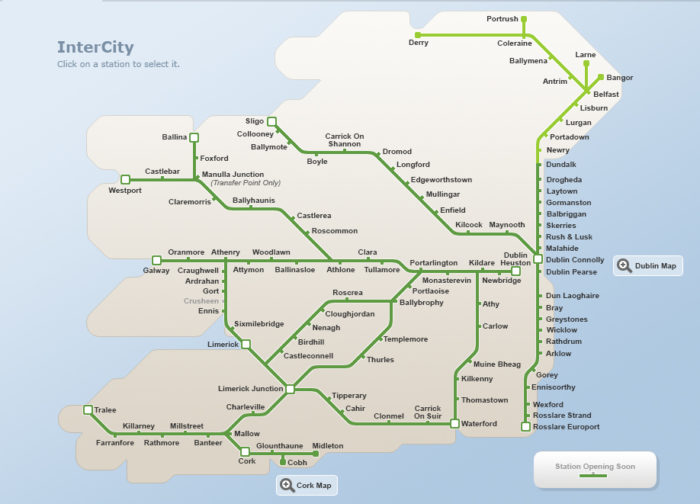
How to Travel Ireland Without a Car
You can get just about anywhere in Ireland and Northern Ireland by bus or train. The train network, as you can see above, is quite good; however, its primary purpose is to serve the cities. The bus network gets you into the villages and rural areas which, for many, is the reason they go to Ireland.
While the two countries can feel like one when you're there, they are separate. Ticket booking is done on different sites. The trains in Ireland are run by Iarnród Éireann Rail , Irish Rail. Buses are run by Bus Eireann . In Northern Ireland, Translink is your point of purchase for both buses and trains.
As with most travel, booking in advance will save you money. Bus travel is less expensive than train travel. If you're traveling between the larger cities, you will likely have a number of schedule options each day, though fewer on Sundays and holidays. If you're traveling on the less popular lines, frequency can become an issue.
There are, of course, numerous guided tours you can take to explore Ireland without a car. These have the advantage of an informative guide and the social experience of other travelers. However, if you want to go independently, here's what you need to know.

Things to Know about Train and Bus Travel in Ireland
Combining train and bus travel will take you just about anywhere in Ireland without a car.
- Travel between Dublin and Belfast . It takes about two hours to travel between Dublin Connolly station and Belfast Lanyon Place (formerly known as Belfast Central).
- Discounts between Dublin and Belfast . If you anticipate some back-and-forth between Dublin and Belfast, you can save money by buying Carnet tickets. It's not a pass. They are books of prepaid tickets, so they can be shared.
- Dublin Connolly is the station for north/south travel and trains headed for Belfast, Sligo, Wicklow, Wexford, Dun Laoghaire, and Rosslare.
- Heuston station is the terminus for trains heading west & southwest from Dublin to Cork, Limerick, Galway, Kilkenny, Waterford, Tralee, Westport, and Ballina.
- Trekker 4 Day 110 Euros for consecutive days of unlimited travel on all Iarnród Éireann services in the Republic of Ireland from the date of issue on the ticket
- Explorer 5 days of unlimited travel out of 15 consecutive days on all Iarnród Éireann services in the Republic of Ireland for only €160 for an Adult
- Leap Visitor Card 1-day, 3-day, or 7-day cards. These have more complicated conditions.
- Eurail Your Eurail pass works in Ireland.
- Traveling with a bike. Here's bicycle travel information from Iarnród Éireann.

Things to Know about Train and Bus Travel in Northern Ireland
- North America to Dublin . There are a few seasonal, direct flights to Belfast but, year-round, most direct flights from North America go into Dublin.
- Dublin Airport to Belfast . While there is a train between Dublin and Belfast, the most efficient way to get to Belfast from Dublin airport is by bus.
- Belfast to Derry. The train takes just over two hours. A seat on the right side when going north to Derry is recommended for the views. You'll be passing the Giant's Causeway.
- Belfast to Giant's Causeway . This trip is worth it, however, it requires a train to Colraine and then a bus to the Giant's Causeway.
- iLink Card . iLink is a smartcard that you can top up with daily, weekly, or monthly travel options. From the Translink site: “If you travel by bus and train within specified zones, using iLink could be better value for money than buying separate bus and train tickets. Check out the prices to see if iLink suits you.”
- 3 Day Flexi Ticket for trains. This is an odd one but, depending on your plans, it could be useful. It offers unlimited travel on any three days out of seven days between two chosen rail stations within Northern Ireland.
- Special offers . Always check Translink for special offers .
- Students over the age of 24 . If you're a full time student over the age of 24 you can get a 24 Plus Travelcard and save.
- Goldline Goldline buses are express buses for traveling between cities that are operated by Ulsterbus.
- Ulsterbus . They have the Goldline service but go beyond the cities with their regular service. They have a journey planner to help you sort out your travel plans.
- Rambler Day Ticket . This works for Sundays only. The price is £9.50. The Bus Rambler Day Ticket gives you a hop-on, hop-off kind of service that allows you to explore Northern Ireland’s most spectacular scenic areas with unlimited travel on Ulsterbus, Goldline, and Metro. In past years, they have extended the service to all days during the summer.

Readers Top Tips for Travel in Ireland without a Car
As we often do, we went to the Solo Travel Society on Facebook to get their suggestions for for traveling Ireland without a car.
- Kate recommends Connemara. It's an easy bus ride from Clifden to the Inishbofin ferry in Cleggan. You can also grab the bus to the great town of Westport or grab a taxi tour to Achill Island. From Westport, you might consider Donegal town. I took a wonderful day tour from there to Slieve League and Glenveigh national park.
- Alma recommends Sligo . There are wonderful beaches where the Atlantic waves are huge but there will be no tourists. Visit Lough Gill, Benbulben, Yeats' grave. There's a great bus service from the west to Dublin so I'd explore the city and enjoy the craic before leaving.
- Grace recommends Athlone . In the heart of Ireland is the world’s oldest pub—Sean’s Bar. You can practically hop from one city to another by bus.
- Barb recommends B&Bs . The rail system is wonderful. When you arrive at the town you plan to visit, go into the tourist information center and tell them you need a bed and breakfast. They'll accommodate your budget and all those with the shamrock sign are great and government approved.
- Tom recommends warm clothes . Take cold weather clothing. When I was there in June many years ago, temperatures were quite frigid.
- Gail recommends hostels for day tours . Look for day tours. Sometimes hostels set up their own tours.
- Susan recommends Inishbofin . Take the ferry to Inishbofin and spend a few days there. It's a small, beautiful, not very developed island.
- Dianne recommends buying tickets online . Book a train ticket online at far less cost than buying at the station. A lovely trip is Dublin (Heuston Station) to Galway, 2.5 hours; day trip from Eye Square on the bus to Cliffs of Moher, the Burren, and a lunch in Doolin, County Clare. Galway is a stunning city with lots to see and do.
- Catherine recommends Belfast . Definitely go to Belfast. Easy to get to on public transportation.
- Lynda recommends taking the bus . I went to Clifton, Donegal, and Lisdoonvarna, only using buses on a budget. It's totally possible, just plan ahead and research. You can download bus timetables and routes and even purchase tickets online for special deals!
You may also want to read The Spectacular Isle of Skye Without a Car .
Sharing is caring!
Publisher Janice: info @ solotravelerworld.com
Editor Tracey: tracey @ solotravelerworld.com
Sales Simon: simon @ solotravelerworld.com
Get Solo Travel News & Deals
- Create Your Advertiser Account
- Login to Your Advertiser Account
- Solo Travel Statistics
- Media & Speaking
- Privacy Policy & Disclosure

The content of Solo Traveler and any resources published by Solo Traveler are meant for entertainment and inspiration only. Please note that while we have advertising clients promoting destinations, products, services, trips and tours on Solo Traveler and that we endeavour to only work with companies in which we have confidence, we are not responsible for the delivery or quality of their products or services. Every person and every travel situation is different. Your safety, satisfaction and fun traveling solo are your responsibility alone and not that of Solo Traveler, its publisher, editor and/or writers.
PRIVACY POLICY & DISCLOSURE: In accordance with FTC guidelines, I disclose that I may be compensated if consumers choose to utilize links located throughout the content on this site. Additionally, some posts might be sponsored to support this site. Please do the appropriate research before participating in any third party offers. All opinions are my own. Please read our full Privacy Policy here.
Irish Graves: Ireland Tours & Cultural History
No products in the cart.

Ultimate Guide: How to Get Around Ireland Without a Car
Setting out for an enchanting escapade in Ireland but feeling a bit anxious about navigating the land without your own set of wheels ? Totally understandable – I’ve been right there with you in those shoes.
Fortunately, as I found out, trekking across Ireland without a car is not just possible; it’s surprisingly convenient and savvy, especially with the country’s extensive bus network at our disposal.
In this guide, we’ll dive into various transport options and sprinkle some pro tips throughout to ensure your trip across the Emerald Isle is smooth sailing and oh-so-memorable. Buckle up! You’re about to embark on an amazing journey that proves sometimes leaving the driving to someone else can lead to the best discoveries .
Table of Contents
Key Takeaways
- You can travel across Ireland using buses, trains, and ferries which connect big cities to small towns. These options are budget-friendly and let you meet locals.
- Tour buses offer guided trips to places like Cliffs of Moher without the worry of driving. Cycling is also great for seeing the countryside.
- Staying in walkable areas near attractions helps you enjoy Irish culture on foot. Using apps and maps makes it easy to get around.
- Purchasing a transportation pass like the Leap Visitor Card or Emerald Card saves money on public transport travels.
- Dublin, Galway, Derry~Londonderry, Belturbet, and Cliffs of Moher are superb destinations that you can visit without needing a car.
Transportation Options in Ireland
When traveling in Ireland without a car, there are several transportation options available. From the extensive public transportation system of buses, trains, and ferries to renting a car or joining tour buses, there are plenty of ways to get around the country.
You can also explore cycling options or take advantage of walking tours for a more immersive experience.
Public transportation (bus, train, and ferry)
I travel around Ireland easily by hopping on buses, trains, and ferries . Across the country, these options connect me to big cities and small towns. Buses are a lifeline here; they take me anywhere from Dublin’s heart to remote corners of the countryside.
The bus network is easy on my wallet and helps me meet locals.
Train journeys show off Ireland’s green scenery as I zip between major spots like Cork, Galway, and Belfast . For an island adventure or crossing rivers without a bridge , I jump aboard a ferry.
I love watching the shoreline shrink behind me while heading out to islands like Aran or Valentia.
When exploring Ireland, consider alternatives to car rentals. Public transportation is the most budget-friendly and convenient way to travel in both Dublin and nationwide. Cycling is also an ideal option for exploring the Irish landscape, with manageable distances and accommodations offering bike storage and luggage facilities.
In major cities like Dublin, guided tours are readily available, making it easier to travel without a car.
Now let’s talk about the benefits of exploring Ireland without a car .
Tour buses are a convenient and popular way for travelers to see the sights in Ireland without needing a car. These tours offer guided experiences to major attractions such as the Cliffs of Moher , Newgrange, and the Hill of Tara, making it easy to explore without worrying about driving or navigating.
With options available from major cities like Dublin and Galway, tour buses provide a hassle-free way to discover Ireland’s beauty while learning from knowledgeable guides .
When visiting Ireland, consider joining a tour bus excursion as an efficient way to visit key locations and immerse yourself in the local culture. Whether you’re interested in historical sites or breathtaking landscapes, these guided tours cater to various interests and allow you to experience the best of Ireland’s must-see destinations without needing your own transport.
Cycling options
Cycling in Ireland offers an exhilarating way to explore the stunning landscapes and picturesque towns. Many accommodations provide bike storage and luggage facilities , making it convenient for travelers to incorporate cycling into their itinerary.
The manageable distances make it feasible to cover various attractions by bike, providing a unique and eco-friendly way to experience the charm of Ireland’s countryside.
With comprehensive information on travel options like public transportation, this article serves as a resourceful guide for tourists seeking alternatives to car rentals. Cyclists can look forward to breathtaking views and a memorable journey through Ireland’s enchanting scenery.
Walking tours
Walking tours are an excellent way to explore Ireland without a car, allowing you to immerse yourself in the local culture and history while enjoying the beautiful landscapes on foot.
In major cities like Dublin and Galway , guided walking tours offer insight into the country’s rich heritage, with knowledgeable guides leading you through historical sites , charming neighborhoods, and iconic landmarks.
You can easily visit attractions such as Trinity College, Temple Bar , and St. Stephen’s Green Park on foot, taking in the vibrant atmosphere of these cities while learning about their fascinating stories and legends.
In addition to city tours, rural walking excursions provide an opportunity to experience Ireland’s stunning countryside firsthand. The Cliffs of Moher Coastal Walk is a must-visit for nature enthusiasts seeking breathtaking views of the Atlantic Ocean and rugged cliffs.
Benefits of Exploring Ireland Without a Car
Exploring Ireland without a car has many benefits, including being eco-friendly, cost-effective, and providing a deeper cultural immersion experience. You’ll find that traveling by public transportation or other non-driving options opens up unique opportunities to see the country in a new way.
Eco-friendly
Exploring Ireland without a car is eco-friendly as it reduces carbon emissions and minimizes the impact on the environment. Using public transportation, cycling, and walking tours contribute to sustainable travel practices, supporting the preservation of Ireland’s natural beauty for future generations.
Additionally, opting for non-driving options aligns with responsible tourism values, promoting a more sustainable approach to experiencing the country’s stunning landscapes and cultural treasures.
Traveling in Ireland without a car is an eco-conscious choice that reduces reliance on fossil fuels and supports efforts to combat climate change . It allows me to explore this beautiful destination while embracing environmentally friendly modes of transportation such as buses, trains, and bicycles.
Cost-effective
Exploring Ireland without a car is not only eco-friendly but also very cost-effective . Using public transportation such as buses and trains provides an affordable way to travel around the country, especially when purchasing a transportation pass for added savings.
Guided tours and day trips from major cities like Dublin offer budget-friendly options to explore the Irish landscape without breaking the bank.
Additionally, cycling through manageable distances in Ireland allows travelers to experience the stunning scenery while keeping costs down . Major cities also provide a range of free or low-cost walking tours , offering cultural immersion without spending extra money on transportation.
Cultural immersion
Immersing myself in the local culture of Ireland without a car allowed me to connect with the people and traditions on a deeper level. Riding the public buses, mingling with other passengers, and exploring hidden gems off the beaten path provided an authentic insight into Irish life.
Engaging in walking tours, visiting historic sites , and chatting with locals at pubs enriched my experience by immersing me in the vibrant Irish culture.
Participating in traditional events like music festivals, food markets, and community gatherings exposed me to the rich heritage of Ireland. Whether wandering through bustling cities or strolling along picturesque countryside roads, I found that traveling without a car enhanced my cultural immersion by offering unparalleled opportunities to interact with locals and embrace the unique spirit of Ireland.
Tips for Navigating Ireland Without a Car
Plan your itinerary to maximize time and minimize transportation needs. Purchase a transportation pass for unlimited travel on buses, trains, and ferries. Utilize guided tours to explore popular tourist destinations hassle-free.
Stay in walkable areas to easily access nearby attractions. Make use of apps and maps for navigation assistance while exploring Ireland without a car.
Plan your itinerary
To plan your itinerary for exploring Ireland without a car, consider starting in Killarney, Southwest Ireland. Diverse sightseeing and public transportation options make it an ideal base for travelers.
Utilize guided tours and day trips from major cities like Dublin to explore attractions like Newgrange, Glendalough, Monasterboice, and the Hill of Tara. Consider purchasing a transportation pass to ease travel between cities and tourist destinations.
Consider staying in walkable areas or near public transportation hubs for easier access to attractions. Major cities like Dublin provide ample opportunities for day trips without a rental car.
Purchase a transportation pass
To explore Ireland without a car, it’s essential to purchase a transportation pass for convenient and cost-effective travel. With options like the Leap Visitor Card in Dublin or the Emerald Card for nationwide bus travel , you can access buses, trams, and trains hassle-free.
This allows unlimited rides within a specified time frame, making it easy to hop on and off public transport while exploring Ireland’s captivating destinations such as Galway, Derry~Londonderry, and more.
When traveling around Ireland without a car, purchasing a transportation pass is key for seamless navigation across cities and scenic landscapes. With multiple-day passes available for tourists’ convenience and value, it’s the ideal solution for stress-free exploration without worrying about individual ticket purchases at every stop or attraction.
Utilize guided tours
Guided tours are a fantastic way to explore Ireland without a car. In major cities like Dublin and Galway, there are plentiful opportunities for guided excursions, making it convenient to travel without the hassle of driving.
Day trips to iconic sites such as Newgrange, Glendalough, Monasterboice, and the Hill of Tara can be easily arranged through guided tours , providing an enriching experience while navigating around Ireland’s top attractions.
Exploring Ireland with guided tours allows travelers to immerse themselves in local culture and history . With organized itineraries and knowledgeable guides, tourists can efficiently visit key destinations and make the most out of their trip without worrying about transportation logistics or navigating unfamiliar roads.
Stay in walkable areas
When utilizing guided tours, I recommend staying in walkable areas to make the most of your Ireland experience. Major cities like Dublin and Galway offer a variety of accommodations within walking distance of attractions, restaurants , and public transportation hubs.
This allows for easy exploration on foot, providing convenient access to picturesque streets, historic sites, and local culture without the need for a car. Additionally, opting for centrally located lodgings ensures that you can immerse yourself in the vibrant Irish atmosphere while having the freedom to wander at your own pace.
Ireland’s charming villages also offer walkable accommodations close to amenities and points of interest. Whether it’s strolling along cobblestone streets or enjoying scenic coastal paths, choosing lodging in pedestrian-friendly areas enhances the authenticity of your travel experience while allowing you to discover hidden gems off the beaten path.
Make use of apps and maps
I rely on travel apps and maps to navigate Ireland efficiently, discovering nearby landmarks, public transportation schedules , and walking routes . These tools are convenient for planning day trips from major cities like Dublin or Galway without the need for a car.
My favorite app allows me to access offline maps , which is especially useful in remote areas where internet coverage may be limited. With these resources at my fingertips, exploring Ireland without a car becomes an organized and enjoyable experience.
Must-Visit Destinations in Ireland Without a Car
– Dublin, the lively capital city with its rich history and vibrant culture.
– Galway, a charming coastal city known for its music and arts scene.
– Derry~Londonderry, a historic walled city with a fascinating blend of Irish and British influences.
– Belturbet, a picturesque village in County Cavan perfect for fishing and exploring the countryside.
– Cliffs of Moher, an iconic natural wonder offering stunning views of the Atlantic coastline.
Dublin is a vibrant city with excellent public transportation , making it easy to get around without a car. The extensive bus network covers the city and its outskirts, providing convenient access to major attractions such as Trinity College, Dublin Castle , and the Guinness Storehouse.
Additionally, the DART train service offers efficient travel along the coast , connecting travelers to coastal towns like Howth and Bray for enjoyable day trips. With my transportation pass in hand, I effortlessly navigated this iconic city – soaking up its rich history and lively atmosphere without ever needing a car.
Would you like some more information?
Continuing from Dublin, traveling to Galway without a car is hassle-free due to the well-connected public transportation system . Galway offers vibrant street performances , traditional Irish music, and stunning landscapes showcasing its rich culture.
The walking tours around Galway’s medieval streets and the charming Claddagh area provide an immersive experience into the city’s history and folklore. With frequent bus services available from Dublin and other major cities, exploring attractions such as Eyre Square, Spanish Arch, and the scenic Salthill Promenade is easily accessible for travelers looking to enjoy Ireland without relying on a rental car.
Derry~Londonderry
Arriving in Derry~Londonderry, I found it to be a fascinating blend of history and modern-day vibrancy. As a traveler exploring Ireland without a car, this city’s compact size made it perfect for walking tours and sightseeing .
The iconic 17th-century defensive walls provide an excellent vantage point to take in the scenic views across the River Foyle while soaking up the rich cultural heritage . Derry~Londonderry’s central location also made it an ideal starting point for day trips using public transportation, offering access to nearby attractions like the historic Walled City, Tower Museum, and Guildhall.
Delving into its captivating past coupled with bustling city life provided an authentic Irish experience that was easily accessible without relying on driving.
Belturbet is a charming town in County Cavan, offering a peaceful escape from the hustle and bustle of larger cities. The idyllic waterways are perfect for tranquil boat trips, allowing you to soak up the natural beauty at your own pace.
Additionally, fishing enthusiasts will be delighted by the abundance of angling opportunities on offer. With its picturesque setting and relaxed atmosphere, Belturbet provides a unique and refreshing angle to explore Ireland’s lesser-explored treasures.
Whether you’re interested in historical sites or outdoor adventures , Belturbet has something for everyone. The stunning ruins of Castle Saunderson provide a glimpse into Ireland’s rich history while offering breathtaking views of the surrounding countryside.
Cliffs of Moher
Visiting the Cliffs of Moher is a must when exploring Ireland without a car. I highly recommend taking a bus tour or utilizing public transportation to reach this iconic natural wonder .
The breathtaking views and sheer majesty of the cliffs make for an unforgettable experience, and there are plenty of opportunities for guided tours and excursions from nearby towns like Galway .
Now let’s dive into essential tips for navigating Ireland without a car.
In conclusion, navigating Ireland without a car is practical and cost-effective . The public transportation system provides ample opportunities for travelers to explore the country.
Cycling and guided tours offer eco-friendly options , making it easy to get around without a vehicle.
Expert Analysis:
Renowned travel expert Sarah Thompson, an accomplished author and experienced traveler with a focus on sustainable tourism, emphasizes the effectiveness of exploring Ireland without a car.
Her expertise in alternative travel options underscores the viability of using public transportation and guided tours as highlighted in this guide.
Safety & Transparency:
Thompson stresses the ethical considerations of promoting eco-friendly travel alternatives while ensuring transparent information about certifications and regulatory compliance for transport services featured in this guide.
Integration into Everyday Life:
To make the most of this guide, Thompson suggests planning day trips from major cities and utilizing comprehensive train networks for seamless exploration without a car .
Balanced Evaluation – Pros & Cons:
While highlighting the convenience and eco-friendliness emphasized in this guide, Thompson also mentions potential challenges such as limited accessibility to remote areas through public transport but commends its value for urban-based travelers.
Final Verdict or Recommendation:
Sarah Thompson enthusiastically endorses the “Ultimate Guide: How to Get Around Ireland Without a Car,” emphasizing its worthiness for tourists looking to explore Ireland sustainably and independently.

Hello! I’m Ryan Nelson, the heart and soul behind IrishGraves.com. Born in New York City with a rich blend of Irish and Scottish heritage, I’ve always felt a deep pull towards exploring my roots and understanding the cultures that shape me. This passion ignited my journey to Ireland, a land of breathtaking landscapes, profound history, and vibrant culture, leading to the creation of IrishGraves.com.
Similar Posts

Exploring the Triskelion Meaning: Origins and Symbolism
Deciphering the deeper meaning behind ancient symbols can often leave you scratching your head in wonder. That sense of curiosity…

Was Saint Patrick Irish? Uncovering the Truth about Ireland’s Patron Saint
Saint Patrick, known as the patron saint of Ireland, was actually a Roman citizen from fifth-century Britain. His real name…

Exploring the Symbolism of the Celtic Mother and Child Knot
[Revised Content] Like many others, I’ve always had a keen interest in tracing the roots of my heritage, especially when…

Uncovering the May the Road Rise Up to Meet You Meaning in Irish Blessings
The Irish saying “May the Road Rise Up to Meet You” is a famous blessing that people have loved for…

Discover the Largest St. Patrick’s Day Parades in the United States
Choosing the perfect St. Patrick’s Day parade can feel like searching for a four-leaf clover in an endless field –…

What to Do in Galway Ireland: 10 Best Activities for an Unforgettable Experience
Navigating the endless attractions of Galway, Ireland can feel like a delightful puzzle you’re itching to solve. You’re probably seeking…

How to Travel Around Ireland Without a Car
Are you itching to explore the breathtaking landscapes and charming towns of Ireland, but don’t want to be tied down by a car? Look no further! In this article, we’ve got all the insider tips on how you can travel around Ireland without a car. Whether you prefer hopping on public transportation, renting bicycles, joining guided tours, utilizing shuttle services, or simply strolling through the captivating streets on foot, we’ve got you covered. Get ready for an adventure that offers maximum freedom and unforgettable experiences!
Key Takeaways
- Public transportation options like buses, trains, and ferries provide convenient and affordable travel around Ireland.
- Renting bicycles allows for maximum freedom and an immersive experience in Ireland’s beautiful landscapes.
- Joining guided tours offers a structured experience with knowledgeable guides showcasing hidden gems.
- Utilizing shuttle services provides stress-free travel with flexible itineraries and convenient connections between tourist spots.
Public Transportation Options
If you don’t have a car, you can rely on Ireland’s public transportation options to get around easily. Whether you want to explore bustling cities or picturesque countryside, there are plenty of ways to do so without being tied down by a car. The extensive bus network, operated by Bus Éireann, covers almost every corner of the country, offering convenient and affordable travel. You can also hop on trains operated by Irish Rail, which connect major cities and towns across Ireland. And if you prefer a more scenic route, consider taking a ferry to visit the stunning Aran Islands or other coastal destinations. With these public transportation options at your disposal, you can experience the freedom of exploring Ireland without the hassle of driving yourself.
Renting Bicycles
Renting bicycles is a convenient way to explore different regions of Ireland. Here are four reasons why it’s the perfect choice for freedom-seeking travelers like yourself:
Flexibility: With a rented bike, you have the freedom to go wherever your heart desires. No schedules or timetables to worry about – just pedal at your own pace and stop whenever something catches your eye.
Scenic Routes: Ireland is known for its breathtaking landscapes, and cycling allows you to fully immerse yourself in the beauty of this country. From rolling green hills to stunning coastal views, every turn of the pedals reveals a new picture-perfect scene.
Authentic Experience: By choosing to cycle instead of relying on public transportation or cars, you can truly connect with the local culture and experience Ireland in a more intimate way. You’ll have the opportunity to interact with friendly locals and discover hidden gems off the beaten path.
Eco-Friendly: Traveling by bicycle is not only good for your health but also for the environment. It’s a sustainable mode of transportation that minimizes your carbon footprint while allowing you to enjoy all that Ireland has to offer.
Joining Guided Tours
Joining guided tours is a great way to explore Ireland’s enchanting landscapes and immerse yourself in the local culture. If you desire freedom while traveling, these tours can still provide a structured experience while allowing room for individual exploration. With knowledgeable guides leading the way, you can relax and let them show you the hidden gems of Ireland. You won’t have to worry about navigating unfamiliar roads or dealing with public transportation schedules. Instead, you can focus on taking in the breathtaking scenery and connecting with the vibrant Irish culture. Plus, joining a tour group gives you the opportunity to meet fellow travelers who share your sense of adventure. So go ahead, join a guided tour and experience all that Ireland has to offer without the constraints of driving yourself around.
Utilizing Shuttle Services
When utilizing shuttle services, you can conveniently explore Ireland’s enchanting landscapes and immerse yourself in the local culture without worrying about driving or navigating unfamiliar roads. Here are four reasons why using a shuttle service is the ultimate freedom for your Irish adventure:
Stress-free travel: Sit back, relax, and let someone else do the driving while you soak in the breathtaking views of rolling green hills and picturesque coastal cliffs.
Local expertise: The knowledgeable guides on board will share fascinating stories and insights about Ireland’s history, traditions, and hidden gems that you might have missed on your own.
Flexible itineraries: With shuttle services, you have the freedom to choose from various routes and destinations, allowing you to tailor your trip to suit your interests and preferences.
Convenient connections: Shuttle services often provide seamless transfers between popular tourist spots, making it easy for you to hop from one destination to another without any hassle.
Exploring on Foot
To fully immerse yourself in Ireland’s enchanting landscapes and discover hidden gems, lace up your walking shoes and set off on foot. Walking through Ireland allows you to experience the freedom of exploring at your own pace. With its breathtaking scenery and charming villages, this is the perfect way to truly connect with the country’s natural beauty. Wander along rugged coastal paths, hike through lush green valleys, and meander through quaint towns filled with history and culture. You’ll have the freedom to stop whenever something catches your eye – a picturesque view, a cozy pub, or a local market selling fresh produce. Soak in the serenity of nature as you traverse Ireland’s stunning landscapes on foot, creating memories that will last a lifetime.
Frequently Asked Questions
Are there any restrictions or additional fees for bringing a bicycle on public transportation in ireland.
There might be some restrictions or extra fees for bringing a bicycle on public transportation in Ireland. It’s best to check with the specific transport company beforehand to avoid any surprises.
What Are Some Popular Guided Tours in Ireland That Focus on Specific Regions or Attractions?
If you’re looking for guided tours in Ireland that focus on specific regions or attractions, there are plenty to choose from. They offer a convenient and informative way to explore the country without the need for a car.
Is It Possible to Book Shuttle Services for Day Trips From Major Cities to Remote Areas in Ireland?
Yes, it’s possible to book shuttle services for day trips from major cities to remote areas in Ireland. Enjoy the convenience and freedom of exploring without a car while still getting to see beautiful remote locations.
Are There Any Specific Safety Precautions or Guidelines to Keep in Mind When Exploring Ireland on Foot?
When exploring Ireland on foot, always prioritize your safety. Be aware of your surroundings and follow any local guidelines or precautions. Enjoy the freedom of experiencing Ireland’s scenic beauty without relying on a car!
How Much Does It Typically Cost to Rent a Bicycle for a Day or Longer in Ireland?
Renting a bicycle in Ireland can be a cost-effective way to explore. Prices vary depending on the duration, but it typically costs around €10-20 per day. You’ll have the freedom to go wherever you want at your own pace.
Leave a Comment Cancel reply
Save my name, email, and website in this browser for the next time I comment.
Notify me of follow-up comments by email.
Notify me of new posts by email.

10 Day Ireland Itinerary Without a Car

In an ideal world, you might be heading off to the Emerald Isle with a month long Ireland itinerary. But if you don’t have quite that long, check out my 10 day Ireland itinerary without a car.
One day, I’d love to rent a car and drive around the whole island, seeing the highlights and stopping to explore small towns off the beaten path. I love the romantic notion of wandering into little seaside towns and finding cute pubs and delicious seafood dinners.
But you can still enjoy time in Ireland without a car and without a month to see everything. Below I’m sharing my 10 day Ireland itinerary without a car hitting the highlights in Dublin, Belfast, Galway and Cork.
This is a quick trip – but think of it as an Irish sampler. Once you’ve seen the highlights and fallen in love, you’ll be dying to book your next trip to Ireland and explore more!
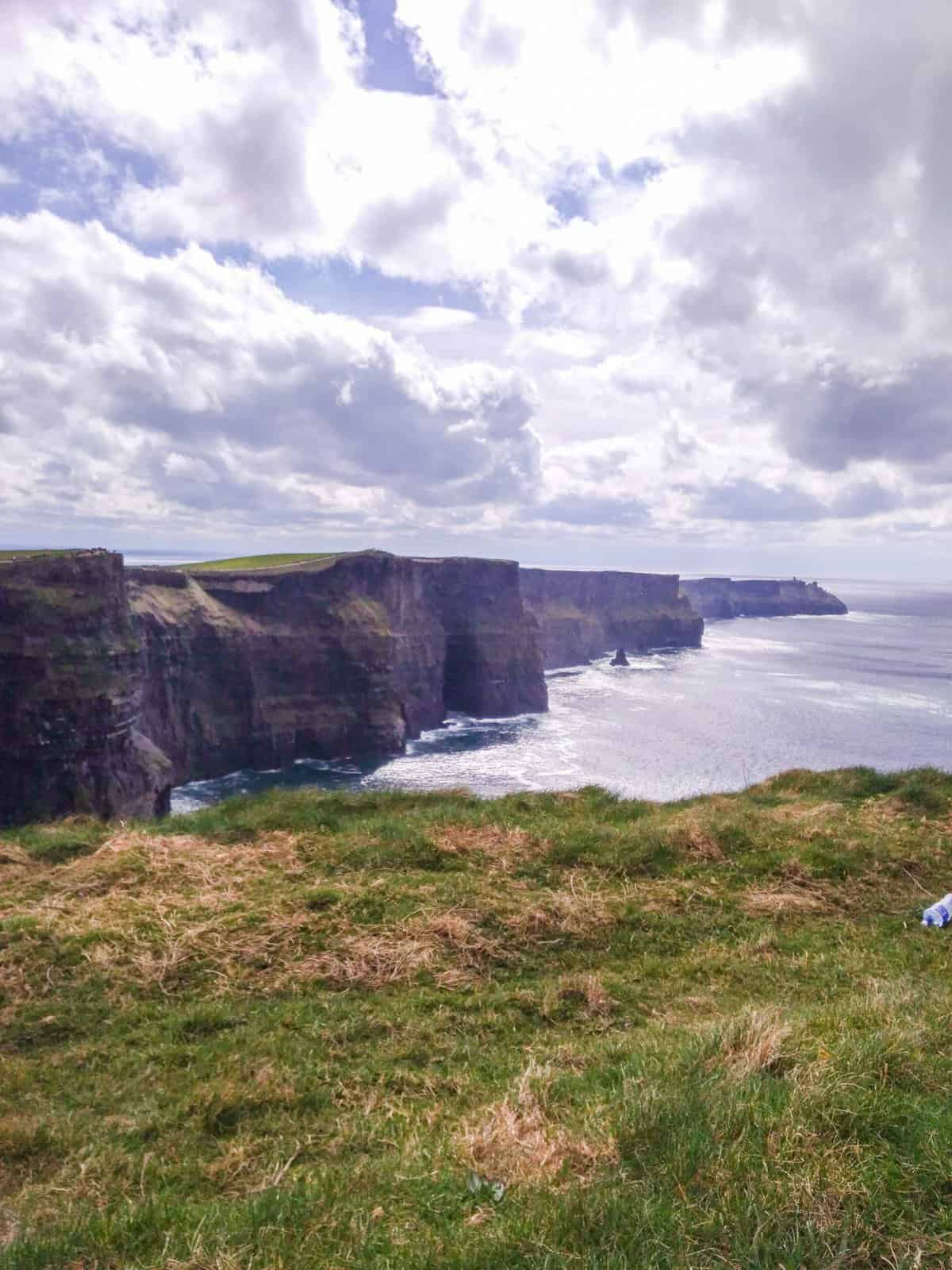
Table of Contents
10 day Ireland itinerary (without a car!)
- 2 nights in Dublin
- 2 nights in Belfast, with a day trip to Giant’s Causeway
- 3 nights in Galway, with a day trip to Cliffs of Moher
- 2 nights in Cork, with a day trip to the Ring of Kerry
- A final night in Dublin before you fly home!
Visiting Ireland for the first time? Don’t miss my must-know tips for your first trip to Ireland!
How to visit Ireland without a car
While Ireland is a beautiful country for a road trip, you don’t have to drive to visit Ireland. You can enjoy a 10 day Ireland itinerary without a car!
Assuming you want to visit more than just the Irish city you fly into, you’ll want to book trains and buses between cities . Book your tickets in advance to save money and enjoy watching the beautiful Irish countryside go by. Since you won’t have a car, I suggest sticking to major cities (like the ones in this itinerary) that have great train and bus connections.
Once in the city, if you’d like to explore smaller places or more of Ireland’s natural beauty, hop on a day tour . Not only are many of these tours affordable, they also take care of organizing everything for you, provide you with lots of information, and ensure you see the highlights.
Of course, you probably won’t see the local, hidden gems as part of a 30+ person tour group, but you can save those for your next trip to Ireland! Or, if you have the budget for it, go on a private tour or hire a private driver to go further off the beaten path.
Ireland itinerary map
Disclosure: Some of the links below are affiliate links, meaning if you click through and make a purchase, I will earn a small commission at no additional cost to you. Thanks for your support!
Dublin (2 nights)

We’re starting off our 10 day Ireland itinerary (without a car!) in Dublin. We arrive in Dublin on the night of April 10th after a long day of flying. Since we’ll be jet lagged, the only thing on our Ireland itinerary for that night is to drop our bags off at the hostel and find a pub for dinner. If we’re feeling up to it, I’d also love to head over to Temple Bar and explore that area. I know it’s super touristy and overpriced but would still be fun to see.
Only have a day in Dublin? Check out how to spend 24 hours in Dublin, Ireland!
The next day, we get to spend most of it in Dublin. The plan is to hit two Dublin highlights: the Guinness Storehouse Tour and exploring Trinity College and the Book of Kells . To prepare for this epic library, I’ll definitely try to read some books about Ireland .
If we have extra time in Dublin, I’d love to do some exploring in Dublin, checking out St. Stephen’s Green , St. Patrick’s Cathedral and Christ Church Cathedral .
And then we catch a train to Belfast, arriving in just over two hours from Dublin!
Belfast (2 nights)

We get to Belfast around 7:00pm on the 11th. I’ve heard the Cathedral Quarter is a cool area to check out, so maybe that’s where we will head. Belfast City Hall is also supposed to look pretty at night, so hopefully we make it there.
On the 12th, we’re off on our first tour: Giants Causeway & Game of Thrones ! Yes, this is super nerdy. But it’s also going to be a ton of fun. Colin and I are big GoT fans (or at least we were until that final season). And with such little time to check out Northern Ireland and no car of our own, this is the best way to see the sights. I’m really excited to see Giants Causeway, the rope bridge and the Dark Hedges.
That night, we’re back in Belfast and I’m hoping we visit the Crown Saloon , an old Victorian pub in Belfast. I also want to see some of Belfast’s legendary street art, like the murals and umbrella canopy at Commercial Court .
Don’t miss how to spend the best 24 hours in Belfast!
And then on the 13th, we’ve got a half day in Belfast. So, just like Dublin, we’re going to try and cram in a lot. Here’s our Northern Ireland itinerary for the day: wake up early and have breakfast at St. George’s Market , which is only open Friday – Sunday. Head to the Titanic Experience . I’m not a huge museum person but apparently this one is excellent. Have lunch at OX , a Michelin-star restaurant in Belfast that actually has a very affordable lunch menu. And then be on our train by 2:00pm!
Galway (3 nights)

To get to Galway, we first have to take a train from Belfast to Dublin (2 hours 15 mins), switch stations, and then from Dublin to Galway (2.5 hours). Sure, it takes a little longer, but if you’re visiting Ireland without a car, it’s the best option.
On that first night, the only thing I’m putting on our Ireland itinerary is to find dinner and find our AirBnB (PS: First time AirBnB-er? Click here to get $45 travel credit! ) . We’ll be pooped after all the sight seeing in Belfast and train hopping. If we happen to find that dinner at McDonaugh’s , where they’re said to have the best fish and chips, I know Colin will be a happy camper.
On the 14th, we’re off on our next tour. This time, we’re checking out the Cliffs of Moher and the Burren . All the pictures of the Cliffs of Moher look absolutely stunning. I’m praying for good weather and small crowds, but I’m not going to hold my breath. We’ll be back in Galway for dinner, and will try to find a pub with some live music.
The 15th: the only full day free in our entire Ireland itinerary! That’s right – every other day we either have a tour booked or we’re busy taking a train, bus or plane somewhere. April 15th is our only completely free day.
But of course, I’ve got a line up of cool things for us to check out in Galway. My list includes brunch at Ard Bia , walking the Salthill Promenade , visiting Galway Market , checking out St. Nicholas and Galway Cathedral , getting touristy on Quay Street and seeing the cute houses on the Long Walk . It’s a long list of things, but they’re all pretty central. Basically, we’re just going to spend the day exploring the city.
On the 16th, we’ll grab some breakfast and then catch our bus to the final city on our Ireland itinerary: Cork!
Cork (2 nights)

We arrive in Cork around 2:00pm on the 16th after a 3 hour bus ride from Galway. The 16th is actually Colin and my 3rd anniversary.
So if we’re feeling ambitious, I’d love if we took the bus to Kinsale , about an hour outside of Cork. It’s supposed to be a really cute town to walk around with some of the most delicious seafood. There’s also a view point out at Old Head . So my dream would be walking the town, taking in the views, and then feasting on seafood for our anniversary dinner, all before heading back to Cork.
But in case we’re not feeling up for more travel, we could spend the rest of the 16th just exploring Cork. There’s St. Finbarr’s Cathedral , Oliver Plunkett Street and probably a great restaurant for us to have our anniversary dinner.
The next day, we’re on another tour. This time, we’re checking out the Ring of Kerry and Dingle Peninsula . I know it’s pretty touristy to be going on all of these bus tours but when you only have 10 days in Ireland without a car, it just makes sense. We’ll be back in Cork by dinner and will probably hit up a local pub.
On the 18th, we spend the first half of the day in Cork. I’m planning for us to do a quick visit to the English Market with breakfast at Farmgate Cafe . And then, we’re headed out to Blarney Castle . Apparently, it’s just 10 minutes outside Cork City Centre. So how could we pass up a chance to kiss the Blarney Stone and walk around the beautiful gardens?
And then we’re on a train back to Dublin! For our final night in Dublin, I’m planning for us to enjoy Celtic Nights at the Arlington Hotel . It sounds like it should be a night of Irish music, dancing and food – aka the perfect thing to end our Ireland itinerary. The next morning, we’re off to the airport on our way back to Vancouver.
So, that’s our whirlwind 10 day Ireland itinerary without a car. What do you think? Are we seeing the best spots? Are we missing anything crucial?
Like I said, this is just a sampler trip; I know there’s a lot more to see. I’d love to spend more time in the countryside and small towns, or spend the night in a castle or even glamping in Ireland. But we’re really excited to be catching these highlights!
Planning your own trip to Ireland? Check out 3 things you must do in Ireland!

Riana Ang-Canning is a travel writer who has been sharing her global adventures as the founder of Teaspoon of Adventure since 2012. In that time, Riana has travelled to almost 50 countries on 6 continents, including interning in Eswatini, working in Tokyo, road tripping New Zealand and living abroad in Prague. Riana helps everyday travellers discover the world on a mid-budget, proving that you don't have to be athletic, wealthy or nomadic to have an adventure!
Similar Posts

Traveller of the Month: Lucy from Of Wandering Far

Trip Diary: Day Trip to Versailles from Paris

How to Spend a Weekend Break in Bath

Will We Move Abroad Again?
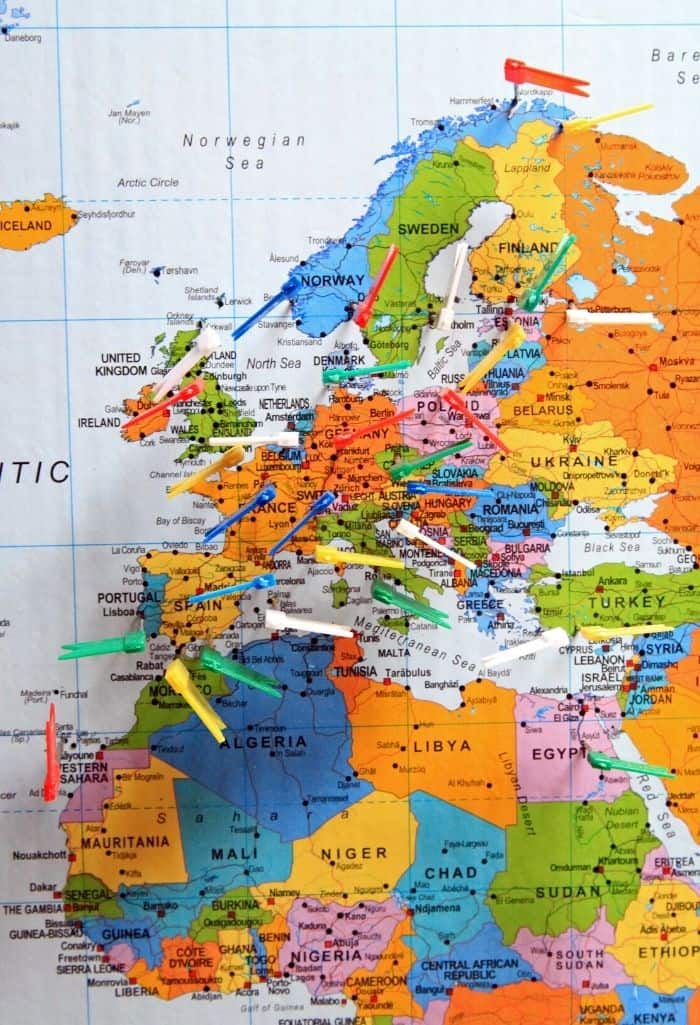
Where to Go on Your First Trip to Europe

2023: A Year in Review
14 comments.
I’m so excited for you! I think you’ve got a great itinerary worked out here and love that you’re doing and seeing so much! I can’t wait to hear how it all goes for you. We did Ireland for a week with my in-laws and hit Belfast, the Giant’s Causeway, Galway, the Cliffs of Moher, Killarney and the Ring of Kerry, the Rock of Cashel, Glendalough, and Dublin, with some little stops here and there along the way. It was such fun!
If I may be so bold as to recommend a restaurant to you… In Galway, the hubs and I had a little date night at Oscar’s Seafood Bistro and it was to die for. I seem to remember that they had an early bird menu that included two courses for less than 20 Euro per person (double check me on that, but it was a good deal!). Might be worth investigating if you’re in need of a dinner spot! Quay Street may be touristy but they do have some great live music that’s perfect with a pint of Galway Hooker! You’ll have a great time.
Happy travels!
Thanks so much, Gwen! Really appreciate you checking out the post. And great to hear that you did a big tour through Ireland in just a week. And thank you for the restaurant recommendation! That sounds awesome and we will definitely check it out!
How lovely! It looks stunning.
Thanks so much, Julia! We can’t wait to see it in person!
Wow, you’ve packed so much in such a short space of time. Ireland is such a beautiful country.
Yes, beautiful country indeed!
Thanks so much for this. I am going for 13 days in November & am thrilled w/ the great ideas here. You have helped me narrow things down a bit! I have a U2 concert also to see while I am there! (a bucket list trip to see my fav band in their home land & it is the end of the tour) So excited for this trip. I am going solo from Honolulu!
Hey Liz! Thank you so much for reading and commenting. Sounds like an amazing trip! Seeing U2 in Ireland would be awesome. I’m so glad this itinerary helped and I hope you have the best time!
Superb Blog Thanks For Sharing Such an Amazing Post.
Thanks for the amazing post…..keep sharing.
- Pingback: The Top 3 Things You Must Do in Ireland - Teaspoon of Adventure
Leave a Reply Cancel reply
Your email address will not be published. Required fields are marked *

Planning an Itinerary to Ireland Without a Rental Car

Ireland is one of those travel destinations where it feels like you have one big decision to make when you are planning out your travel itinerary: rent a car or join an organized tour the whole time. I went with the third option of doing some independent travel using trains and buses to get around and adding in some organized day tours.
I love road trips and I love Ireland. Did I want to drive there? Not even a little bit. Narrow roads, extra costs for insurance, and having to worry about driving on the other side of the road? No thanks. So for peace of mind, I planned just over a week in Ireland car-free. If you do decide to rent a car, these tips on driving in Ireland will be very useful.
If you’re looking for food recommendations in Ireland, check out my huge post on everything I ate in Ireland on this trip.
This post contains affiliate links , If you make a purchase through these links I will earn a commission at no extra cost to you. Thank you!
Planning your car-free trip to Ireland ? Below are some places to stay and things to do. Hotels do book up so for the best availability and prices, try to book well in advance. Popular tours also book up in the mid and high travel seasons (April-October).
- From Killarney: Dingle & Slea Head Peninsula Day Tour (My favourite tour in Ireland!)
- From Killarney: Ring of Kerry (Popular tour)
- From Dublin: Cliffs of Moher & Galway Day Tour (Extremely popular, top-rated!)
- From Dublin: Day Tour of Wicklow Mountains National Park (Gorgeous scenery)
- From Dublin: Giants Causeway & Belfast Tour (Great reviews)
- Castle Lodge, Killarney (Great Irish breakfast and location, my favourite in Ireland)
- Montenotte Hotel, Cork (Beautiful views, pool+sauna)
- Celtic House B& B, Kilkenny (Perfect location)
- Skylon Hotel , Dublin (Loved this hotel and ease of access to airport and core)
- Sea Breeze Lodge B&B, Galway (Fantastic location, views, and breakfast)

Planning a 9 Day Itinerary for Ireland
Length: 9 days, 8 nights Start and End Point: Dublin Cities: Dublin, Killarney, Cork, Cobh, Kilkenny, Galway (optional 3 day add-on)
Top 5 Experiences to Have in Ireland
- Walk the Medieval Mile at Kilkenny
- Explore the Wild Atlantic Way on a tour of the Ring of Kerry, Dingle Peninsula, or Mizen Head
- Be granted the gift of the gab by kissing the Blarney Stone at Blarney Castle
- Step back in history in Glendalough and the Wicklow Mountains
- Explore the history of the Titanic in the coastal town of Cobh
How to Get Around Ireland without a Car
Without a car, you won’t have as much freedom in choosing what cities or towns to stay in. It limits your options unless you have a long trip and can sacrifice a lot of time to the bus or train. The most convenient locations using public transit and day trips are the ones that have the most tourist infrastructure and a direct connection to Dublin. You also need to choose a bit strategically because the difficult part of not using a car is getting between cities that aren’t Dublin. By difficult I mean time-consuming and perhaps a bus (or two!) instead of a train.
From my experience, it narrows your options down to spending time in Dublin, Galway, Cork, and Killarney. Belfast in Northern Ireland is also quite convenient to access from Dublin and has great day trip options. In Ireland, you are totally spoiled for choice for how to spend your time.
Ultimately, I ended up deciding on revisiting Killarney because it’s stunning, and seeing Cork and Kilkenny. I chose Cork and Kilkenny over Galway because it was faster and easier to get to on transit than Galway. Galway is a fantastic choice because of the day tour options there so I have included a section below on how to add it into your itinerary and you can check my full guide to Galway here . For those of you traveling with children, these are great kid-friendly Ireland destinations .
Dublin is on the itinerary as well, but being my second visit I would have been fine to skip it. Don’t get me wrong, the capital has a lot to offer, it’s just that Ireland’s fantastic coastline and scenery outweigh it for me.
When to Visit Ireland
The other thing to consider before you finalize your plans is what time of year you are visiting. In the summer months (May-September) most day tours will be running. In the off-season, there may be a reduction in how frequently a tour is offered and it may be on weekends only.
I’ve visited Ireland in both late-April and early-October and enjoyed the weather. It is a little bit cooler and there is rain but that is to be expected in Ireland. Pack a raincoat, umbrella, and waterproof shoes and it should be a good time.
Where to Stay in Ireland
Killarney I’ve stayed at two fantastic bed and breakfasts in Killarney and would happily stay at either again. Castle Lodge or Lake Lodge Guesthouse are both great options with full Irish breakfasts.
Cork Montenotte Hotel which is in a great location and has gorgeous rooms with views of the city as well as a pool and sauna Kilkenny Celtic House B&B was close to the sights and right on the river. Nice rooms, fantastic breakfast, and friendly owners. Dublin Skylon Hotel is a convenient location for buses to and from the airport. Really enjoyed staying here. If you want to be in walking distance to the top sights then Temple Bar Inn is a great option with fantastic reviews.
What to Do Before Arriving in Ireland
I recommend booking any tours you want to join before you get to Ireland. They do book up and it would be a shame to miss out on sights because of a full tour.
- Have your accomodation booked as the best places go fast, I use booking.com .
- Book your tour from Killarney for a day trip to the Ring of Kerry or Dingle Peninsula
- Buy a rain jacket or travel-sized umbrella. Rain covers for backpacks can also be useful.
- Book your day trip from Dublin to the Wickow Mountains and Glendalough
- If you’re including Galway, book your tour to the Cliffs of Moher and Connemara
One Week Rental Car Free Itinerary for Ireland
Day 1: arriving in dublin and transiting to killarney.
Arriving off of a red-eye cross-Atlantic flight at 5:30 am, I felt like garbage. I knew when planning today would be essentially a lost day because of not sleeping. If you are driving, consider staying in Dublin and driving the next day because sleep deprivation is no joke. I dragged myself around Dublin a bit today trying not to fall asleep. I was not always entirely successful. This is probably the worst I have ever felt after a flight just because the flight wasn’t very long and I basically was landing when I would normally be going to sleep. If you are more successful at sleeping on flights or have a better schedule then hopefully this first day goes easier for you.
The first destination in this Ireland itinerary without renting a car is Killarney. Located in the southwest, Killarney has a lot to offer both first-time visitors and returnees. I did attempt some Dublin sightseeing before heading to Killarney. We caught the train from Heuston Station, the journey is about 3.5 hours with a change at Mallow. You can go directly from the airport to Heuston Station using the 747 bus. In Killarney, we had enough time to explore the town and have a nice evening before really starting the touristing the next day.
Where to Eat in Killarney: Sceal Eile has good Irish fare and vegetarian food. Caragh has yummy food with great prices and serving sizes. Murphy’s Ice Cream can be found in both Killarney and Dingle and has delicious ice cream made in the Dingle Peninsula with unique flavours. Where to Sleep in Killarney: I stayed at Castle Lodge while in Killarney and really enjoyed how it was in walking distance to everything but was in a quiet location. They also serve up a fantastic breakfast.
I’ve also stayed at Lake Lodge Guesthouse in Killarney and can recommend it as it has comfortable rooms, a great full Irish breakfast, and friendly hosts.

Tip: Buy your train ticket to Killarney in advance to save money. You just need your reservation number to print your ticket from the machines in the train station.
Day 2: Killarney, Dingle Peninsula or Ring of Kerry Day Tour
Day 2 started with having a wonderful Irish breakfast at Castle Lodge . Killarney B&B’s really know how to make the best breakfasts.
Traveling without a rental car it is almost impossible to see the Ring of Kerry or Dingle Peninsula. Because of this, we booked ourselves onto a Dingle Peninsula bus tour for the day. The tour was about 6.5 hours and we had tons of photo stops and lots of time in Dingle town.

I don’t think you can go wrong with choosing either the Ring of Kerry or Dingle Peninsula, with the Ring of Kerry tour being the classic and more popular choice. If you are in Killarney, don’t skip out on a tour of one of these peninsula’s, they absolutely will end up being a highlight for you (they are for me!). You can read about the full day trip experience in my Killarney guide.
Tip: In the high season there is a good chance of the tour being full so book in advance. I traveled in the off-season and got the last 2 tickets on the bus.
Day 3 Killarney National Park
Killarney has so much to offer, it was difficult to choose what to do on day three. I went with the hop-on-hop-off bus tour that leaves from Killarney. Using this bus, we were able to have a quick photo stop of Ross Castle as well as visit Torc Waterfall and Muckross House . While many people explore Muckross House, for me it was enough just to see the mansion. From Muckross House, you can walk to Muckross Abbey. Muckross Abbey dates from 1448 and is a ruin that is free to enter and explore. The graveyard here is actually still in use. The hop-on-hop-off bus was really convenient to get between the main sights that are close to Killarney town.

Other options for this day are to go on another bus tour to see whichever peninsula was missed. You can also hike the Gap of Dunloe, you can purchase boat tickets here . The Gap of Dunloe is gorgeous and I did it on a previous trip to Killarney . If you aren’t much of a hiker it’s possible to hire a jaunting car to take you through it.
Killarney itself is extremely touristy. I’m fairly certain most of the people you see are tourists. There are lots of food options and pubs. I have a feeling the only people you will be drinking with are other tourists though.

Day 4 Killarney to Cork
On day 4 of this Ireland rental car free itinerary, I had a bit of time in Killarney before taking the train to Cork. Killarney is one of those places that you could easily stay longer than just 2 full days. If you have time in your schedule, stay a third day and do one of the things I mentioned on Day 2. In the morning, I had time to see the Cathedral and wander around part of Killarney National Park that is right in town. Having the park in Killarney lends to its charm as you can take a walk every morning and have a view of the mountains before heading out for the day.

The train between Killarney and Cork is very scenic, especially up to Mallow, where you need to change trains. Arriving in Cork, there was enough time to explore the city’s main sights. For me, that was seeing the River Lee , the English Market , and St. Finn Barr Cathedral . It’s very much a working city and has a totally different vibe than Killarney. I felt like I walked all over the main sights in just an afternoon and somehow ended up as far away from the main restaurant area as possible by dinner time.
Read Next: Full Guide to Three Days in Cork County, Ireland

Where to Eat in Cork: Wander the English Market and browse your choices there, I enjoyed The Sandwich Stall . If you have a sweet tooth, head to O Conaill to try the brownies, which claim to the best in town and I happily agree.
Where to Sleep in Cork: I ended up not liking where I stayed in Cork. If I stayed again I would be considering the Montenotte Hotel , which is in a good location and has beautiful views from the rooms.
Day 4 Day Trip to Cobh
Visiting Cobh on day 4 was an unexpected trip highlight. I didn’t have many expectations but I absolutely loved visiting Cobh. Just to clear up the pronunciation on this Gaelic word, its pronounced as ‘cove’. Cobh was easy to get to as there are hourly commuter trains from the train station. The train ride is also pretty scenic as you follow the coastline.
Cobh is a pretty maritime town has the distinction of being the last port of call for the Titanic. As such, there is a museum dedicated to the Titanic and the White Star Line. I went to the other main museum in town, which worthwhile to visit because it lays out the history of Irish people emigrating from Cobh’s port to the America’s and Australia.
In addition to the museum, I visited the huge Colman’s Cathedral that sits above the harbour. It’s quite a steep walk up but worth it. The cathedral is gorgeous. I also walked up an extremely steep hill ( a couple times) to get a view of the houses that line is known as the “deck of cards. ” Cobh is just a really lovely town to enjoy the harbour and the scenery of the town.

If you are less of a dawdler than I am, you easily could have time to head back to Cork and get a bus to Kinsale. The woman at Cork’s tourist office advised that it’s worth the trip just for the seafood.
Day 5 Cork and Day Trip to Blarney Castle
Exploring Cork on day 4 felt a little rushed so some Cork exploration was left to today. After a walk along the River Lee, it was time for the steep hike up to Cork’s Shandon Historic Area. It was a quick walk and I just wanted enough time to see the area and the two main churches there. I also got a chance to go into a candy factory. We had finished up in this area by 11 am.

In front of the Cork Tourist Office, we caught the city bus to Blarney Castle . I was pretty pleased I could just pay a regular fare and get a 30-minute city bus to the castle. We showed up to gorgeous weather and had a lot of fun exploring the castle and the gardens. For some reason, I had never realized that Blarney Castle sits on huge grounds with a variety of gardens. My favourites were the fern garden and the poison garden.

After exploring Blarney Castle and gardens, we did some souvenir shopping. The Woolen Mills here is probably the largest souvenir shop I saw on this trip and had a huge variety of woolen items as well as just about everything else you could think of. We then got dinner in Blarney before heading back to Cork on the bus.
Where to Eat in Blarney: Consider eating in Blarney before heading back to Cork as the food here is a bit cheaper than in the city. I enjoyed the food at Claddagh Restaurant , which had a very affordable early bird menu. There are a few more restaurants on the main street as well. It’s worth checking out the Blarney Chocolate Factory as well.
Day 6 Kilkenny
Unfortunately, we woke up to an absolute downpour. It continued to pour rain as we waited for our bus to Kilkenny . Arriving in Kilkenny, the rain started to clear up and we dropped off our luggage before heading to the castle. We lucked out with Kilkenny Castle and it ended up being free to visit on that day. It was worth touring around as it is restored and gives you an idea of what a castle would have looked like. After the castle, we walked around the town and saw the main sights including St.Canice’s Cathedral and tower, the black cathedral, and the rest of the Medieval Mile. Kilkenny is a compact town that is very walkable and has a ton to see. It has a completely different vibe to it than Killarney or Cork.
You can read my full guide to Kilkenny here .

Where to Eat in Kilkenny La Rose Restaurant in Kilkenny is located outside of the Medieval Mile so you get cheaper prices. Very good Italian food here.
Where to Sleep in Kilkenny I stayed at Celtic House B&B which was very close to the Medieval Mile and especially convenient to walk to St. Canice’s Cathedral. Great breakfast included and lovely rooms. Click here to check availability at Celtic House B&B .
Day 7 Off to Dublin
For Day 7 of our rental car free Ireland trip, we woke up to some rain but had a lovely walk in Kilkenny along the River Nore . I also wanted to revisit St. Canice’s Cathedral . After having a very leisurely morning, we caught the bus to Dublin.
In Dublin, we checked into our hotel which was in Drumcondra. It was absolutely pouring rain so we waited that out a bit until it subsided. Rain is just one of those eventualities in Ireland, especially if you aren’t visiting in summer. We still had enough daylight to visit the National Botanic Gardens of Ireland so we had a nice time seeing the gardens and Victorian Greenhouses there. It’s also one of those rare free activities in Dublin.

Where to Eat in Dublin Queen of Tarts is a Dublin must for cake and a good place for breakfast. If you’re a vegetarian or just looking for a break from meat, Cornucopia is a fantastic vegetarian restaurant. San Sab Thai Restaurant was my favourite place in Drumcondra, though Restaurant 104 would be my pick for a fancier meal or breakfast.
Where to Sleep in Dublin In Drumcondra, the Skylon Hotel is a convenient location for buses to and from the airport. Really enjoyed staying here. If you are going to be taking lots of daytrips with tour groups, The Charles Stewart Guesthouse is in a good location as it is right near where the pickup is. It’s an affordable option to be in close reach of Dublin’s main tourist sights.
Day 8 Wicklow Day Trip
Dublin has a lot of day tour options, you can basically see the whole country just using day trips from Dublin if you wanted to. I wouldn’t because you will miss out a lot, but you could. We chose to take a bus day tour to Wicklow to see Wicklow National Park as well as Glendalough . The tour was quite long, it ended up being about 9 hours. The tour I was on was this one and you can read my full review on my day trip to Wicklow here .
We had some really fantastic photo stops going through Wicklow National Park including Guinness Lake and the P.S I Love You bridge. The big destination of the trip is Glendalough. I do wish we had more time to explore some of the hiking options at Glendalough. One downside of tours is that sometimes other people showing up late after stops mean your time gets cut short other places. Wicklow is so pretty though, it’s definitely worth the trip.

If Wicklow doesn’t interest you, there are other great day trips from Dublin. One option is to hike Ireland’s Staircase to Heaven .
Day 9: Dublin
Depending on your flight today you may have a bit of time to explore Dublin. I used my time to go to the Chester Beatty Library which is near Dublin Castle. While Chester Beatty is free, there is a donation box in the entryway if you feel like supporting the museum. One of the most unique libraries I have ever been in, there is a huge collection of old religious texts as well as illustrated books. They have some of the oldest books in the world here. I was there around 1 pm and was lucky enough to join a free guided tour. The collection is rotated yearly so there is always something new to look at.

How to Add Galway to This Car-Free Itinerary
Galway is missing from this itinerary, but it would be easy enough to add 2-3 days to Galway . I would do this itinerary and then from Dublin go to Galway as it is about 3 hours on the bus.
You could also visit Galway instead of Cork and Kilkenny. To visit Galway instead of Cork, I would add on another day to Killarney. This would give you time to do the Ring of Kerry and Dingle Peninsula or do a trip through the Gap of Dunloe. There is a 5-hour bus ride from Killarney to Galway so it takes up a good portion of your day but you would still have time to see a bit of Galway city. In Galway, it is easy to join tours to see the Cliffs of Moher and Connemara National Park, which you need a day each for.
Pin it for Later!

Similar Posts

Visiting the Blue Lagoon, Iceland: Top Tips

Azores Itinerary: 6 Days on Sao Miguel

Visiting Plitvice Lakes National Park in Croatia

Visiting the Most Gorgeous White Villages In Spain

How to Spend 4 Days in Paris

Best Desserts in Paris, France
39 comments.
- Pingback: Where to Eat Vegetarian Food in Ireland - Curious Travel Bug
Love this route idea (and the fact that it can be done with public transport!). I went to Ireland many years ago but have been itching to go back! This will be a great resource when I start planning.
Glad you like the route, I really enjoyed it. Glad it will be useful to you as a planning resource 🙂
Hi! This blog is amazing! Thank you! I’m planning my honeymoon to Ireland and I just can’t wrap my brian around driving. I have a couple questions about your trip. You went from the airport, to the bus, to the train station, to Killarney. Once you got to Killarney, how did you get to your b&b? In Killarney, how did you get from the b&b to the bus tour for Dingle? How did you catch the on and off bus from your b&b? It’s the little details that are throwing me off. Like, how do we get from the hotel to the train, bus, tour locations?
Hi Krystle, glad you like the blog. Ireland will be a fantastic place to honeymoon! I totally understand what you mean about small details like that. Killarney is actually a fairly small place to get around, I have a full post on Killarney here if you haven’t seen it. To get between the train station and either of the B&B’s I’ve stayed at in Killarney was only a 10-15 minute walk, with Castle Lodge Guesthouse being a bit closer than Lake Lodge . I just chose to walk because I travel with a carry on size luggage only. If you have more luggage than that you would be able to get a taxi or arrange with the hotel you are staying at. The tour bus for Dingle and the hop on hop off leaves from the same side of town that the guesthouse I stayed at was on so I just walked, as it was only a 5-minute walk. Killarney is a really pleasant town to walk around and nearly impossible to get lost because of it’s compact size. You can generally pick up a town map at the train station or at your guesthouse, or save it as an offline map on Google Maps on your phone.
You visited some beautiful places; and it is amazing tha tyou could do it without renting a car! I love to travel without the worry of driving through unfamiliar or narrow roads – and sometimes worrying about the side of the road I need to be on… it’s hard sometimes, but using public transport also makes you feel like a local – sort of. I love your photosand appreciate all the tips for the visits…
It was so nice not having to worry about damaging the car on narrow roads. I had read so many horror stories of car rental in Ireland! I agree, public transit almost makes you feel more connected to the country because you end up interacting with a lot more locals than you do when you sit in an isolated car. Glad you enjoyed the photos 🙂
Very interesting photos… fanatastic
Glad you liked the photos!
I dream of going to Ireland and explore the amazing landscapes ever since I went to Cork on a school trip years ago. You’ve inspired me to visit again! I can’t wait to start planning.
Ireland has some of the most stunning landscapes. It really is a beautiful country and I’m glad I could inspire you to visit again!
Wow! This looks amazing. I have only been to Northern Ireland but definitely want to explore more and this post was very helpful. Pictures look beautiful. Thanks for sharing!
Thank you, glad it was helpful! I haven’t been to Northern Ireland but it looks really beautiful.
I was thinking about how you did the sightseeing without renting a car before I read through your post. Good to know they have hop on hop off bus. It is really helpful, as well as joining the day trip tour.
The hop on hop off was so useful and affordable. You have to get a bit creative and do a lot of research in advance to travel without a rental car in Ireland.
I’m a nervous driver (and I don’t drive manual!) so it’s always nice to read about car-free travel options. It’s sad, though, to hear that travelers without cars have to (more or less) stick to bigger cities… it’s clear there’s lots to see and do in the big cities, but I imagine that Ireland’s small towns must be stunning too!
With more time and money it is possible to visit some of the smaller towns using the bus system. Without a car the costs just add up so fast for visiting small towns versus driving and seeing multiple small towns in a day. Not driving manual really makes the rental car costs so much higher though 🙁
Looks like you have an incredible time! I’ve wanted to visit Ireland and Scotland for a while but the thought of renting a vehicle that drives on the opposite side of the road, plus manual drive has been a hindrance. This looks like a great way to see the country!
I agree, driving on the opposite side of a narrow road is not appealing at all! It is a great way to see the country without dealing with the anxiety of an uncomfortable (for me) driving situation 🙂
Using public transport is always my priority including when traveling, so I love this itinerary. I would try put Corkand Galway on the same list somehow and visit every single place you listed here hahah! Never been to Ireland, but looks like I must put it on priority this year!
Cork is already on this itinerary so if you wanted to add Galway I would just add it before Killarney because there are many transport options from Dublin but few from Kilkenny. The public transit option between Killarney and Galway is to take a bus that changes at Limerick and I think it’s about 5 hours between Galway and Killarney. If you dropped Kilkenny you could take the express bus from Cork to Galway and I think it’s 3 hours 🙂
This is so helpful! I really want to explore Ireland and i really don’t want to hire a car haha. I’m excited to get planning now! Thanks for sharing.
I’m glad this could help. I had a really hard time finding information about car free travel in Ireland. A lot of what I found was joining tour groups for a week or so and that is not at all my style.
Those photos! I’ve always imagined if I took a long trip around Ireland, I’d do it by car, but this combination of trains and day tours actually sounds sort of lovely. Thanks for all the info!
There are definitely some parts of Ireland that are more accessible by car but it’s nice to have options to do it without one. I love train travel, really takes the stress out of the day.
This trip sounds amazing! My mom and I are planning to go to Ireland this September and want to do it using the trains/buses. Just curious how much did it cost to do all the different segments and day tours?
For trains, if you book in advance you will get better deals. From Dublin-Killarney 23 euros, Killarney-Cork 18euros, Cork-Kilkenny Bus 15 euro, Kilkenny-Dublin Bus 10euro. For the day trips from Cork using public transit it was 5.40 roundtrip to Blarney (18 euro admission though!) and 10 roundtrip to Cobh. The hop on hop off bus in Killarney was 12.50 euros. For day tours they are around 25-30 euros and cheaper if you book online in advance. September will be a fantastic time to visit!
- Pingback: Cork in Three Days: Ireland's Rebel City Itinerary - Curious Travel Bug
May I ask which tour you booked to Wicklow? Any suggestions on where to stay in Galway? Thanks for a great report. We’re headed over in September.
Hi Elizabeth, in Wicklow I used Wild Wicklow Tours. Very comfortable buses and a good tour. In Galway, the Salthill area is a nice place to stay and there are good pubs and restaurants there. Westwinds Bed and Breakfast is a nice place to stay. Glad you enjoyed the trip report, have a fantastic visit to Ireland!
- Pingback: Hiking in Ireland: Your Complete Guide to the Best Hikes & Walks
- Pingback: Best Things to Do in Killarney, Ireland - Curious Travel Bug
- Pingback: Day Trip From Dublin: Wicklow Mountain Tour - Curious Travel Bug
Brianna, we are leaving in 2 weeks arriving at Shannon, no car, no Dublin. Is the bus from Cork to Galway also Galway to Cork? Your posts are the best I’ve read yet bc we will not be driving. Our trip is 11 days, 9 traveling. Right now we’re thinking Shannon to Galway (3); Galway to Dingle (3); Dingle to Cork (3) then
Hi Rose, yes there is an express bus between Cork and Galway in both directions. Express between Cork and Galway is just under 3 hours, you can find the express buses here: https://www.citylink.ie/ The Galway to Dingle connection is the most time consuming as you either have to take a long train (5.5hrs) to get from Galway to Tralee and then a local bus, or take buses the whole way which is about 6 hours, you can find info here : https://dingle-peninsula.ie/15-travel-information/30-rail-bus.html .
If I were you I would go from the Shannon Airport to Dingle immediately as it’s between Galway and Dingle so you will save a couple hours of time with no backtracking. I would then just visit Galway after Cork so it was Shannon>Dingle(3)>Cork(3)>Galway(3)>Shannon.
I’m so happy to hear the article is useful for you, enjoy your vacation in Ireland!
Trying to plan a month stay in Ireland. My husband is thinking Galway. We have been there before. We will only be using public transportation so I am wondering the best place to stay. Airbnb or a hotel? An apartment or house with a kitchen and hardly any steps would be ideal. Around May 19-June 16! 3 months after my first of two knee replacements. Thanks for any help.
Hi Tina, Galway is great if you don’t have a car because there are so many tours that leave from there. I would stay in either Salthill because there are public buses and many tours do pickup from there or closer to Eyre Square in the centre of Galway. I personally like staying in B&B’s while in Ireland, you can check out my recommendations in my Galway post here: 3 Days in Galway
Thank you Brianna, this is fantastic. I booked my trip a bit last minute and was going to hire a car but just can’t face it (not the most confident driver) and can’t really afford it either! Can I just ask… I have an afternoon + full day + morning in Cork. I’m obviously to wander around Cork itself but for the rest of the time, if you had to pick 2 out of Cobh (via train), Kinsale (via bus/train?) and Blarney (via bus) which would you choose?
Hi Basia, glad to hear that this Ireland itinerary was useful for you. Totally understand not wanting to deal with a rental car, sometimes it just adds more stress. I would definitely include Blarney Castle as one of your options. Between Cobh and Kinsale its going to depend on your interests as they are both quite pretty towns. Cobh is great if you are interested in history as there are a couple of small museums there about the Titanic and history of the Irish Diaspora. Kinsale is a great for its colourful streets and restaurants and also has the Charles Fort. Between Cobh and Kinsale I think Cobh is a bit faster using public transit. Either way, you can’t go wrong between the two but my vote is for Cobh. Have a fantastic trip to Ireland!
Leave a Reply Cancel reply

Travelling Without a Passport

How to Spend a Week in Ireland Without a Car
Want to know how to spend a week in Ireland without a car? There are many fantastic ways to discover the Emerald Isle without having to drive!

A week-long holiday without a car in Ireland is easily doable; in fact, it’s almost ideal. This North Atlantic country aptly called the Emerald Isle is a stunner not just by looks, but also because of its people, fables, and culture. Studded with lush, rolling landscapes, wind-weathered coasts, and cities both gritty and charming, it’s the perfect place to explore.
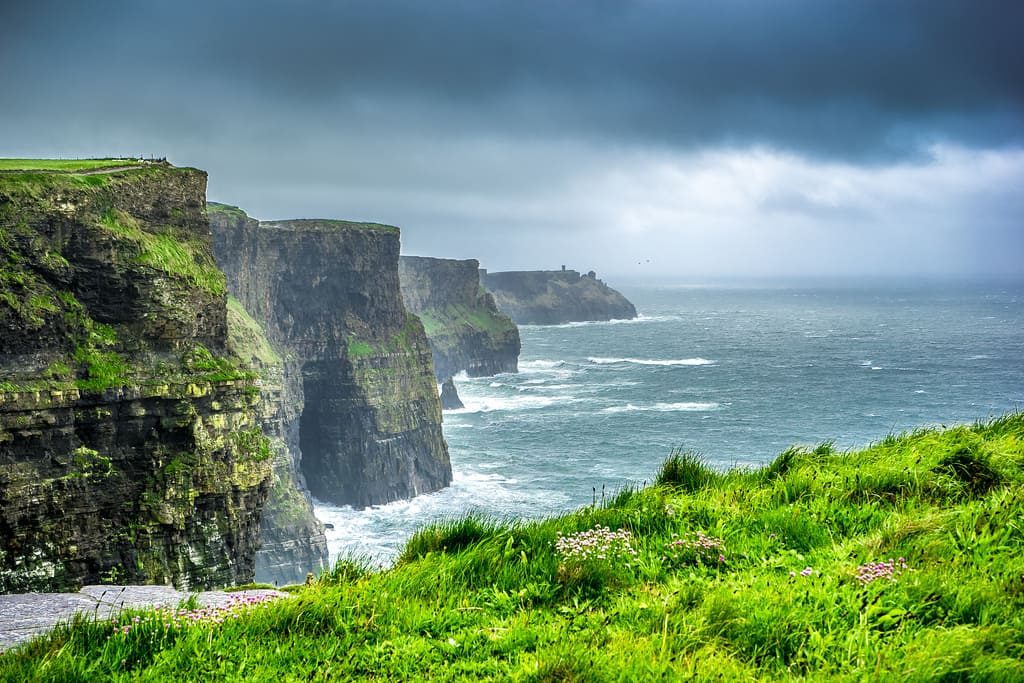
But how to spend a week in Ireland without a car? We’ve got a few tricks up our sleeves. There are many ways, depending on what type of traveller you are and how adventurous you would like to be during your visit. Here are the best ways to spend a week in Ireland without a car.
Read here the best 7 day Ireland travel itineraries .
Stick to the cities
Urban types who enjoy city stays will find comfort in the fact that Ireland’s biggest cities are easily accessible via public transport. Dublin —being the capital city, not to mention the largest in the country—has the most diverse options.
The greater Dublin area is serviced by buses, urban rail, and light rail, with the Dublin Metro on the way. The city boasts the Dublin Area Rapid Transit, dubbed DART, which services the city centre as well as the coastal area with 31 stations in total. It also has a commuter rail with four lines: Northern, South Eastern, Western, and South Western.
Cork, in southwest Ireland, on the other hand, has buses and urban rail, with plans for a light rail system. Limerick and Galway are serviced by buses and urban rail, while Derry and Waterford are accessible by buses.
If you’re not feeling too adventurous or feel like you’re pressed for time, staying in the cities where you can hop on buses or trains that run quite regularly might be your best option. A week is hardly enough to spend in Dublin, but if you go for the highlights, you might tick off a couple of cities during your holiday.
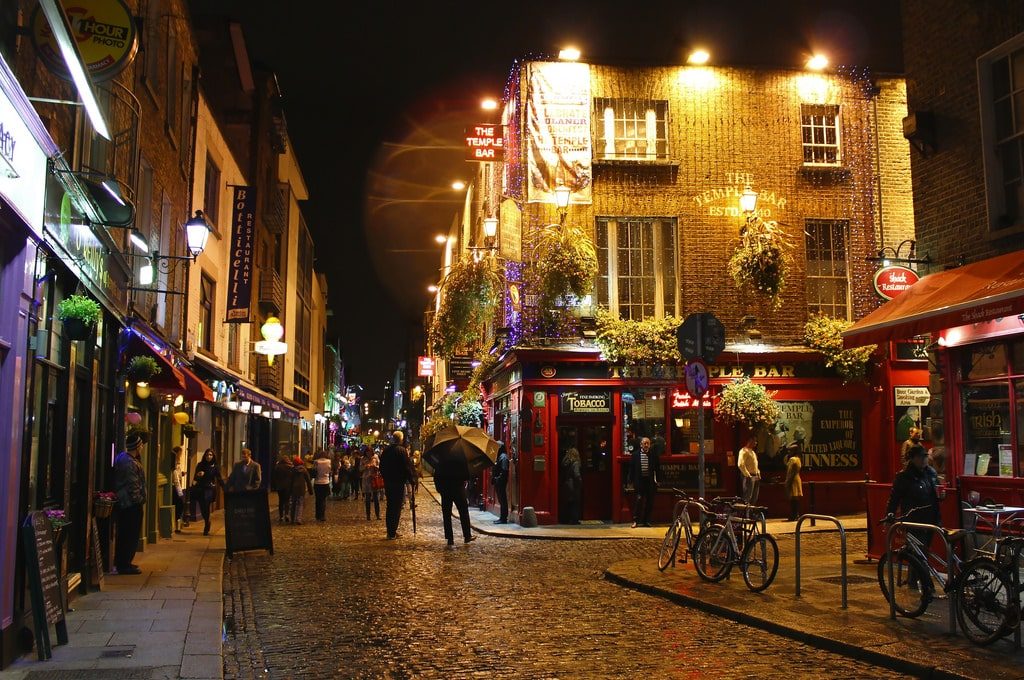
You could spend two or three days in Dublin, visiting attractions, stopping by the Guinness Storehouse Factory, and drinking with the locals in pubs. Then jump on the Dublin-Cork line to explore the southern city of Cork .
Alternately, take the Dublin-Galway line to explore the charming city of Galway and then squeeze in a day trip somewhere. The Wicklow Mountains National Park is a skip, hop and a jump away from Dublin, while the majestic Cliffs of Moher are a two-hour bus ride from Galway.
See Also: Best Winter 2018 European Destinations
Join a multi-day group tour
If you do want to cover a lot of ground, another hassle-free way to get around is by joining a multi-day tour, you’ll be on wheels but technically won’t be driving yourself. This is especially great if you want to mix it up and are angling for diverse activities and places. Without a car for convenience, that is harder to do. A tour will offer you the right mix of activities as well as transport.
As Ireland is a top holiday destination, tours include week-long options that will take you through cities and to some of the country’s less accessible gems.
Mind you, with many of these tours; your schedule will be a little tighter as your itinerary will be packed with many stops. These tours are designed for travellers who like to squeeze in as many attractions and experiences as possible in a short span of time.
Guided tours with a packed schedule aren’t for everyone. If you prefer to take things at a slower pace, there are some options out there, but remember to take a good look at the itinerary before booking.
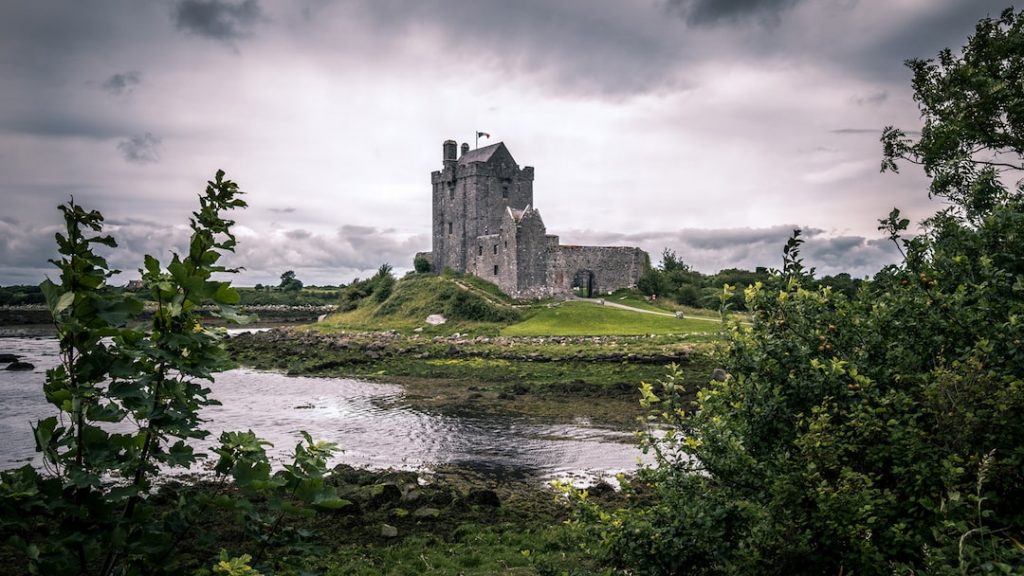
For an epic tour that ticks off many items on most Ireland bucket lists, the seven-day Grand Tour of Ireland might be the right choice. This small group tour starts its journey in Dublin and offers a diverse blend of historical attractions, charming towns, stunning landscapes, and quiet countryside. The organisers will arrange your accommodation, guide, and transport as well as give you a chance to opt-in for extra activities like horseback riding, kayaking, and surfing.
For a slightly less busy but still productive visit, try the Irish Highlights tour, during which you’ll dedicate a day to exploring Dublin and then another circling the Ring of Kerry. You’ll see less and therefore spend more time at each sight. Visit Galway the Bunratty Castle, and the Cliffs of Moher, to name a few. Accommodation, a guide, some meals, and transport and included.
Or try a six-day option and take the last day off to bliss out and recover from a busy week. The Celtic Voyage is perfect for this and includes a visit to the westerly point of Valentia Island and the excavation site of Ross Island.
Journey by train and bus
If ticking off as many places as possible isn’t as important as seeing a good portion of the country in general, a leisurely pace might be more your style. If that is the case, you’ll find travelling by train and, at times, by bus an excellent way to see the country.
Ireland’s landscape and seascape panoramas are the stuff of fairy tales, and one of the best ways to admire the scenery is through the window of a train rolling through the countryside. The advantage of journeying by train (or bus), therefore, is two-fold: it lets you sit back, relax, and see this beautiful country as you travel from one point to another.
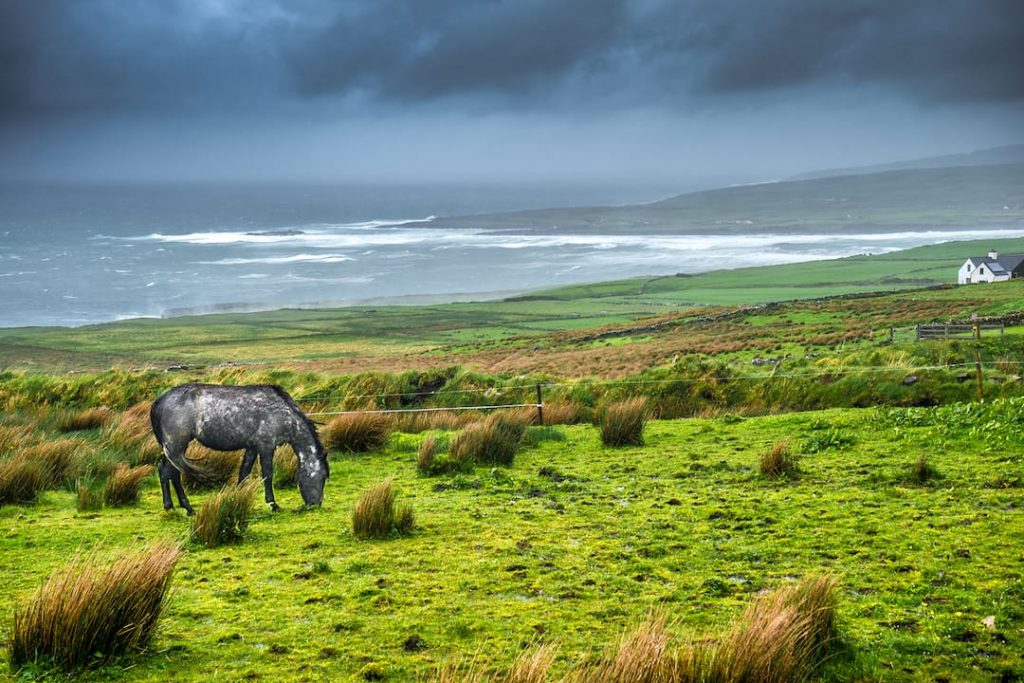
Ireland’s railways will take you from one major city to another or from a city to one of the bigger towns. Organised train tours to major attractions are also on hand. If travelling by train is not an option to where you’d like to go, then a bus will get you there.
See Also: Ireland vs. Scotland: Where Will You Go?
Hike a Long-Distance Trail
Of course, if you want a full-immersion of the Irish countryside, there are always Ireland’s great walking trails that go from one town or village to another, and take you through the beautiful land.
The 53-kilometre (33-mile) Causeway Coast Way, for example, will only take two to three days to complete and takes you along Northern Ireland’s vast coastal stretch. There’s also Glendalough, which takes about a day or two to complete. For the ultimate hiking adventure, you can take a Ring of Kerry hiking tour that takes 6-7 days to complete.
Remember long-distance hiking requires stamina, strength, and endurance, not to mention a lot of planning and preparation. Before you take on a challenge like this, be sure that you’ve trained for it and covered all your bases concerning gear, sleeping arrangements, food, and safety.
Are there any countries you love visiting where you don’t need a car? Tell us about them in the comments!

Michelle Rae Uy
Michelle is Los Angeles-based writer, editor, and photographer with a bad case of wanderlust. Her dream, next to travelling the world, is to own her own funky, boutique hotel with a small animal sanctuary so she can spend the rest of her days chilling with cats and hedgehogs. Follow her on Instagram .
Related Articles
- Food & Drink
Your Guide to Amsterdam’s Secret Bars and Speakeasies
One of the most popular cities in Europe, Amsterdam has no...
- North America
Your Guide to Easter Around the World
Easter is a time to celebrate new beginnings. The symbols and...
- Central America
The Best Spring Break Destinations
As long as academics have been a part of our lives,...

The Best Places to Travel in Europe with a Baby
Get unlimited access to the world's best travel stories. subscribe now., privacy overview.

Ireland Without A Car | How to Spend 10 Days In Ireland Without Renting A Car
- April 16, 2021
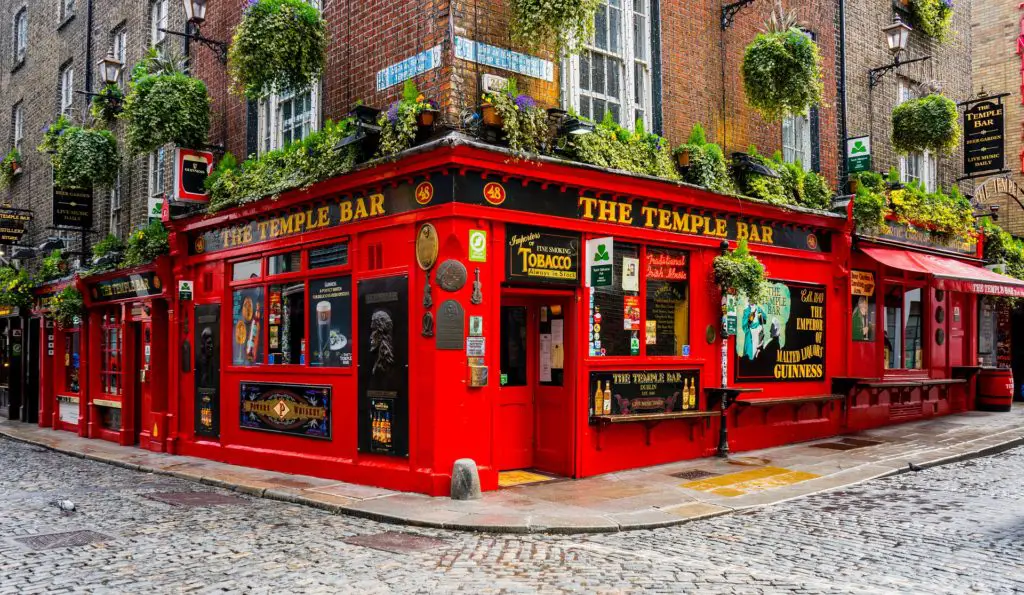
Table of Contents
If you are planning a trip to Ireland, you might see many people say that renting a car is essential. While it can certainly help, it’s not required if you want to see multiple cities. There are many ways to see the country, whether it be by train , bus , or even by ferry!
The most common mode of public transportation in Ireland is the bus. Buses are available in all major cities, and trains are a great option if you are hoping to travel between cities. You also have several options for taxis or rideshare services. Uber and Hailo are two ridesharing apps that are common in America and in England, respectively, and they are both available in Ireland.
The easiest way to travel through Ireland without renting a car is by sticking to the major cities and booking guided tours and excursions if you want to head out of the city. There are also plenty of Ireland Bus Tours that you might enjoy if you prefer to get around Ireland by bus.
Related Posts :
- 1 Month in Europe: 3 of the Best One Month Europe Itinerary Ideas You Will Love
- 10 Days in Italy | 5 of The Best Itinerary Ideas for an Amazing 10 Days in Italy
- 10 of the Most Amazing Day Trips from Dublin
Here are three of the best Ireland itinerary ideas allowing you to travel to some amazing destinations in Ireland without the need of renting a car !
Ireland without a Car Itinerary One: The 10-Day Ireland Trip to Dublin, Dundalk, and Donegal
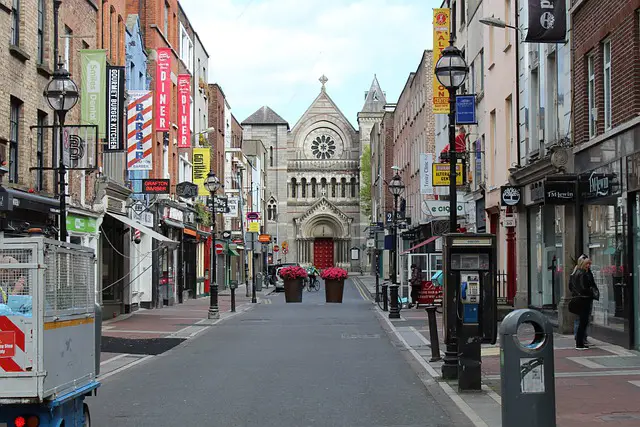
This itinerary starts in perhaps the most famous Irish city, and one you’ll definitely want to visit: Dublin. Dublin has its own airport so you will be able to arrive there with ease before exploring what the city has to offer. You can step back in time by visiting the historic Dublin Castle , or visit the Guinness Storehouse Factory and take a tour to learn about the beer that is produced there. After spending a few days exploring Dublin, it’s time to head to Dundalk, which isn’t too difficult or time-consuming. You can catch a train from the Drumcondra Rail Station to Dundalk , and the journey takes about an hour and a half.
When in Dundalk, you can explore historic castles and beautiful parks, and outdoor attractions. You can also visit some incredible museums, such as the County Museum Dundalk. You can learn more about local history and culture when visiting. Once you have explored Dundalk to your heart’s content, you can head onwards to Donegal. This city is located in the northwestern portion of Ireland and is only slightly more challenging to get to. You can catch the 166 Bus from Dundalk to the Cavan Bus Station, and then catch Bus 30 to Donegal from there.
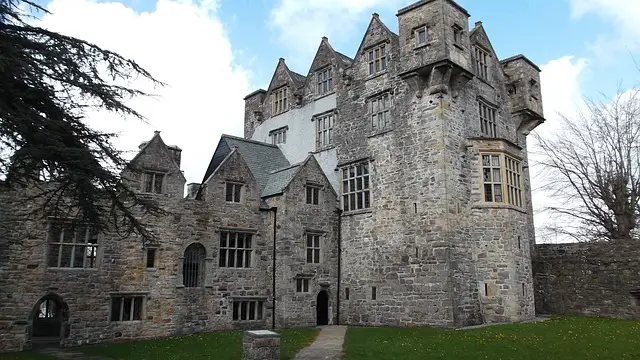
Donegal is known for its natural beauty and historic sites. When you’re in town, head to the Slieve League Cliffs , which are the highest seaside cliffs in all of Europe. The tower 1972 feet above the waters of the Atlantic Ocean, and are a truly impressive sight to see.
Once you are finished exploring Donegal, you can navigate the bus system back to Dublin, but the easier option is to catch a flight from the Donegal Airport . You can head back to Dublin from here, or you can head onwards to your next destination or back home with ease.
Ireland Itinerary Two: The 10-Day Ireland Trip to Cork, Galway, Kildare, and Dublin
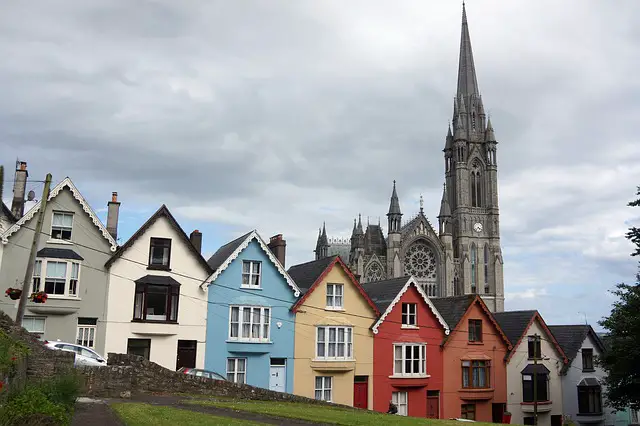
Start this itinerary by flying into Cork . Cork is one of the largest cities in Ireland and is often noted as being the food capital of Ireland. You can sample different breads and fish dishes, or if you’re feeling adventurous, you can try Tripe & Drisheen!
From Cork, you can head to Galway. There are several travel itineraries with a combination of bus and train travel, but the easiest way to make the journey is to catch the bus from St. Patricks Quay in Cork which takes you directly to Galway .
Galway is a city known for its strong cultural and creative heritage. You can experience the traditional Irish music and dance at various events and festivals that take place in Galway throughout the year. It’s also a very tourist-friendly destination as many people flock here every year to experience everything the city has to offer.
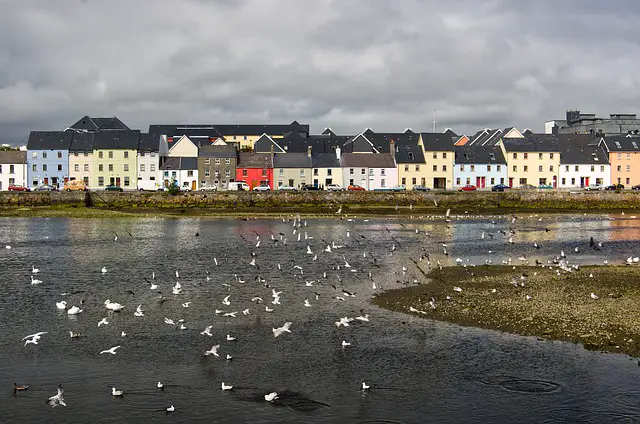
After exploring Galway, head east to Kildare. You can do this most efficiently by taking the Irish Rail train from Galway to Portarlington . From there, you can catch another train towards Kildare .
Kildare is a fantastic destination for experiencing the countryside. You can take boat tours or visit historic houses and gardens. Kildare is also notable for being the equine capital of Ireland, so if you are interested in horse racing, you’ll find plenty to do here.
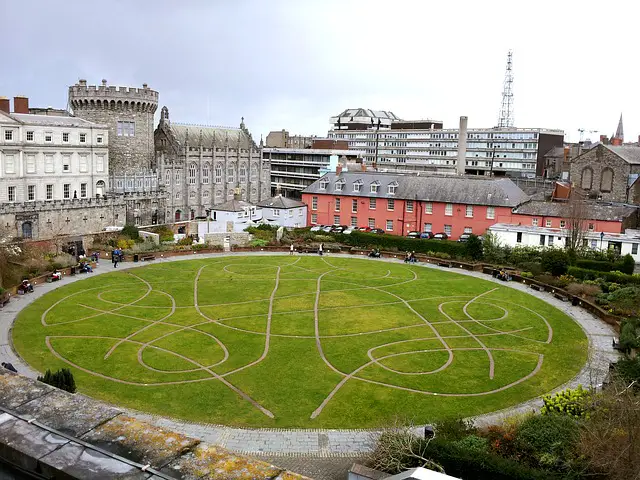
From Kildare, you can head to Dublin to end your journey. Of course, Dublin is a thriving Irish city that has plenty to offer so you can choose to stay here for a few days, or simply head to the Dublin Airport to head home after your exciting Irish adventure.
Ireland Itinerary Three: The 10-Day Ireland Trip to Kerry, Killarney, Tralee, Dingle, and the Blasket Islands
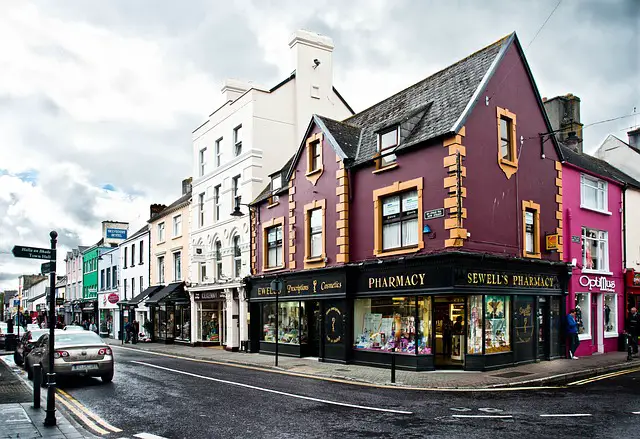
For an adventure through the southwest part of Ireland, fly into Kerry Airport which is where you will start and end your trip. It may be a smaller airport, but it is still an international one so you should be able to find a flight or a connecting flight here with relative ease. From here, you can catch a bus directly to the city of Killarney which takes about 45 minutes. You can also rent a taxi, which is far more expensive but only takes 15 minutes.
Once in Killarney , you have plenty to do but the best activities to focus on are exploring the outdoors. To the west of the downtown area, you’ll be able to find many outdoor parks such as the Killarney House and Gardens. There are many incredible hotels you can choose to stay at in Killarney, but the Great Southern Killarney is one of the best – plus, it’s located across the street from the train station. You could easily spend the majority of your trip just in Killarney because of the incredible natural beauty that surrounds the city. For example, Killarney National Park is a beautiful destination that is accessible by bus or taxi.
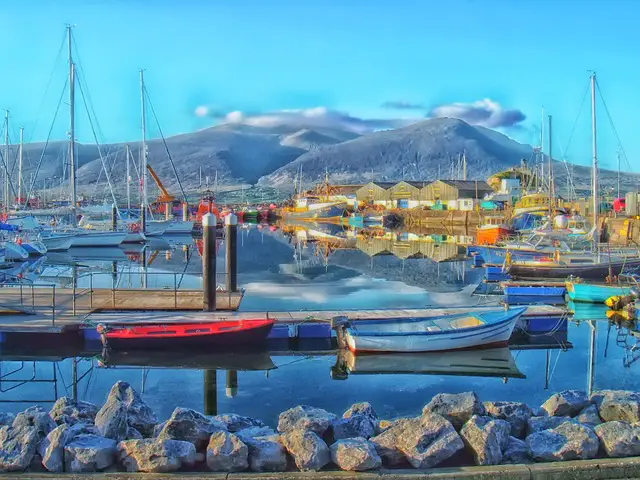
Once you’ve had your fill of exploring Killarney, you can take a bus or a train to Tralee . Tralee is located to the north of Kerry, and it’s the largest town in the region. There are many things you can do in Tralee, and if you happen to be visiting during August you may be able to stop by the Rose of Tralee International Festival, a celebration of Irish culture and heritage. Additionally, Tralee is known for its sports culture and historic sites.
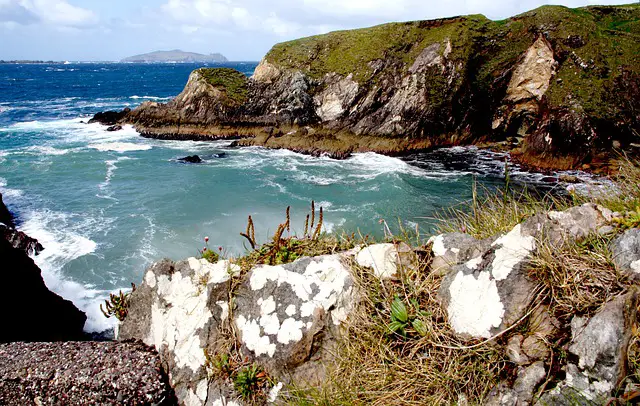
After Tralee, you can take a bus to Dingle, the only town on the Dingle Peninsula. It’s a small coastal town with a permanent population of just over 2,000 residents. You can spend time exploring the businesses in Dingle, before catching a ferry to the Blasket Islands. These islands were once home to a population who later settled in Massachusetts in the United States. Today the islands contain interesting historic ruins and, according to local legend, a collection of ghosts.
From Dingle, you will have to take a bus back to Tralee, and then catch a connecting bus back to the Kerry Airport before heading back home.
While Ireland is a fantastic country to drive through, you can still have an incredible experience visiting without renting a car!
Travel Guide & Resources for Traveling Ireland Without a Car:
Want to spend 10 days in Ireland? You can find the best flights , train tickets , or buses for your trip to Ireland . Also, find the list of the best hotels in any town in Ireland to stay in. Need more ideas to add to your 10 days Ireland without a car itinerary? Find top attractions & things to do in each destination of your trip in addition to what already mentioned here .
Video Guide: Ireland Without a Car | The Best of Ireland 10-Day Itinerary Ideas Without A Car
Related Posts
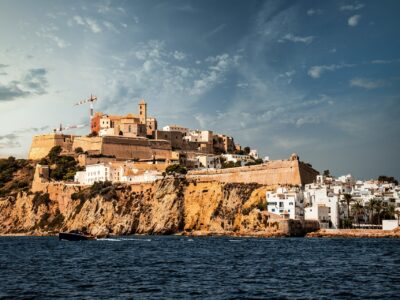
Travel Resources for Planning a Trip to Ireland
To make planning a trip to Ireland easier (with or without renting a car), we included some of our recommended travel resources below. You can search and find the best flights, transportation options, hotels to stay in, tours/activities, and things you can do in each destination during your trip to Tuscany.
Agoda : Search thousands of destinations around the world & quickly compare prices to find amazing deals on the best flights.
CheapOAir : You can find airline tickets, hotel rooms, rental cars, and vacation packages all on one site!
Kiwi.com : What we like about Kiwi is the fact that they are able to create combinations of flight, train, and bus tickets and offer them in a single itinerary. Also, Kiwi has what they called “ Nomad ” which helps you find the best way of visiting multiple destinations, saving you time and money.
JetRadar : You can search and compare airfares from 726 airlines and dozens of travel agencies and systems.
Agoda : Agoda is one of the world’s largest online travel accommodation platforms with a network of over 2,000,000 vacation rentals and hotels worldwide.
Hotellook : They have more than 250,000 hotels in 205 countries, working with data from more than 10 online booking systems, such as Booking.com, Agoda.com, Hotels.com, Expedia, and others.
Transportations:
Airport Transfers : KiwiTaxi , Viator
Train : EuRail , Trainline or RailEurope
Bus : Flixbus : Very affordable (as low as $6) and convenient way to transfer between cities in Europe.
Car Rentals : AutoEurope , EconomyBookings , or GetTransfer (transfers & car rentals with a personal driver)
Bike Rental : BikesBooking (Bikes & scooter rentals)
Transportation Comparison : Omio (search, compare, and book tickets for buses, trains, and flights all in one site)
Tours & Activities :
TakeWalks (WalkofItaly): This is our favorite site for walking tours & day trips.
Tiqets : Great site for entrance tickets. It offers directly bookable, instantly available, and completely mobile tickets for museums, shows, and attractions all over the world.
Musement : They have good activities and tours in Italy and Spain, also many great day trips you can choose from.
GetYourGuide : A large number of tours, excursions, and other travel activities
Viator : The largest one. It has everything from tours, attractions, shore excursions, and private guides in over 2,700 destinations worldwide. It also has many transportations and transfers options and some unique experiences we didn’t find anywhere else.
Need help planning a trip to Ireland ?
Want to plan a trip to Ireland but don’t know where to begin? If you find this type of trip planning to be too complicated to plan on your own, we’re here to help!
At MultiCityTrips , multi-destination travel and complicated itineraries such as a multi-city trip to Ireland (with or without a car) are our specialties. Contact us today to learn more about how one of our experienced travel experts/destination specialists can personalize your multi-city vacations at the best price.
Don’t want to start from scratch and need some trip inspiration? Check out our marketplace for customizable pre-designed packages available right now for many amazing destinations.
To learn more about how our process of trip planning works in detail, please see our “ How It Works ” page or check out our video on “How to Plan a Multi-City Trip to Europe in 5 Easy Steps” here.
Have questions for us? Schedule a FREE Call with us here or contact one of the travel experts/destination specialists at [email protected] , call/text us at (888)223-2316 today.
Private Travel Coaching & Consulting Call
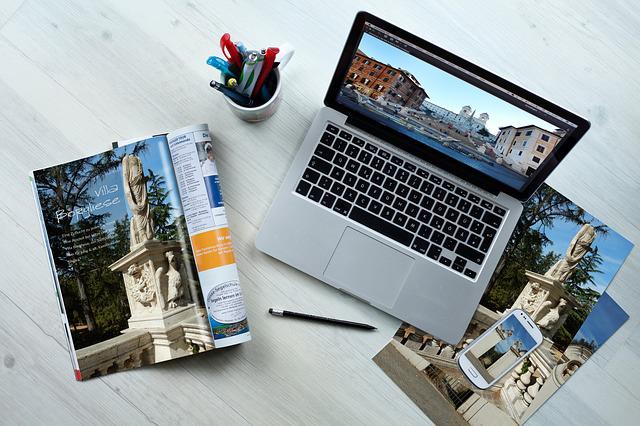
Want to plan and book your upcoming trip yourself? If this is your first time traveling to any of the European destinations or you are new to multi-city, multi-country travel but prefer to manage every part of your trip on your own, this option is for you!
For just $150 per hour , our destination expert can answer any questions you might have as you plan and book your dream trip. From assisting with route planning, and destination selection, recommending the best areas or places to stay, the best transportation options, things to do and see, saving tips and so much more!
Ready to plan your trip with our help? Book your private coaching session with our destination expert now and we’ll confirm your appointment within 24 hours!
More Travel Inspiration & Guides
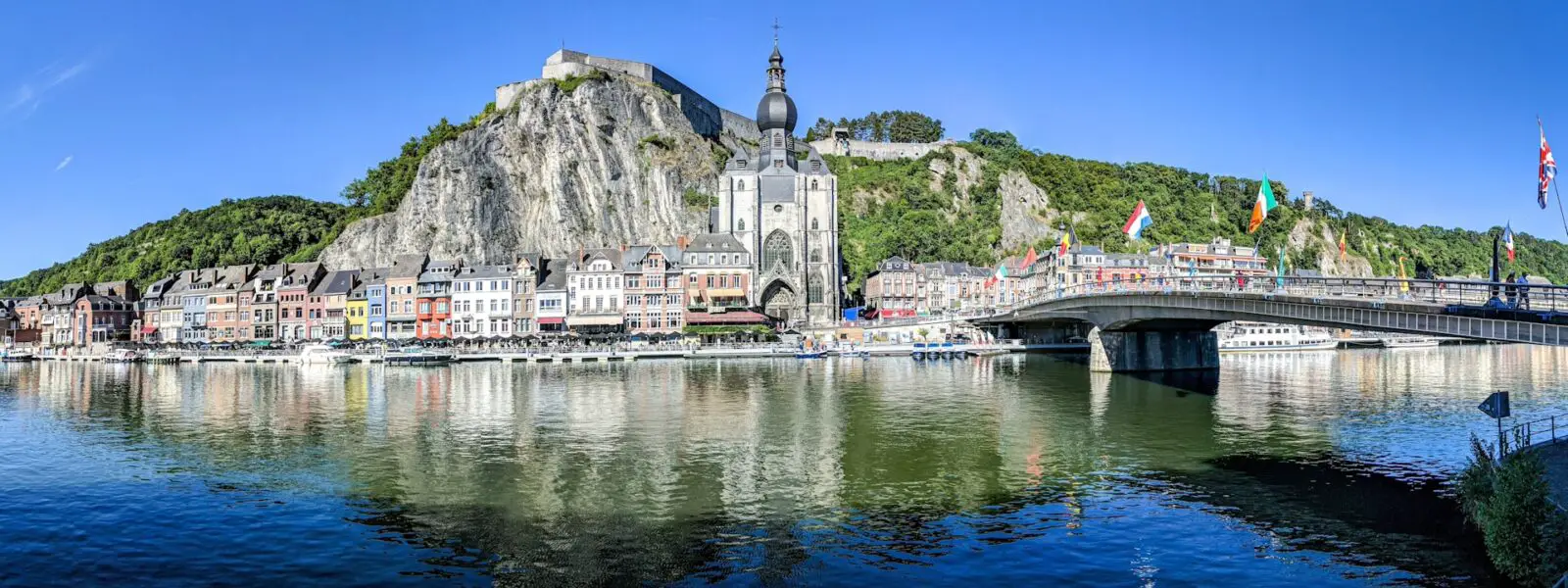
7 of the Most Amazing Day Trips from Brussels
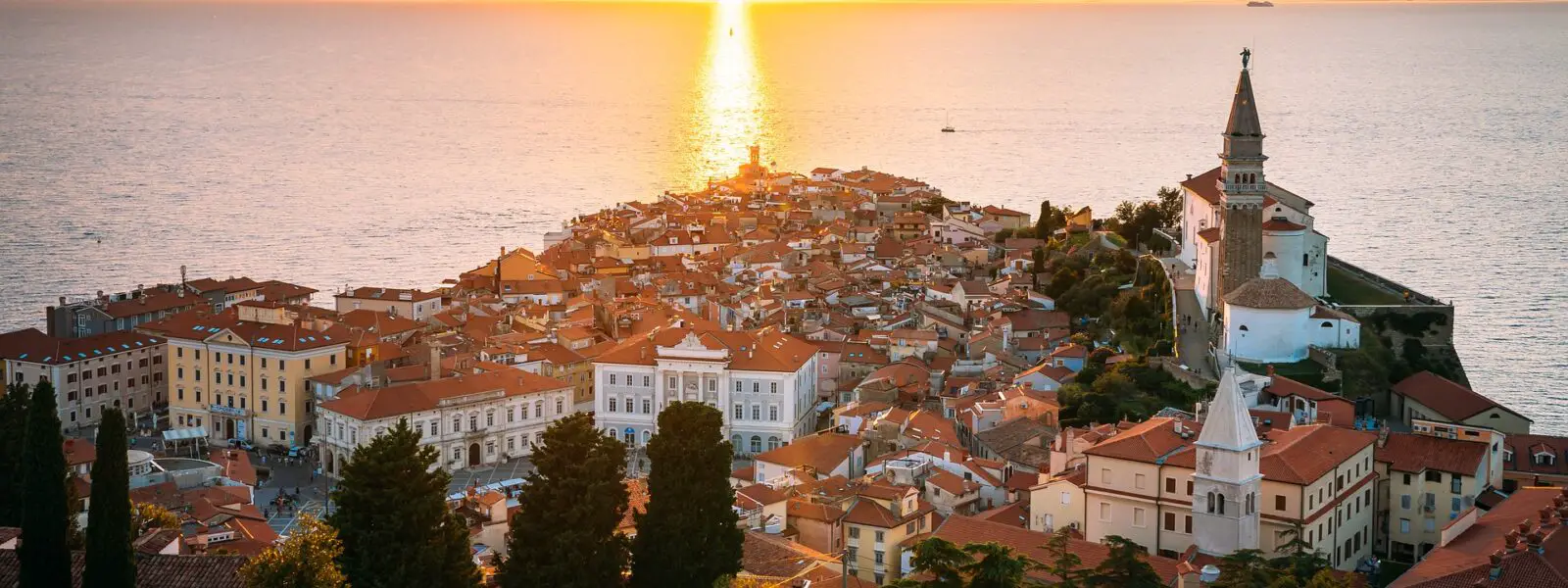
10 of the Best Places to Visit in Slovenia
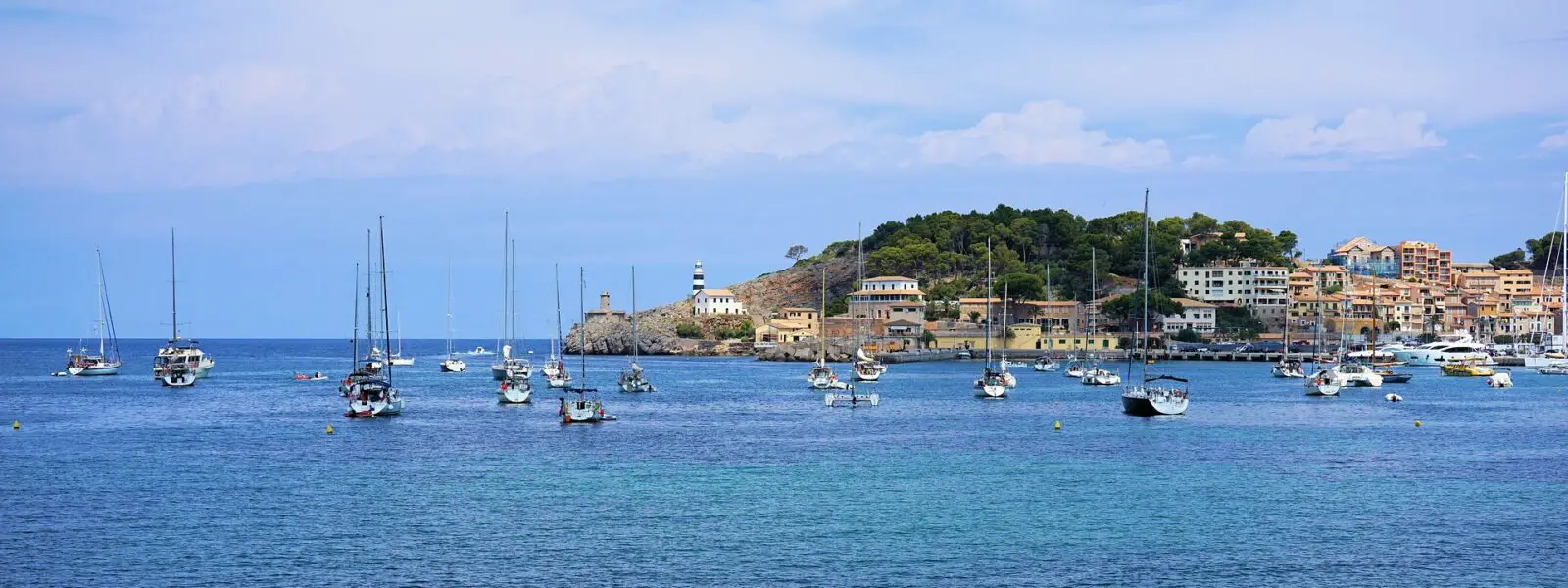
7 of the Best Spanish Islands You Will Love
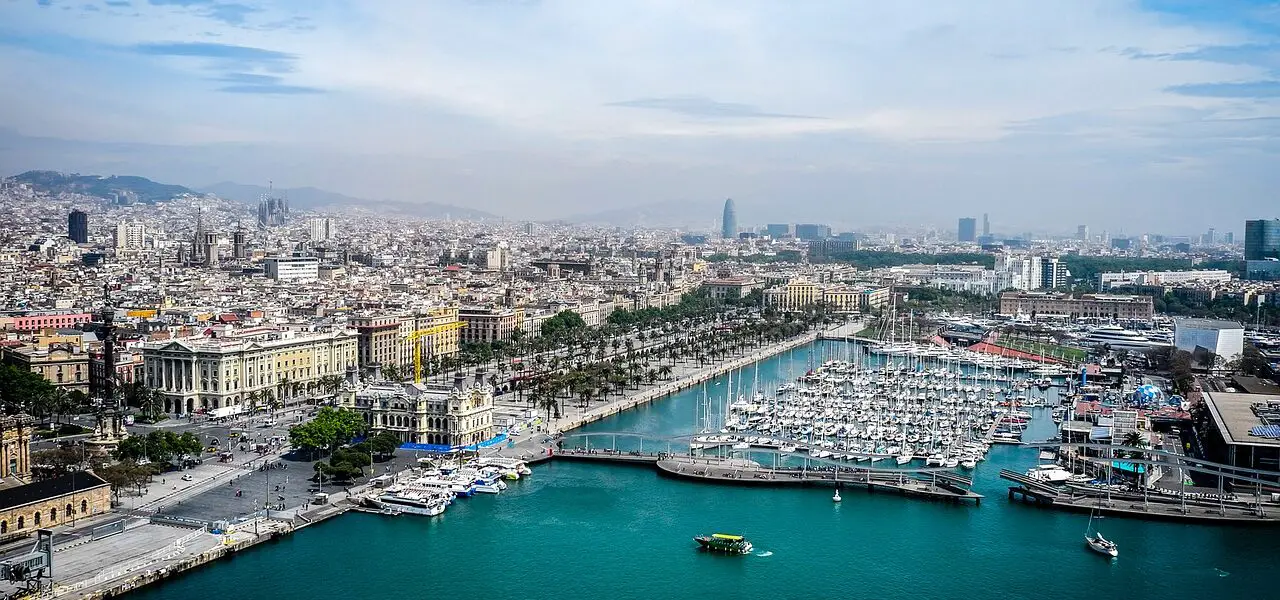
2 Days in Barcelona Itinerary & The Best Way to Explore The City You Love
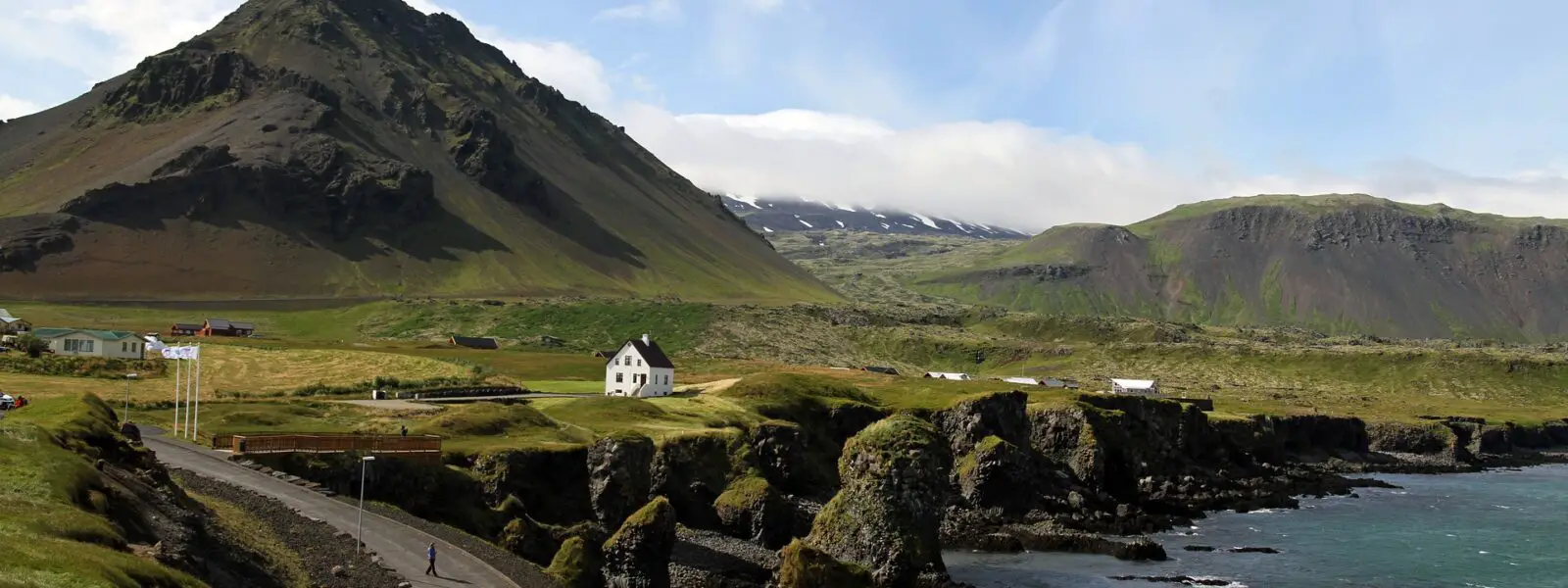
9 Incredible Hidden Gems in Iceland You’ll Love
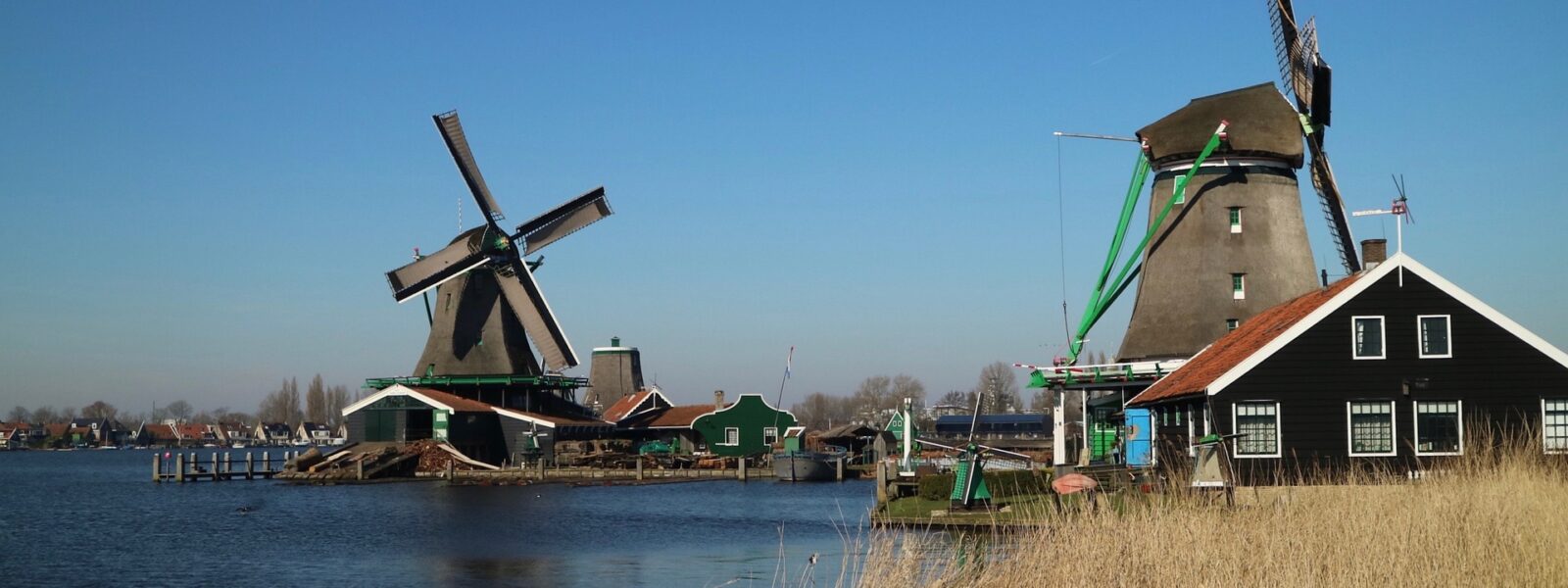
7 of the Most Amazing Day Trips from Amsterdam
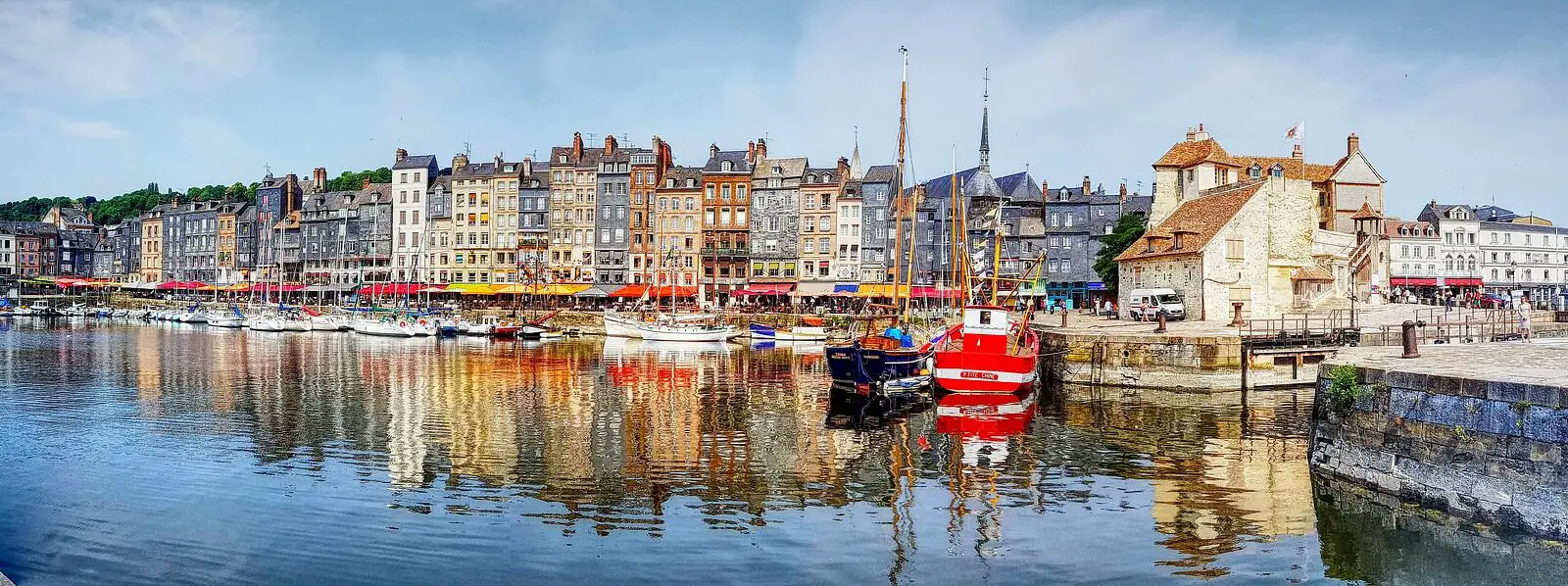
10 of The Best Things to Do in Normandy You Will Love
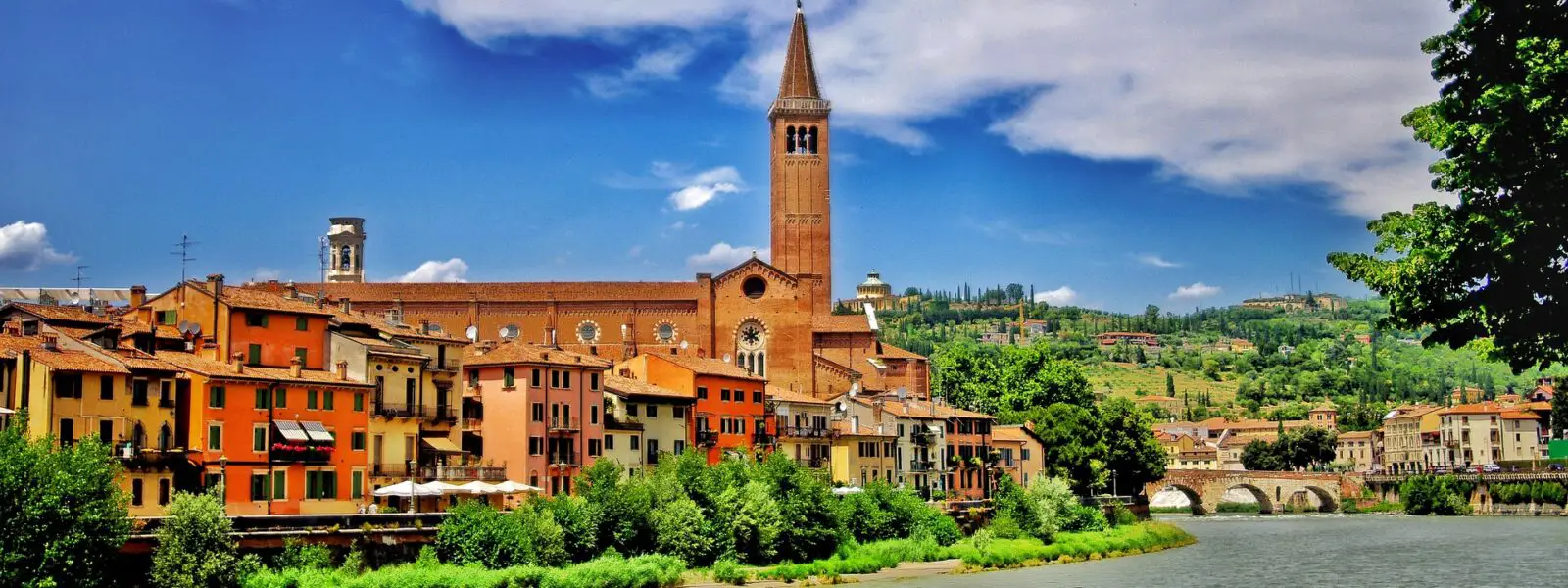
7 of the Best Day Trips from Milan by Train You’ll Love
Travel resources for planning your own trip.
To make planning your European trip on your own easier, in addition to what already mentioned in our travel guide, we included some of our recommended travel resources below. You can search and find the best flights, transportation options, hotels to stay in, tours/activities, and things you can do in any destination using these travel resources:
European River Cruises:
Uniworld River Cruises : The world’s best and most awarded luxury river cruise line—offers itineraries in spectacular destinations throughout Europe, Russia, Egypt, Asia, and Peru. The company’s European fleet features luxurious ships with an average capacity of 120 guests, the highest staff-to-guest ratio in the river cruise industry, enticing shore excursions, world-class gourmet cuisine, impeccable hospitality, and numerous other all-inclusive benefits.
Pre- and Post-cruise/Tour Extensions: Uniworld curated pre-and post-cruise/tour extensions make it easy to add a few days to the front or back end of your trip while leaving the planning to them
The packages include a variety of hotel options, transfers, and a dedicated destination expert to escort you along the way.
Airport Transfers & Transportations:
Airport Transfers: GetTransfer offers both airport transfers & car rentals with a personal driver. Other airport transfer options are KiwiTaxi and Viator.
Train : EuroRail , Trainline , or RailEurope are all great sites for train tickets as well as Rail Passes if you would like to add more flexibility to your trip. They are good for most trains throughout Europe. For trains in Italy, we like and recommend ItaliaRail . As for Portugal, you will need to go to the official website for Comboios de Portugal (the Portuguese train company) to book your train tickets when traveling in Portugal.
CarRentals : AutoEurope , EconomyBookings , or GetTransfer (transfers & car rentals with a personal driver)
Bike Rental : BikesBooking is a great site for bikes & scooter rentals
Travel Insurance:
Travel Guard : Their comprehensive travel insurance programs, starting at $30, include per-trip & annual plans, coverage for trip cancellation , trip interruption, trip delay, medical expenses, baggage loss & more! Travel Guard provides 24/7-customer service with a personal touch through its World Service Center.
DISCLAIMER : Links included in this description might be affiliate links. If you purchase a product or service with the links, MultiCityTrips may receive a small commission at no additional charge to you.
Trip by Travel Experts
Need help planning a trip and find the best vacation package for your multi-city trip to Europe? If you find this type of trip planning to be too complicated to plan on your own, we’re here to help!
At MultiCityTrips , multi-city, multi-country European vacations, and complicated itineraries are our specialties. Contact us today to learn more about how one of our experienced travel experts/destination specialists can personalize an amazing multi-city trip to your dream destinations in Europe.
Ready for a trip? Check out our planning options and get in touch with us today!

Featured Pre-Designed Packages
These air-inclusive, pre-designed multi-city European vacation packages can be personalized to suit your needs!

9 Nights/ 10 Days Signature Escape to Milan, Lake Como and Venice

6 Nights/ 7 Days Signature Escape to Athens and Istanbul
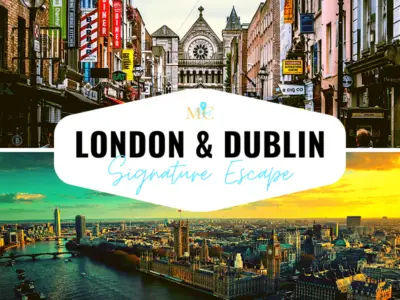
6 Nights/7 Days Signature Escape to London and Dublin

8 Nights/ 9 Days Signature Escape to Berlin, Dresden (Day Trip), and Prague

Schedule a FREE Consultation
Not sure or can’t decide which planning option is right for you? Schedule a free 30-minute call with one of our travel experts to discuss your travel needs today!
- EXPLORE Random Article
How to Get Around Ireland Without a Car
Last Updated: December 9, 2020 References
This article was co-authored by wikiHow staff writer, Hannah Madden . Hannah Madden is a writer, editor, and artist currently living in Portland, Oregon. In 2018, she graduated from Portland State University with a B.S. in Environmental Studies. Hannah enjoys writing articles about conservation, sustainability, and eco-friendly products. When she isn’t writing, you can find Hannah working on hand embroidery projects and listening to music. There are 11 references cited in this article, which can be found at the bottom of the page. This article has been viewed 2,542 times.
Ireland is a country in Europe known for their expansive countryside, delicious food, and rich history. Traveling within Ireland can seem intimidating, especially if you don’t have access to a car. For longer trips, use the train, bus, or ferry to get yourself around the country and the islands. For trips within the city, use a bike, taxi service, or a walking tour.
Traveling Around the Country

- To purchase your rail pass ahead of time, visit https://www.raileurope.com/pass/ireland-pass-5920
Tip: You can also buy one-way rail tickets from city to city. These range from $15 to $45 (€13 to €40) depending on where you are going.

- Depending on where you are going, bus tickets between major cities can range from $10 to $60 per person (€8 to €57).
- To see bus schedules in Ireland and purchase your tickets ahead of time, visit https://buseireann.ie/

- If you have specific places you’d like to go or you want to plan your own itinerary, a tour group may not be for you.

- Ferry tickets vary in price based on how long the journey is and what company you purchase them through, but they are usually around $27 to $33 per adult (€25 to €30). [5] X Research source
- To find ferries going to your destination, visit https://www.waterwaysireland.org/

- You can also fly to the Aran Islands from Dublin, but it may be faster to take a ferry.
Making Shorter Trips

- If you are staying in Ireland for a long period of time, purchase a Leap card. This card lets you load money for bus tickets onto it and gives you a discount each time you use it.

- If you use a ridesharing app like Lyft or Uber, you will only be able to book a registered taxi or limousine. Use apps like lynk or FREENOW to book taxis straight from your phone and skip the middleman.
- Taxis usually charge an initial fee of €3 or €4 and then charge anywhere from €1.45 to €1.80 for each kilometer traveled. [9] X Research source

- DART train tickets cost $3 (€2.69) for a ½ day pass.
- Trains in Dublin run from 6am to 12am Monday-Saturday and 9am to 12am on Sundays.
- You can view a map of the DART rail line by visiting https://www.dublinpublictransport.ie/dublin-train-map

- The age restrictions for renting a motorcycle or moped can vary, but usually you must be older than 23 to rent one.

- You can also join a bike tour group if you want to enjoy some guided sightseeing.
Tip: Remember that people in Ireland drive on the left side of the road, so that is where you should bike, too.

- You can find walking tours near you by visiting https://www.irelandwalkhikebike.com/guided-tours-of-ireland/
Expert Q&A
- Book your train, bus, and ferry tickets online ahead of time for a better deal. Thanks Helpful 0 Not Helpful 0
You Might Also Like

- ↑ https://www.ricksteves.com/travel-tips/transportation/trains/ireland-rail-passes
- ↑ https://www.ireland.com/what-is-available/getting-around-ireland/articles/public-transport/
- ↑ https://www.infiniteireland.com/getting-around-ireland/
- ↑ https://www.ireland.com/about-ireland/travelling-within-ireland/travel-by-water/
- ↑ http://www.aranislandferries.com/times_mor.php
- ↑ https://www.ireland.com/en-us/about-ireland/travelling-within-ireland/getting-around-ireland-by-air/
- ↑ https://www.transportforireland.ie/fares/bus-fares/
- ↑ https://www.bettertaxi.com/taxi-fare-calculator/dublin/
- ↑ https://www.dublinpublictransport.ie/dublin-train-map
- ↑ https://www.ireland.com/en-us/about-ireland/travelling-within-ireland/vehicle-rental/
- ↑ https://www.ireland.com/en-no/what-is-available/touring-holidays/articles/coastal-touring/
About this article

Did this article help you?

- About wikiHow
- Terms of Use
- Privacy Policy
- Do Not Sell or Share My Info
- Not Selling Info

17 Amazing Day Trips From Dublin Without A Car

Disclaimer: This page may contain affiliate links. If you make a purchase using one of those links, I may earn a commission at zero cost for you. Please see my disclaimer policy here and my privacy policy here.
Wondering how to go on day trips from Dublin without a car ? You are in the right place!
I was in Ireland twice for two months in total and although I loved renting a car, I realized that there are many tours that you can do from Dublin if you don’t feel like driving in Ireland .
Discover the best day trips from beautiful Dublin and embark on unforgettable adventures nationwide.

Table of Contents
Best Day Trips from Dublin Without A Car
1. day trip from dublin to dun laoghaire.
⏰ 30 minutes by DART (Dublin Area Rapid Transit)
Dun Laoghaire is a stunning coastal town not too far from Dublin, making it an ideal destination for a short day trip.
Reached by DART, an electrified commuter rail railway network, the town offers everything you might be looking for in an Irish city, from history to charming architecture to natural beauty.
Once you arrive at Dun Laoghaire, start your adventure with a self-guided historic walking tour around the town.
The route takes you to significant landmarks such as the Oratory of the Sacred Heart and the Bathhouse on Windsor Terrace and other spots like George’s Street Upper and The People’s Park.
After a lovely and educational walking tour, enjoy a stroll along the harbor’s encircled piers, the West and East Pier, to take in breathtaking views of the shimmering Irish Sea and admire the original 19th-century lighthouses.
For a touch of culture and history, visit the impressive National Maritime Museum , housed in a striking former church. It features marvelous exhibits showcasing Ireland’s rich maritime heritage.
Lastly, while in Dun Laoghaire, enjoy the lively atmosphere of the streets and browse along boutique and local shops for a souvenir or a gift.
But a must-do activity is visiting the Sunday Market at the People’s Park, one of the most popular markets in Dublin for homemade food, jewelry, arts and crafts.
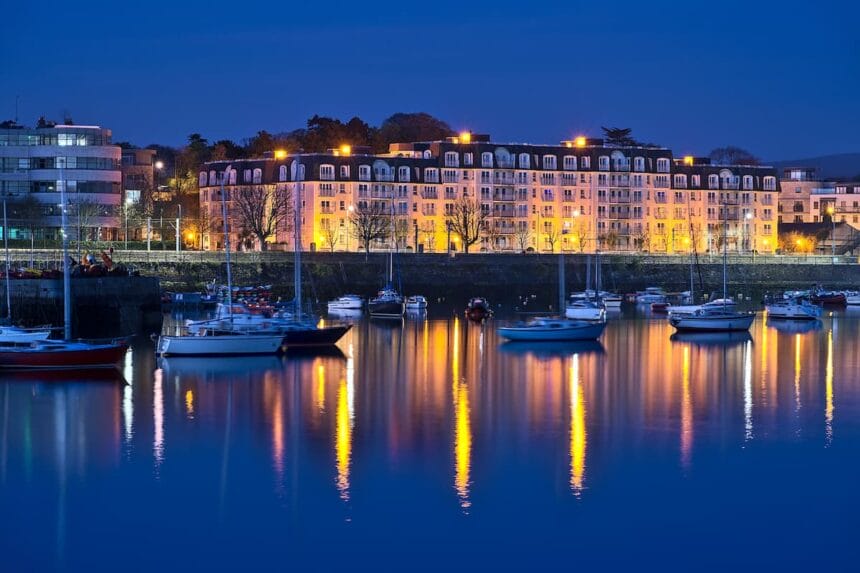
2. Day Trip from Dublin to Malahide Castle
⏰ 40 minutes by DART
Another fantastic short-day trip from Dublin is to Malahide Castle. Also, reached by DART within 40 minutes, the castle makes for an ideal destination for those who want to experience Ireland’s elegant past away from Dublin’s bustling environment.
Although you can explore the castle only by a tour guide, I guarantee you that it is worth it!
While wandering through the elegantly adorned rooms, as well as the botanical gardens, you’ll get to learn so much about the castle, the Malahide area, and the Talbot family, who owned it for almost 800 years.
For instance, each room features ancient tapestries and furniture from different eras, allowing you to travel back in time with each step you take.
Furthermore, the enchanting Botanical Gardens include thousands of plant varieties, wood carvings, fairy trails with picnic spots, butterfly houses, and many more treasures that you can uncover.
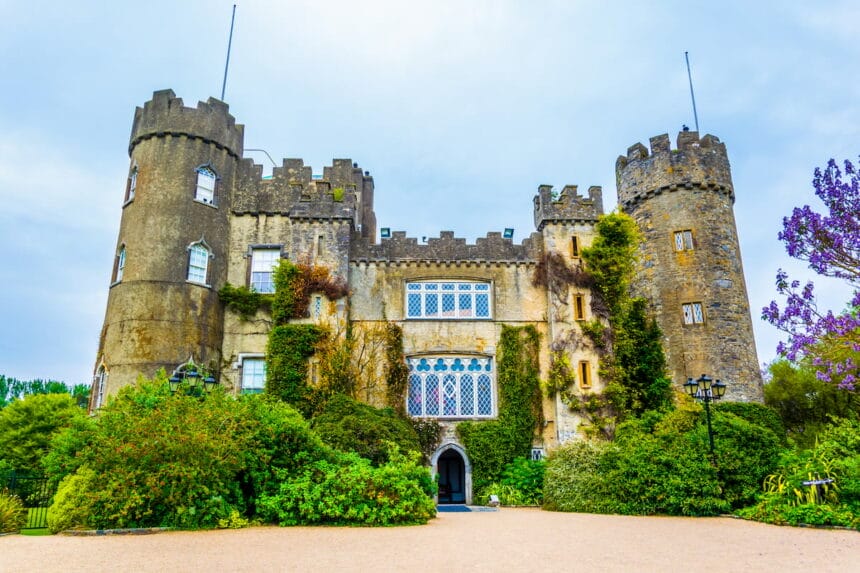
3. Day Trip from Dublin to Bray
⏰ 45 minutes by DART
Bray is another beautiful coastal town just a short train ride away from Dublin, offering an idyllic escape.
Start your adventure with a stroll along the Bray Promenade, taking in panoramic views of the rugged coastline. Admire the Victorian seafront, adorned with colorful beach huts and charming cafes.
If you’re feeling adventurous, go for a hike on the breathtaking Bray Head Cliff, a scenic trail winding through lush greenery and offering stunning views over Bray and the surrounding landscape.
Also, for a more cultural immersion experience, visit the charming Bray Heritage Center to learn about the town’s fascinating history and maritime heritage.

4. Day Trip from Dublin to Greystones
⏰ 1 hour by DART
Nestled along the stunning Irish coast and a short train ride away from the city, Greystones is a haven for nature and outdoor lovers. However, to reach Greystones, you’ll need first to venture on a short hike from Bray, where you’ll find the closest DART station.
So, your journey towards Greystone will begin by taking the scenic coastal walk along the breathtaking Cliff Walk, a marvelous way to immerse yourself in Ireland’s stunning natural beauty as you meander through lush greenery and rocky paths.
Once you reach Greystones, reward yourself with a delicious meal at one of the town’s charming restaurants, serving fresh seafood and farm-to-table delights. Then, explore the quirky shops and boutiques in the town center, or relax on the gorgeous Greystones Beach.
5. Day Trip from Dublin to Hill of Tara
⏰ 1 hour by bus
Ireland is famous for its captivating mythology, fascinating history, and fairytale-like ambiance. So, a day trip to the Hill of Tara, also known as the seat of the High Kings, from Dublin is perfect for stepping into ancient Ireland.
Located about an hour from the city, this historic site holds immense cultural and archaeological significance.
Explore the vast, green landscape dotted with ancient monuments and burial mounds, including the iconic Stone of Destiny and the passage tomb known as Dumha na nGiall, and absorb the serene atmosphere and breathtaking views.
Additionally, visit the on-site visitor center to deepen your understanding of the site’s rich history and mythology and discover the tales of battles, coronations, and ancient rituals that unfolded here.
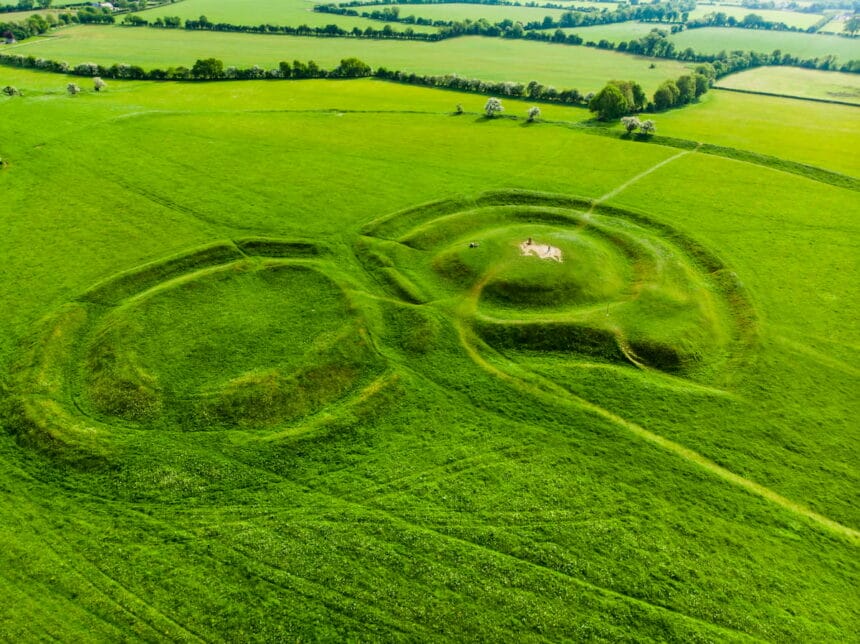
6. Day Trip from Dublin to Castletown House
⏰ 1 hour by bus or train
Castletown House is a gem located about an hour bus or train ride from Dublin, immersing you into a magnificent journey through architecture and history.
Specifically, Castletown House is one of Ireland’s finest 18th-century Palladian mansions. So, here, you can admire a marvelous exterior with a symmetrical and elegant facade and beautifully preserved interior. For instance, marvel at the exquisite stucco ceilings, opulent tapestries, and lavish furnishings.
Furthermore, the mansion’s pristine gardens are perfect for strolls to unwind and take in tranquil beauty along hidden paths, serene lakes, perfectly manicured lawns, and the nearby River Liffey to enjoy the peaceful ambiance of the surrounding countryside.
7. Day Trip from Dublin to Athlone
⏰ 1 hour 30 minutes by train or bus
Situated in the heart of Ireland, Althone is a charming destination to delve into history, culture, and a lively atmosphere.
Firstly, once you arrive at Athlone, begin your journey by exploring the magnificent Athlone Castle. As it is perched on the banks of the River Shannon, the castle offers both a glimpse of the town’s and the region’s history and panoramic views from its impressive rooftop.
Then, venture towards the town’s bustling streets to explore the various shops and enjoy a hearty meal and a pint of beer at a traditional pub.
If you want to delve even more into Althone’s heritage, visit Luan Gallery, where contemporary art and exhibitions await.
Lastly, finish your day with a leisurely walk along the riverbank to soak in the tranquil ambiance of the picturesque Shannon and capture stunning cityscape photos.
8. Day Trip from Dublin to Kilkenny
Kilkenny is easily reached by train or bus within an hour and a half, and it’s an excellent day trip destination for those who wish to experience Ireland’s medieval heritage.
Your first stop in Kilkenny should be the magnificent Kilkenny Castle, a towering fortress dating back to the 12th century. Wander through its opulent rooms adorned with intricate tapestries and ancient artwork.
Then, continue your historical tour with a leisurely walk along the medieval mile, where you’ll encounter stunning landmarks such as St. Canice’s Cathedral and the captivating Gothic-style Black Abbey.
For an artsy experience, visit the Kilkenny Design Center and other artisan craft shops to marvel at Kilkenny’s artistic heritage and pick up a unique souvenir.
Last but not least, stroll through Kilkenny’s charming streets to discover a wealth of history and culture and enjoy a delicious meal at one of the city’s many renowned restaurants serving traditional Irish cuisine.

9. Day Trip from Dublin to Meath
⏰ 1 to 2 hours by bus or train
The historic county of Meath is a treasure trove with plenty of ancient wonders and mystical tales, making it the perfect destination for history and nature lovers.
Accessible by train or bus, start your adventure by visiting the UNESCO World Heritage site of Bru na Boinne, home to the extraordinary passage tombs of Newgrange and Knowth.
Continue your journey to the Hill of Tara, the ancient ceremonial and political center of Ireland’s High Kings, and delve into the region’s rich past at the Trim Castle, the largest Anglo-Norman castle in Ireland.
For a more tranquil escape, visit the beautiful gardens of Kells Priory or take a peaceful stroll along the banks of the picturesque Boyne River.
10. Day Trip from Dublin to Belfast
⏰ 2 hours by train or bus
Frankly, Belfast is a must-visit destination since it allows you to experience the contrasting beauty of Northern Ireland as you immerse in its rich and fascinating history and culture.
Reached by train or bus, Belfast is easily accessible within two hours from Dublin. Therefore, you have the opportunity to explore plenty of fantastic landmarks like the Titanic Belfast , an iconic museum that tells the story of the world’s most famous ship.
Furthermore, you can discover the region’s political and social history at the murals of the Shankill and Falls Road, which provide a poignant insight into Belfast’s troubled past.
While in Belfast, be sure to also stroll along the city center’s bustling streets and browse eclectic shops and markets like St George’s Market, renowned restaurants, and charming pubs to indulge in local culture, traditional Irish dishes, and lively atmosphere.
11. Day Trip from Dublin to The Mournes
⏰ 2 hours by bus
Accessible by a direct bus or train to Newry, the Mourne Mountains are the perfect day trip from Dublin for an outdoor adventure.
A must-visit within the Mourne Mountain range is the Tollymore Forest Park, known for its ancient woodlands, scenic rivers, and moss-covered bridges.
For a more challenging hike, head to Slieve Donard, the highest peak in Northern Ireland, and enjoy panoramic views of the rugged coastline below.
Another worth-visiting spot is the picturesque Silent Valley Reservoir, which offers a tranquil escape and is the perfect destination for Instagrammable photos.
Lastly, after hiking across the mountains, visit the charming village of Newcastle to savor a hearty meal at one of the many cozy pubs and stroll along the sandy beach.
12. Day Trip from Dublin to The Ring of Gullion
Reached by bus through Newry or Dundalk, the Ring of Gullion is a scenic and historically rich area that’ll transport you back in time.
First, venture towards the heart of the Ring, Slieve Gullion, a dormant volcano steeped in mythology. Climb to the summit and enjoy the breathtaking views of the surrounding lush landscapes.
Additionally, journey through the picturesque countryside to discover quaint villages like Crossmaglen and significant museums like the Louth County Museum to immerse yourself in Gaelic culture and delve into an epic adventure through the Ti Chulainn Center dedicated to the mighty warrior Cuchulainn.

13. Day Trip from Dublin to Cork
⏰ 2 hours 30 minutes by train or bus
Cork is a bustling hub of culture, history, and fantastic food, so it’s a fantastic day trip choice to experience the vibrant Irish lifestyle. Furthermore, with excellent public transportation links, exploring Cork without a car is a breeze.
Once you arrive in Cork, start your day by visiting the Cork City Gaol , a former prison-turned-museum that provides a glimpse into Ireland’s troubled past.
Then, continue to the renowned Crawford Art Gallery to admire an impressive collection of Irish artwork to immerse in the country’s vibrant culture.
Another excellent landmark to experience Cork’s fascinating culture and history is the historic University College Cork, which features stunning architecture and beautiful gardens.
Last but not least, stroll through the picturesque English Market to immerse in the aromas of fresh produce and artisanal delicacies, or wander along the iconic St. Patrick’s Street and browse through charming shops and boutiques or enjoy a warm hearty meal at one of the bustling restaurants.
14. Day Trip from Dublin to Galway
Galway is a popular destination on the west coast of Ireland that can easily be reached in two and a half hours from Dublin by bus or train.
Begin your Galway adventure by immersing yourself in the vibrant atmosphere of Shop Street, lined with colorful buildings, lively pubs, and talented street performers.
For a touch of history, explore the bold and imposing Galway Cathedral or dive into Gaelic history at the lively Galway City Museum .
If you wish to have a more romantic day trip, go for a stroll at the Salthill Promenade and admire the breathtaking sunset.
And of course, don’t forget to indulge in the city’s vibrant culinary scene, especially traditional seafood dishes.

15. Day Trip from Dublin to Blarney Castle
⏰ 2 hours 30 minutes by train or bus
Easily accessible by public transportation, Blarney Castle is a majestic medieval stronghold that can take you on a journey back in time to an era of ancient warriors and mythical tales.
As you explore the castle’s medieval architecture and sprawling gardens, don’t miss the chance to climb the narrow and winding staircase to the top.
Furthermore, here you’ll find the renowned Blarney Stone. Legend has it that kissing this famous stone will bestow the gift of eloquence or the skill at flattery.
There are many stories behind the stone and its powers, but it is said that a witch revealed the stone’s power to Cormac Teige MacCarthy, who fell out of favor with Queen Elizabeth I and needed the persuasive powers of speech.
Apart from the stone and its legend, at Blarney Castle, you can take a stroll through the stunning Rock Close, where beautiful pathways lead to hidden caves, fairytale waterfalls, and ancient druidic ruins.

16. Day Trip from Dublin to Giant’s Causeway
⏰ 5 hours by bus or train
A magical must-visit destination is the Giant’s Causeway, a UNESCO World Heritage site blending myth and nature. Situated on the rugged Northern Irish coastline, it is easily accessible within five hours by train or bus.
Marvel at the remarkable hexagonal basalt columns, formed millions of years ago by volcanic activity. Wander along the coastal path to take in the surreal beauty over the dramatic cliffs of the blue waves of the Irish Sea.
Then, visit the Giant’s Causeway Center, where you can delve deeper into the rich history and folklore through interactive exhibitions.

17. Day Trip from Dublin to the Cliffs of Moher
⏰ 5 hours 30 minutes by train or bus
The Cliffs of Moher are an awe-inspiring natural wonder that will surely leave you breathless. So, journey through the scenic Irish countryside by train or bus and venture towards these towering cliffs stretching over 700 feet above the Atlantic Ocean for a mesmerizing adventure.
Marvel at the dramatic cliffs, which have been featured in countless movies and have captured the hearts of visitors from across the globe, and explore the visitor center to learn about the incredible geological and historical significance of this UNESCO Glocal Geopark.

DAY TRIPS FROM DUBLIN WITHOUT A CAR
Transportation for Day Trips from Dublin
👉🏽 leap card.
The LEAP Card is a fantastic way to save money while day-tripping around Ireland. It’s a reloadable smart card offering a convenient and cost-effective way to travel with the bus, DART, and the railway in Dublin and its surrounding area.
Specifically, you can simply top up your LEAP Card and enjoy discounted fares for seamless transfers between different modes of transport.
👉🏽 Dublin Area Rapid Transit (DART)
DART is undoubtedly one of the most convenient transportation modes in Dublin for a day trip beyond the city borders and along the coastline of Dublin Bay.
Specifically, DART stands for Dublin Area Rapid Transit, and it’s a commuter train system providing an effortless and enjoyable way to escape the bustling city and discover the beauty of Dublin’s surrounding areas, such as Dun Laoghaire, Malahide, and Bray.
🛣 DART Station
DART runs through central Dublin and the coastal suburbs at the north and south of the city, so its distance is from Malahide and Howth to Bray in County Wicklow.
Specifically, the line runs north and south, splitting at Howth Junction station, so it’s essential to pay attention to the train’s final destination to ensure you are going in the right direction.
DART’s main station in Dublin is Connolly Station, while other significant stations are Malahide DART station to visit Malahide Castle, Killiney for the best view of Dublin Bay, and Howth for a walk through the ruins of St. Mary’s Abbey.
🎫 DART Tickets
It’s essential to purchase your ticket for DART before boarding the train. You can get them online, from ticket machines at any station, or the ticket counters in some of the major stations.
The price for a single ticket depends on the distance between your starting and ending stations. For instance, a single adult ticket from Connolly in central Dublin to the end of the line in Howth is €3.30 one way or €6.25 for a return ticket.
There are also the options for an all-day adult ticket for €12, a three-day pass for €17.50, and a seven-day pass for €29.50.

👉🏽 Dublin Train
When it comes to transport options for exploring the surrounding area and long-distance day trips, the Dublin train network is an excellent choice.
For instance, if you’re craving a cultural immersion, the Irish Rail offers easy access to charming towns like Kilkenny or bustling cities like Belfast and Cork.
🛣 Dublin Train Station
The Dublin train station is known as Connolly Station, and it’s the major hub for exploring the stunning destinations surrounding the city.
The station is in the heart of Dublin and is near many hotels, restaurants, and attractions, making it a convenient starting point for your adventures outside of Dublin.
Furthermore, the station offers modern facilities, making it easy to navigate through the various platforms and catch your train on time.
🎫 Train Ticket
Generally, it’s advised to purchase your tickets in advance, either online or at the train station, to avoid any last-minute rush or disappointments.
However, be sure that the Dublin rail network offers various ticket options to suit different travel preferences. For instance, if you’re seeking flexibility, choose an open-ended Explorer Ticket.

👉🏽 Dublin Bus
Dublin’s bus system is another excellent means of transportation for day trips from the city, as it covers both the city center and the outskirts.
Furthermore, the bus is often more reliable if you’re planning to visit more rural areas.
Also, Dublin buses are both a convenient and budget-friendly option for traveling.
🛣 Dublin Bus Head Office
The Dublin Bus Head Office is in central Dublin and is a fantastic spot to gather information about routes, timetables, and fares hassle-free.
Furthermore, at the Dublin Bus Head Office, you can purchase tickets, obtain helpful maps, and get insider tips on hidden gems to explore along your chosen route.
🎫 Bus Ticket
With a convenient online booking system, you can easily purchase your bus tickets in advance, saving you time and energy. Additionally, the bus service offers a range of ticket options, such as single fares and day passes.

If you prefer to avoid public transportation and have a hassle-free journey across the many beautiful destinations in Ireland from Dublin, go for an organized tour.
Of course, there are many of them taking you on exciting adventures, but for your convenience, below you’ll find the top tours from Dublin for some unforgettable day trips.
🥇 Top tours for a day trip from Dublin
✔️ cliffs of moher, burren, and city of galway day tour.
4.8 ⭐️ 11,429 Reviews
Join this guided day trip from Dublin to the Cliffs of Moher by a modern and comfortable coach and venture to various stunning and historical destinations with lush landscapes.
First, you’ll journey across Curragh, pass by the Irish National Stud thoroughbred horse breeding facility, and make a stop at Barack Obama Plaza until you arrive at the majestic Cliffs of Moher.
At the Cliffs, you’ll have about two hours of free time, allowing you to visit the interactive Cliffs of Moher Visitor Experience to enjoy displays of bird’s-eye view and a video from the underwater caves.
Next, you’ll drive along the Wild Atlantic Way, pass by the quaint villages Ennistymon and Kinvara, the Dunguaire Castle, the Twelve Bens mountain range, and the captivating Burren, and finally arrive at the vibrant Galway City, where you’ll spend about one and a half hour to explore its charming cobblestone streets.
Besides the stops at the Cliffs of Moher and other fantastic attractions, enjoy the stunning views along the Wild Atlantic Way, including views of the Aran Islands and Galway Bay.
It was an amazing experience! Our your guide Marc and driver Neil took great care of us and the experience was really the best. ⭐️⭐️⭐️⭐️⭐️ getyourguide_traveler – january 2024

✔️ Giants Causeway, Dark Hedges, Dunluce & Belfast tour
4.8 ⭐️ 5,064 Reviews
This tour will take you on an unforgettable day trip across the coastline of Northern Ireland by bus to visit iconic sights like the Giant’s Causeway, the Dark Hedges, Dunluce Castle, and Belfast.
First, after you depart from Dublin, you’ll stop at a service station for breakfast or lunch and then venture towards the famous and picturesque ruins of Dunluce Castle.
Afterward, you’ll head to the unique and gorgeous Giant’s Causeway, the UNESCO World Heritage Site, and marvel at the hexagonal columns up close.
Then simply immerse in the stunning views of the Irish Sea until you reach the “Dark Hedges,” an avenue of beech trees planted in the 18th century that became famous as a Game of Thrones setting.
Lastly, you’ll head to Belfast and spend approximately one and a half hours exploring, shopping, and grabbing some food before the return journey.
This day trip was awesome. Probably my favorite thing we did while being in Ireland! ⭐️⭐️⭐️⭐️⭐️ natalie , january 2024
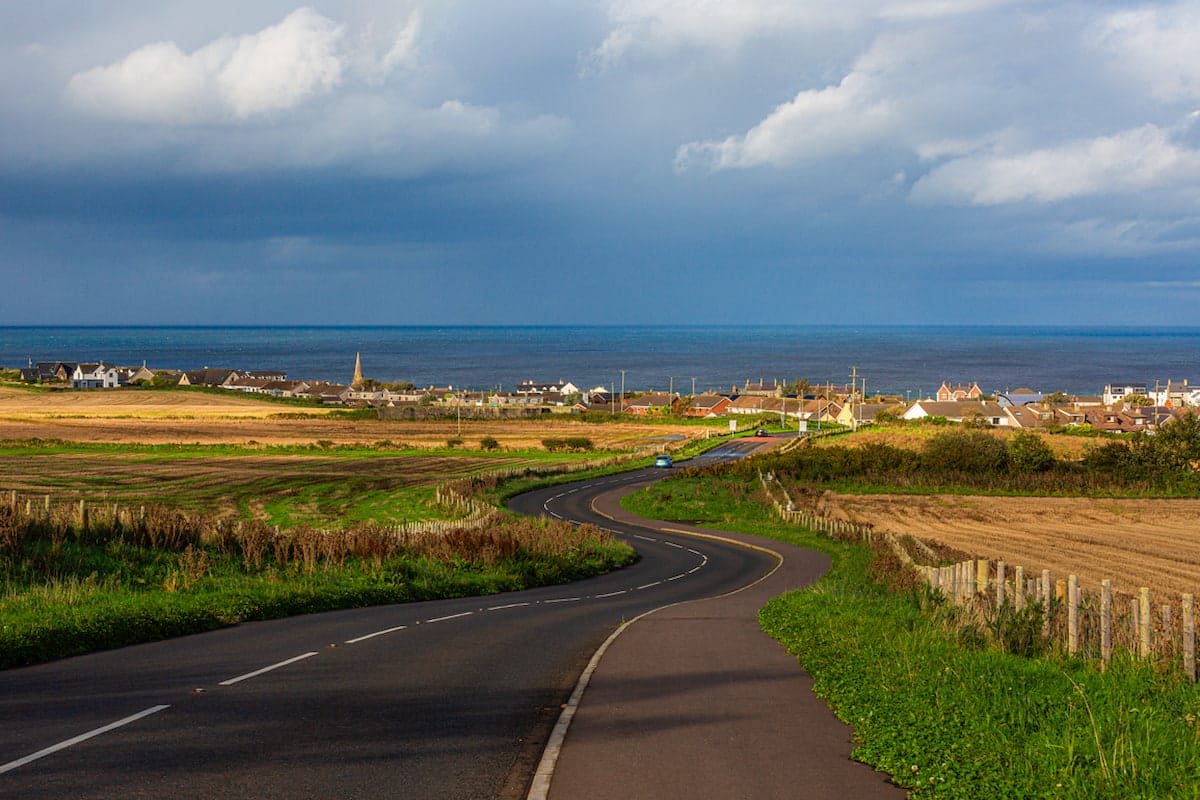
✔️ Wicklow Mountains, Glendalough & Kilkenny tour
4.7 ⭐️ 3,033 Reviews
Choose this guided day trip to immerse yourself in the vast Wicklow Mountains, visit the monastery of Glendalough, and marvel at the medieval lanes of Kilkenny.
With a luxury bus, you’ll set off to Glendalough and join an optional guided tour of the monastic settlement or simply explore the area and relax at a local cafe.
Otherwise, if you want to add an adventurous flair to your tour, you can opt for a hike to the Upper Lake via a boardwalk through a stunning nature trail that leads deep into the valley, the Lower Lake, and onto the Upper Lake.
Then, the tour continues through the Wicklow Mountains to learn about their geology and history, as well as pass through famous movie locations.
Lastly, you’ll reach Kilkenny, where you’ll have the opportunity to freely explore narrow lanes, historic buildings, and its extraordinary castle and enjoy lunch in the local pubs.
It was a great day, I enjoyed it immensely! The highlight for us was the Wicklow Mountains, a beautiful area with beautiful views. ⭐️⭐️⭐️⭐️⭐️ albert , january 2024

Practical Tips Before Going on a Day Trip from Dublin
Generally, before going on any day trip, it is crucial to consider a few practical tips to ensure a smooth and enjoyable experience,
For instance, before your day trip from Dublin, it’s best to plan your itinerary . So, be sure to research your destination, note down the must-see attractions, and create a feasible schedule to cover them all.
Additionally, check the weather forecast to dress appropriately and pack necessary items such as water, snacks, sunscreen, and comfortable shoes.
Also, it’s essential to check the schedule for the earliest and latest buses or trains or make prior arrangements for any guided tours.
Lastly, remember to inform a friend or family member about your day trip plan and ensure you have all relevant contact information for emergencies.
Frequently Asked Questions
Is it easy to get around dublin without a car.
Yes, it is easy to get around Dublin without a car since the city has a well-developed public transportation system that includes buses, trams, and trains.
How many days is enough for Dublin?
Generally, two to three days in Dublin is enough to experience the main attractions and get a good sense of the city’s culture and history. However, if you would like to enjoy more of the city and its surrounding area, opt for at least five days.

What is the best day to go out in Dublin?
Friday and Saturday nights are especially popular for a night out since many people enjoy the city’s nightlife, live music, and pub culture.
For instance, the Temple Bar area is particularly busy during these nights, with numerous pubs and other entertainment venues attracting locals and travelers alike.
Is Dublin a walkable city?
Yes, Dublin is a fairly walkable city as its center and main attractions are compact and easily accessible on foot.
Furthermore, Dublin’s streets are generally well-maintained and pedestrian-friendly, while many areas, such as Temple Bar and Grafton Street, are pedestrian-only.
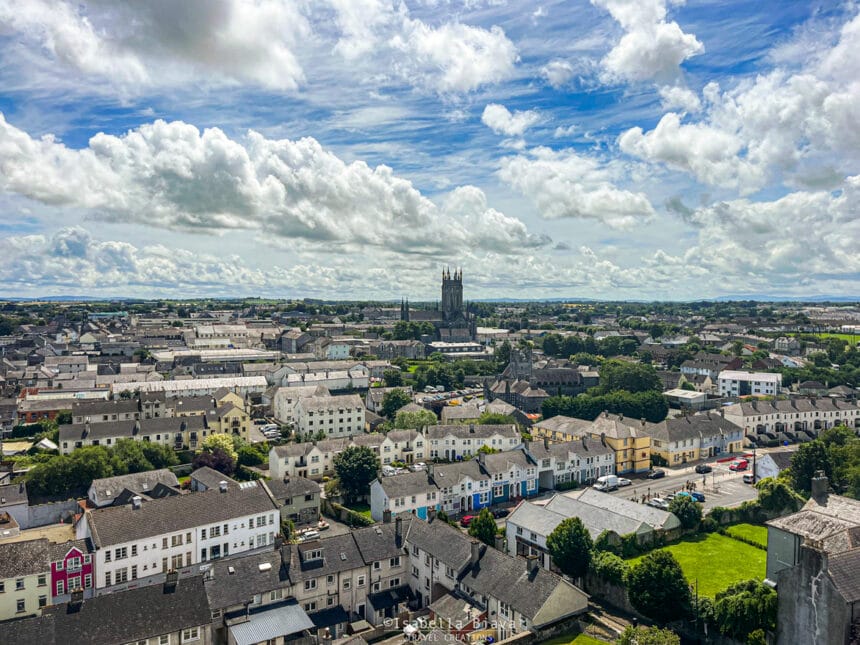
Are taxis expensive in Dublin?
Taxis in Dublin can be quite expensive compared to other cities. The fares are generally metered, and the cost will depend on the distance traveled and the time of day.
Currently, the initial charge for daytime is €3.80, while for nighttime and on Sundays, the initial charge is €4.20.
How long is the train journey from Dublin to Cork?
The train journey from Dublin to Cork is about 2 and a half hours from Dublin Heuston Station to Cork Kent Station.
However, note that travel times can change due to factors like train schedules, delays, and stops along the way.

What is the famous tourist street in Dublin?
The famous tourist street in Dublin is called Grafton Street, a vibrant pedestrianized street located in the heart of Dublin’s city center.
It is known for its lively atmosphere, bustling shops, street performers, and wide range of dining options.
Where is the best area of Dublin to stay?
Generally, the most popular area to stay in Dublin is the city center since it allows easy access to major attractions like Trinity College, Dublin Castle, and Grafton Street. It also offers a wide selection of hotels, restaurants, bars, and shopping opportunities.
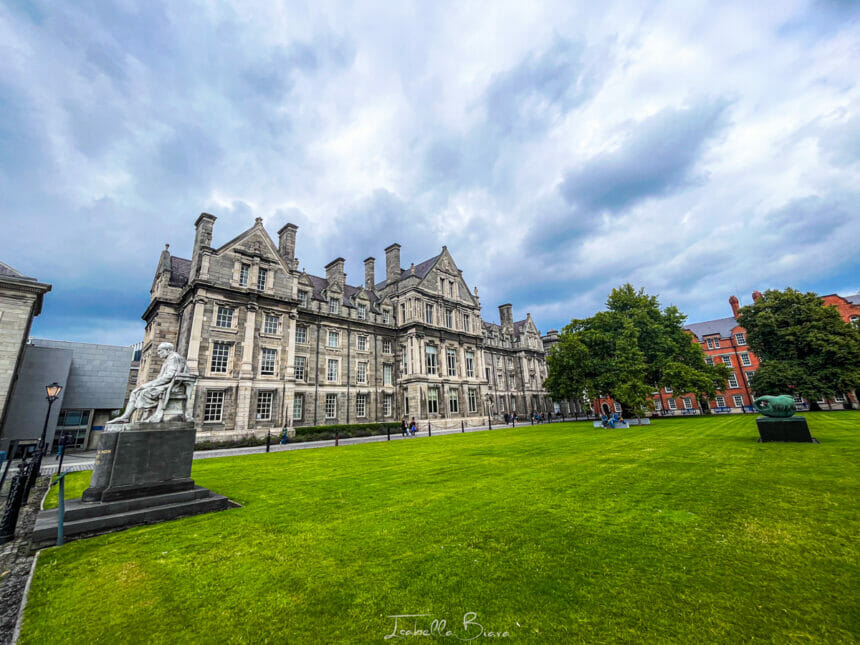
Final Thoughts: Day Trips from Dublin without a car
Dublin is not only a vibrant city to explore but also serves as the perfect starting point for fantastic day trips without the need for a car.
Whether you fancy visiting ancient ruins, exploring charming towns, or immersing yourself in breathtaking nature, these 17 amazing day trips, your Irish holiday is bound to be filled with extraordinary discoveries and unforgettable moments.
So, don’t let the lack of a car hold you back, and let the journey begin!
Before You Go…
Here are some useful posts that you might be interested in:
- 18 Things to Know Before Renting a Car in Dublin Ireland (2023)
- 25 Best Spa Hotels in Ireland for a Relaxing Getaway
- Driving In Ireland: 18 Must-Read Tips Before Renting A Car In Ireland
- The Ring Of Kerry Ireland (2023): The 18 Best Attractions And Tours
- The 7 Best Taxi Apps In Ireland

Founder and Editor
Isabella is traveler and animal lover, a former tourism professional with an multinational background that includes living and working in Jamaica, Antigua, Seychelles, Egypt, and Mexico, where she spent seven years. In 2017, she took a bold leap, leaving her fancy job in Cancun to embrace a nomadic lifestyle when she founded her travel blog Boundless Roads, with the purpose to help solo female travelers to live their best travel adventure, embracing their fears and choosing the roughed path. Today, she manages three successful travel blogs, balancing her digital ventures while exploring new places and photographing this beautiful world.
Leave a Reply Cancel reply
Your email address will not be published. Required fields are marked *
- Tour Account ›
- Travel Forum ›
- Travel Forum
- a week in Ireland...
a week in Ireland without a car?
I'm looking into going to England/Scotland in September and would like to add Ireland but I have no car. Pretty much every itinerary I've researched includes a car. Is it worth going to Ireland for a week (or longer, i can add days) without a car?
If you were suggesting a 7 day itinerary for someone without a car, what would you suggest? I know it's a super general question that can be answered many different ways, I'm just looking for some suggestions outside of travel websites. People on this site tend to be as informed as it gets. Also, should I look into organized trips even though I typically don't like them? thanks in advance for any replies and sorry for the vagueness and generality of my question.
I'd suggest a few days in Dublin, including perhaps the Mary Gibbons tour to Newgrange, then a train to Galway and a few days there with tours to the Aran Islands, and/or Connemara, and/or the Cliffs of Moher and Burren. The Dublin-Galway train is just a couple of hours. So is the bus between Galway and Dublin Airport, if you want to avoid an unnecessary transfer in Dublin. Look for day tours out of Galway on Google, or in guidebooks.
There's also good bus service between Dublin (and its airport) and Belfast if you want to see Belfast, but that would be more of a big-city trip. My preference would be rural areas in the west, with Galway as a base. There's much more to see in Ireland but with just a week and no car I'd keep it simple and minimize travel between cities.
I'm planning an 8 day Ireland trip in September/October without a car. Our plan is to keep it simple, realizing we will not see every small town without a car. We are flying in and out of Dublin, taking a bus directly to Galway for 3 nights, then train to Dublin for 3 nights, train to Belfast for 1 night and taking a bus from Belfast back to a Dublin Airport hotel for our last night.
I don't have all the details worked out yet, but so far we will be taking 2 day tours, one for the Cliffs of Moher and another (incredibly long and maybe not a good fit for everyone) to Kerry. We're planning to fill the rest of the days with sights in each city with the option for another bus tour if we feel we want to.
I think as long as you keep yourself to 2-3 bases maximum and are realistic about the limitations, you can have a very worthwhile week!
We just did exactly this in May.
We spent 3 nights in Belfast and 4 nights in Dublin. Yes, I know Belfast isn't technically part of Ireland, but....
We flew into Dublin and took the bus from Dublin airport to Belfast. (It's only a couple of hours.) We had the afternoon and evening in Belfast, and we just walked around and explored. The next day, we did a tour to the Giant's Causeway and other sights on and near the Causeway Coast. It was gorgeous. We did a private tour with Glenara Elite Travel for this. The day after, we walked around and visited a couple of churches and such. We would have liked to have visited City Hall, but it was closed that day. In the late afternoon, we did a murals/troubles tour with Paddy Campbell (Black Taxi) tours. I highly, highly recommend this if you go to Belfast.
We took the bus to Dublin the next morning. Train would have worked, too, but the bus station was just around the corner from our hotel in Belfast.
That afternoon and evening, we walked around and explored some of Dublin. The next day, we did a tour to the Boyne Valley, Trim Castle, Fore Abbey, and Loughcrew tombs. We really liked that. The day after, we did a tour to the Rock of Cashel, Blarney Castle, and Cahill Castle. It was excellent, as well. Both were with Irish Day Tours. The last day, we toured Kilmainham Gaol, St. Patrick's Cathedral, the Book of Kells, and Christ Church Cathedral.
If you don't want to go to the North of Ireland, then I would suggest choosing one other city for a base, such as Galway or Cork, in addition to Dublin, and book some tours from those places.
You can get to the Rock of Cashel, Blarney Castle, etc. by public transport, but it is a bit more complicated and time consuming. This is why we decided to do day tours. They were long days, but very good.
Be aware that almost everything in Ireland needs to be booked in advance, even restaurants, even on weeknights. Kilmainham Gaol, the Book of Kells, etc. usually need to be booked at least a day in advance (the gaol WELL in advance), or you will be out of luck.
Hope that helps!
Very possible. We did it by having three 2-night says and a couple of one-nighters, and hiring a driver to take us between locations, and also on the lovely road thru Connemera. There are many advantages to having a local drive, along with the delightful surprises they can show you along the way.
I think the person we hired (now 9-10 years later) may have retired. Messages sent thru his old web site and his old email bounce back. But your hotels/BnBs should be able to recommend someone...and that "someone" could very well wind up being a few different people depending on how far of a range you travel.
After all was said and done, I analyzed the costs vs. if we had just rented a car and paid our own petrol, insurance on said rental car, and it was not that much of a difference in cost.
It is doable to see some of Ireland in a week without a car. Will you have seven full days on the ground or are you including travel time from somewhere in England or Scotland? Will you put Ireland at the beginning, middle, or end? Will you fly or take a ferry? All of these things will determine what your best locations in Ireland will be as you will likely want to stay in towns that will have quick access to the train. For instance, you might find a cheap flight into Cork, and then it would make more sense to spend your time in that area. Generally, my suggestion would be to pick two larger towns to split your time so you aren’t wasting the little time you have sitting on a train to get somewhere. Dublin and Galway are close by train, and if you were to spend three days in each you could see quite a variety of sights using guided day tours. From Cork it’s easy to get to Killarney by train. Belfast is also a quick train ride from Dublin and three days there would also be nice. So, from Dublin you could do a day trip to Newgrange, Glendalough, Monasterboice and Hill of Tara maybe. From Galway you could do trips to Cliffs of Moher and the Burren, Connemara, and Aran Islands. From Killarney you could do a day trip to the Dingle Peninsula, Ring of Kerry, Gap of Dunloe. Lots of variety, but it will really depend how you will get there.
thanks everyone for the replies. It seems like a lot of suggestions here advise to just split the trip up into Dublin and Galway and do day trips so maybe that's what I will plan on doing. I'm only in the beginning stages of planning this trip and can add days if necessary. So how about something like this: 1. arrive in dublin 2. dublin 3. day trip somewhere from dublin. 4. dublin to galway 5. day trip aran islands 6. day trip cliffs of moher 7. day trip connemara 8. leave
rick steves also recommends this for a 8 day itinerary: 3 days: Dublin 5 days, add: Dingle Peninsula 8 days, add: Galway, Aran Islands,
should i try to add dingle peninsula?
from google images, some of the scenic sites seem a bit similar to each other so I can't tell what is worth adding and what may be repetitive for a short trip (or perhaps nothing is repetitive).
Without a car Dingle will be very time consuming to get to.
thanks Anita, i guess Dingle is out
so i added some days and here's what i'm thinking now
- arrive galway
- aran islands/cliffs of moher organized trip. It ends at 6 and the last train to dublin is 7:20 or something similar to I'd like to take that and have 2 full days. Does that seem feasible? Or should i just go to dublin next day?)
- 3 day organized trip to dingle
- 2 day organized trip to norhtern island
- northern island
does that seem like a good way to spend 10 days without a car?
My wife and I have planned a 14 day trip to Ireland w/o a car. We have a hotel in Dublin for the 1st couple of days. We arranged it so that we booked the hotel the night before we are actually arriving so we can recover from the overnight air trip. We plan on using the train service between Dublin (Connolly Station) and Sligo go on a half day tour to Donegal, stay overnight in Sligo. We will then be picked up to go on a tour of County Mayo before being dropped off at our B&B in Castlebar, County Mayo. The next day we will go by train to Galway probably having to change trains in Athlone. After a couple of nights in Galway we go back to Dublin overnight and then take a train (Heuston Station) to Waterford and a bus to Macroom to stay two nights in a B&B, tour the greater Cork City area for a day. We will take a bus from Macroom to pick up the train in Millstreet and on to Killarney. Three nights in Killarney. Take a group tour of Kerry and a private tour of the Beara Peninsula (where some of my ancestors came from). We will then take a train to Dublin and stay overnight before leaving Ireland.
Dayexday I see no one has responded to your last question about the various organized tours. It’s difficult to comment on any of it without knowing the itinerary for each tour. My concern is that you will be doing a lot of rushing around to join all of these various tours, and it may end up costing quite a bit to do all of these tours. Will it allow you to see everything you want to see, or will it be the green blur tour?
This topic has been automatically closed due to a period of inactivity.

Travelling Ireland without a car: Tips from a local
Can You Travel Through Ireland Without a Car ? Ireland, the land of ancient castles and rolling green hills is a place that captures the hearts of everyone who visits. But what happens when you want to explore this enchanting country without the convenience of a car? Is it even possible to experience its magic on foot or by public transport? The answer is yes, and you can embark on your travel in Ireland without a car and let yourself be swept away by its rugged coastline, charming villages, and warm hospitality.
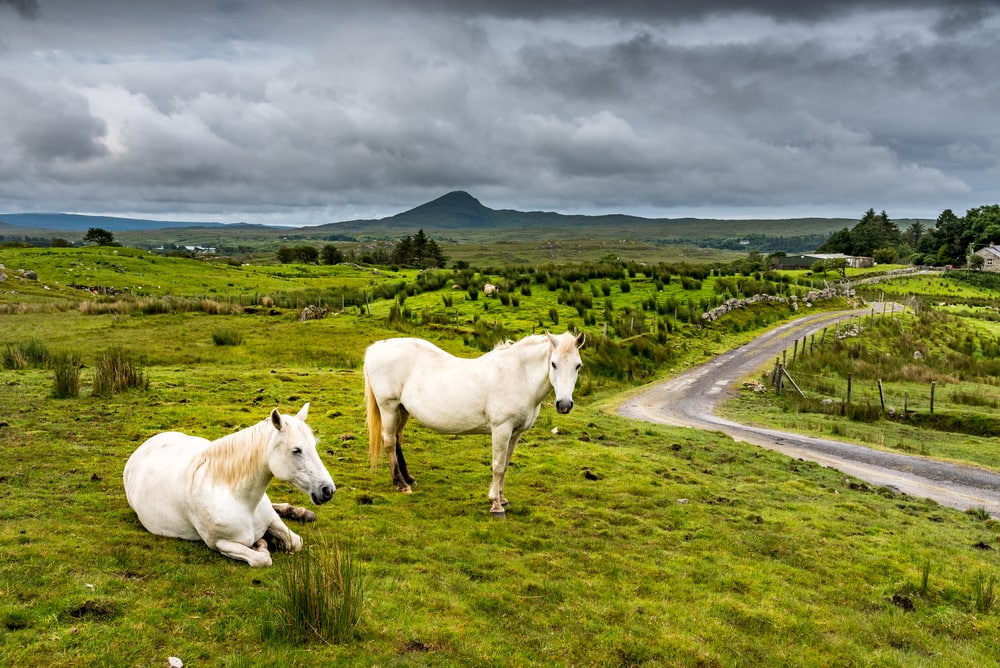
Is is possible to travel Ireland without a car? Absolutely planning a trip to Ireland can be accomplished without renting a car but careful planning needs to take place first before you head to Ireland. Traveling in Ireland without a car is possible you just need to plan carefully to take into account the limitations of buses and trains. Public transportation in Ireland is not great although you can get to the major cities by bus or train but the sites you may want to see will be another story. The best way to travel Ireland if you want to see incredible landscapes, head to hiking trails and visit small beautiful villages is to rent a car . However, those small roads, roundabouts and driving on the other side of the road can be intimidating.
It is important to note that there are situations in which having a car is vital. For example, if you decide to go hiking in Ireland, although it is an excellent way to get around Ireland, the trailheads and starting points for hiking may be situated in remote, countryside towns with no available public transportation. Similarly, there might be a limited number of taxis in these areas, which can make it challenging to reach your starting point or arrange for a pickup at the end of your hike.
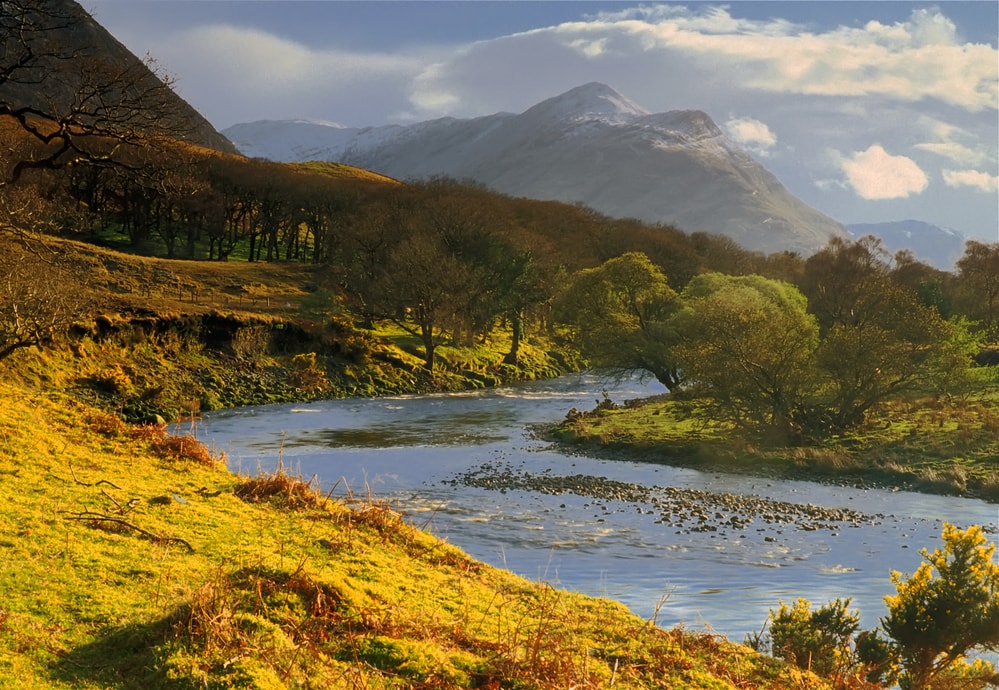
Renting a car in Ireland Essential guide to renting a car in Ireland
- Travel around Ireland without a car
To get around Ireland without a car the first thing to do is make up your bucket list of places you want to visit in Ireland. Many of the exciting sites in Ireland are only reachable by car or by tour if you are not driving yourself.
Once you have your bucket list together you can then start to plan your Ireland itinerary using Ireland’s public transportation network which will include trains, buses and private tours.
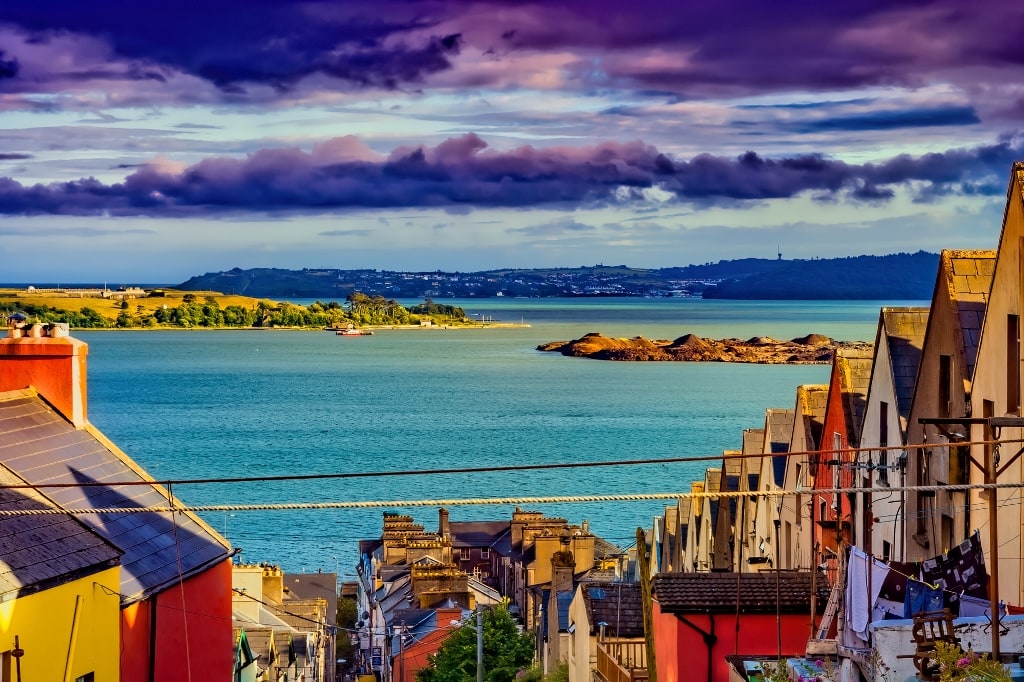
Ireland by train and bus
Travel dublin without a car, day trips from dublin without a car: newgrange, tara, glendalough, powerscourt, dublin to newgrange, dublin to the hill of tara, dublin to powerscourt, dublin to glendalough, aran islands without a car, killarney national park without a car, dingle peninsula without a car, 2-day cork, blarney castle and ring of kerry rail trip from dublin, full-day tour of the dingle peninsula, slea head, and inch beach, how to get to cork, how to get to dingle ireland, how to get to limerick, how to get to galway, how to get to tralee, how to get to waterford, how to get to westport, how to get to rosslare, how to get to sligo, tfi local link, regular rural bus services, day trips from dublin by train, travelling northern ireland without a car, irish train deals for adults from dublin, belfast visitor pass.
- Game of Thrones™ Filming Locations and Giant's Causeway from Dublin
Blarney Castle Day Trip from Dublin
Kilkenny, wicklow mountains, glendalough, sheep dog trials, day trip from dublin, cliffs of moher tour including wild atlantic way and galway city from dublin.
- Northern Ireland Highlights Day Trip Including Giant's Causeway from Dublin
Xyuandbeyond is reader-supported. When you buy through links on our site, we may earn an affiliate commission . You can read my privacy policy here.
What is the best way to travel around Ireland? Travelling Ireland by bus and train is possible but keep in mind the trains are limited and will only travel to major cities and you may need a combination of public transport both buses and trains. For example, if you want to head to Donegal it would either be a bus journey from Dublin Airport or a train to Sligo then a bus to Donegal Town . There is a direct train departing from Dublin, Drumcondra and arriving at Sligo. Services depart every two hours and operate every day. The journey takes approximately 3h 6m.
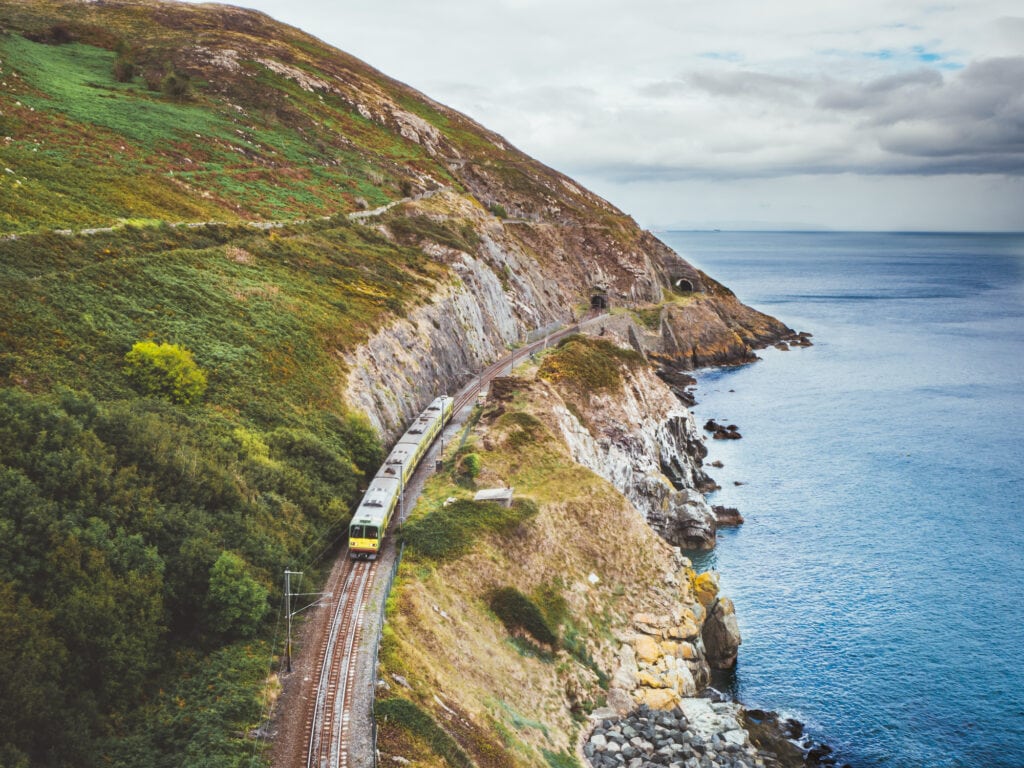
Time is another area you have to factor in. While the train to Sligo as in the example above takes around 2.5 hours then add on the bus trip time which is around another hour or so not including waiting for the bus. But if you took a bus from Dublin airport you would have one journey to Donegal Town taking around 3.5 hours depending on traffic and stops.
The other disadvantage of trains is that they don’t make stops at historical sites or places that you might want to visit in Ireland.
This is why I say carefully figure out your Irish itinerary and where you want to go before you get here so you can plan your Irish public transportation route or book a tour to get you to a specific site.
Book your Irish train tickets here
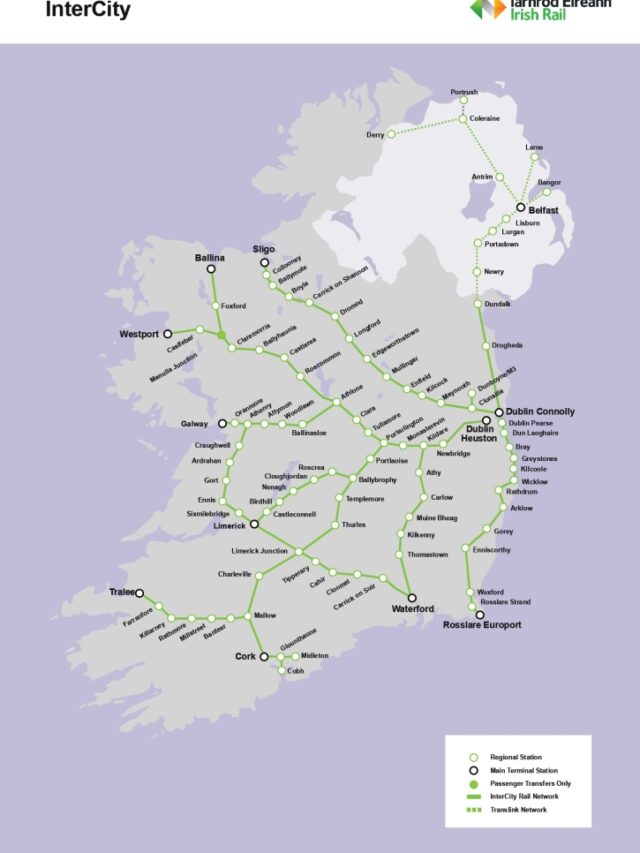
To be honest with you both Dublin and Belfast in Northern Ireland are well served with buses and getting around each city is simple not to mention the fact that both are very easy to walk around. If you spend a few nights in Dublin you will not need a car to explore the city. This example of an Ireland itinerary without a car demonstrates that you can explore numerous major cities and landmarks in Ireland using public transportation. By utilizing a mix of bus and train travel, you can easily access main cities and towns as your base, and then venture out on shorter trips to visit less accessible attractions.
From Dublin, you can jump on the coastal Dart train to visit the beautiful villages along the coast like Howth and Dalkey. There is an extensive public bus network to travel the city and suburbs. If you are here for a few days then the best value across bus and rail options is the Leap Visitor Card .
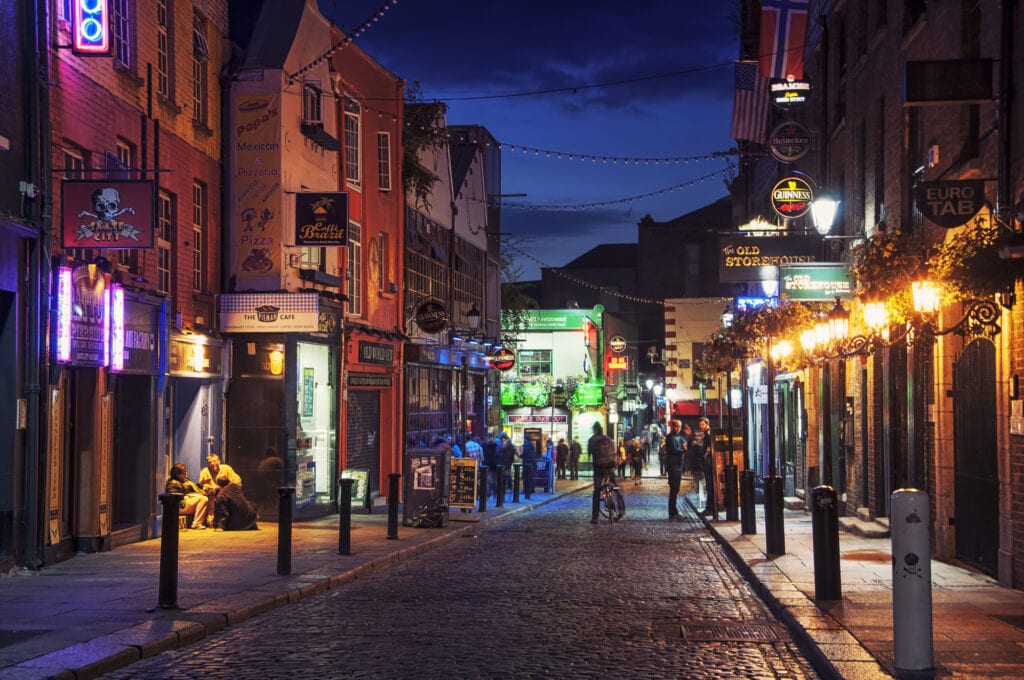
The Leap Visitor Card is the most convenient public transport card available for tourists and visitors to Dublin. Get unlimited travel over your selected period on Dublin Bus, Go-Ahead Ireland routes in Dublin, Luas, DART and Commuter Rail. You can even travel to and from the Airport at the start and end of your trip without any additional charge. Leap Visitor is not valid on the Hop on/Hop off tour or other special tour services and cannot be used on Bus Éireann services.
Why not download the official Transport for Ireland Journey Planner to view all of Dublin’s transport options? It’s completely free and covers buses, Luas, taxis, ferries and even walking!
How to get around Ireland without a car
How far is Newgrange from Dublin? The drive to the Brú na Bóinne Visitors Centre where Newgrange is accessed is relatively easy from Dublin by car. The drive from Dublin takes around 40-45 minutes. There are no buses from Dublin to Newgrange and the centre however there are many tours that will take you to the area and include other stops along the way including Monasterboice and Kells . The cost is around €35+ and will take up a whole day.
The visitor centre is served by Bus Éireann route 163, running between Drogheda Bus Station and the visitor centre but there are only 2 runs per day and the bus doesn’t run on Sundays except during July and August. The first departure from Drogheda bus station is at 11:15 am, while the second (and final) is at 14:45pm.
You could also take the train from Dublin to Drogheda and then the bus to the Visitor Centre. You could also take a taxi from the station to Newgrange.
Read about Newgrange here – Best tips on visiting the awesome Newgrange Tombs in Ireland
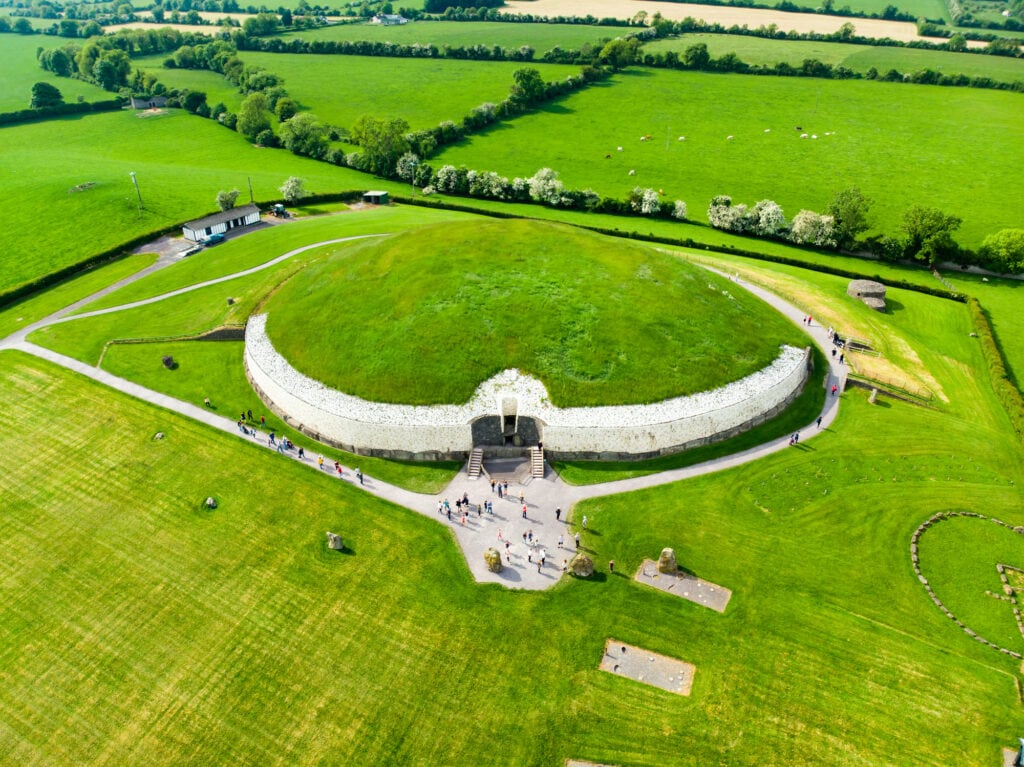
Bus Eireann’s Navan bus 109 will leave you on the main R147 road, about a 10-minute walk from Tara.
Read about the Hill of Tara here – Mystical Hill of Tara Ireland
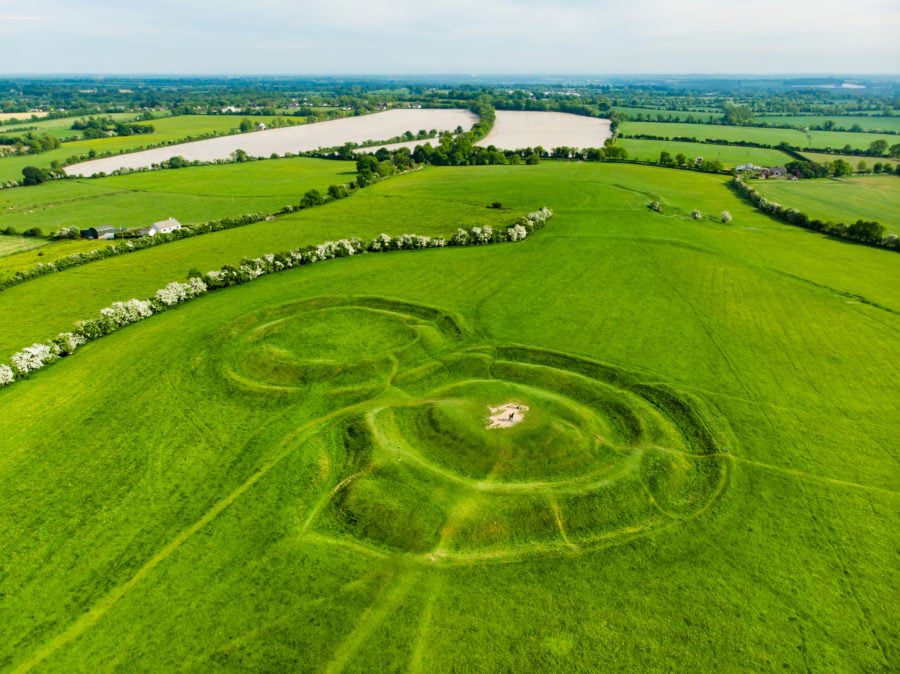
The closest public transportation to the Powerscourt Estate is the 185 and 44 bus services which leave visitors in Enniskerry village in County Wicklow.
This is a short walk from the Estate (approximately 25 minutes, wear comfortable shoes). Bus timetables are available here.
The nearest DART station (rail) to the Estate is Bray, County Wicklow which connects the 185 bus with Dublin City Centre. The rail line runs along the coast of Dublin, from Malahide and Howth southwards as far as Greystones, County Wicklow. Full timetables for the DART are available here.
There is no public transport to Powerscourt Waterfall. It is 6km from Powerscourt Gardens.
Read about Powerscourt here – Visiting Ireland’s Magnificent Powerscourt Estate
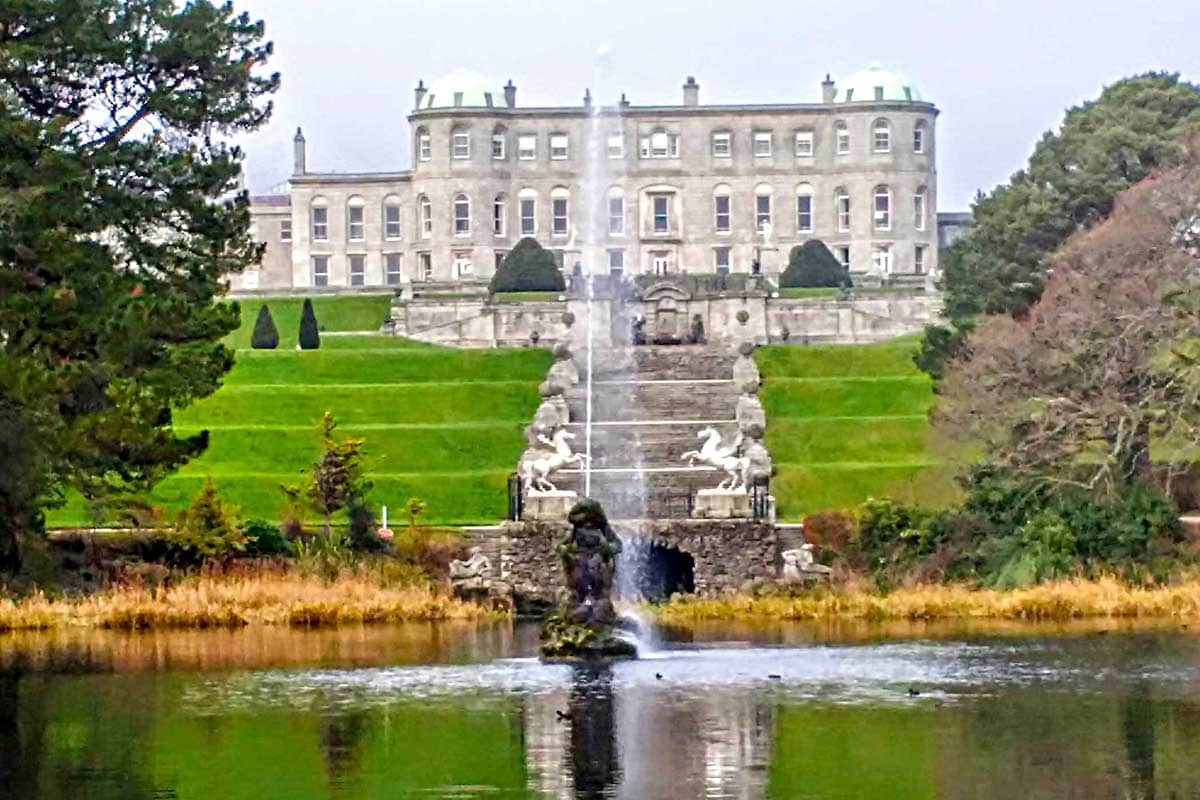
Glendalough is located in the Wicklow Mountains , and there is no train service to the site the best ways to get there are by private car, bus or coach tour. While Glendalough is a fascinating place you should plan to spend the whole day as the one private bus service available – St Kevin’s bus , leaves Dublin every day at 11.30 and brings you to the Glendalough Visitors centre and comes back at 4.30 pm.
Read about Glendalough here – Ultimate guide to Glendalough Ireland’s ancient monastic heritage
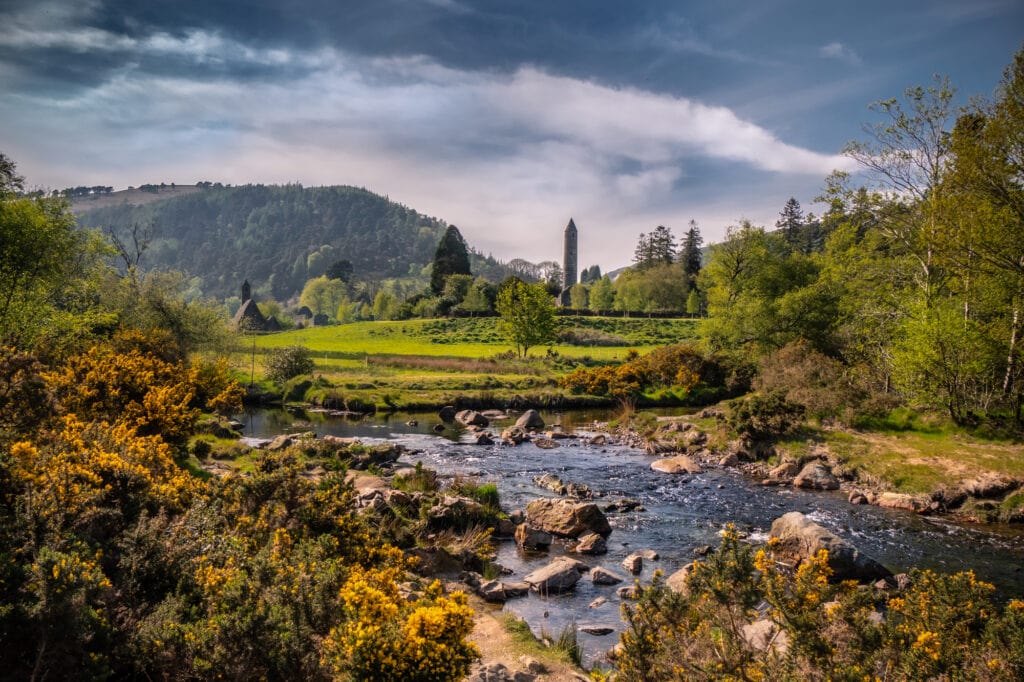
Aran Islands, Killarney, Dingle without a car
To get to Galway take the train from Dublin and then arrange a tour with Aran Island Ferries they have a shuttle bus from Galway and passengers can enjoy tea, coffee, snacks and full bar facilities during their 40-minute journey.
The daily shuttle bus service departs from Galway city (Queen St.) to the ferry terminal in Rossaveel.
Read more about Ireland’s Island here – 36 Islands of Ireland – the ultimate guide
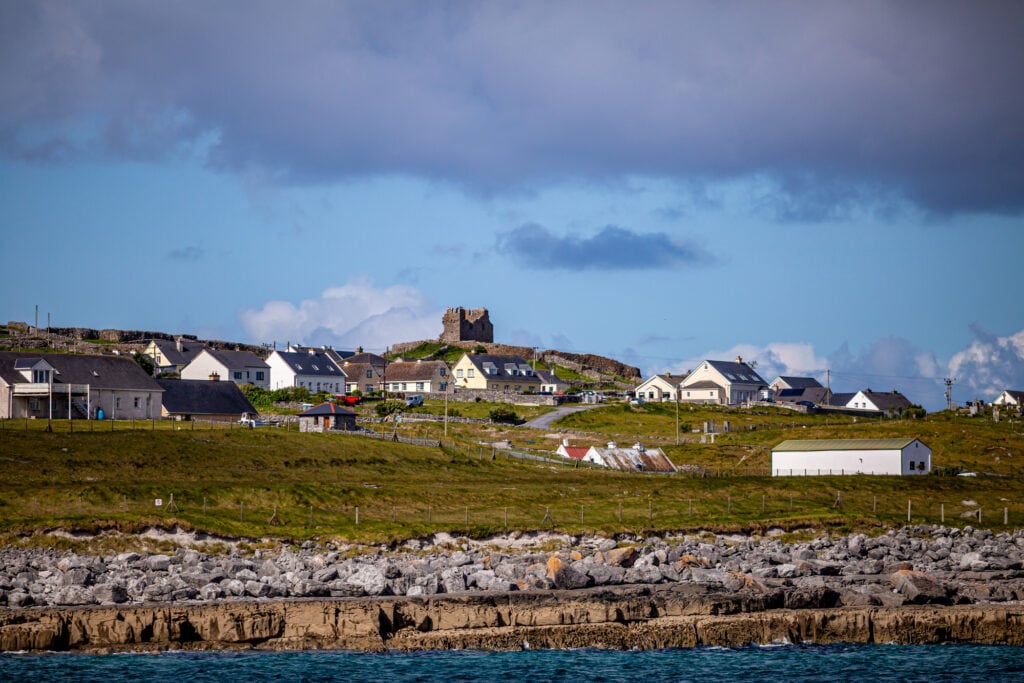
There is no direct train to Killarney so you would have to take the train from Heuston Station to Mallow and from Mallow to Killarney. The train stops in Anabella just outside Mallow in County Cork.
Once you arrive in Killarney there are two shuttle bus services to the Killarney National Park the Killarney Shuttle bus does day tours in Killarney. The shuttle visits Ross Castle, Muckross Abbey, Muckross House and Traditional Farms, Torc Waterfall and Ladies View. Pickup is possible from your Hotel. The Shuttle bus makes 2 trips daily to the Gap of Dunloe starting from the Tourist office.
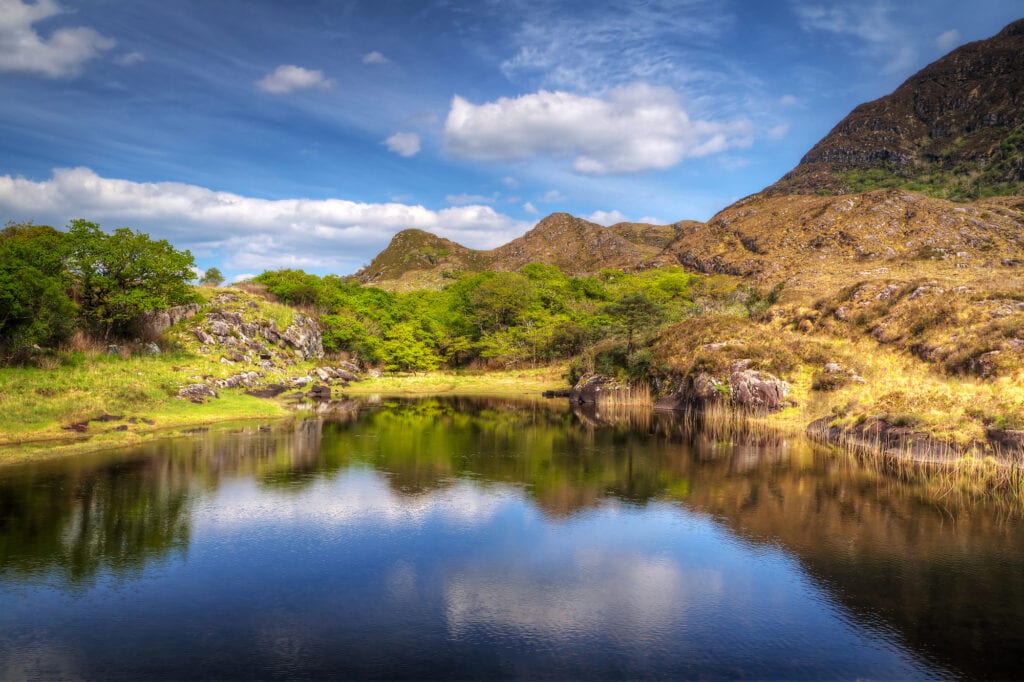
The Killarney Tour is a tour of the world-famous Ring of Kerry a luxury maximum 29-seat bus travels around the 180km circuit of the county’s famous Ring of Kerry.
Take a traditional Jaunting Car these are available from Killarney Town Centre once you arrive and they will take you through your chosen route of the Killarney National Park.
Read more about Killarney here – All the best things to do in Killarney
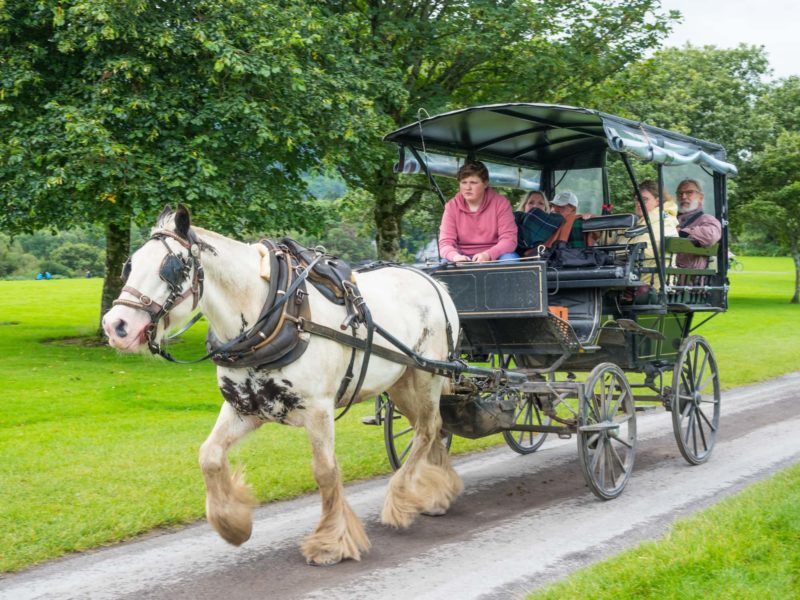
You can get a train to Cork from Dublin and then change trains to Killarney. The train runs 5x per day and takes around 1 hour 15 minutes.
Bus connections to Dingle are from outside Tralee Station and the journey time is 1 hr. Once you are in Killarney you can book a bus tour of the Dingle Peninsula.
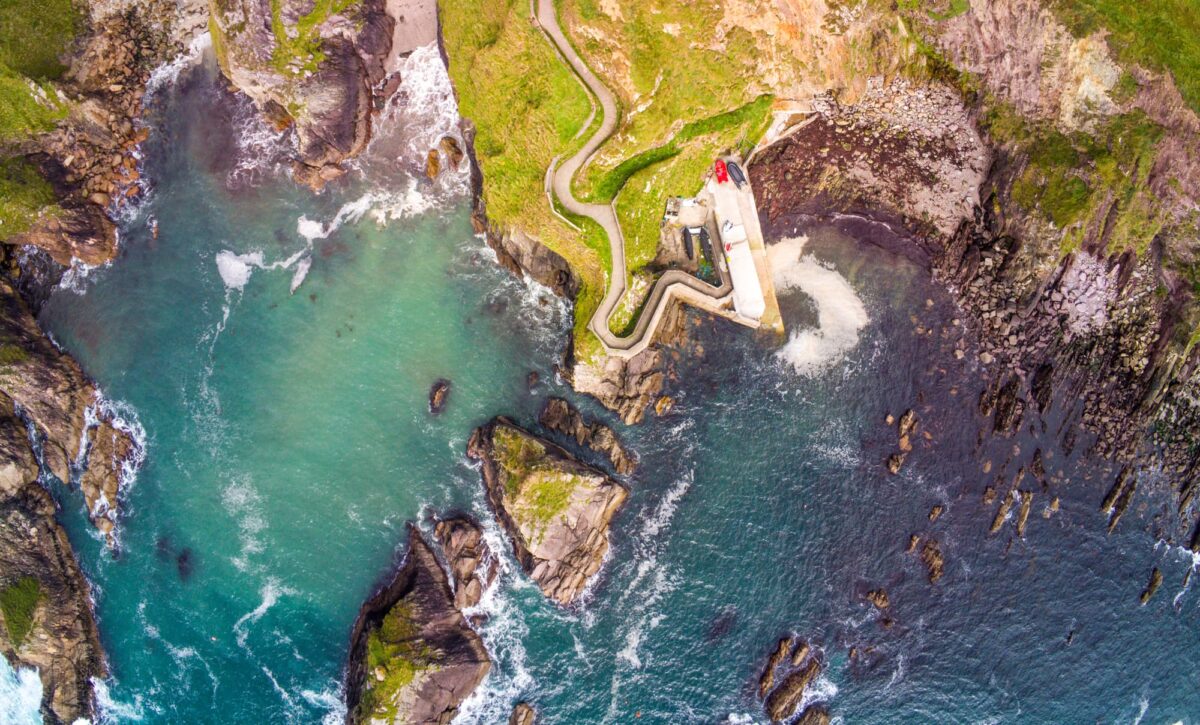
Guided Tours or Ireland from Dublin
Enhance your experience of Ireland’s stunning coastal scenery on a relaxed 2-day trip to Cork and the Ring of Kerry from Dublin. Travel through Ireland’s beautiful countryside and visit iconic attractions like Blarney Castle, home to the famous Blarney Stone, and the gorgeous Dingle Bay. Enjoy an overnight stay in the convivial town of Killarney; revitalize with a fulfilling full Irish breakfast; and learn about the rich culture and history of the region from a professional guide. Read more about 2-Day Cork, Blarney Castle and Ring of Kerry Rail Trip from Dublin
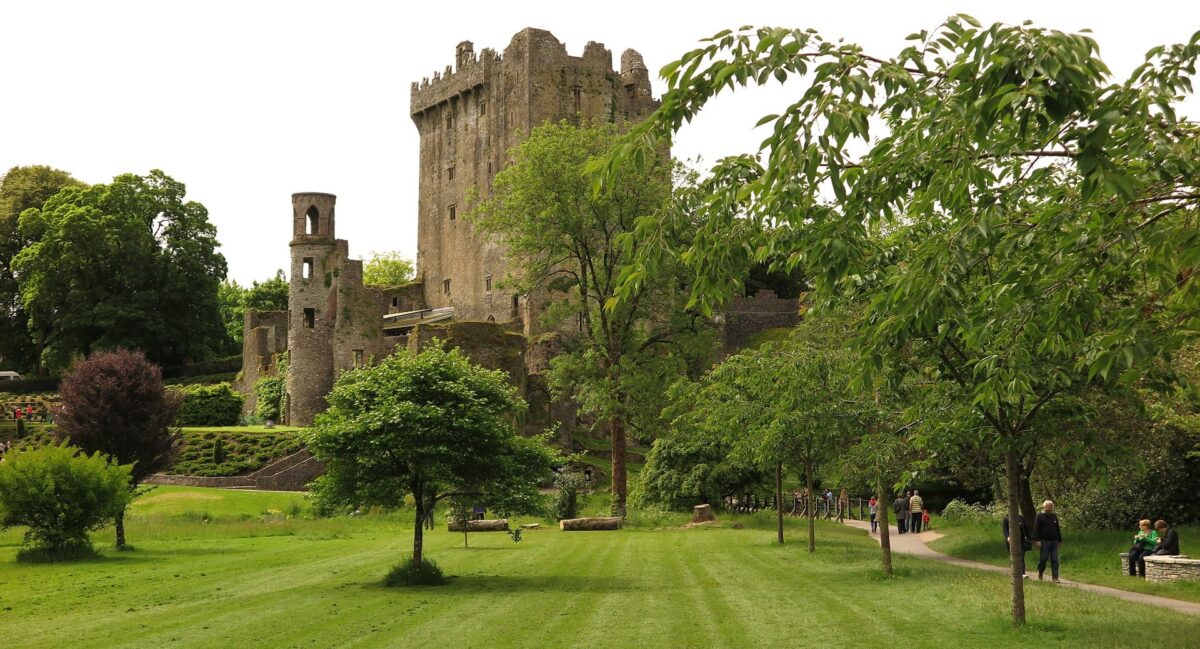
Experience the rugged beauty of Ireland’s southeast coastline on a coach tour of the Dingle Peninsula and Slea Head. From Killarney, travel through scenic mountain regions and along Ireland’s rocky beaches . Spot ancient huts and historic buildings such as the Gallarus Oratory, visit Dingle Town and get a splendid view of Slea Head—the most westerly point in Europe. Read more about the Full-Day Tour of the Dingle Peninsula, Slea Head, and Inch Beach
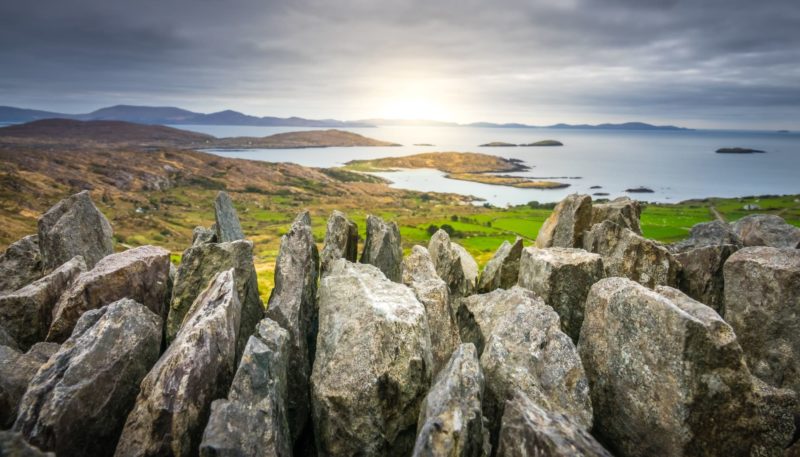
Dublin to Galway, Limerick, Dingle, Waterford, Sligo, Wexford, and Rosslare by train
8 train routes are operating out of Dublin. They include the following:
Dublin (Heuston Station) to Cork (Kent Station)/Cork to Dublin – the average journey takes approximately 2 hours and 40 minutes.
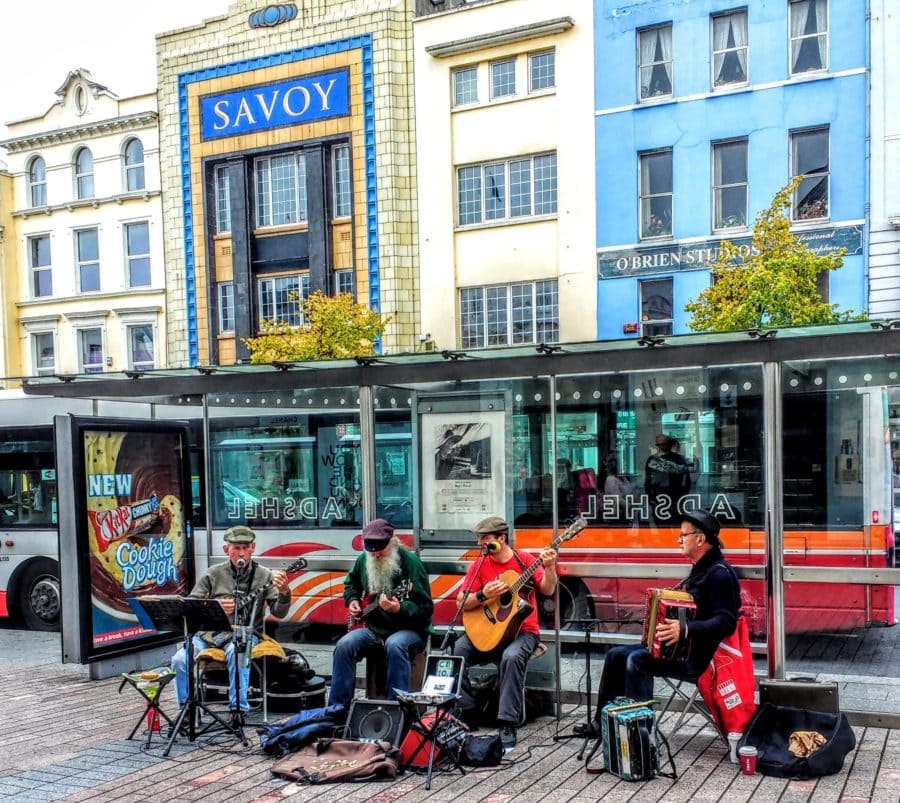
There are regular trains from Heuston to Tralee, which take approximately four hours. From Tralee station, you can get a bus direct to Dingle town, which takes an hour.
Dublin (Heuston) to Limerick Colbert Station/Limerick to Dublin – takes approximately 2 hours.
Dublin (Heuston) to Galway (Ceannt Station)/Galway to Dublin – average journey time is between 2 hours and 11 minutes and 2 hours and 37 minutes.
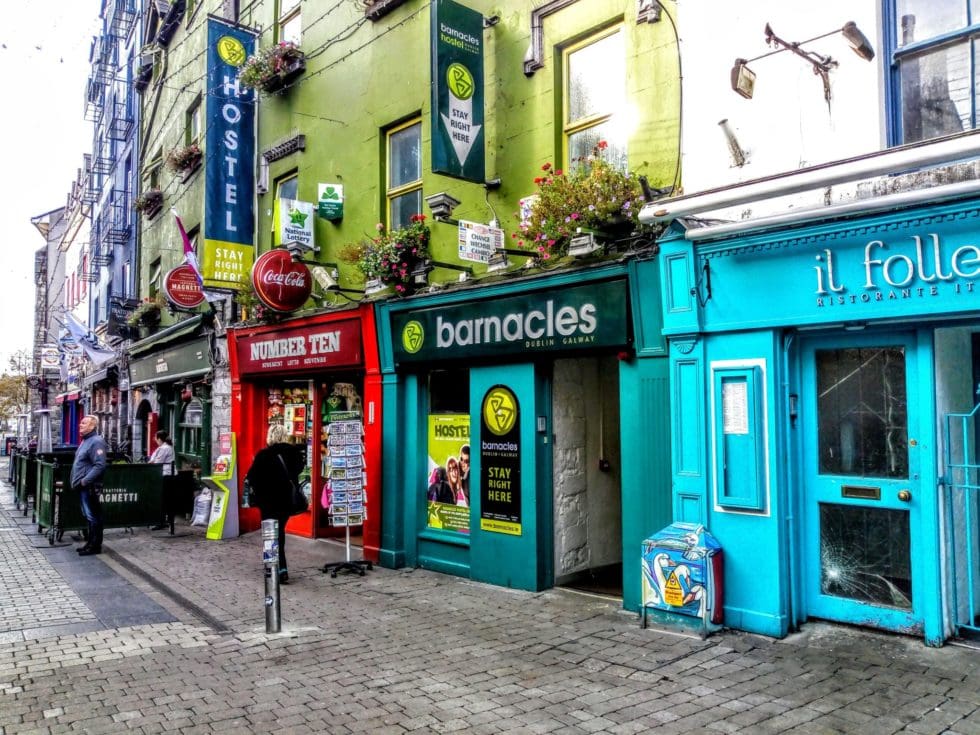
Dublin to Tralee (Casement Station), Co. Kerry/Tralee to Dublin – this is not a direct route.
Dublin (Heuston) to Waterford (Plunkett Station)/Waterford to Dublin – the journey ranges from 1 hour and 48 minutes to 2 hours and 20 minutes.
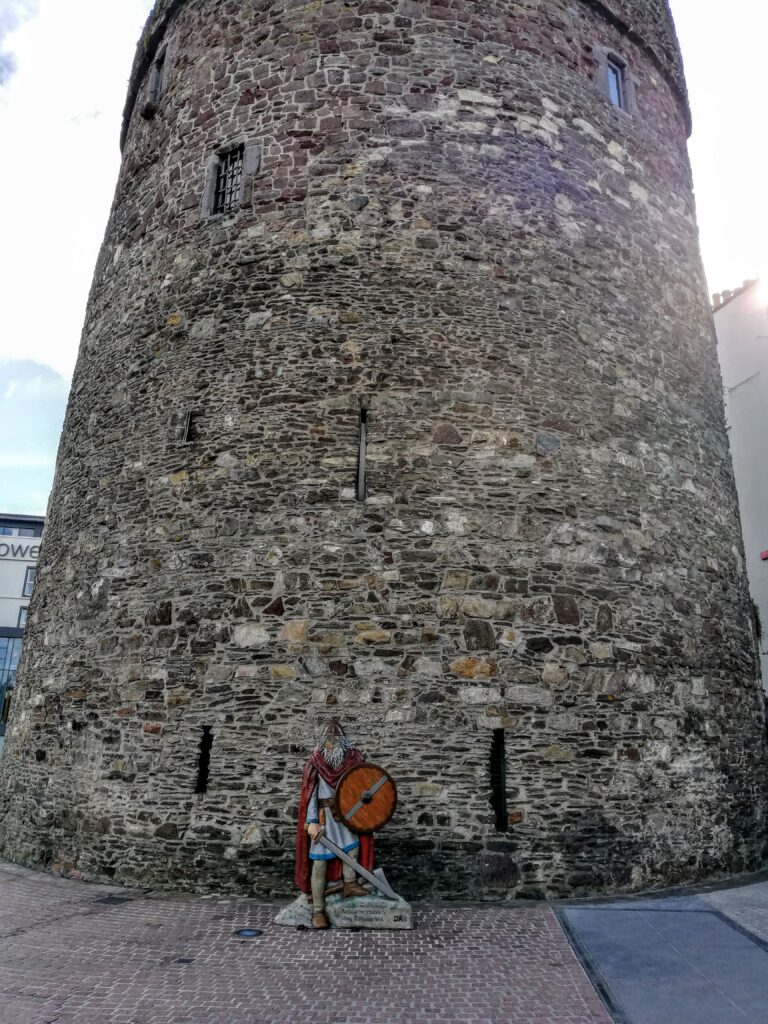
Dublin (Heuston) to Westport/ Westport to Dublin – the average journey is between 3 hours and 6 minutes to 3 hours and 44 minutes.
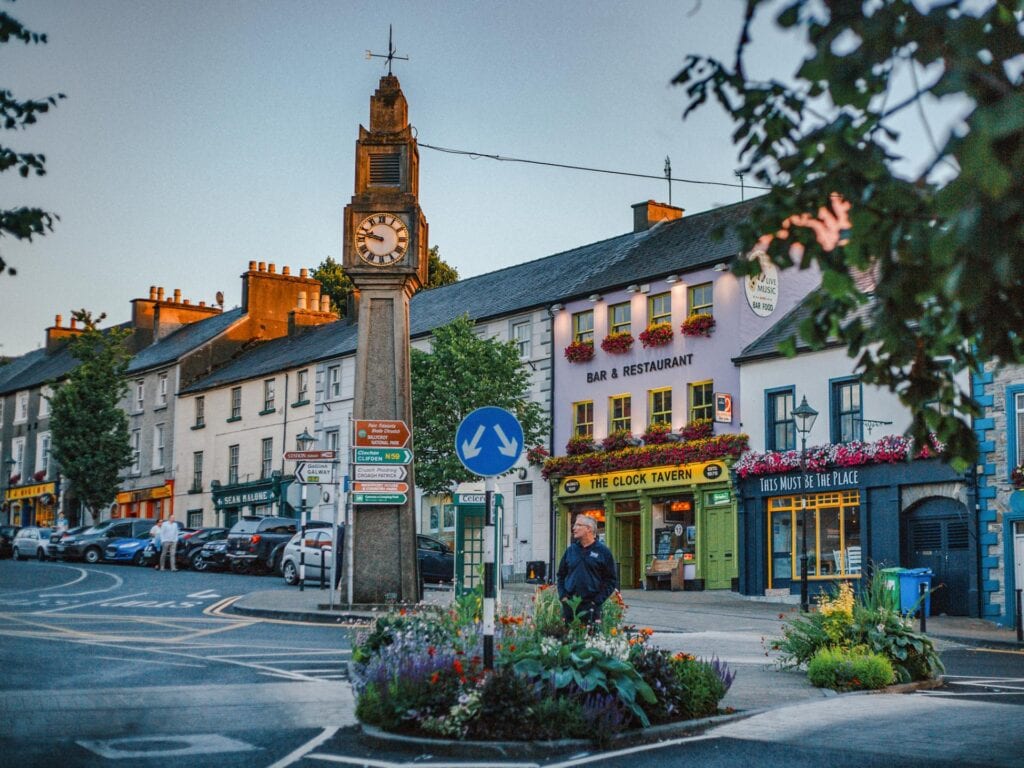
Dublin (Connolly Station) to Rosslare Europort/Rosslare to Dublin – approximately 3 hours.
Dublin (Connolly) to Sligo (MacDiarmada Station)/Sligo to Dublin – takes approximately 3 hours and 20 minutes.
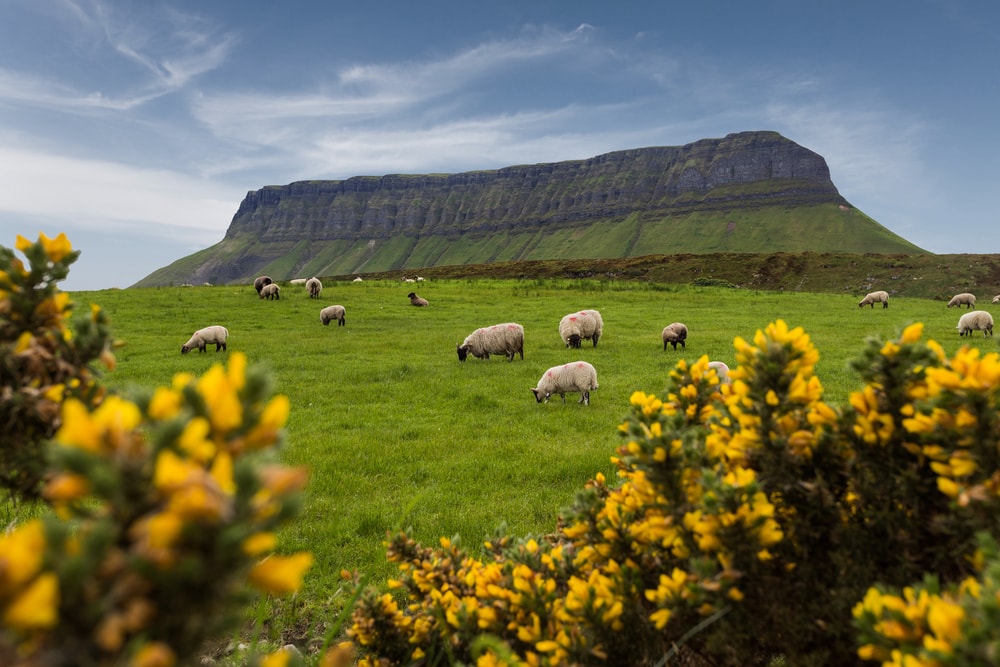
Bus Transportation across Ireland
If you want to see the more rural parts of Ireland without renting a car, it is best to take a bus. Bus Eireann operates buses all across the country, reaching the most rural of places but don’t forget to calculate the times including getting to the bus stop, travel time across the country and then the return trip.
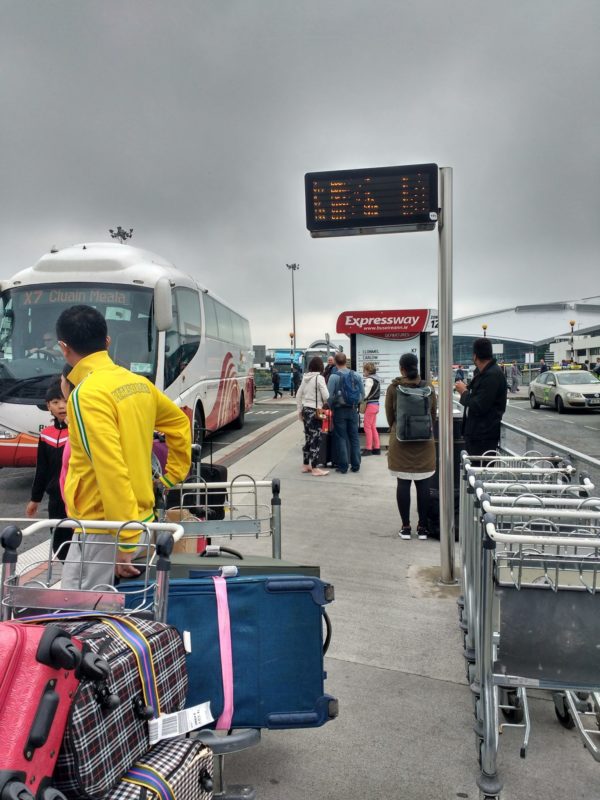
A day return travel pass is valid for both outbound and return travel within 24 hours. A monthly travel pass can also be purchased, which is valid for outbound and return travel within one month.
Bus Eireann also offers a 10-journey travel pass, which can be purchased online and on the bus. This pass is valid for 10 journeys between two points, all taking place within 7 consecutive days. You can find more information about this pass and other travel options on the Bus Eireann website .
Another way of seeing Ireland is to use Go Bus . They offer around 20 return routes starting in Dublin to the Dublin Airport, Galway, Cork, and Ballina in Mayo.
TFI Local Link bus services connect communities throughout rural Ireland as part of the TFI Public Transport Network. TFI Local Link bus services are affordable and available for anyone wishing to travel to or from their local town or village.
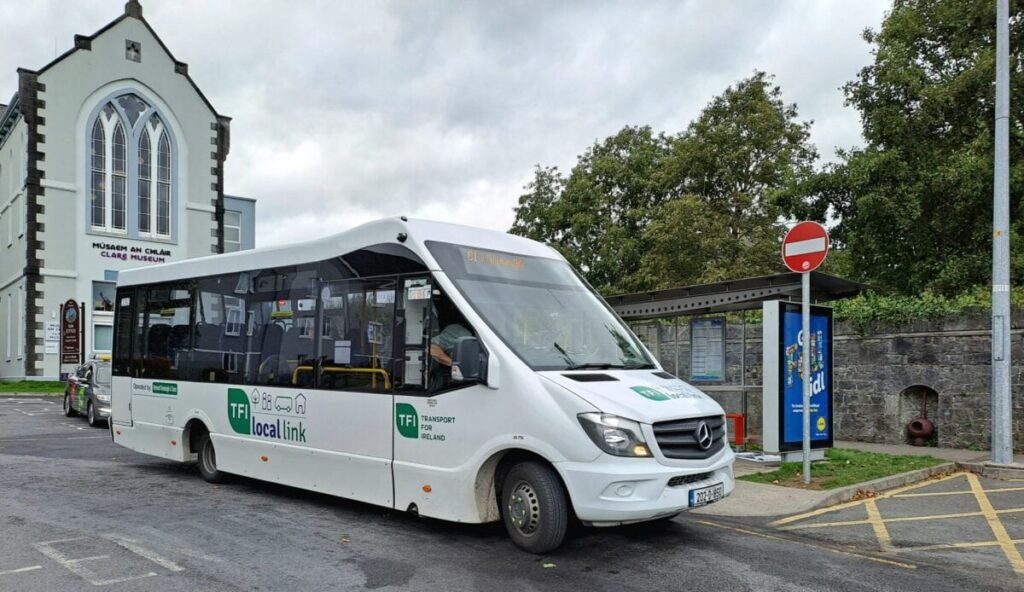
TFI Local Link Regular Rural Bus Services operate on a fixed route between towns and villages and have a scheduled timetable. Regular Rural Bus Service timetables are designed, to maximise connectivity with Bus Éireann, commercial bus services and Iarnród Éireann networks to facilitate passengers who may need to connect to the national TFI network.
These services are frequently used by local residents, commuters, students and tourists. Click here for Regular Rural Bus Service Timetables
If your bucket list includes the Ring of Kerry or touring Game of Thrones sites like the Giant’s Causeway in Northern Ireland, visiting Kilkenny and seeing the Wicklow Mountains , or touring the Wild Atlantic Way you may want to take advantage of Railtours Ireland day trips from Dublin.
You catch an early morning train from Dublin to whichever city is closest to the Irish tourist attraction and when you arrive you take a guided coach tour around your destination. The tours include stops for lunch as well as photo opps and then returns you to Dublin in the evening. They also offer longer tours of Ireland as well. Book online at railtoursireland.com .
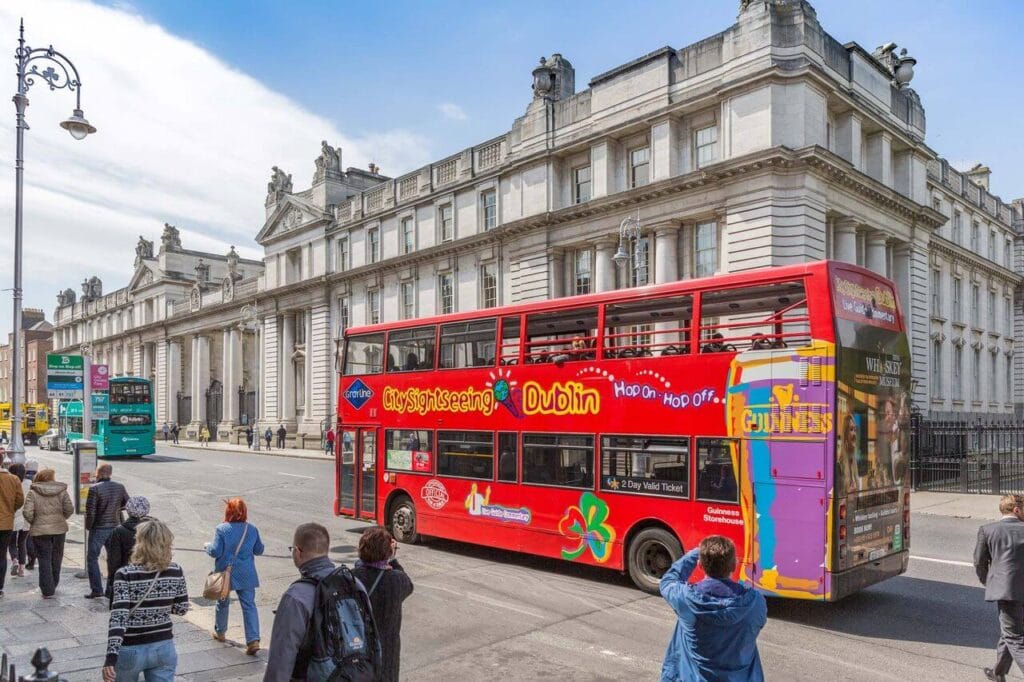
How do I get from Dublin to Belfast without a car? There is a direct train from Dublin to Belfast that departs from the Gresham Hotel and arrives in Belfast at Belfast City Centre the Lanyon Place station. This station is a short walk to the Titanic Quarter or to St. George’s Market and an easy location to grab a Belfast bus to the centre of Belfast. This train takes around 2 hours to get to Belfast from Dublin. You can buy your tickets at www.irishrail.ie and one-way or return tickets starting in Belfast at www.translink.co.uk/Services/NI-Railways .
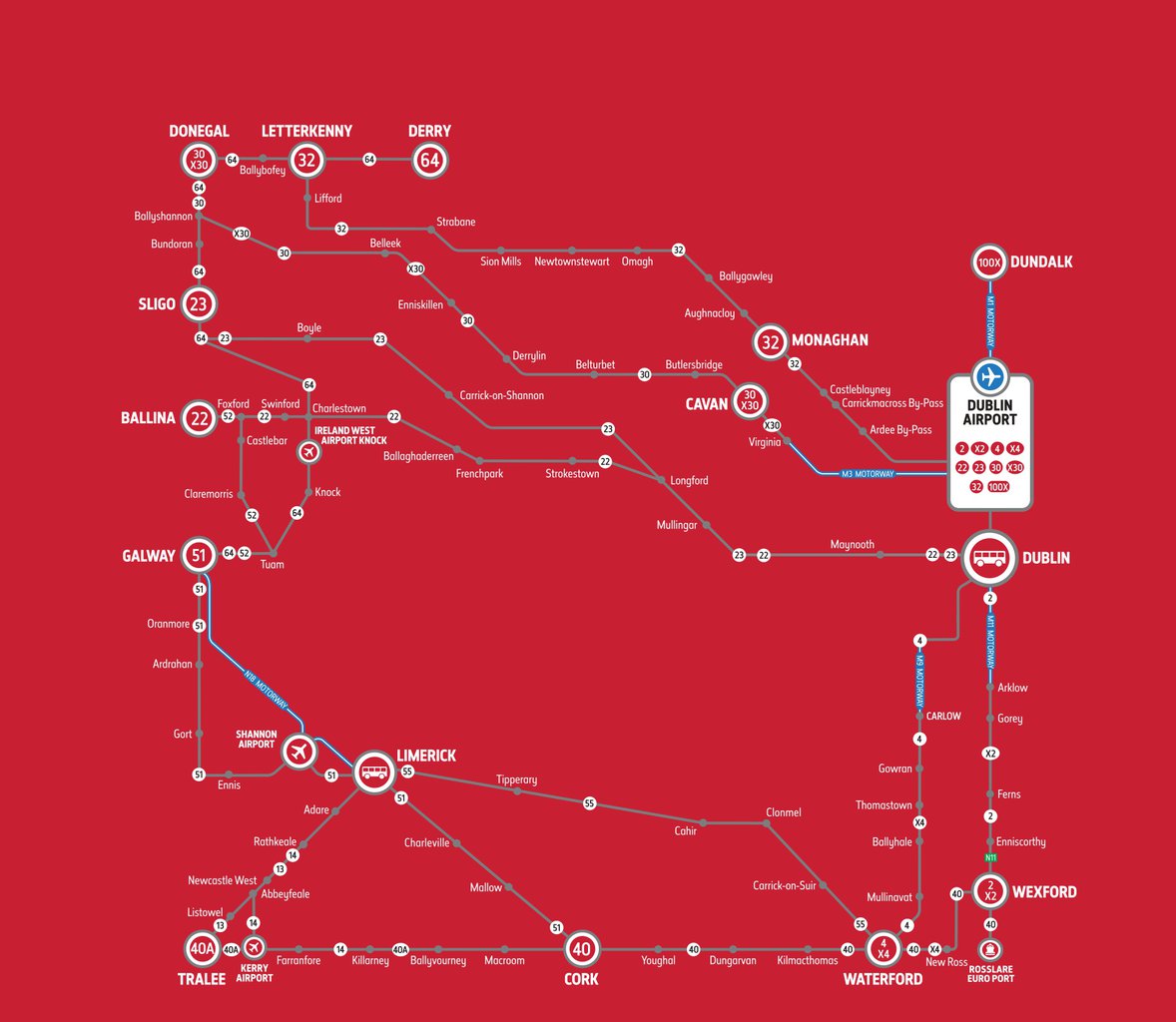
Belfast to Derry without a car
Michael Palin said that the train ride from Belfast to Derry along the Causeway Coast is “one of the most beautiful train journeys in the world”. This glorious train journey starts in Coleraine and carries along the Causeway coast through a variety of Victorian tunnels, to Derry and back again.
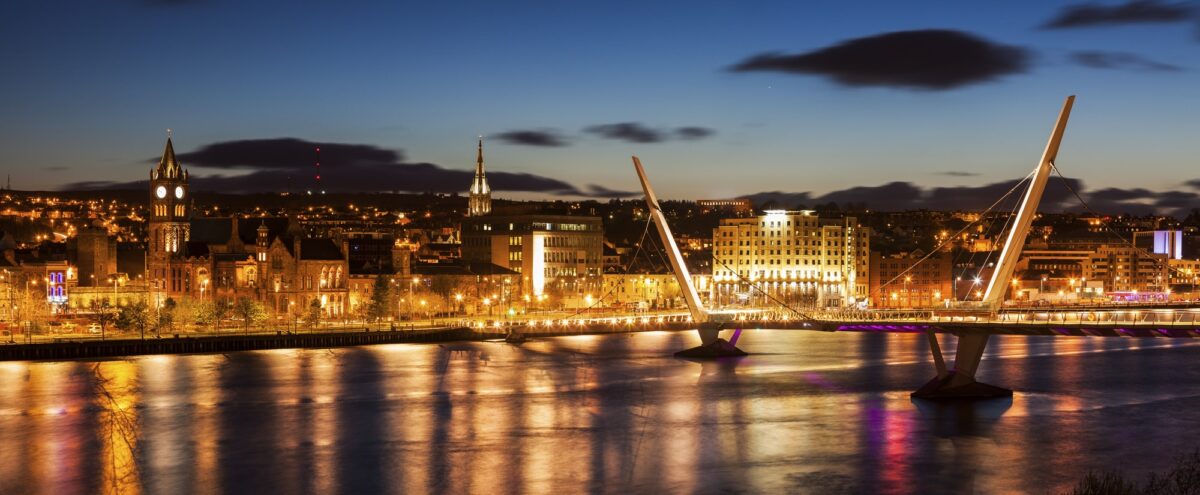
NI Railways Travel Connections leaves from Great Victoria Street station and heads to Coleraine where you would change trains to the Derry-Londonderry rail line.
There is a direct bus departing from Belfast City Centre, near the Jury’s Inn and arriving at Derry, Guild Hall. Services depart once daily and operate every day. The journey takes approximately 1h 30m from the Derry Buscentre, Translink UK runs the 234 lines to Coleraine, stopping at many of the highlights along the way.
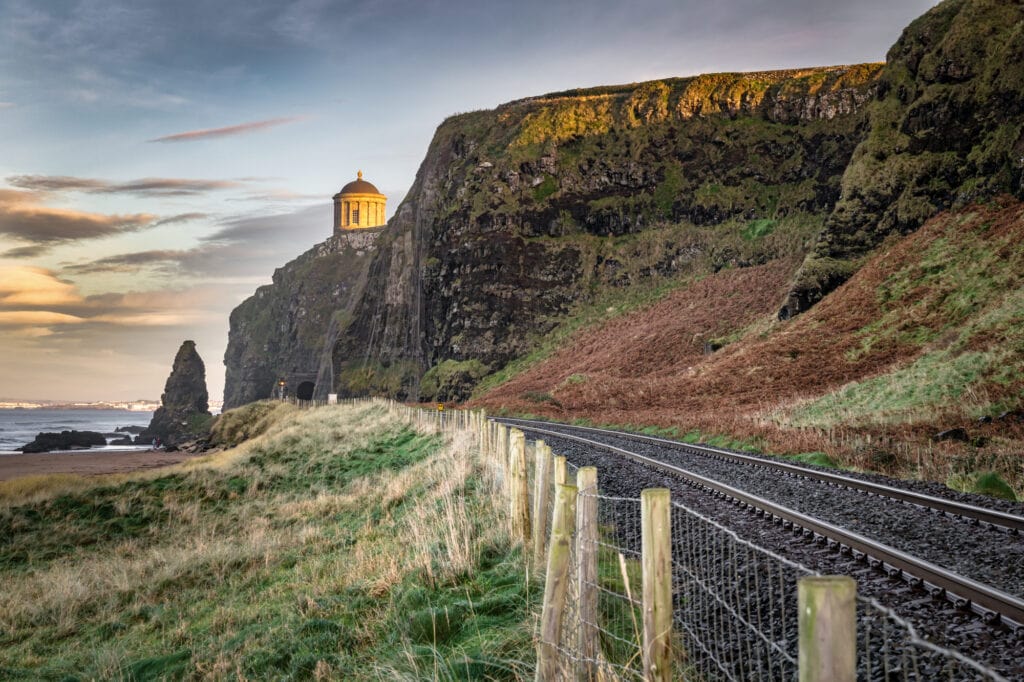
As a tourist, you can book one of three travel deals operated by Irish Rail in the Republic of Ireland. They include the following:
The Trekker Four-Day Ticket is only available only at train stations across the country. Four days of unlimited travel on a train in Ireland will cost you €110 from the date when the ticket is issued. This price is for one adult only and must be purchased at the station.
Irish Explorer Rail only offers customers 5 days of unlimited travel out of 15 consecutive days on all Iarnród Éireann services in the Republic of Ireland for only €160 for an Adult and €80 for a child.
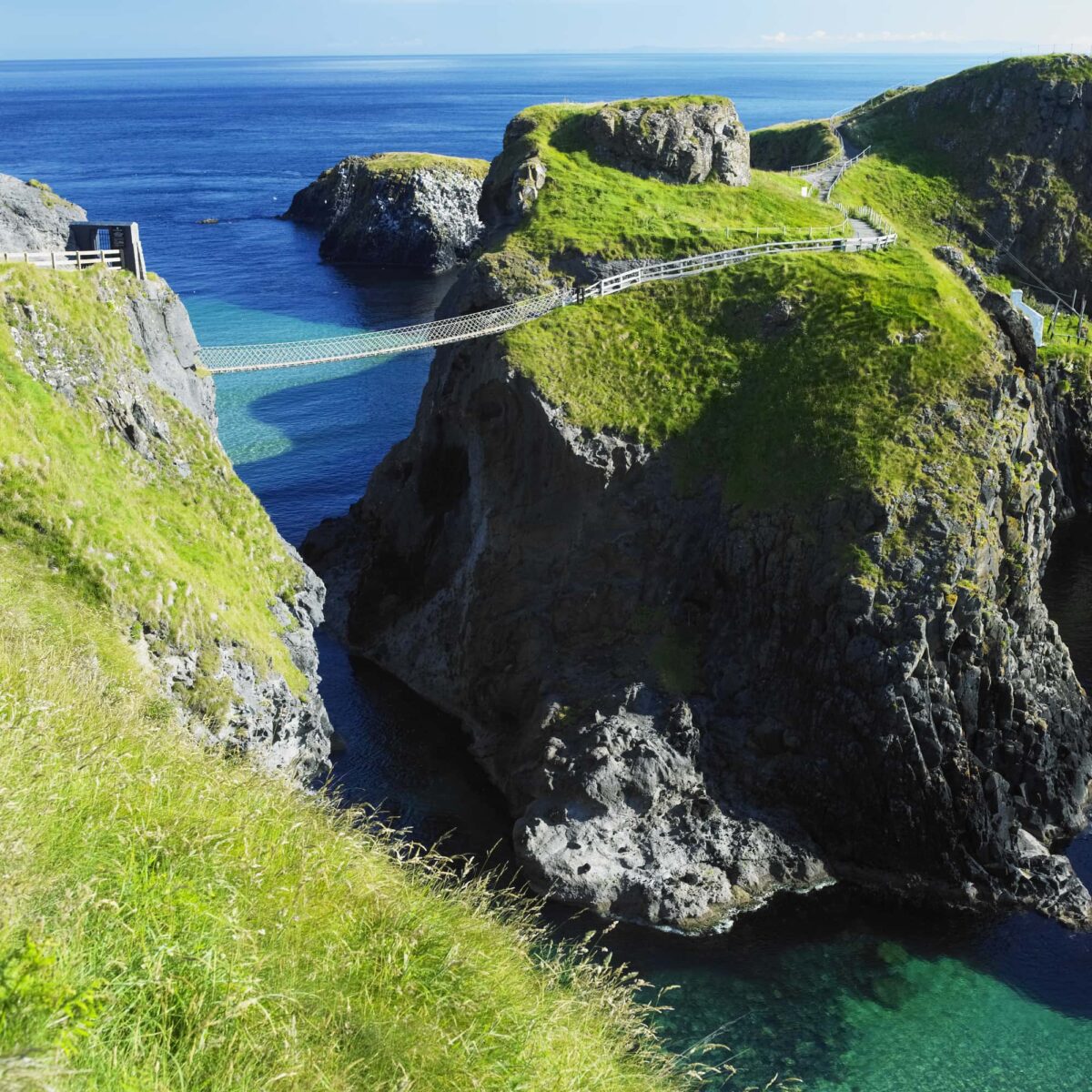
Train Travel In Northern Ireland
With Translink, the service operated in Northern Ireland you have a choice of travel-saver tickets you can purchase.
The Belfast Visitor Pass is the perfect ticket to get around Belfast & enjoy all the city has to offer. They have teamed up with Visit Belfast to give Belfast Visitor Pass users discounted tours, attractions and more. The Pass covers all Metro and Glider bus services in Belfast, NI zone 1 railway trips, and Ulsterbus within Belfast but this does not include the International Airport.
The Belfast Visitor Pass also offers you many discounts and special offers at restaurants, attractions, activities and tours around Belfast. Purchase your Visitor Pass and find more information here. Adult fares are, 1 day: £6, 2 days: £11 and 3 days: £14.50
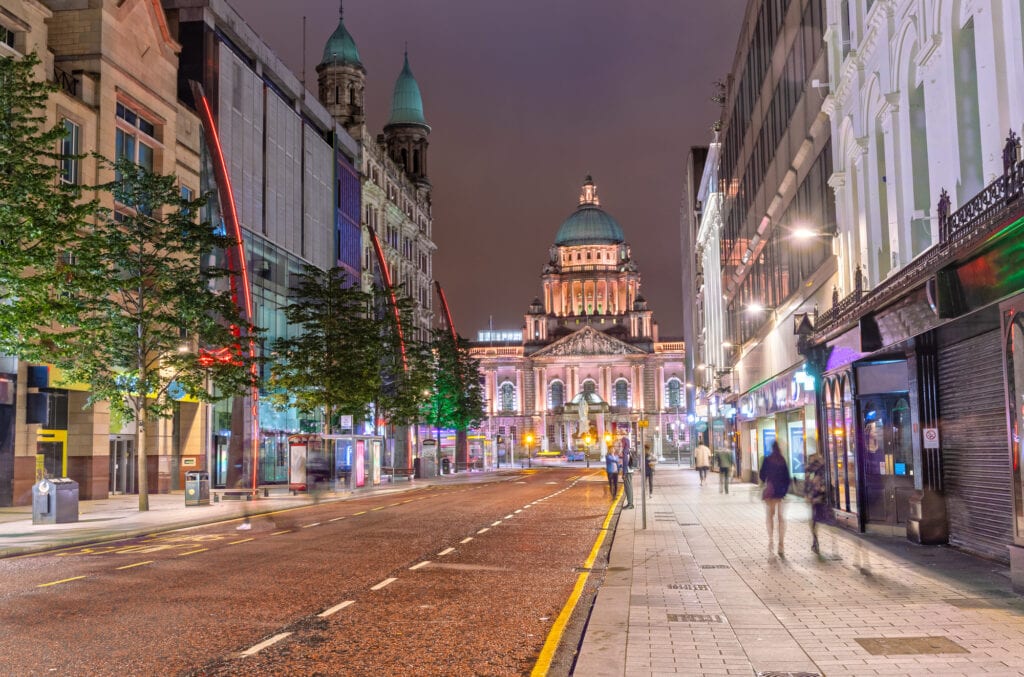
Tours in Ireland when you don’t have a car
These are some of the best ways to see Ireland without a car it will be a combination of train and bus travel or to make your Irish itinerary without a car plan on some great arranged-for-you tours.
Game of Thrones™ Filming Locations and Giant’s Causeway from Dublin
Discover sites made famous in television’s ‘Game of Thrones,’ including the mighty Giant’s Causeway on this full-day tour from Dublin. Travel in comfort aboard an air-conditioned coach and listen as your guide fills you in on ‘Game of Thrones’ filming tales as you stop at the sites like Dark Hedges and the Antrim Coast. You also stop in Belfast, with ample free time to explore the Northern Ireland capital. Read more about Game of Thrones™ Filming Locations and Giant’s Causeway from Dublin
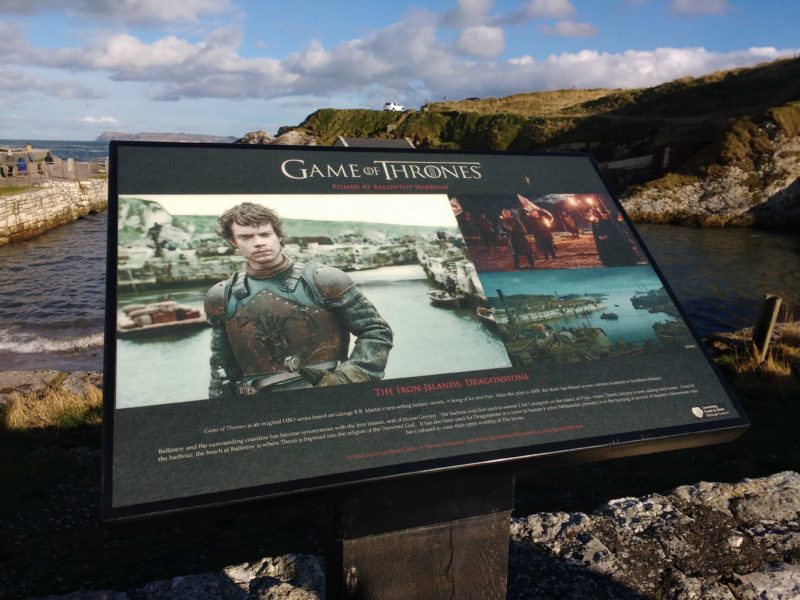
Enhance your experience of Ireland with a full-day excursion to three of the country’s top attractions. From the comfort of a luxury coach, travel through the Irish countryside to visit Blarney Castle, famed for the enchanting Blarney Stone, which grants those who kiss it the gift of gab. See, too, Cahir Castle and the Rock of Cashel Cathedral and gain insight into the region’s rich heritage from your guide. Read more about Blarney Castle Day Trip from Dublin
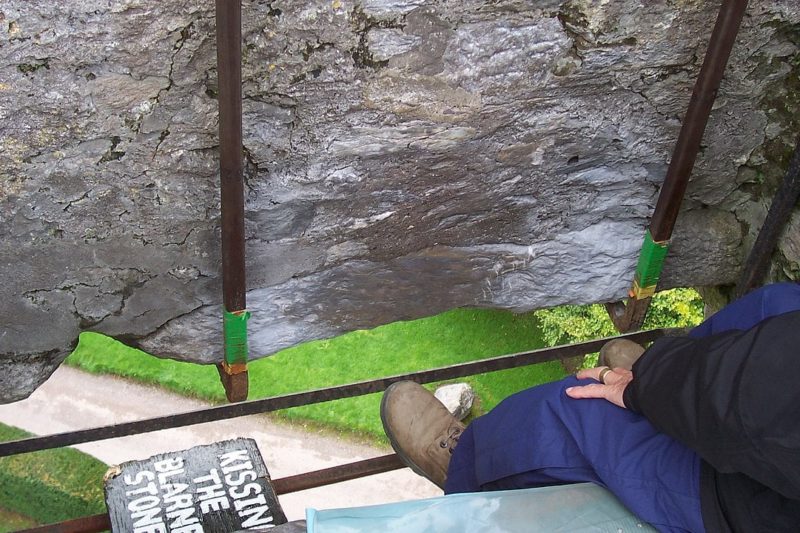
Break from Dublin for a tour of medieval Irish architecture and folklore in Kilkenny and Glendalough. Aboard a luxury coach, take a day trip to the top sights in southeast Ireland from Kilkenny Castle to the Wicklow Mountain National Park and Glendalough’s medieval monastic settlement. This tour also includes a stop at the foot of the Wicklow Mountains, where you’ll be able to see border collies and corral sheep across the fields. Read more about Kilkenny, Wicklow Mountains, Glendalough, Sheep Dog Trials, Day Trip from Dublin
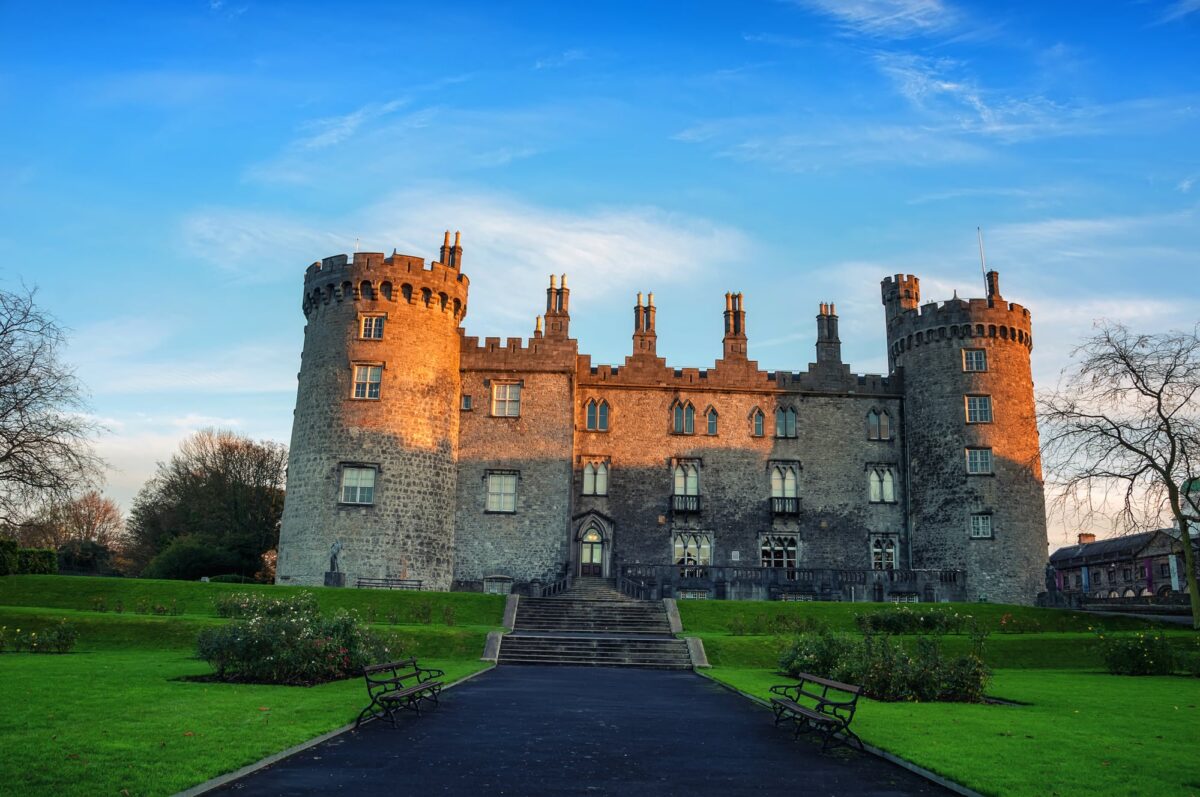
Escape the hustle and bustle of Dublin in favour of the rugged coastal splendour of the Cliffs of Moher and Galway City on an enriching full-day excursion from the Irish capital. From the comfort of a luxury coach, admire the stunning Irish countryside and travel along the Wild Atlantic Way to the incredible 700-foot-high Cliffs of Moher. Browse intriguing exhibitions in the visitor centre; marvel at the lunar limestone landscape of Burren, renowned for its rare flowers; and absorb the cosmopolitan charm of Galway City during some leisurely free time. Read more about Cliffs of Moher Tour Including Wild Atlantic Way and Galway City from Dublin
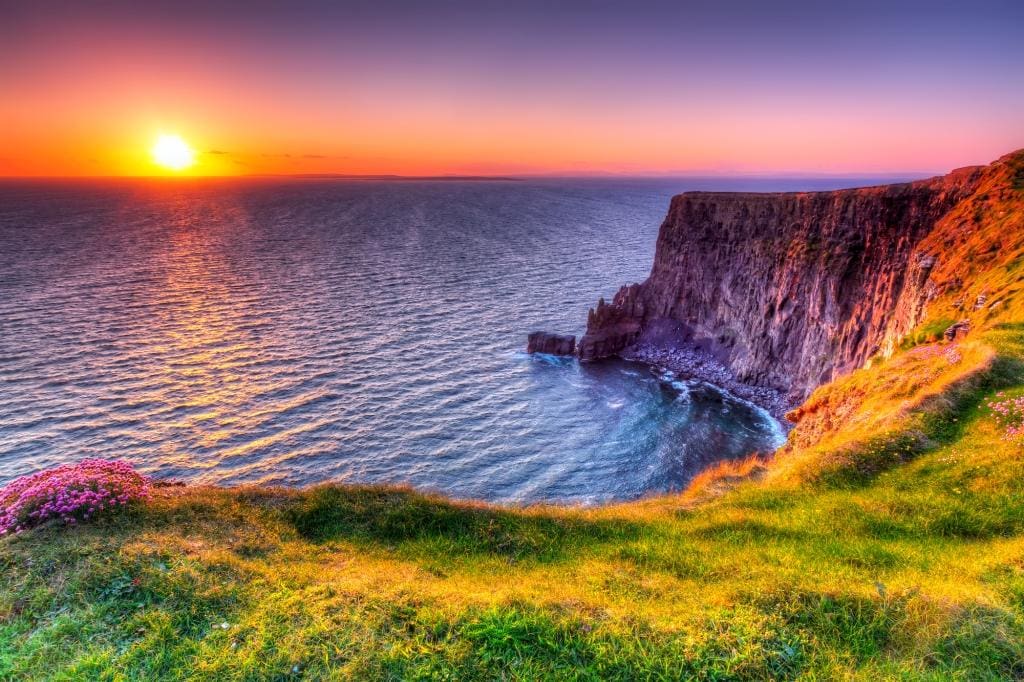
Read more about the Cliffs here Essential guide to the Cliffs of Moher in Ireland
Read more about Galway here 27 Things to do in Galway in 2 days
Northern Ireland Highlights Day Trip Including Giant’s Causeway from Dublin
Explore Northern Ireland’s biggest draws—Belfast, Giant’s Causeway and the Carrick-a-Rede Rope Bridge —on a day trip from Dublin. In a traditional black cab in Belfast, you’ll explore sites of the capital’s conflicted history: the mural-strewn streets of the Falls and Shankhill neighbourhoods and the Belfast Docks. Then course along the Antrim Coast to experience one of Ireland’s great geological marvels, the UNESCO–listed Giant’s Causeway, followed by a stop at the Carrick-a-Rede Rope Bridge. Marvel at the surrounding headlands and Mussenden Temple which were also used as a filming location for many “Game of Thrones” scenes. Read more about Northern Ireland Highlights Day Trip Including Giant’s Causeway from Dublin
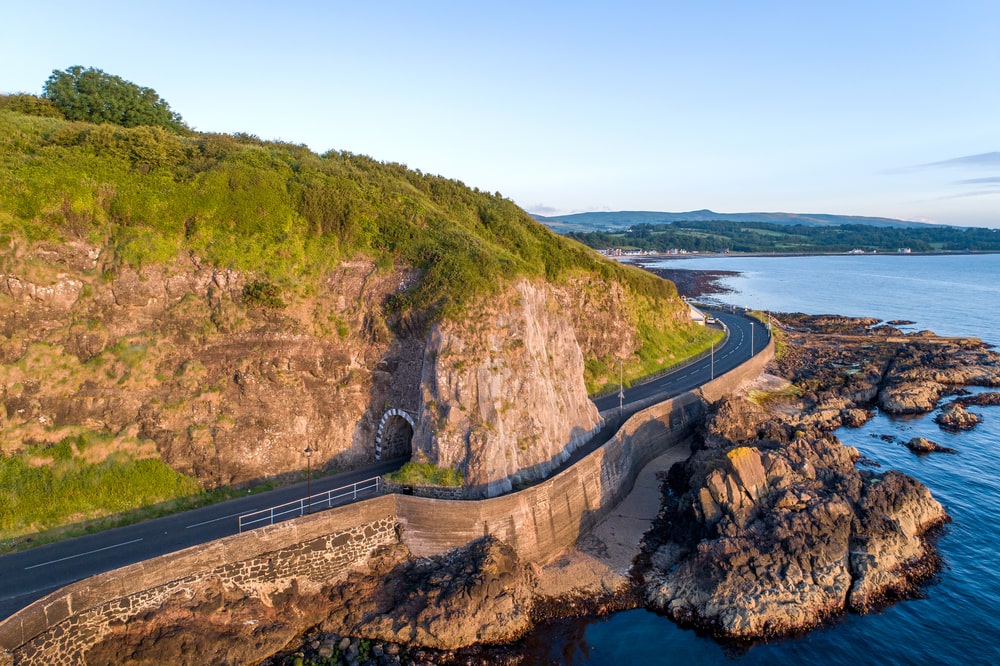
Read more about the Causeway here What is the best Causeway Coastal Route Itinerary?
Exploring Ireland without a car is not only possible but also an adventure waiting to be had. From discovering hidden gems in small towns to experiencing the stunning natural beauty of the Irish countryside , there are endless opportunities for those who choose to travel by foot, bike or public transportation. With a little bit of planning and an open mind, visitors can enjoy all that Ireland has to offer without the stress of navigating unfamiliar roads or worrying about parking. So go ahead and leave the car behind – you never know what kind of unforgettable experiences await you on your journey around Ireland.
Let me know in the comments below if you’re thinking of traveling around Ireland without a rental car, and how you found the best way to get around.
You might also like
101 Landmarks in Northern Ireland
Ultimate Wild Atlantic Way Route
Ireland’s Ancient East – an epic road trip
Magical Things to Do in Mayo
35 of the Coolest & Unique Places To Stay In Ireland
Faith was born in Ireland raised in Canada and has lived in over 10 countries in Europe including England, Ireland, Scotland, France, Spain, Northern Ireland, Wales, along with Mexico, Antigua, the US and has slow travelled to over 40 countries around the world. Graduating with a degree in Anthropology and Women's Studies Faith is a student of history, culture, community and food and has written about these topics for over 40 years.
View all posts
Leave a Comment Cancel Reply
Your email address will not be published. Required fields are marked *
Save my name, email, and website in this browser for the next time I comment.
I have read and accepted the Privacy Policy *
This site uses Akismet to reduce spam. Learn how your comment data is processed .
Open navigation
- Car-free travel
- Coastal escapes
- History and heritage
- Nature and wildlife

Here’s how to spend a day exploring the Ring of Kerry without a car.
Photo credit: @tadhg_obrien
All tours of the Ring (you won’t hear it referred to any other way, the ‘of Kerry’ considered superfluous) dedicate between four and six hours to the circuit, so they all start before noon. You won’t need a packed lunch but should have a bit of cash in your pocket (no more than €20 is needed) as some of the stops along the way don’t take cards.
One of the best-known operators is Wild Kerry Day Tours (10.30am-5pm), a family-run affair with a popular Ring tour starting from its depot on Ross Road, a 10-minute walk south of Killarney town centre along Muckross Road. Alternatively, you can arrange for a hotel pick up – but you’ll need to specify it when you make the booking.
Setting off
You’re about to set off on a whole-day tour, so a good coffee might be in order to kick-start your day. A couple of minutes’ walk from the Wild Kerry Day Tours depot is Rí-Rá , which serves terrific coffee (and a tasty iced latte for those warmer summer days) which you can have with one of their excellent chocolate and hazelnut pastries.
Your first stop, about thirty minutes into the drive, is the Kerry Bog Village , an open-air museum dedicated to showcasing how people of the region lived and worked during the late 19th century. Among the period thatched cottages and Famine-era farm equipment you’ll also come across roaming goats and friendly wolfhounds – a nice way to kick off the tour.
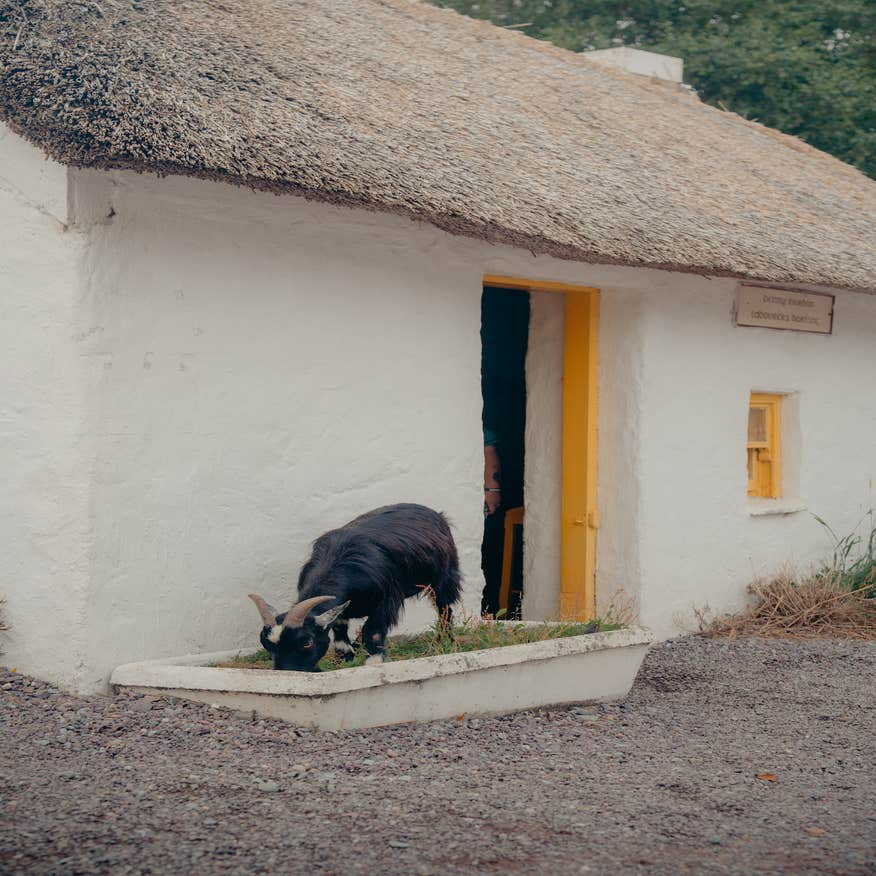
As one of the only museums of its kind in Europe, this is a history buff’s dream – and if that isn’t enough of an enticement then the entry fee entitles you to a discount on an excellent Irish coffee at the on-site Red Fox Inn .
Sheep, scenery and Cahirsiveen
After your first Kerry Irish coffee, you’ll follow the River Laune towards Kells and the award-winning Kells Sheepdogs at Caitin’s Pub . Fresh from the awards circuit, trainer, farmer and local legend Tom O’Sullivan will use nothing but a crook, a whistle and a set of eight commands to guide his dutiful Border Collies to move his flock around a mountainous field filled with deep clear pools and mossy woods with bluebells. The whole show is mightily impressive and you’d need a heart of stone not to fall in love with the dogs.
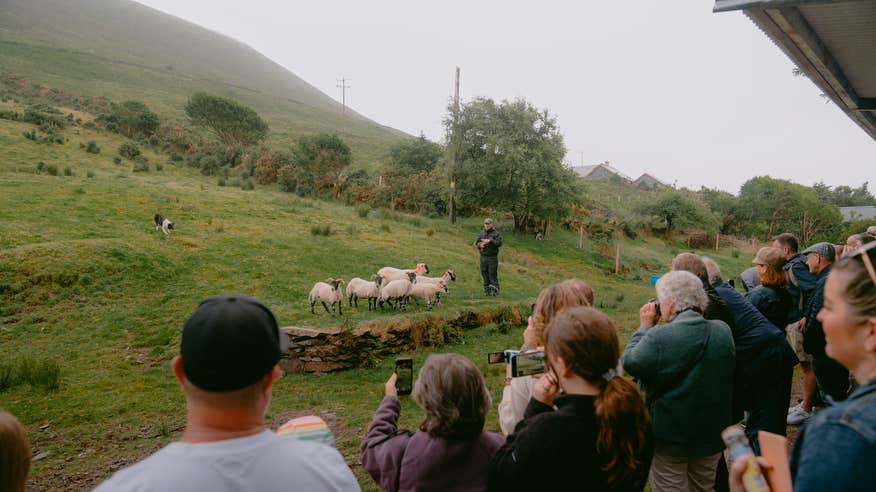
Back on the bus and it’s next stop Cahersiveen , right on Valentia Harbour in the shadows of Bentee Mountain. The village is steeped in history: it’s best known as the birthplace of the Liberator, Daniel O’Connell, but it’s also where the first shots of the Fenian uprising of 1867 were fired – stories that the guide will bring to life in colourful detail.
About half an hour beyond Cahirsiveen, the scenery really ramps up. The road from Waterville to Caherdaniel is one of the most beautiful stretches in the country, and you’ll stop at Coomakista Pass for a photo op before climbing over the ridge of Beenarourke. (Waterville was home for a time to Charlie Chaplin, and now hosts two world-class golf courses in Waterville Golf Links and the newer Hogs Head ). On a clear day there are some breathtaking views, from the islands of Scarriff and Deenish to Dursey and, beyond Kenmare Bay, the hills of the Beara Peninsula.
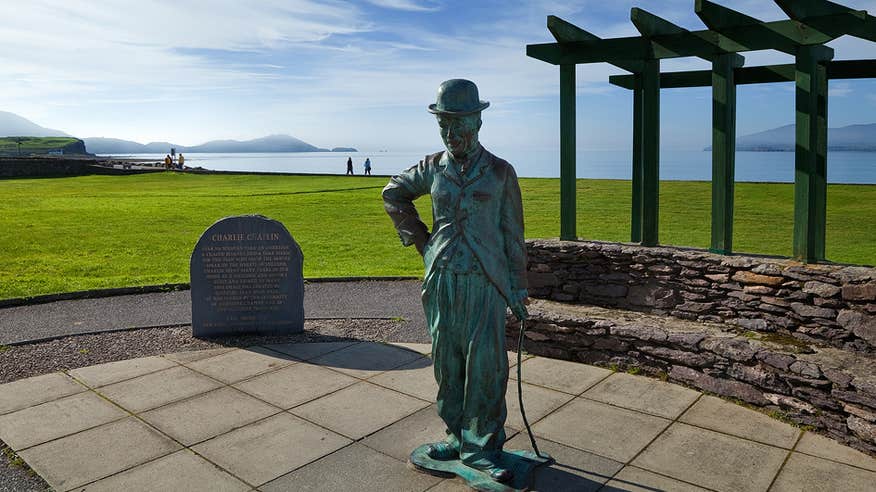
There’s another stop by Ballinskelligs Bay, which according to the 11th century Book of Invasions (Lebor Gabála Érenn) is where Ireland’s first inhabitants came ashore, led by the mythical Cessair, daughter of Noah (yes, the same Noah of the Biblical Flood).
All that mythology and scenery is enough to build up an appetite, and that is well taken care of at the Scarriff Inn , about 9km beyond Waterville. The bus stops for an hour – enough time for you to enjoy hearty offerings of hot Irish stew, fresh fish and chips, seafood chowder and myriad vegetarian options, all with views of Kenmare and Bantry Bay that have earned the inn the tagline of ‘best view in Ireland.’ And if all that scenery doesn’t inspire, the chat in the bar is always excellent, with locals swapping stories of recent GAA matches and gossip they heard along the way.
More magic and majesty
You’ll need to tear yourself away, though, as the bus needs to move on to complete the rest of the loop. You’ll pass by the entrance to Daniel O’Connell’s ancestral home, Derrynane House, on the edge of Caherdaniel, before the road moves inland until you get to the village of Sneem . Its Irish name, An tSnaidhm, means ‘the knot,’ a reference to the river that twists its way through the heart of the village into nearby Kenmare Bay.

The Ring of Kerry is all about stunning vistas, but two of them are still ahead. At Moll’s Gap you’re at the summit of the pass that will bring you back toward Killarney – and the views of the mountains and lakes are majestic. The spot gets its name from Moll Kissane, the landlady of a síbín said to have supplied poitín to those building the Killarney-to-Kenmare road during the 1820s. That síbín is long gone, but instead you’ll find a branch of Avoca Handweavers here, making it the craft shop with the most idyllic location in Ireland.
From here, the road gets narrower as it twists its way through the mountains. Five kilometres further on and you’ll reach one of the highlights of the Ring at Ladies View . This panoramic point has views over the Upper Lake and the Purple Mountain and is named after Queen Victoria’s ladies-in-waiting, who enjoyed it during Victoria’s 1861 visit. On a clear day, locals claim you can see as far as America.
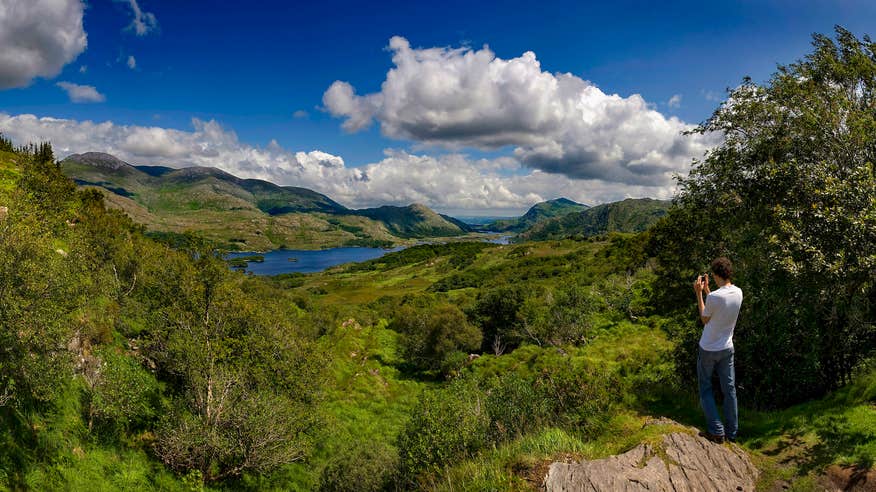
Killarney is only 17km from here; if you visit in early summer, the likelihood is you’ll be dropped off in the middle of town instead of where you were collected (school traffic dictates who is allowed to drive certain roads at certain times).
Where to eat in Killarney
After a day on the Ring of Kerry, an evening sampling Killarney’s culinary treats is just the ticket. Just across from the excellent Killarney House and Gardens (well worth a visit if you have an hour or so), Argentine food market Tango Street Food serves up excellent vegan empanadas, local honey and nduja sausage pizza and the best asado for miles.

Photo credit: @tangostreetfood
Alternatively, for something served with a beer, the Taproom at Killarney Brewing Company expertly pairs wood-fired pizza with homemade IPAs. They, too, pay homage to the old and the new of Killarney, specialising in fine craft beers which are all named after local myths and legends.
Finally, Michelin-starred the Peregrine , in the Killarney Park Hotel , is worth booking ahead for. The owners, the Treacy family, completely renovated the dining space from top to bottom, giving the new digs a Parisienne feel. That feel peppers the menu, too, with langoustine, lamb with hazelnut peas and mint and Irish coffee flambées that feel straight off the Champs-Élysées.
Discover how easy it is to enjoy a sustainable trip in some of the country's most popular locations.

As a first-time visitor, getting to grips with Killarney can be daunting. Nestled in a valley surrounded by the grand MacGillycuddy’s Reeks and sitting on the edge of nearly 30,000 acres of parkland, the town offers a seemingly infinite number of paths for exploration. But as one quarter of Killarney National Park is covered by its lakes, a boat tour allows you to experience more of Killarney’s woodlands, mountain passes, waterfalls and historical sites in one day than you could from behind the wheel of a car.

When presenter and sustainability influencer Fionnuala Moran headed for a short break to Tralee and Listowel, she decided to leave the car at home. With her partner Rebel Phoenix by her side, she set off by bus to explore the Wild Atlantic Way.
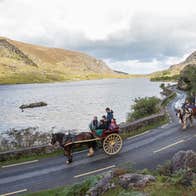
Killarney has been in the business of welcoming visitors for over 250 years, so it knows a thing or two about taking care of its guests. Not only is it the gateway to the Ring of Kerry, but the town and its immediate surroundings are all part of Killarney National Park, the first of its kind in Ireland and one of the most beautiful corners of the country. And the best bit is you don’t need a car to explore any of it. Indeed, half the fun is doing it on foot, by bike or – if you really want to do it the traditional way – by jaunting car.
Subscribe now to receive destination inspiration, travel tips, upcoming events and all the best things to do around Ireland.

- All our destinations
- Italy: featured destination
- Ireland: featured destination
- USA: featured destination
- Packing Lists
- Buying Guides
- Booking resources
- Work with me
- Cookies and privacy policy, terms of use
Destinations
4 days in ireland: perfect itinerary ideas for a short visit.
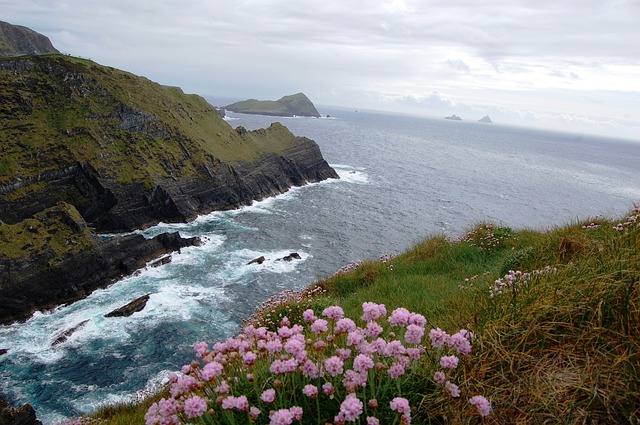
Coming to Ireland soon? Delighted to hear it: we have been living here for over 10 years and love every inch of the country! These are our tips for spending 4 days in Ireland.
Ireland is a wonderful destination for a trip, even if you only have a few days to spend on its green shores.
We have been based in Dublin for over a decade and we are well used to short trips around the country: any time we have a handful of days free, we set off to see a new part of it and it is incredible how much you actually get to see even in a very short time.
Distances here are not long and while you need to take your time driving on these roads, there is a lot you can see in Ireland even with little time
You can easily spend 2 weeks visiting Ireland without running out of things to do. However, you can also see a lot of the country with a shorter stay.
Whether you are here for business and want to add on a few days for sightseeing or you find yourself passing though Ireland on the way from the US to continental Europe or the UK, these are our suggestions on the best ways to spend 4 days in Ireland.
RELATED : if coming en route to somewhere else especially, make sure you are ready for the peculiarities of Irish weather having look at our packing list for Ireland !
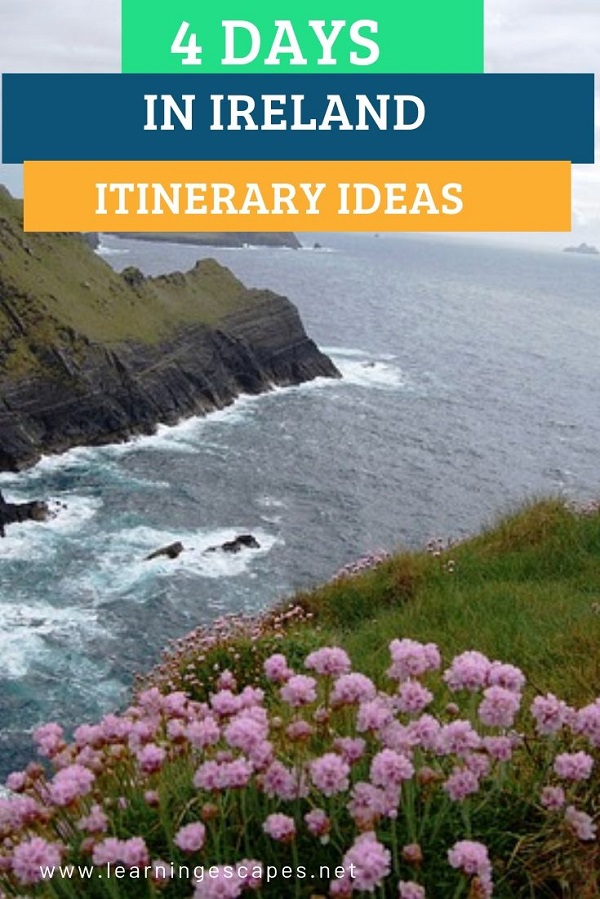
This post contains affiliate links. Should you make a purchase through them, we might make a small commission.
Table of Contents
How to use these 4 day Ireland itineraries
I have been living in Ireland for the last 14 years and take regular local vacations to make the absolute most of my time here.
I approach these tips from the practical knowledge of a local and the awe of the visitor and this is what I have tried to capture in the itineraries below.
While I can think of many ways to spend even just a weekend in Ireland if live here, in the itineraries below I have chosen areas that I believe are of most interest to foreign visitors to Ireland, who may want to see some of the country;s main attractions and must see site.
I recommend you use these itineraries as a baseline to see what you can visit with 4 days in Ireland and then make specific adjustments depending on your circumstances and budget.
I included links to many other articles on this site bout Ireland: if you click on them, you will find more detailed information about the locations mentioned as well as practical tips for visiting Ireland.
RELATED : Planning to drive in Ireland? Before setting off, check our practical tips for tacking the country’s narrow roads
The best ways to spend 4 days in Ireland: recommended itineraries overview
Ireland in 4 days: explore the west.
West of Ireland 4 days itinerary fast facts:
- Best for: scenic cliffs, remote landscapes, some of Ireland ‘must see’ sites
- Arrival/ Departure: arrival in Shannon / departure from Dublin
- Suitable for kids? Yes but involves long hours in the car
The West of Ireland is without a doubt one of the most scenic parts of the whole of the island.
Foreigners flock here but so do locals: a summer holiday in the West of Ireland is a much loved tradition for many Irish families and it is an easy and scenic way to get a break from the city.

With 4 days in the West, I recommend you plan your time as follows:
Day 1: arrival in Shannon and drive to Killarney
The first day is all about arriving in Ireland and settling in.
This area of the country has narrow roads, very different from many people may be used to in the US or even in continental Europe and I cannot stress enough how important it is to take your time to get a good rest before tacking them.
On your first day, I recommend you arrive in Shannon, make your way to Killarney and explore locally.
There is plenty to do in Killarney without having the drive excessively.
You can read our recommendations on how to spend a day in Killarney here .
Spend the night in Killarney town at the excellent Brehon Hotel or the welcoming Old Weir Lodge
Day 2: Drive the Dingle peninsula
On your second day I recommend you drive (or take a tour of) the beautiful Dingle Peninsula .
This is a lovely part of the country, easy to enjoy and visit and packs in both lovely natural coastal landscapes and colorful towns such as Dingle Town.
Spend the night in Tralee or surrounding area so you are well placed for the following stretch of your trip.

Day 3: The Cliffs of Moher and Galway
The Ciffs of Moher are one of the most famous if not the most famous attractions in the whole of Ireland and I highly recommend a visit.
Even when the weather is not great, even with the tourist buses, even with the ‘I have seen them in a million photos’ considerations about them, they are stunning and missing them is, in my opinion, a shame.
Surprisingly, they are also easy to visit if you are afraid of heights or with visiting with kids ( you can read all the details here )
After a visit to the cliffs, head over to Galway but don’t rush: the Burren, which is this area, is peculiar and stunning and it is worth taking in the view while driving.
Spend the second part of the afternoon and your night in Galway ( have a look at the Connacht hotel ), catching the sites, dinner and listening to live music in one of the many local pubs.
Day 4: Dublin
On day 4 I get you to come to Dublin, which is an often understated destination in Ireland but one I believe deserves a day.
The drive from Galway is easy (you can even leave the car and catch the bus if you prefer) and once you are in the city you can finally stop driving and just walk. Dublin is easy to enjoy on foot.
There is a lot to do in Dublin and on one day you can see most of its main sites just strolling around the city center.
You can wing it or find my detailed one day Dublin itinerary here
Dublin is very expensive when it comes to hotels (and B&Bs and apartments…) so I do recommend you book early and carefully.
I have a good selection of hotels here (suitable for families but not only) and I recently had a lovely stay at the Hilton Garden Inn and the Hilton Dublin on Charlemont road which is well located, pleasant and well served.

Ireland in 4 days: the South and the East
South and East of Ireland 4 days itinerary fast facts:
The South and the east of Ireland have some of the country’s most famous sites including Dublin, Glendalough and Blarney castle with its legendary stone.
- Best for: historical sites, castles, countryside/mountain scenery
- Arrival/ Departure: Dublin
- Suitable for kids? Yes, this is one of the easiest areas for kids to enjoy
Day 1: Kilkenny
If you are landing in Dublin it may sound strange to leave without visiting. However, I have good reasons to let you take to the road straight away.
Unlike many other locations in Ireland, Kilkenny is a very easy drive from Dublin (motorway) and it is such a pleasant introduction to Ireland, it makes for a great first stop.
Park your car in the city center, settle in your hotel and then spend the day exploring the town.
There is plenty to see (find my full one day in Kilkenny itinerary here ) and the city is likely to capture you with its beautiful medieval sites and vibrant atmosphere.
I like staying at the Ormonde hotel right in the city center to take it all in in beautiful surroundings.
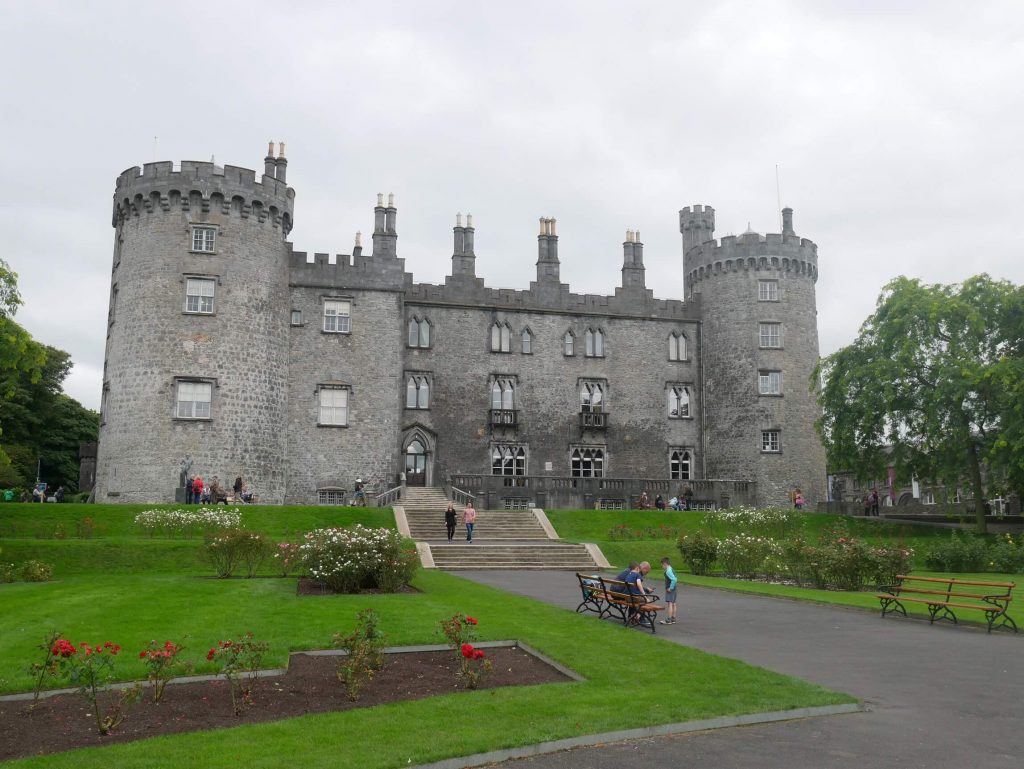
Day 2: Cork and Blarney castle
After Kilkenny I recommend you drive in the direction of Cork, int he South of Ireland.
This is an easy drive again and it doesn’t just bring you to cool Cork city but also allows you to see one of the most spectacular castles in Ireland : the rock of Cashel.
The rock is wonderful and easy to reach from the main road: I recommend you visit the rock (doesn’t take long) and you can also have coffee/lunch in the nearby tea room.
From here, you can head to the famous Blarney castle, which you can easily visit in a couple of hours (a little more if queuing to kiss the stone), and then spend the night in Cork city (The Kingsley hotel and the Montenotte hotel are two good options).
Day 3: Glendalough and Wicklow Mountains
On day 3 I make you come back towards Dublin but with an overnight stop in the Wicklow mountains .
This is an area of great natural beauty (they are a National Park) and they are a beautiful and relaxing place to explore.
The easiest way to enjoy it to drive to Glendalough and spend day there.
Here you have a two beautiful lakes, a nice restaurant for a relaxed meal and the famous Glendalough monastic site, which is a simply wonderful.
If you like gardens and manor homes, you may also want to see Powerscourt Gardens , which are in this area and one of the most famous gardens in the world.
In the area, I highly recommend the Brooklodge Hotel , which is a wonderful romantic hideaway ( you can read our review here ) or the excellent Tinakilly house .
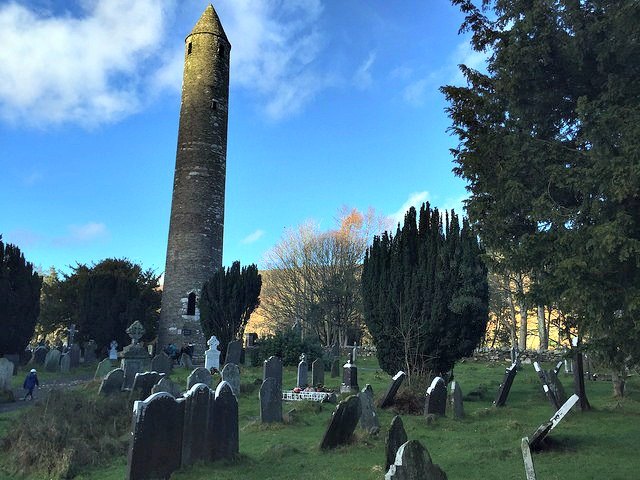
On day 4, I have you coming back to Dublin. like I mentioned above, I highly recommend you leave the car as soon as you arrive in the city and then explore on foot.
Depending on you specific desire for Dublin, you can either walk around the city center and take in the main sites that way or plan a visit to iconic locations such as the Guinness storehouse.
In this case, I recommend you book skip the line tickets in advance here .
4 days in Ireland without a car: Dublin and Galway
- Best for: non drivers
- Arrival/ departure:Dublin
- Suitable for kids:yes
If you don’ want or cannot drive in Ireland, you will be happy to hear it is still possible to see quite a lot.
The best way to spend for day in Ireland without a car I believe is the following:
Day 1 Arrival in Dublin and bus to Galway.
Regular buses connect Dublin to Galway and the ride is easy and reasonably short. Hop on the bus on arrival and rest with an afternoon and night in Galway.
The Connacht hotel is a good option.
Day 2: Day trip to the Cliffs of Moher
The Cliffs of Moher are a crazy long day trip from Dublin but a lovely easy one from Galway by bus ( have a look here for times and tickets ).
Spend the day between the cliffs and the city and then relax with a night in Galway town.
This is an easy way to spend a day seeing stunning scenery and without the stress of having to lug our bags around and change accommodation.
Day 3: Day trip to Connemara
If you are in Ireland in the summer, a day trip to Connemara can be one of the highlights of your stay.
This area is famous for its beautiful landscape and is also the home of famous Kylemore Abbey.
The area is well served by day trips from Galway such as this one and makes for a good day out without having to drive or change hotels.
A bus tour was how I first visited Connemara and it was a lovely, easy option.

Day 4: Dublin city
On day four, it is easy to make tour way back to Dublin with a morning bus and spend the afternoon exploring.
As mentioned above, I do recommend the Hilton Dublin as a base in the city and this itinerary to make the most of your time here.
4 days in Ireland highlight whirlwind itinerary
If all the itineraries above have left you with a burning desire to see absolutely everything I have mentioned, I am going to throw in a last itinerary that would allow you to see a lot and tick some main sites off your Ireland bucket list.
Please just be aware that this involves a good bit of driving an not much down time.
It goes without saying that some amazing sites are left out even with this fast itinerary but I made sure to include some of the most popular.
- Best for: Bucket list trip lovers
- Arrival/Departure: Dublin
- Suitable for kids: yes but very tiring
Day 1: Arrival in Dublin and drive to Cork
On the first day I have you heading South.
You can easily drive to Cork and make a stop at the stunning Rock of Cashel on the way or head to the city by bus.
While less scenic, this could be a good way not to have to drive straight away, something worth considering if you will be dealing with jet lag for instance.
In Cork city (The Kingsley hotel and the Montenotte hotel are two good options)
Day 2: Blarney castle and Killarney
Start your second day at the famous Blarney castle, near Cork and then head to Killarney, in County Kerry.
Killarney is most famous as a base to drive the ring of Kerry but you will not have time for this on your time frame, so I recommend instead you take your time to visit the town and beautiful Muckross house .
Spend the night in Killarney and enjoy its lively evenings.
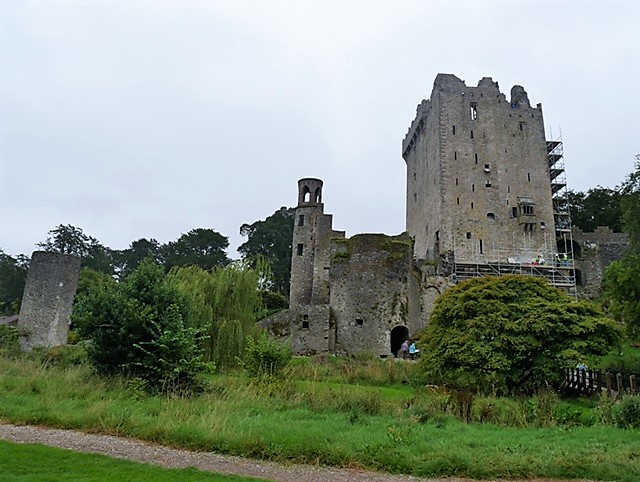
Day 3: Drive from Killarney to Galway
On day three you will tick off one more must see site and see the Cliffs of Moher and the Burren, before making your way to Galway, where you will also spend the night.
Day 4: Galway to Dublin
Like all my other itineraries I get you come to Dublin on the fourth day.
This makes for necessary planning if you are flying from there but also ensures that you have one day when you don’t have to drive and can just relax.
I hope you enjoyed this itineraries and they helped you decide how to spend 4 days in irelan/d Safe travels!
Marta Correale
Marta Correale is the creator, writer and creative mind behind Learning Escapes. A travel loving mama of two from Italy, Marta currently lives in Ireland with her husband and two kids, they take frequent trips to European destination, the US and beyond. A professional travel blogger for over a decade, Marta is passionate about traveling with kids and helping others to travel more and better as a family.
Privacy Overview
- Australia edition
- International edition
- Europe edition

How I learned to love the slow route home to Ireland
Journeys are about so much more than getting from A to B, as our writer found when he ditched flying for the train and ferry between Dublin and London
T here’s always a moment in the journey from Dublin to London – which I make every month or two, taking the land-and-sea route via Holyhead instead of flying – when I stop what I’m doing – reading or writing or chatting to the person next to me – and think: you don’t get to enjoy this from 40,000ft.
Sometimes it’s at the Britannia Bridge in north Wales. As the train crosses the Menai Strait from Anglesey I can see, off to my right, a concrete statue of Lord Nelson keeping a lonely watch from the shore, and further upriver the grounds of Plas Newydd country house sweeping down to the water. To the left, on a tiny island with a curved jetty, stand two handsome whitewashed houses that will one day disappear beneath the rising sea levels but for now are holding out against the elements.
I’ll pause again as the train trundles past Conwy, with its hulking medieval castle and absurdly pretty waterfront, home to the smallest house in Britain, and later still as we move along the coast beyond Colwyn Bay, and legions of offshore wind turbines can be glimpsed through the haze.
On the return journey, as the ferry heads into Dublin Bay, I’ll cast an eye at Howth Head as it rises up to greet us, followed by the crimson lighthouse at the end of the Great South Wall and the looming red and white chimneys beyond – the unmistakable sign that we’re about to dock in the Irish capital.
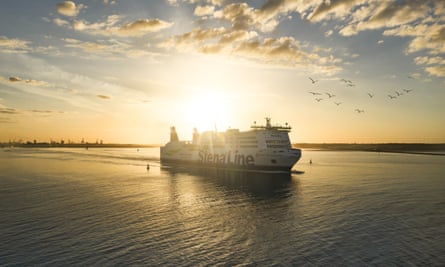
People often ask me why I choose to travel between Dublin and London by ferry and rail instead of flying, which is considerably less time-consuming. I’ll respond by talking about the price, or the breezy check-in process with minimal luggage restrictions, or the direct connection into central London, or the carbon emissions, which by one estimate are about 95% lower than going by plane . But the little details – the things you see, the people you meet and the reveries you enter as the journey’s lulling rhythms take hold – matter to me almost more.
When I moved to London in 2002, the idea of taking the slow route home to Dublin didn’t occur to me. Going by air was quick: you can fly city to city in under 90 minutes, though of course you have to factor in the time it takes to get to the airport, clear security, wander through duty-free, wait to board, wait to take off, and go through the associated rigmarole on the other side. And it’s cheap.

Then, about 15 years ago, a friend tipped me off about SailRail, a package that bundled train and Irish Sea ferry tickets into a single fare – connecting not only to London but to any town across Britain with a station. I was dubious about the duration but the price was keen – these days it’s £102.20 return, but back then it was about half that – so I decided to give it a try.
I’ll be honest: I didn’t love SailRailing straight away. Train travel is one of life’s great pleasures but in Britain it can curdle to frustration in the face of delays, cancellations and broken-up routes. It took me a while to work out how to time my journey so I didn’t have to change trains in Crewe and again, 20 minutes later, in Chester. And Holyhead, for all the surrounding beauty of Anglesey, is not a town that makes the heart leap – not, at least, the stretch between the terminal and the ferry dock, which on even the sunniest afternoon feels oppressively grey.
The ships – Irish Ferries and Stena are the two options on the Holyhead-to-Dublin route – can feel dated and a bit tacky, and if you strike out from Dublin on a match day, you have the choice of watching football supporters getting stuck into cooked breakfasts and pints at 8am or joining them. The crossing can be rough, though it would take a serious gale to unsettle one of the bigger boats when its stabilisers are out. (In that kind of weather, I’d rather take my chances on a 50,000-tonne ferry than a dinky commuter plane.)
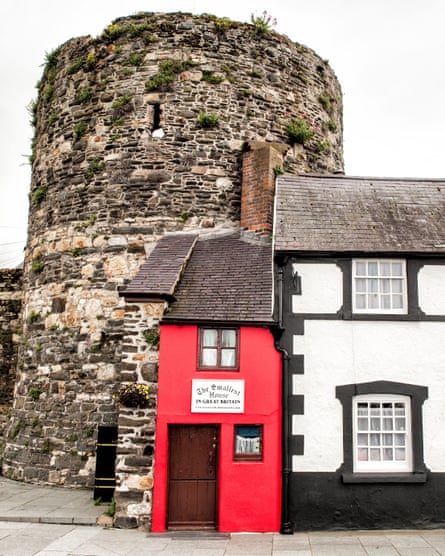
If you travel with Irish Ferries, which I tend to do, this unfolds within a literary theme park of unparalleled incongruity. The flagship Ulysses is riddled with allusions to James Joyce’s masterwork: you can eat reheated pizza slices (but not pork kidneys) at Boylan’s Brasserie, drink tequila slammers at the Leopold Bloom bar or engage in soft play at the Cyclops family entertainment centre. (The faster ferry, often cancelled if the wind picks up, is ingeniously named the Jonathan Swift.)
Despite – or perhaps because of – these idiosyncrasies, I kept returning for more. For years, I’d SailRail to Dublin and fly back; the journey out of London Euston tends to be smoother, especially if you catch the direct train to Holyhead departing about 9am. But since moving back to Dublin in 2020, I’ve ditched the air option and now actively look forward to my day meandering across the Irish Sea and down through Wales and England. The journey takes eight or nine hours, but without internet to distract me I usually get a solid day’s work done, or at least have time to read and think.
after newsletter promotion

Some distractions are welcome. When the Icelandic volcano eruption grounded European air travel in 2010, I got chatting to two fellow SailRailers on the train out of London. One, delightfully, was the actor who played Gestapo agent Herr Flick in the sitcom ’Allo ’Allo!. The other became a really good friend – and I often thank the ash clouds of Eyjafjallajökull for introducing us.
More recently I’ve fallen into conversation with touring graffiti artists, septuagenarian world travellers and a woman who found God after getting lost in the middle of the Sahara (she prayed for help and a crow appeared to guide her back to safety). Last autumn, when my partner and I took our whippet-saluki over on a morning sailing (pet-friendly cabins are available on Stena) he was lavished with attention by an elderly Traveller couple who told us about similar dogs they’d loved over the years.
The Traveller community uses the ferries a lot, following a route that Irish people with UK connections have taken for centuries. You’ll also encounter plenty of truckers, as well as students, backpackers and people who are averse to flying. What you don’t get a huge number of, among the SailRail contingent, are British tourists. When I mention the package to friends and colleagues in London, few of them have heard of it. And when I tell them the fare, which doesn’t shoot up for last-minute bookings, they’re astonished: £51.10 from London to Holyhead and then on to Dublin by boat? You’re joking, right?

Still, I rarely recommend SailRail without a string of caveats. It isn’t to everyone’s taste. And it could be so much better than it currently is – the rail connections are unreliable and foot passengers on ferries are often treated as afterthoughts. But despite its foibles I’ve come to enjoy the easy pace of the journey and offbeat crowd it throws together. I’ve even developed a fondness for those Joyce allusions.
And I love that long, slow train ride along the north Wales coast, past castles and wind turbines and island houses doomed to vanish beneath the waves. A journey is so much richer and stranger when you travel close to the ground.
SailRail tickets from London Euston to Dublin Ferryport from £ 102.20 return (+ booking fee) via trainline.com
- Ireland holidays
- Rail travel
- Europe holidays
Most viewed
Comfortable and Convenient Road Trip Essentials for Cars You Can’t Forget To Bring
Don't leave the house for a road trip without making sure you have the items on this list of road trip essentials for cars.
Leah Jones • Apr 12, 2024

Road trips are unique and exciting experiences where the adventure starts the second you start the car. However, spending a long period of time in a car as opposed to the comfort and convenience of your own home can make it difficult to be comfortable. Moving around and having privacy (something everyone needs after a while) is not an option. There is no way to bring the whole home with you when you travel (even though many have tried). However, there are hacks, tips and tricks you can incorporate into your packing to make your experience on the road more enjoyable and convenient. Here are some road trip essentials for cars to consider for your next road trip.
Travel Hack Essentials
GasBuddy or Similar Apps : If we’re getting technical, the biggest road trip essentials for cars is gas, since you literally can’t go anywhere without it. With that being said, GasBuddy helps you find the cheapest gas prices along your route, potentially saving you significant money on fuel costs. It’s an essential tool for budget-conscious road trippers.
Multi-Port Car Charger : A multi-port car charger allows you to charge multiple devices simultaneously, keeping everyone’s phones, tablets and other gadgets powered up during the journey without the need for multiple chargers or adapters. Chargers like this one are handy as they have multiple plug-in types, including the universally used USB-C.
Collapsible Water Bottle : Staying hydrated is crucial during road trips, but buying bottled waters can add up in cost and waste. A collapsible water bottle takes up minimal space when empty and can be refilled at rest stops or water fountains, saving you money and reducing plastic waste. Whip it out in your car ride then collapse in back when you are on the move but want it handy.
Adjustable Air Vent Phone Mount : Keep your smartphone easily accessible for navigation or entertainment purposes with an adjustable air vent phone mount. This allows you to position your device at eye level without obstructing your view of the road, reducing neck strain and making it easier to follow directions or change music playlists while being as safe as possible.
Comfort Related Road Trip Essentials for Cars
Seat Cushions or Lumbar Support : Long hours of sitting in the car can be hard on your back and butt. Consider investing in seat cushions or lumbar support pillows to improve your posture and reduce discomfort during the journey. Seat cushions like these also give a bit more height to your seat allowing the driver to see the road better.
Noise-Canceling Headphones or Earplugs : Block out road noise or unwanted chatter from fellow passengers with noise-canceling headphones or earplugs. They can help you relax and enjoy some quiet time or listen to your favorite music or podcasts without distractions. You can find great ones that get the job done without spending a fortune.
Travel Pillow and Blanket : A comfortable travel pillow and a cozy blanket can make napping in the car much more enjoyable. Opt for a neck pillow that provides adequate support and a blanket that keeps you warm without being too bulky.
Seat Belt Adjusters or Comfort Pads : Seat belt adjusters or comfort pads help prevent discomfort and irritation caused by seat belts rubbing against your neck or shoulder during extended periods of driving. These simple accessories attach to the seat belt strap and provide cushioning or adjust the position of the belt for a more comfortable fit. Choose ergonomic designs that are easy to install and compatible with your vehicle’s seat belts for optimal comfort and safety.
Essential Safety/Emergency Items
First Aid Kit : A basic first aid kit is important anytime but especially one of these road trip essentials for cars. Common items include adhesive bandages (various sizes), sterile gauze pads, adhesive tape, antiseptic wipes or solution, tweezers, scissors and disposable gloves. Additionally they often have a CPR mask or face shield, pain relievers (such as ibuprofen or acetaminophen), antihistamine tablets, hydrocortisone cream or ointment, an instant cold pack and an added small supply of any personal medications or prescriptions .
Roadside Emergency Kit : A comprehensive roadside emergency kit should include essential items such as jumper cables, a tire pressure gauge, a flashlight with extra batteries, reflective triangles or flares, a multipurpose tool or knife, duct tape, a fire extinguisher and basic first aid supplies. Having these items on hand can help you address common roadside issues or medical emergencies until professional help arrives.
Portable Jump Starter : A portable jump starter is a convenient and compact device that allows you to jump-start your vehicle without the need for another car. Look for a jump starter with sufficient power to start your vehicle’s engine and additional features such as built-in safety protections, USB charging ports for electronic devices, and a flashlight for nighttime emergencies.
Tire Repair Kit : Here is another safety product where the word “essential” in “road trip essentials for cars” is an understatement. A tire repair kit can be invaluable in the event of a punctured tire. Look for a kit that includes tire plugs, a tire pressure gauge, and a tire inflator or air compressor. With these tools, you can quickly patch up minor tire damage and reinflate the tire, allowing you to continue your journey safely until you can reach a professional mechanic.
Emergency Food and Water : Pack non-perishable food items such as energy bars, nuts, dried fruits, and canned goods, along with plenty of water or electrolyte drinks. In case of unexpected delays or being stranded, having emergency food and water supplies ensures you stay nourished and hydrated until help arrives or you can reach a safe location.
Health/Sanitation Road Trip Essentials for Car
Trash Bags and Sealable Containers : Keep your car tidy and prevent littering by carrying trash bags and sealable containers for waste disposal. Designate a specific area in the car for collecting trash and empty the bags at rest stops or gas stations along your route. Sealable containers are also useful for storing leftover food or snacks to keep them fresh and contained, reducing the risk of spills or odors in the car.
Hand Sanitizer and Disinfectant Wipes : Keep hands clean and surfaces sanitized by packing hand sanitizer and disinfectant wipes. Use hand sanitizer frequently, especially before eating or after using restrooms at rest stops. Disinfectant wipes are handy for wiping down frequently touched surfaces in the car, such as door handles, steering wheel and dashboard, to reduce the spread of germs.
Motion Sickness Remedies : Motion sickness can be a common issue for some travelers during long car rides, particularly on winding roads or in stop-and-go traffic. Pack motion sickness remedies such as ginger candies, motion sickness wristbands or over-the-counter medications to alleviate symptoms and make the journey more comfortable for those prone to motion sickness.
Road Trip Friendly Entertainment
Music Playlist or Streaming Service : Create a curated playlist of your favorite songs or albums to enjoy during the journey. Add plenty of songs so you can just hit shuffle and enjoy the music. Alternatively, subscribe to a music streaming service that offers a wide selection of songs and personalized playlists. Encourage passengers to take turns DJing to keep the music fresh and enjoyable for everyone.
Audiobooks or Podcasts : Audiobooks and podcasts are excellent entertainment options for long drives, offering a variety of genres and topics to suit different interests. Choose engaging stories, educational content, or entertaining podcasts to listen to as a group or individually. Audiobooks and podcasts can help pass the time while also stimulating the mind.
Travel Games and Activities : Pack travel-friendly games and activities to keep passengers entertained during breaks or downtime. Consider classic road trip games like “I Spy,” “20 Questions,” or “The License Plate Game.” Bring along card games, travel-sized board games, or trivia cards for more structured gameplay. Additionally, consider printable road trip games such as word searches, crosswords, or scavenger hunts to keep everyone engaged and entertained throughout the journey.
Car Organization Essentials
Portable Car Cooler/Warmer : A portable car cooler/warmer keeps drinks and snacks at the perfect temperature throughout your journey. Whether you prefer chilled beverages on a hot day or warm coffee during cooler weather, having a cooler/warmer in the car ensures you can enjoy refreshments at your convenience without frequent stops.
Car Seat Organizer : A car seat organizer attaches to the back of the front seats and provides convenient storage for items such as water bottles, snacks, maps, gadgets and entertainment devices. With multiple compartments and pockets, a car seat organizer helps keep essentials within easy reach for passengers, reducing clutter and promoting a more organized interior space.
Travel Packing Cubes or Compression Bags : Packing cubes or compression bags help maximize space in your luggage and keep your belongings organized. Use them to separate clothing items, toiletries and accessories, making it easier to find what you need without unpacking everything. Compression bags are especially useful for bulky items like jackets or bedding, reducing their size to save space in the car.
Collapsible Storage Bins or Trunk Organizers : Keep the interior of your car neat and organized with collapsible storage bins or trunk organizers. Use them to store snacks, drinks, electronics, maps and other essentials within easy reach. Opt for bins with handles for convenient transport, and collapsible designs for space-saving storage when not in use.
Subscribe to travel noire
Get more travel content
Subscribe to Travel Noire, a free daily newsletter that features the best of travel, destinations, and guides to the cities you love from a new point of view — yours.
By subscribing to this newsletter, you agree to our terms of service and privacy policy.
Popular posts
Trending stories in world travel
latest in US News

DNC paid for Biden's legal bills in classified documents case

29-year-old knocked unconscious, had shoes thrown off by...

Gay Jewish teen met up with his accused neo-Nazi killer because...

I saved $1,700 eating leftover food from NYC's top restaurants...

Labor group says California $20 min wage 'just the beginning'...

Orthodox Jewish man stabbed multiple times outside Rockland...

Spirit Airlines worker on 'power trip' caught on video hurling...

LA Times' Trump gaffe in OJ Simpson's obituary goes viral
Thousands of ford broncos —oj simpson’s infamous getaway car — recalled same day he dies in odd coincidence.
- View Author Archive
- Get author RSS feed
Thanks for contacting us. We've received your submission.
They both ran out of gas.
Thousands of Ford Broncos — which were made famous by OJ Simpson’s notorious 1994 police chase — were recalled the same day the disgraced football legend died, officials said.
In a strange coincidence, the car company recalled 22,270 Bronco Sports due to possible cracked fuel injectors that could cause a fire, National Highway Traffic Safety Administration said Wednesday .

Simpson died Wednesday in Las Vegas at age 76 after a battle with cancer.
In June 1994, a year before Simpson went on trial for murdering his ex-wife, Nicole Brown, he was captured on camera fleeing cops in a white Ford Bronco.
The slow-speed chase, down a California highway, was broadcast on TV news stations nationally— interrupting regularly scheduled programming and capturing the nation’s attention.

More than 95 million people tuned into the chase, searing the footage into America’s cultural memory.
Simpson’s blood was later found spattered inside the vehicle along with Brown’s and her friend Ron Goldman’s, a forensic scientist testified during the trial.
Stay updated with the latest coverage of OJ Simpson’s death
- Live updates: The latest on the death of NFL star, actor and murder suspect OJ Simpson
- OJ Simpson ditched his cane for final outing in Las Vegas less than 2 months before his death
- OJ Simpson assured fans he was in good health in final video before cancer death
- OJ Simpson dead from cancer at 76
- OJ Simpson dead at 76: His final photos revealed
The ill-fated getaway even contributed to the death of the original Bronco line in 1996, according to Jalopnick , which was first to report the odd recall timing.
The recall covers some Bronco Sports from 2022 and 2023 along with Escape SUVs from 2022, all with 1.5-liter engines.
Share this article:

Advertisement
- Skip to main content
- Keyboard shortcuts for audio player

Solar eclipse 2024: Follow the path of totality
Thinking of taking a last-minute drive to see the eclipse here's what to know.

Geoff Brumfiel

RV traffic sits at a standstill along a two-lane road near Madras, Ore., a few days before the 2017 total solar eclipse. Experts say traffic could be heavy, but eclipse watchers shouldn't necessarily be deterred. AFP Contributor/AFP via Getty Images hide caption
RV traffic sits at a standstill along a two-lane road near Madras, Ore., a few days before the 2017 total solar eclipse. Experts say traffic could be heavy, but eclipse watchers shouldn't necessarily be deterred.
NASA says that roughly 31.6 million people live in the path of this year's total solar eclipse, and a little under half of the U.S. population lives within 200 miles driving distance of the path of totality .
That could mean many millions of Americans will hit the road to get a better view on April 8. If you're still pondering whether or not you want to make the journey, here's what to consider.
Have some destinations in mind, and check the weather and cloud cover forecasts in advance
It's a good idea to scout out one or more locations within driving distance, so that you have some flexibility if traffic or weather is threatening your plans, says Jonathan Upchurch, a professor emeritus of civil engineering at Arizona State University who has studied travel around solar eclipses.
There are several interactive tools that show the path of totality, including Eclipse2024.org and the National Solar Observatory . You can use them to figure out what sites might work best for you.
In terms of weather, check not just the weather forecast, but also the cloud cover forecast. Some websites, such as Windy.com will predict cloud cover ahead of time, giving you a sense of whether you'll actually be able to see the eclipse in all its glory.

Everything you need to know about solar eclipse glasses before April 8
During the total solar eclipse in 2017, Upchurch says he chose to go to Idaho "because there were some great chances of having sunny skies, and I had the opportunity to be nimble and relocate if I wanted to."
Before driving into the path of totality, make sure your gas tank is full and that you've got everything you need
During the last total solar eclipse in 2017, it's estimated some 5 million people took to the roads, and those numbers will potentially be much higher this year.
Given all that, Upchurch says it's important to make sure you're taking what you need into the path of totality. You should make sure your car is gassed or charged up, and that you have plenty of snacks and water with you in case you get stranded for a while, especially when trying to leave.

Solar Eclipse 2024: Totality stretches from Texas to Maine
Simple tips to safely photograph the eclipse with your cellphone.
Also don't forget to bring eclipse glasses, which must be worn anytime you're looking at the sun, except for the few minutes when it is completely blocked by the moon.
Some state emergency planners also recommend bringing a paper map or road atlas in case cellular networks become overloaded with visitors seeking directions from their phones.

Don't forget your eclipse glasses everyone! Erika Goldring/FilmMagic hide caption
Don't forget your eclipse glasses everyone!
Arrive early and stay late
Once you figure out where you're going to watch the eclipse, and you've got your supplies, try to get there early. Although traffic is likely to be heavier than normal on the morning of eclipse day, it still should be possible to reach many destinations without too much hassle, says Upchurch.
"Leaving is definitely going to be more of a problem," he says. As the eclipse concludes, people will take to the roads all at once to try and get home as fast as they can. In 2017, that led to traffic jams that lasted many hours in some areas. If possible, Upchurch says, people should stay put for a while to try and avoid the worst of the post-eclipse rush, which in 2017 stretched even into the following day in some parts of the country.

Here's what time the eclipse will be visible in your region
And one more thing: If you do find yourself on the move near the time of the eclipse, state officials stress that you should not simply pull over to the side of the road or highway you're driving on. It's important to be parked legally and safely at the moment of totality.
If you're already in the path of totality: Relax and enjoy!
Several major metropolitan areas including Dallas, Indianapolis, Cleveland and Buffalo are already inside the path of totality, so there's no need to seek a better view, Upchurch says. You'll probably have the most fun simply staying where you are.

Shots - Health News
Watching a solar eclipse without the right filters can cause eye damage. here's why.
If you're on the edge of the path of totality, however, you might consider making a short trip to get closer to the center of the eclipse's path.
"If you're within about 40 miles of the center line, you'll have two-and-a-half minutes or more" of complete totality, Upchurch says. It's up to you to decide whether it's worth making the trip to a more central location.
Despite studying the potential hassles of traveling extensively, Upchurch says he's still looking forward to seeing the 2024 eclipse, which he plans to watch from Texas.
"Totality is absolutely spectacular," he says. "If you have a chance to witness it, I would do it."
- 2024 solar eclipse
- eclipse 2024
- 2024 eclipse
- Traffic patterns
- total eclipse

COMMENTS
1. If you're visiting main cities/towns a car isn't needed. Most of the main towns and cities in Ireland, like Dublin, Limerick and Galway, are, for the most part, wonderfully walkable. You will, at times, need to use public transport, but a car is by no means necessary. 2.
Stop 2: Kilkenny. Kilkenny's not hard to reach when figuring out how to travel around Ireland without a car. The train arrives in an hour and forty minutes from Dublin, but you could also travel by bus, which is cheaper and takes the same amount of time.
How to travel around Ireland without a car Pros and cons to travelling Ireland without a car Pros of navigating Ireland without car. 1 Avoiding expensive car rental fees. Renting a car in Ireland can drain your wallet, especially during peak travel months like July and August. Manual vehicles dominate the market, with automatics often costing a ...
Morning/Afternoon. Dublin is a fantastic place to begin your Irish exploration and to start your Ireland itinerary without a car because there are many exciting things to see. Take the Aircoach or a local bus from Dublin Airport to O'Connell. The journey takes around 30 minutes and costs €8.00 for a single journey.
No one in my group was old enough to rent a car yet, so we need to plan a trip where we were traveling Ireland without a car. However, getting around Ireland without a car was surprisingly easy. We were able to go to five different cities plus the Cliffs of Moher using trains, buses, and a one-day tour. Keep reading to learn about your options ...
Traveling by Bus. By far, the most sensible, budget-friendly and convenient way to travel Ireland without a rental car is using the bus, in Dublin and nationwide. Cross country services are numerous and a variety of ticket options, though at times confusing, can make bus travel very economical. Connections between the major towns are generally ...
The price is £9.50. The Bus Rambler Day Ticket gives you a hop-on, hop-off kind of service that allows you to explore Northern Ireland's most spectacular scenic areas with unlimited travel on Ulsterbus, Goldline, and Metro. In past years, they have extended the service to all days during the summer.
Eco-friendly. Exploring Ireland without a car is eco-friendly as it reduces carbon emissions and minimizes the impact on the environment. Using public transportation, cycling, and walking tours contribute to sustainable travel practices, supporting the preservation of Ireland's natural beauty for future generations.. Additionally, opting for non-driving options aligns with responsible ...
Renting a bicycle in Ireland can be a cost-effective way to explore. Prices vary depending on the duration, but it typically costs around €10-20 per day. You'll have the freedom to go wherever you want at your own pace. Discover the ultimate guide to exploring Ireland without a car. Uncover hidden gems, experience local culture, and make ...
10 day Ireland itinerary (without a car!) 2 nights in Dublin. 2 nights in Belfast, with a day trip to Giant's Causeway. 3 nights in Galway, with a day trip to Cliffs of Moher. 2 nights in Cork, with a day trip to the Ring of Kerry. A final night in Dublin before you fly home!
Top 5 Experiences to Have in Ireland. Walk the Medieval Mile at Kilkenny. Explore the Wild Atlantic Way on a tour of the Ring of Kerry, Dingle Peninsula, or Mizen Head. Be granted the gift of the gab by kissing the Blarney Stone at Blarney Castle. Step back in history in Glendalough and the Wicklow Mountains.
You could spend two or three days in Dublin, visiting attractions, stopping by the Guinness Storehouse Factory, and drinking with the locals in pubs. Then jump on the Dublin-Cork line to explore the southern city of Cork. Alternately, take the Dublin-Galway line to explore the charming city of Galway and then squeeze in a day trip somewhere.
Uber and Hailo are two ridesharing apps that are common in America and in England, respectively, and they are both available in Ireland. The easiest way to travel through Ireland without renting a car is by sticking to the major cities and booking guided tours and excursions if you want to head out of the city.
1. Take the city bus for a cheap option. Most major cities in Ireland have buses that can take you to destinations within the city. Most bus tickets range from €2 to €3 per adult ticket. Use the bus to get across town or to and from the airport while you are in a major city.
6. Day Trip from Dublin to Castletown House. ⏰ 1 hour by bus or train. Castletown House is a gem located about an hour bus or train ride from Dublin, immersing you into a magnificent journey through architecture and history. Specifically, Castletown House is one of Ireland's finest 18th-century Palladian mansions.
Our 7 days Ireland itinerary with no car will use both Dublin and Cork as a base with day trips. Day 1 - 3 Cork, Kinsale, Blarney Castle, Cobh. Day 3-7 in Dublin with day trips to Cliffs of Moher, Galway, Kilkenny, and the Wicklow Mountains. If you want to use this 7 day Ireland itinerary with a car, this is how I recommend you do it.
I'm planning an 8 day Ireland trip in September/October without a car. Our plan is to keep it simple, realizing we will not see every small town without a car. We are flying in and out of Dublin, taking a bus directly to Galway for 3 nights, then train to Dublin for 3 nights, train to Belfast for 1 night and taking a bus from Belfast back to a ...
Dingle Peninsula without a car. You can get a train to Cork from Dublin and then change trains to Killarney. The train runs 5x per day and takes around 1 hour 15 minutes. Bus connections to Dingle are from outside Tralee Station and the journey time is 1 hr.
One of the best-known operators is Wild Kerry Day Tours (10.30am-5pm), a family-run affair with a popular Ring tour starting from its depot on Ross Road, a 10-minute walk south of Killarney town centre along Muckross Road. Alternatively, you can arrange for a hotel pick up - but you'll need to specify it when you make the booking.
The best ways to spend 4 days in Ireland: recommended itineraries overview. Area visited. Best for. The West (incl. Kerry, Cliffs of Moher, Dublin) Scenery, cities. The South (Cork, Blarney castle, Dublin) Castles, scenery, cities. The West (Galway area) and Dublin. Doable without driving.
T here's always a moment in the journey from Dublin to London - which I make every month or two, taking the land-and-sea route via Holyhead instead of flying - when I stop what I'm doing ...
Whether you prefer chilled beverages on a hot day or warm coffee during cooler weather, having a cooler/warmer in the car ensures you can enjoy refreshments at your convenience without frequent stops. Car Seat Organizer: A car seat organizer attaches to the back of the front seats and provides convenient storage for items such as water bottles ...
Thousands of Ford Broncos —OJ Simpson's infamous getaway car — recalled same day he dies in odd coincidence. They both ran out of gas. Thousands of Ford Broncos — which were made famous by ...
NASA says that roughly 31.6 million people live in the path of this year's total solar eclipse, and a little under half of the U.S. population lives within 200 miles driving distance of the path ...